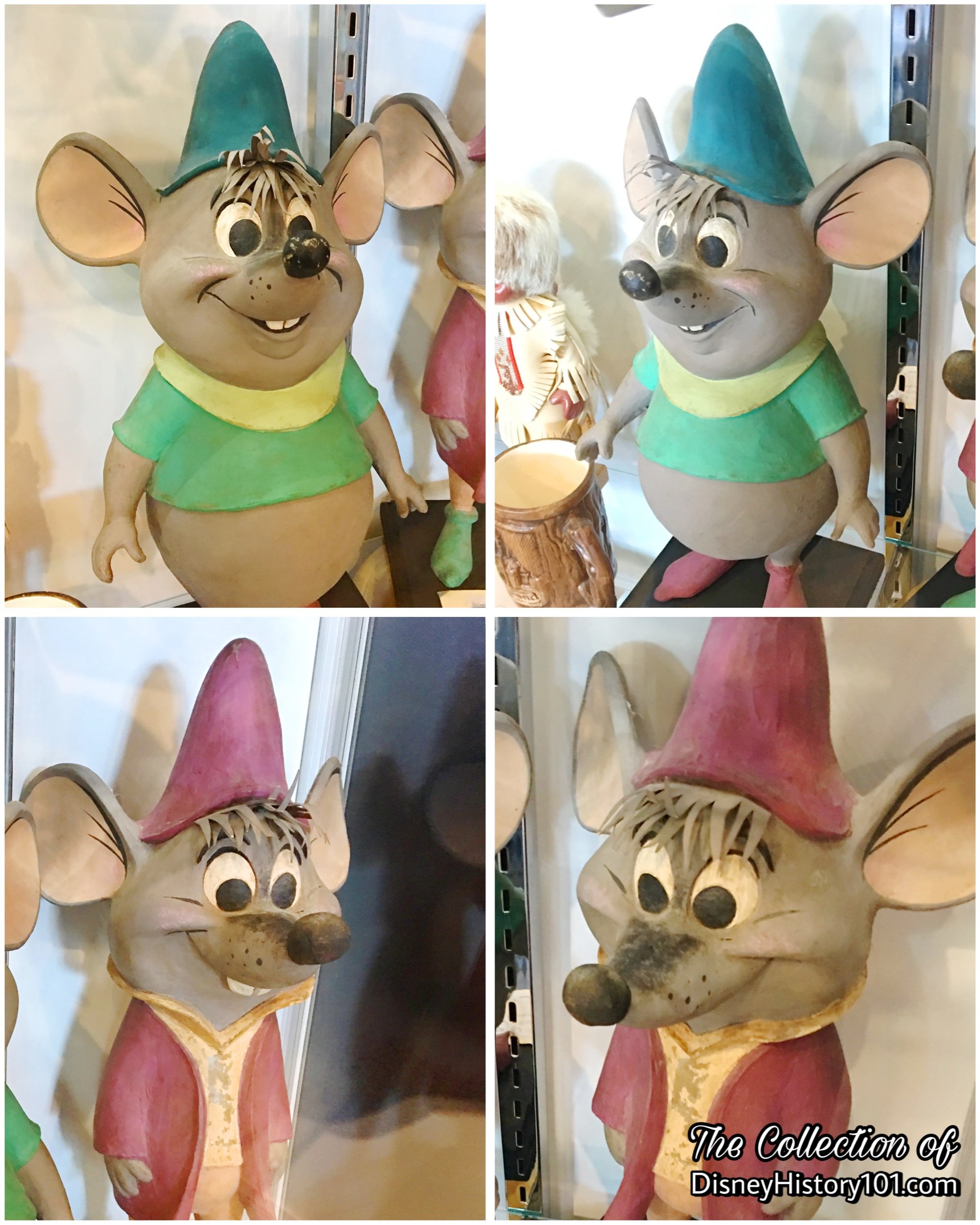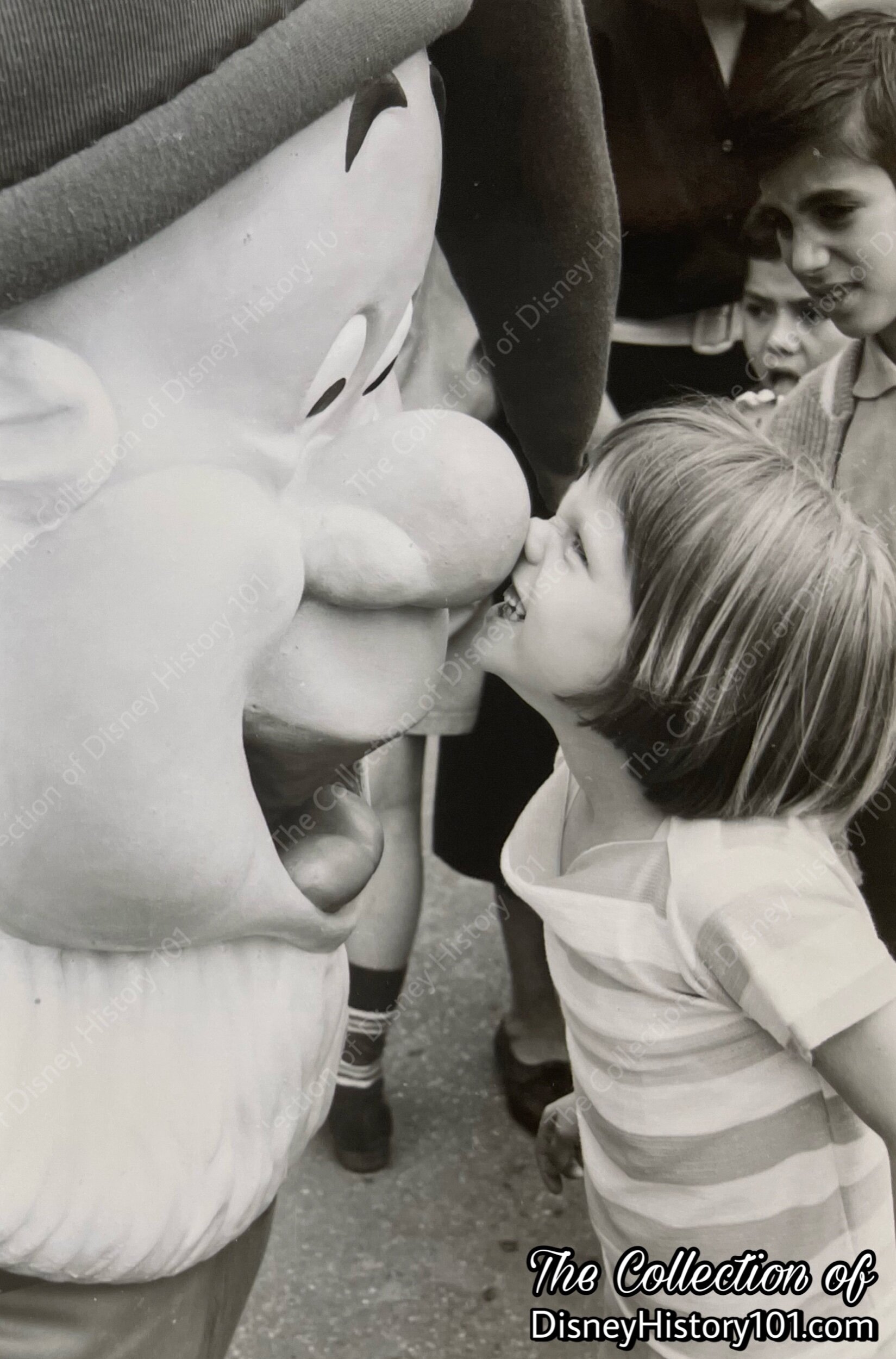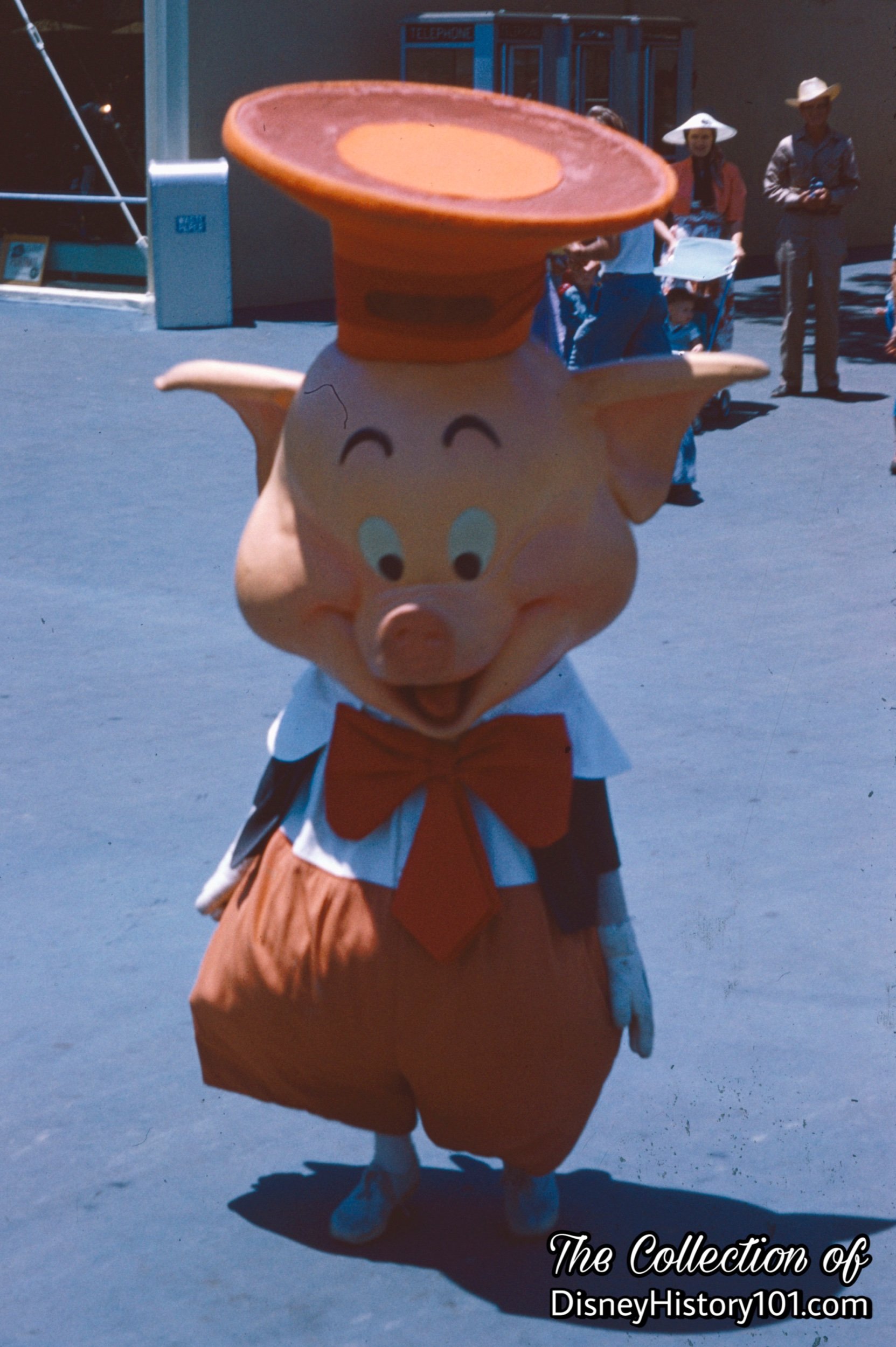DISNEY CHARACTERS (I-Z)

•Iago - (See Jafar) Iago made his debut in Disney’s Aladdin released November 25, 1992. The “fur and feathered,” animated Iago debuted with Jafar, often seen perched on Jafar’s shoulder for appearances.
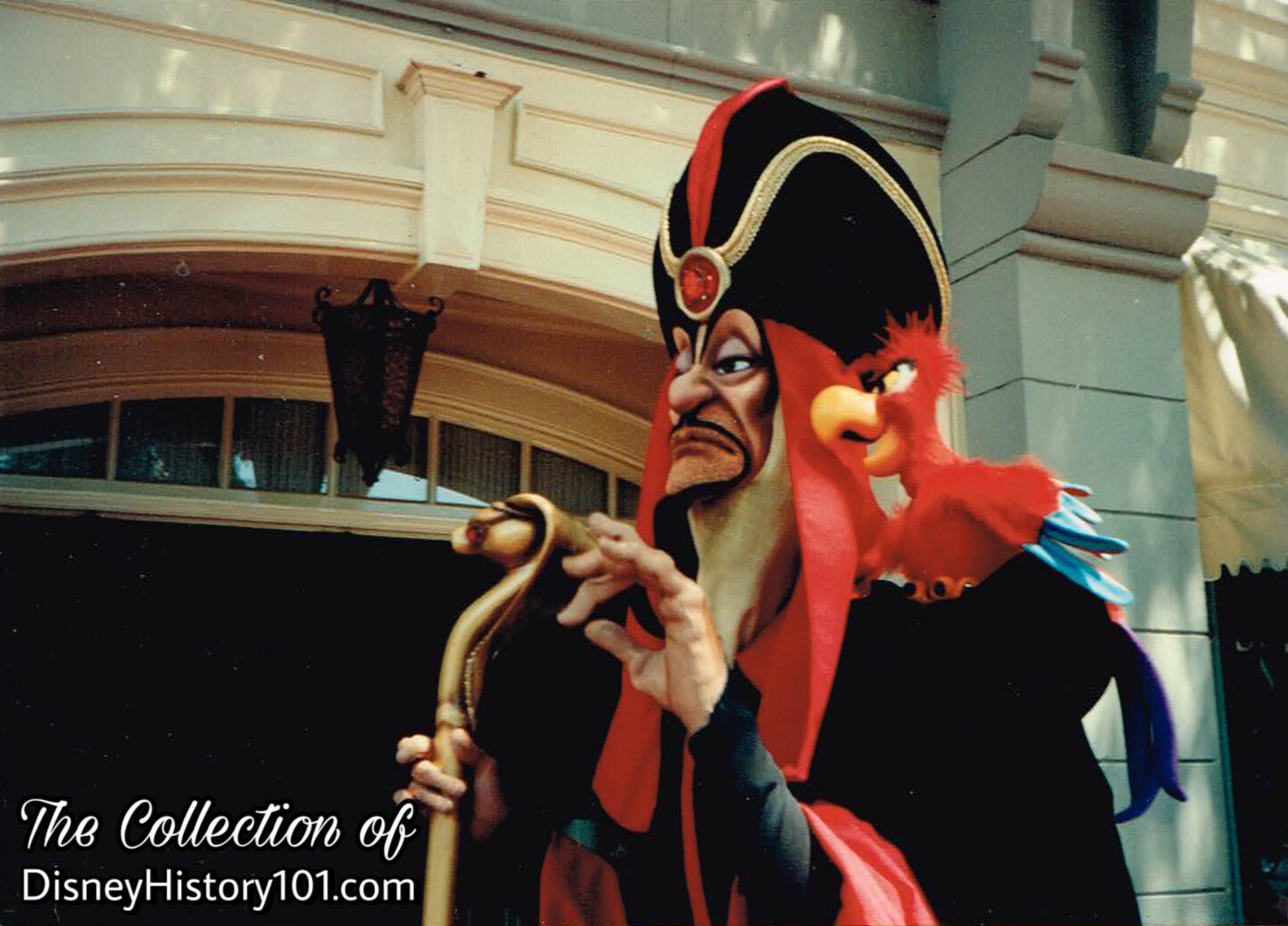
IAGO & JAFAR
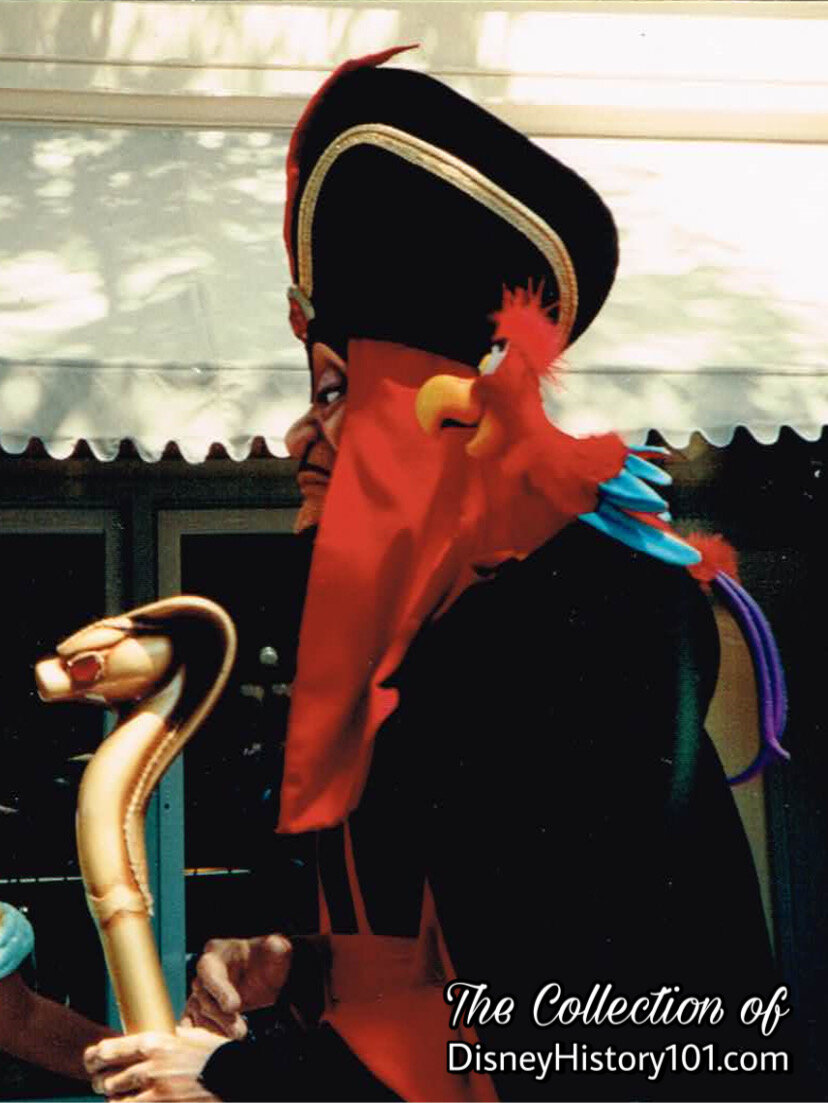
IAGO & JAFAR

•J. Worthington Foulfellow - Foulfellow made his debut in Walt Disney’s Pinocchio, on February 17, 1940. He made regular appearances at the “Small World” Area, greeting guests as part of the Character Program, “throughout the Christmas Holidays” (daily between parades, from 9:00am to 11:45am). [“Disneyland Holiday Talent Master Schedule,” prepared for the period of December 16, 1967 through January 1, 1968]
•Jafar (Aladdin) - Jafar made his debut in Disney’s Aladdin released November 25, 1992.
•James Thaddeus Toad
•Jane Porter
•Jasmine (Aladdin) - Jasmine made her debut in Disney’s Aladdin released November 25, 1992. Jasmine is a Disney Face Character who can talk, communicate with Guests, and create magical Disney experiences for them. Jasmine has a Tiger named Rajah. He is her pet and trusted friend but has never appeared as a Character at Disneyland.
•Jaq - Jaq made his debut in Walt Disney’s Cinderella released February 15, 1950.
•Jiminy Cricket - Jiminy Cricket made his debut in Walt Disney’s Pinocchio on February 7, 1940. Jiminy Cricket proved “He's no fool” when he introduced educational cartoons on the Mickey Mouse Club.
•Johnny Appleseed - He was available for interviews and photo opportunities during the “35 Years of Magic” celebration at Disneyland.
•Jolly Roger -
•Judge Claude Frollo -
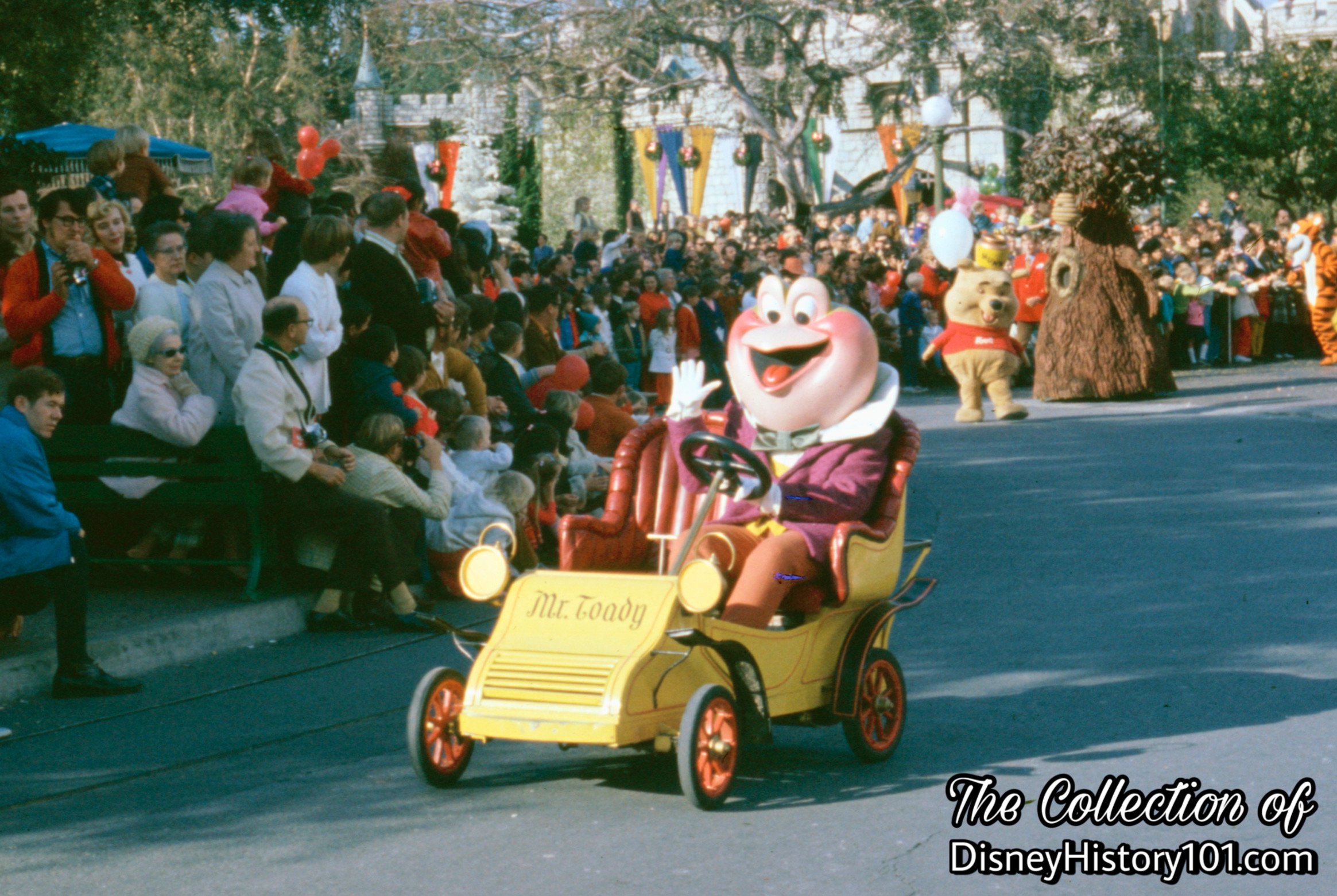
James Thaddeus Toad
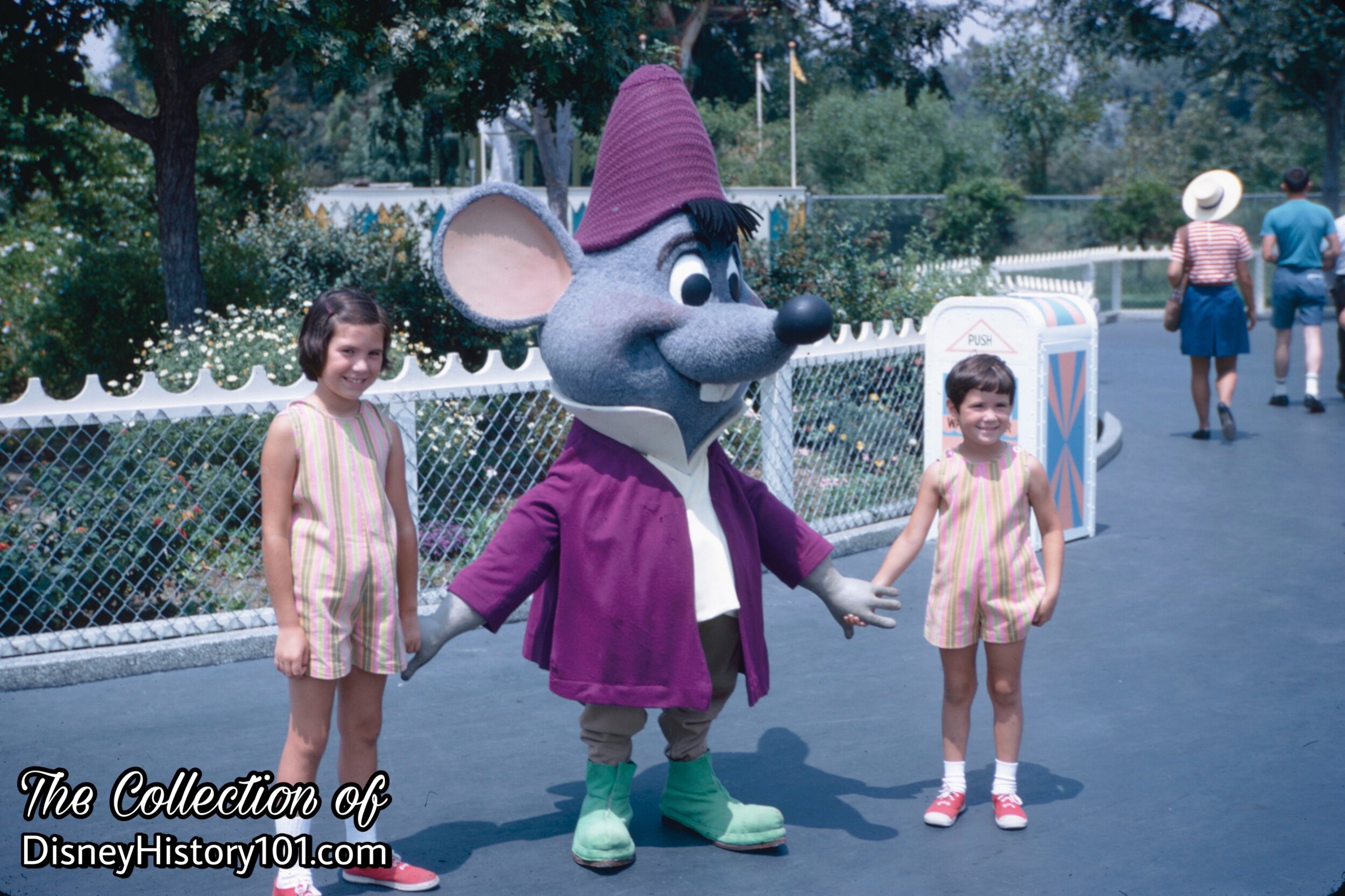
Jacques near Small World Meadows.
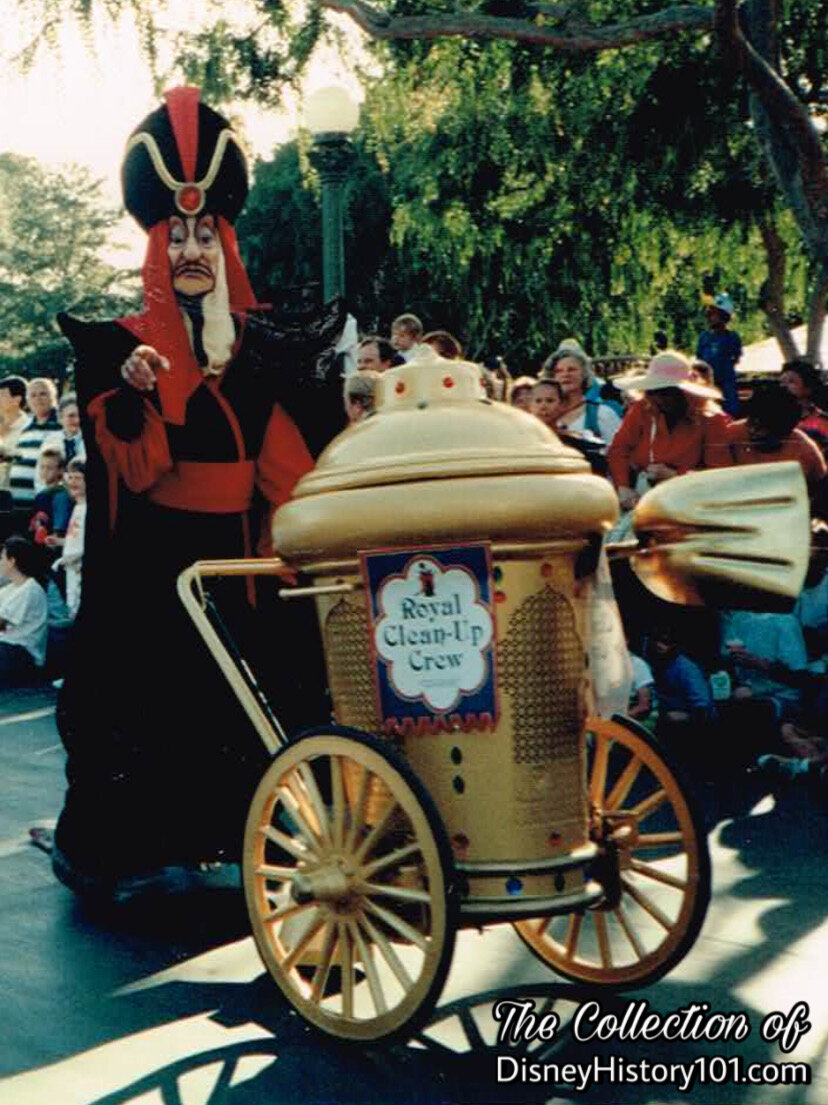
JAFAR
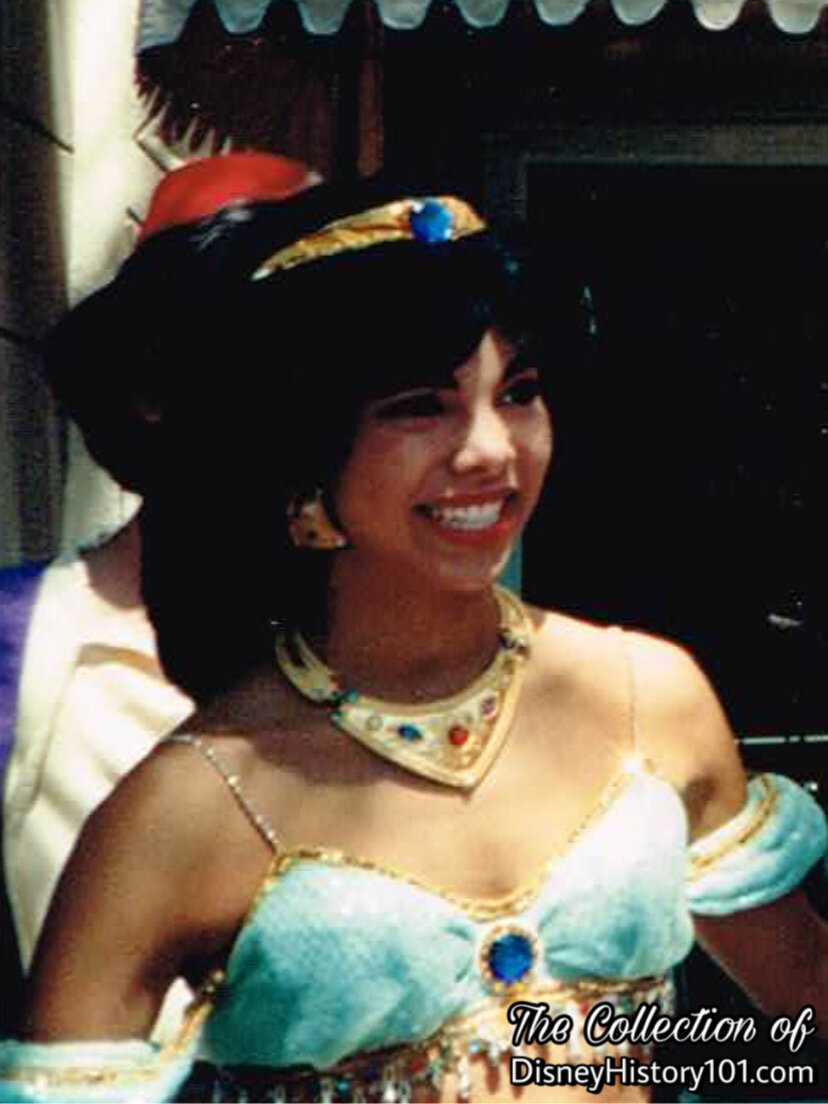
JASMINE
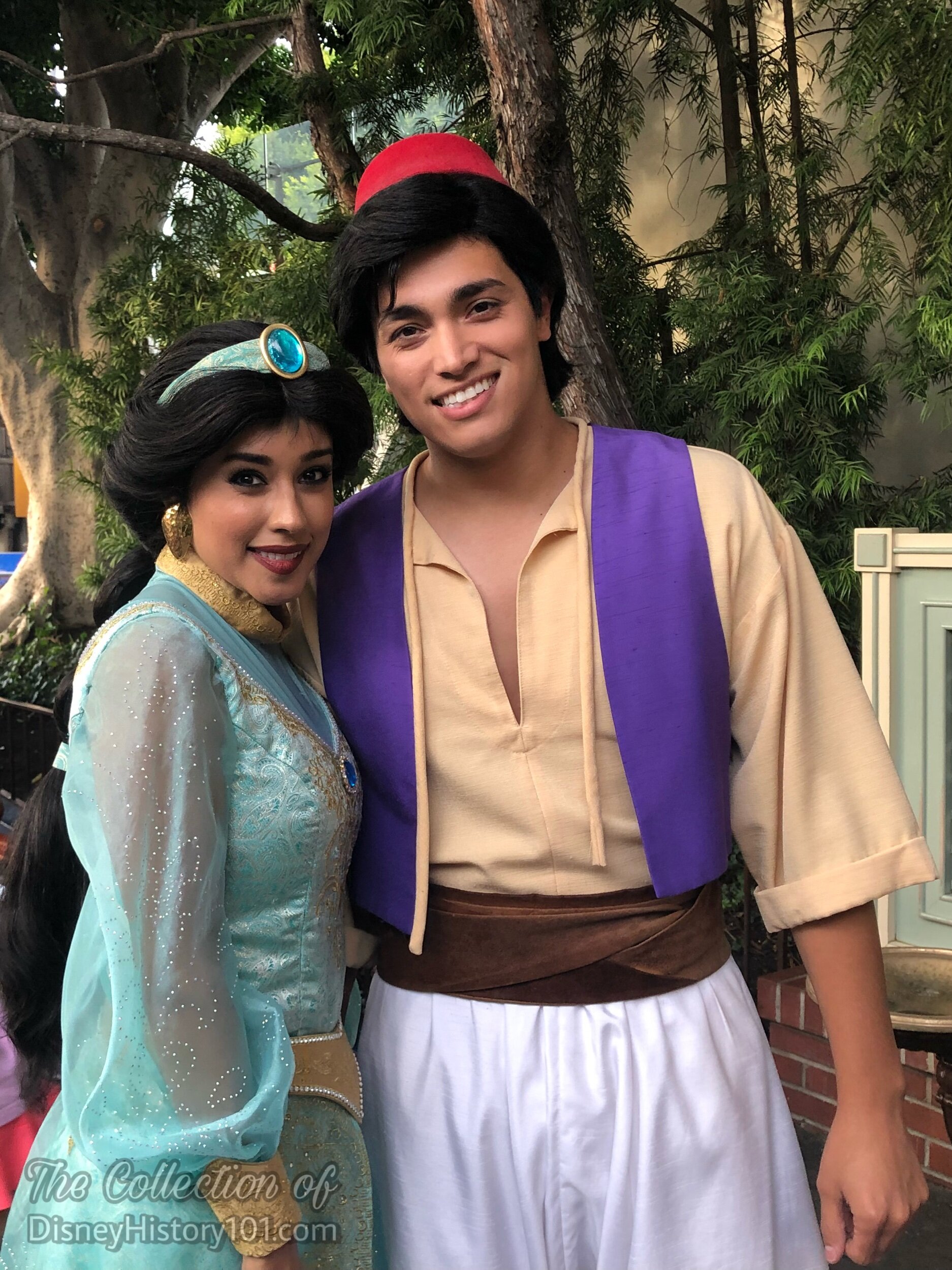
Aladdin and Jasmine extend courteous smiles.
Both Aladdin and Jasmine demonstrate the importance of looking at guests when speaking to them, and “the magic mirror of your smile.”

•Keystone “Kops” Quartet - The Keystone Cop Saxophone Quartet was a breakaway section of the Disneyland Marching Band (similar to the Dixieland “Hatters” of Frontierland and the “Town Band” (or, “Polka Band”) of Fantasyland and Tomorrowland), that performed on Main Street U.S.A. during the 1950s and 1960s. Before the barbershop quartet, a quartet of Main Street’s Policemen (or, Constables) entertained guests of the turn-of-the-century locale. During the 1950s, guests could expect to hear golden saxophones in close harmony (on the street) twice daily, in the afternoon. Similar to another popular Disneyland quartet, the Keystone Kops Quartet performed sets on their golden saxophones, in several select areas on Main Street U.S.A. (including the Plaza and in front of the Magic Shop)!
The quartet had a legacy (of sorts) in the Main Street Saxophone Quintet (Gary Scudder, Barry Streeter, Dave Friedrichs, Alan Palmer, and Jeff Phillips) premiered during the Disneyland Family 25th Anniversary Reunion held in April of 1980. During July 20-26, 1987, both the Keystone Quartet and the Sax Quintet were performing in the Park simultaneously.
•King Leonidas - “King Lion” or (King Leonidus) made appearances around 1972. He would appear in Adventureland and both at “mix in” and “Regular Private Parties” (first five hours of party beginning 15 mins. prior to the gate opening of each party).
•King Louie (Jungle Book) - King Louie (whose character model and voice was provided by Louie Prima) first debuted during The Jungle Book National Tour, which lasted 26 days (from November 5th thru November 30th, 1967). Disneyland Entertainment Costume Employees Ben Sherman and Lee Reineke toured several cities (as “Pageant Helpers” along with King Louie and Baloo (the stars of Walt Disney’s animated feature-length film The Jungle Book). Twenty-two locations visited included Atlanta, Baltimore, Boston, Buffalo, Chicago, Cincinnati, Cleveland, Dallas, DC, Denver, Detroit, Houston, Indianapolis, Miami, Milwaukee, Minneapolis, New Orleans, Philadelphia, St. Louis, Salt Lake City, San Francisco, Toronto, and Washington.
When this circuit was completed, the “Jungle Book Parades” (consisting of Col. Hathi, Baloo and King Louie) with the Disneyland Band made regular appearances in Adventureland, greeting guests as part of the Character Program, “throughout the Christmas Holidays” (daily between parades, from 9:00am to 11:45am). [“Disneyland Holiday Talent Master Schedule,” prepared for the period of December 16, 1967 through January 1, 1968] Popular Dutch singer Heinje Simons visited Disneyland during 1967 (likely during this season), and took many photographs with both Baloo and King Louie.
During the 1970s, King Louie appeared in Adventureland. He also made appearances around 1972, at “mix in” and “Regular Private Parties” (first five hours of party beginning 15 mins. prior to the gate opening of each party).
When he isn’t meeting with the monkeys, King Louie can be found at Disneyland. He also appears in “Mickey and the Magical Map” presented in the Fantasyland Theatre.
Lilo -
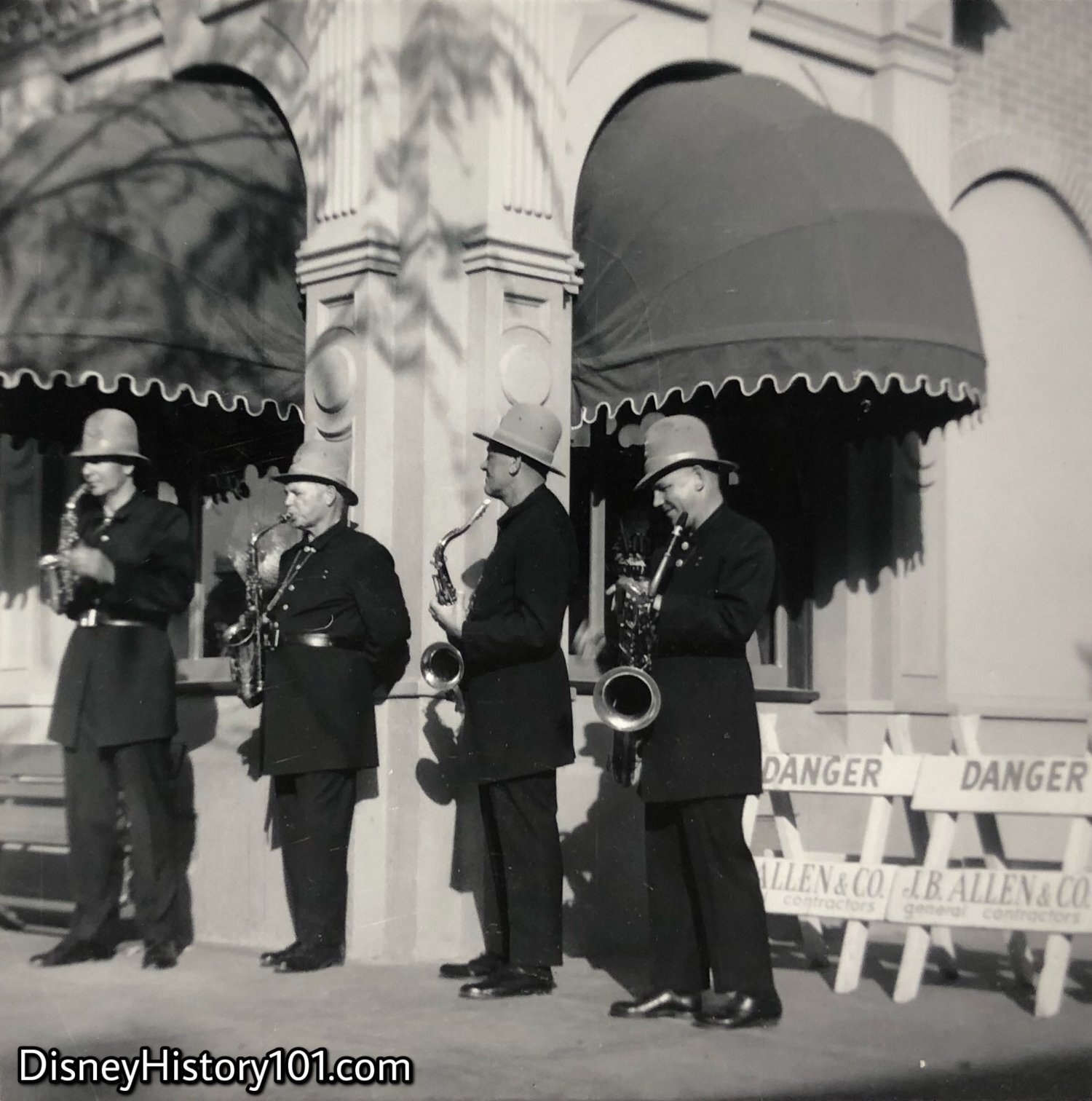
DISNEYLAND KEYSTONE QUARTET, (January, 1964)
The Keystone Cops Quartet performs next to the Bank of America building (just through one of the tunnels to Main Street. “Main Street’s Keystone Kops Quartet provide sidewalk entertainment for Disneyland guests”, even when some of the sidewalks are inaccessible.
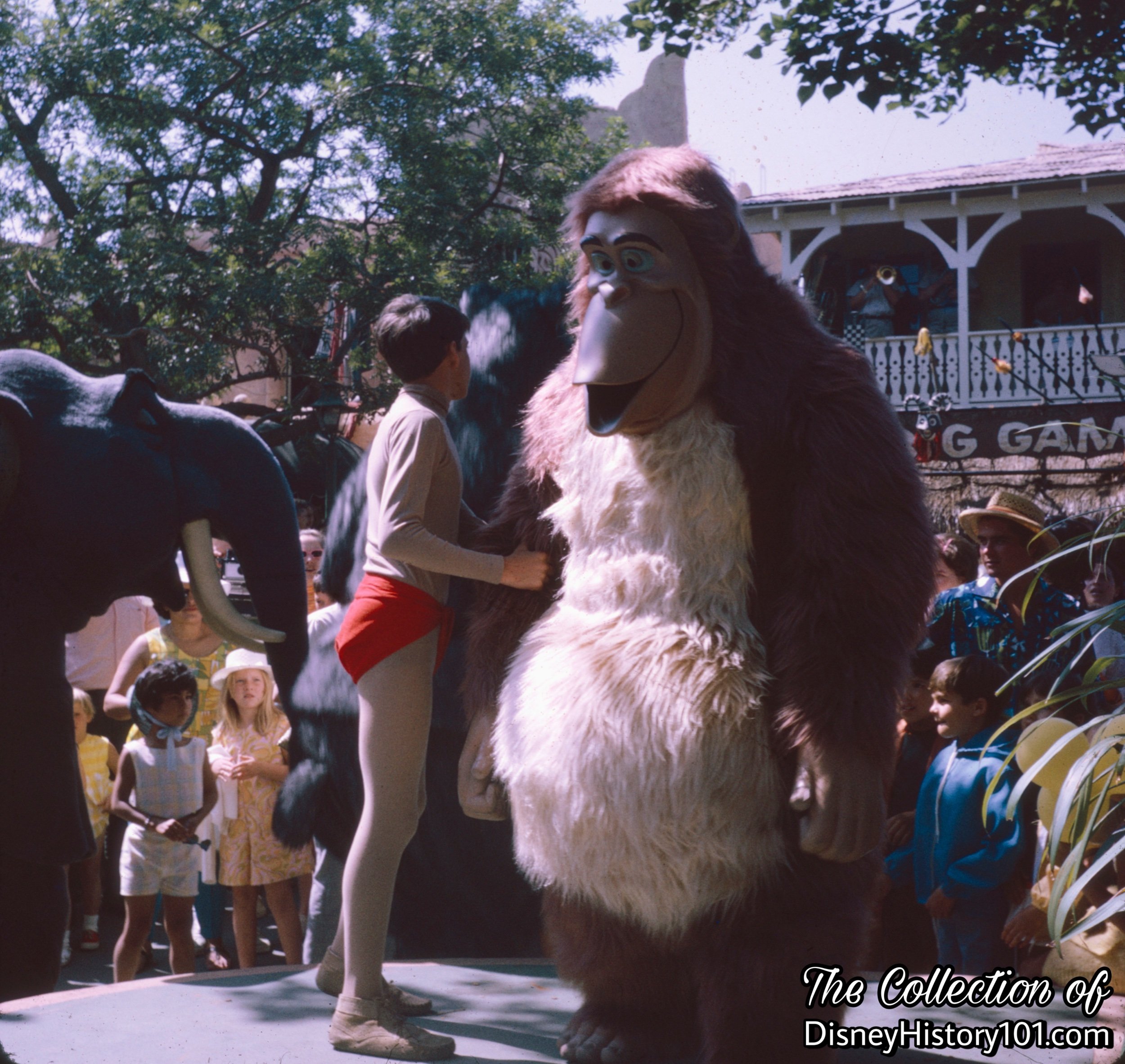
King Louie from The Jungle Book wants to be a human like Mowgli.
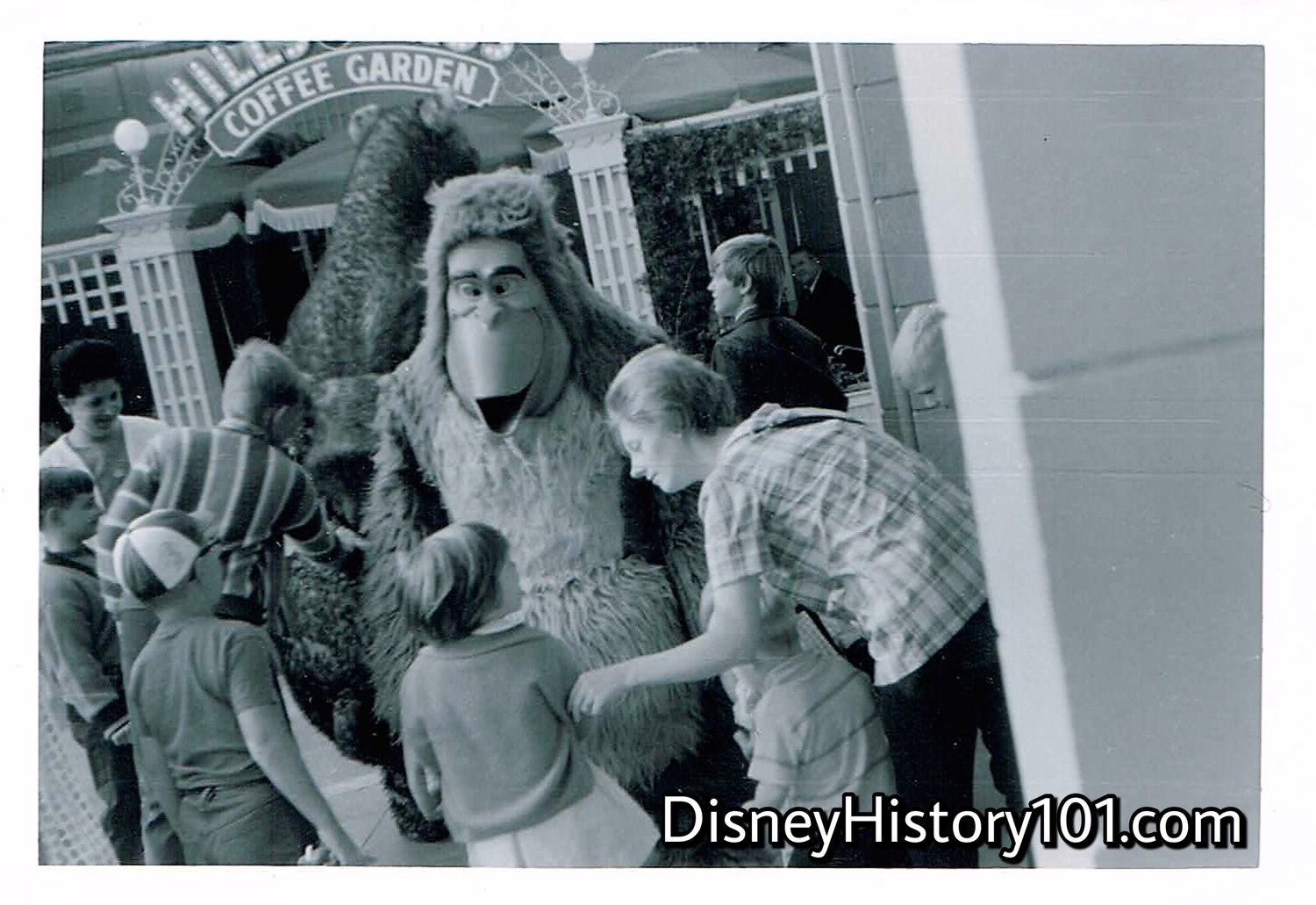
KING LOUIE
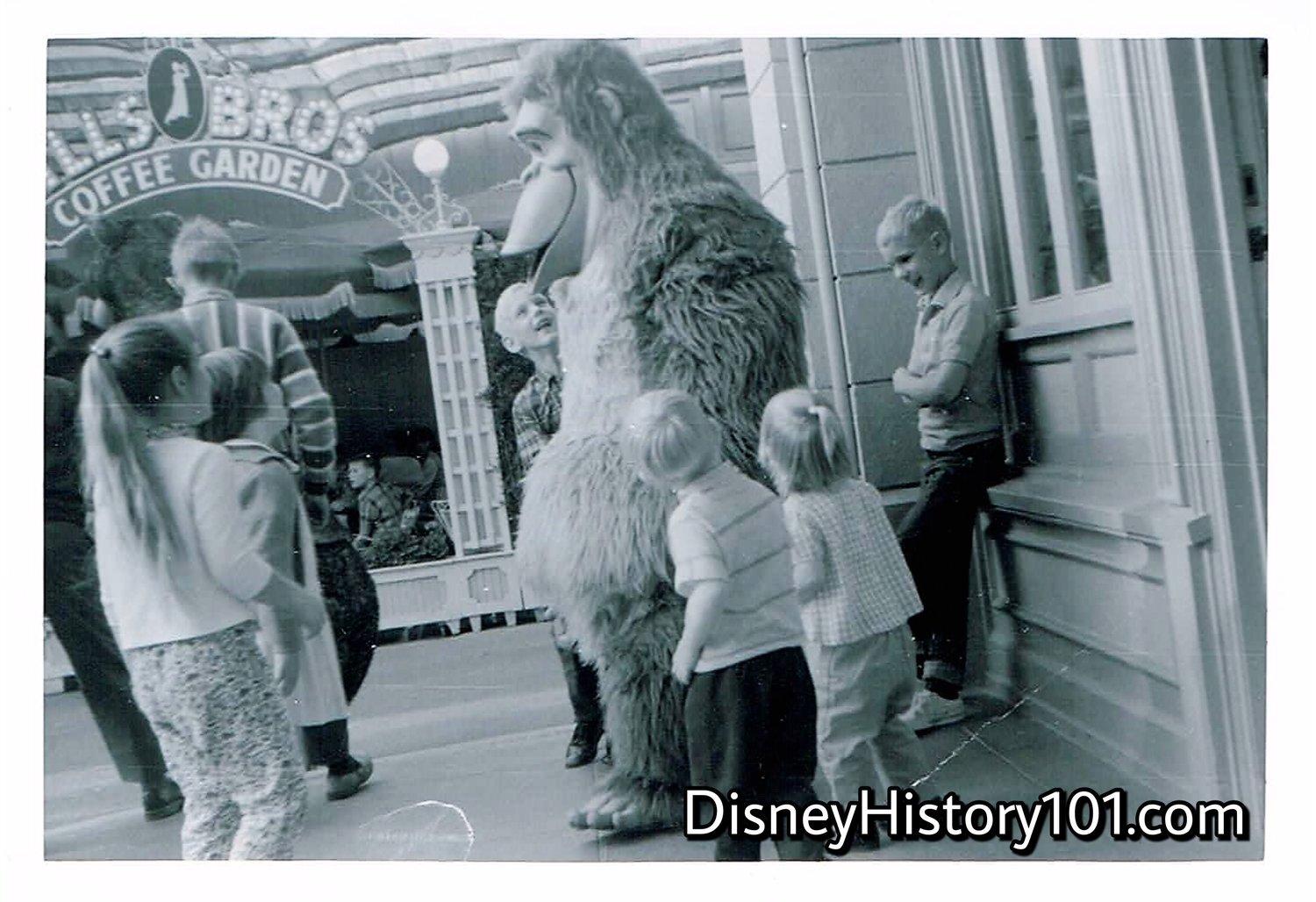
KING LOUIE
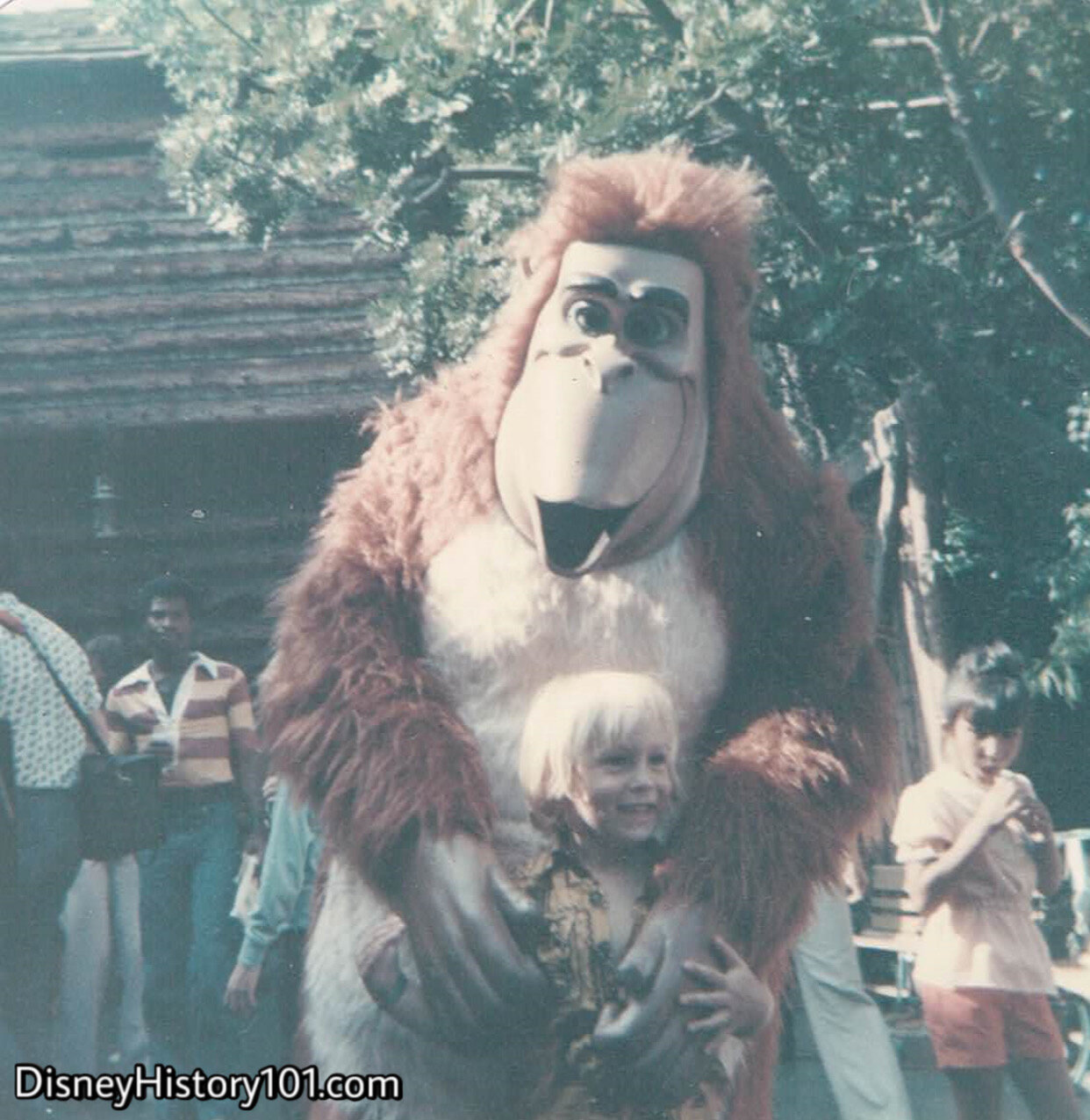
KING LOUIE, (c. 1975 - 1976)
King Louie hangs out in a natural spot - near the Entryway to Adventureland - creating magical moments for one guest at a time!
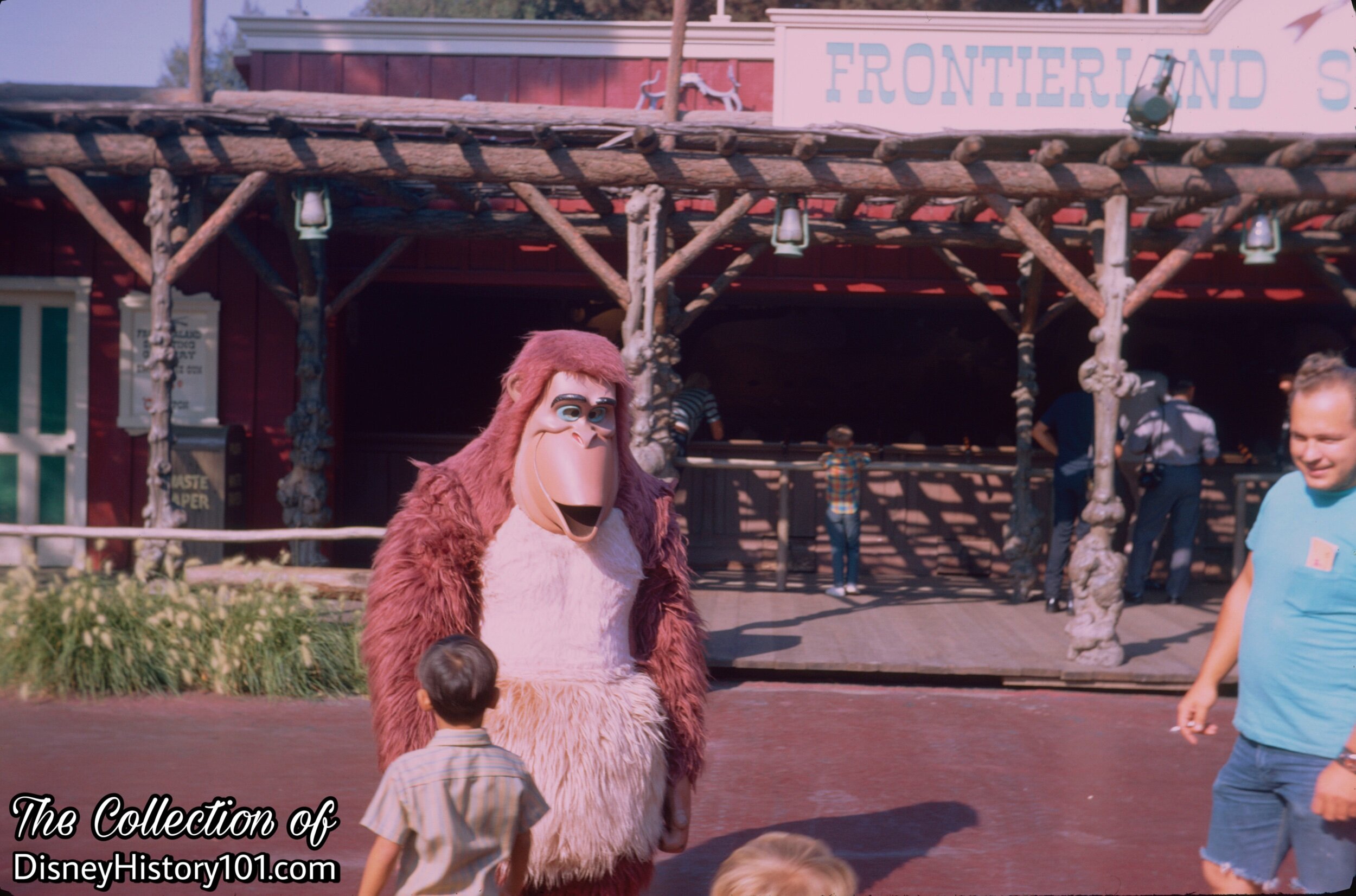
KING LOUIE, (c. September, 1970)
King Louie meets guests in the neighboring (and yet, faraway) “man village” of the Frontierland Stockade!

•Lady Tremaine (Cinderella)
•Lampwick -
•Lilo -
•Little John (Robin Hood)
•Ludwig Von Drake - Yes (“make no mistake”), that Ludwig Von Drake did indeed appear among the Disney Characters at Disneyland during the mid-1960’s (c. 1964).
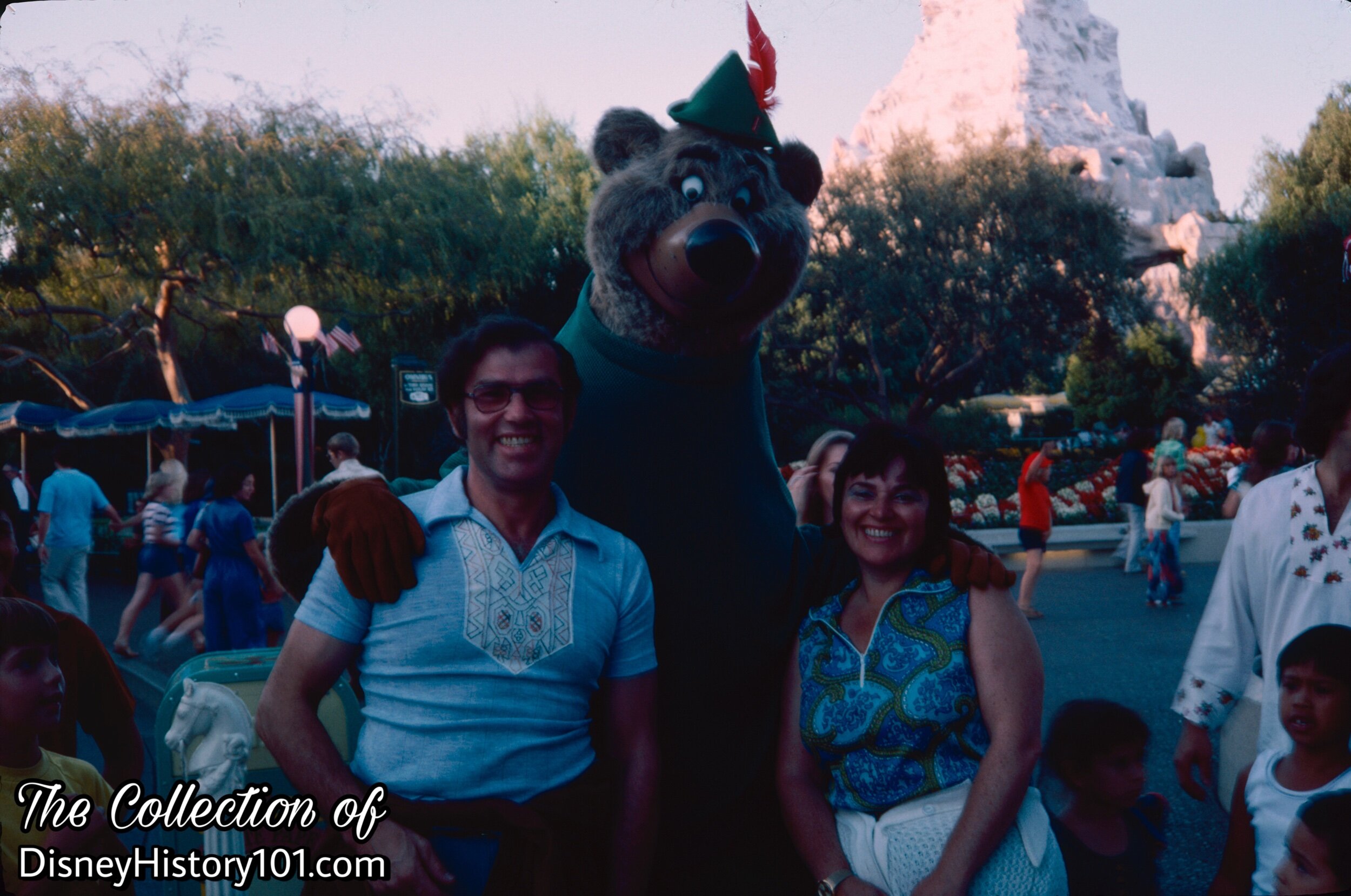
LITTLE JOHN, (c. September, 1976)

•Mad Hatter (Alice in Wonderland) -Walt Disney’s “clownish fellow fond of tea parties” made his theatrical debut in Walt Disney’s Alice in Wonderland, on July 28, 1951. He wears a large hat with a price tag reading 10/6 - 10 shillings and 6 pence.
The Mad Hatter was part of the Pre-game “Walt Disney and Disneyland Salute to the California Angels” at the new Angels Stadium on Saturday, April 23rd, 1966!
The White Rabbit and Mad Hatter made regular appearances at the Forecourt Fantasyland Theater, greeting guests as part of the Character Program, “throughout the Christmas Holidays” (daily between parades, from 9:00am to 11:45am). [“Disneyland Holiday Talent Master Schedule,” prepared for the period of December 16, 1967 through January 1, 1968]
The Mad Hatter was featured in many Press Release photos. For example, he was photographed alongside the Osmond Brothers and “singer-comedienne” E.J. Peaker (and the White Rabbit and Walrus) to promote “Disneyland Showtime” shot at Disneyland and colorcast on “The Wonderful World of Disney”, during 1970.
Cast Member Mike Lopez was once close to the Mad Hatter.
At some point, the Mad Hatter was converted from a Character with sculpted head to a Face Character. He would not sing but he could talk and communicate with Guests and create magical Disney experiences for them.
When he isn’t scheduled for tea with the March Hare, the Mad Hatter can be found greeting Guests.
•Main St. Maniacs - c.1986
•Make Believe Brass - c.1986
•Maleficent (Sleeping Beauty) - Marc Davis’ evil fairy popularized by Walt Disney’s Sleeping Beauty (released 1959). Maleficent is a Disney Face Character who can talk, communicate with Guests, and create magical Disney experiences for them. When she isn’t holding meetings with the Heartless, Maleficent can be found at Disneyland.
•March Hare (Alice in Wonderland)
•Mary Poppins - Mary Poppins is a Disney Face Character who can talk, communicate with Guests, and create magical Disney experiences for them. Mary Poppins occasionally appeared “in the Park” with Jane and Michael Banks, the Jolly Holiday Penguins, and more commonly alongside Bert and the Chimney Sweeps. During 1964, through a special business arrangement with Al Dobritch (of the Dobritch International Circus), Mary Poppins as well as Jane and Michael Banks appeared in traveling circus acts. Over at Disneyland (the week of July 8th, 1964), Mary Poppins was readying for her big debut descent into Disneyland. Music background was already being worked on by that aforementioned date, with a “trial run” preparing to taking place Saturday (July 11th, 1964) immediately after Tinker Bell’s descent was finished. All of this occurred before the release of Walt Disney’s Mary Poppins on August 29, 1964.
“Mary Poppins Days” (February 20-21, 1971) included a special stage show, starring Mary Poppins, on the Tomorrowland Stage and two special parades.
•Matterhorn Mountain Climbers -
•Max - Goofy’s son.
•Merida - The star of Pixar’s Brave greeted guests near “it’s a small world” daily in 2012.
•Merlin the Wizard - The backwards wizard of Camelot (and Arthur’s tutor and mentor) made his theatrical debut in Walt Disney’s The Sword in the Stone, on December 25, 1963. When New Fantasyland opened, Merlin began to officiate over The Sword in the Stone Ceremonies. Merlin is a Disney Face Character who can talk, communicate with Guests, and create magical Disney experiences for them. Cast Member Kent Zbornak was once close to Merlin.
•Merryweather - When Maleficent cast a spell of death with the prick of Aurora's finger, Merryweather gave the gift of sleep.
•Mickey Mouse - Mickey Mouse was developed by several individuals, but his name is owed to Lillian (Walt was intent on naming him Mortimer). As Jack Sayers originally said, “It all started with a mouse.” Mickey Mouse made official his film debut on November 18, 1928 (a dare considered to be his birthday). He contributed toward several groundbreaking films and cinematic milestones, including the first sound cartoon (“Steamboat Willie,” 1928), the first film to use stereophonic sound (“Fantasia,” 1940), a special Academy Award to Walt Disney (in 1932), and the star of more than 200 films and television programs. In 1929, Mickey Mouse appeared on his first piece of licensed merchandise - a pencil tablet. In 1931, Mickey Mouse appeared in Walt Disney’s second book entitled “The Adventures of Mickey Mouse,” and he appeared in the popular monthly “Mickey Mouse Magazine” throughout the 1930s. During the 1930s, Mickey Mouse and his pals were featured guests on several radio shows including “The Edgar Bergen and Charlie McCarthy Show,” the “Lux Radio Theater,” and “The Kraft Music Hall.” In February 23, 1935, “The Band Concert,” the first Mickey Mouse cartoon in color, is released.
Finally in 1937 and 1938, Mickey’s voice was heard in his own program - the NBC RADIO Series “The Mickey Mouse Theater of the Air.” A redesigned Mickey Mouse first appeared on film during 1939 and was soon cast as the apprentice of the sorcerer Yensid.
By December of 1954, Mickey Mouse had become an international phenomenon, having accumulated 21 Oscars in his 22 years, according to an article published in Popular Mechanics. According to one source Mickey Mouse has been considered a “Disney Standard Character,” meaning that he is a character “of the highest integrity” and “only associates with products, brands, and companies of the highest quality and integrity.”
What made Mickey so endearing and lovable to millions of people the world over? John Hench once made the observation that it was “‘the language of vision’ that gave Disney’s characters such great popularity. He points out that Mickey Mouse’s appeal has at least as much to do with his body shape as his personality. All circle, all round, all harmless, all nonthreatening, unlike Mickey’s early, and less successful rival, Felix the Felix the Cat, whose sharp, angular lines communicated a subliminal message of threat or danger.” [“Disneyland - Inside Story”] Russian filmmaker Sergei Einstein noted this when he simply labeled Mickey: “America’s greatest aesthetic achievement.” The Metropolitan Museum of Art once called Mickey “the greatest historical figure in the development of American art.”
Mickey Mouse had “become synonymous with love and laughter,” according to Frank Thomas and Ollie Johnston.
Walt was never very sentimental about his films, in fact he once said, “A picture is a thing. Once you wrap it up and turn it over to Technicolor, you're through.” But Walt was very sentimental about one of his characters and a sort of treasure - Mickey Mouse. Walt Disney once said that “Mickey Mouse is, to me, a symbol of independence. He provided the means for expanding our organization to its present dimensions and for extending the medium of cartoon animation towards new entertainment levels.”
The Story of Mickey Mouse appeared on an early episode of “Walt Disney’s Disneyland.” Soon after, Mickey Mouse (the “versatile world-wide superstar, international symbol and goodwill ambassador of The Walt Disney Company”) moved to Disneyland as official host. This first incarnation of Mickey continued in this role, welcoming visitors, shaking hands, and even leading parades from 1955 to 1959. This early version of Mickey Mouse of Ice Capades fame, was accompanied by Minnie Mouse. He was introduced the Mickey Mouse Theater during the Disneyland Press Preview Day broadcast (televised in ABC). Many of the performers hired for that day, were professional dancers and ice skaters. On that particular occasion (Press Preview day), the role of Mickey Mouse was portrayed by a female, as he and Minnie Mouse ran toward the doors of the Mickey Mouse Theater in Fantasyland during the live broadcast.
But a few years later, the time had come to “build a better mouse.” The second incarnation of Mickey Mouse (to appear in Disneyland), debuted (in 1959) during the televised “Disneyland ‘59,” in which he leaped through a paper drum at the beginning of the event! This moment has been preserved in publications like “The Disneyland Story,” ©Walt Disney Productions 1980. Mickey Mouse could now comfortably see guests a little better! This version of Mickey Mouse (dressed in red shorts with white buttons) soon appeared in Jack and Jill (May of 1960) meeting Kevin “Moochie” Corcoran at Disneyland City Hall, and graced the cover of Vacationland (Summer, 1960) while riding a Mad Tea Party saucer with guests, and greeted Princess Margartethe of Denmark & Princess Astrid of Sweden at Disneyland in 1960. This version of Mickey Mouse was still on hand to welcome Disneyland’s 25 millionth visitor on April 19, 1961.
The third incarnation of Mickey Mouse, first greeted guests at Disneyland (during the summer of 1963)! This time around, Mickey would feature a “stout” redesign (perhaps reminiscent of art director Vic Haboush’s designs for Tom Oreb’s popular American Motors Nash Ambassador commercials that aired from 1955-1957). The “come to life” Mickey received this second redesign during the spring of 1963, courtesy of the new Disneyland Character Department at Walt Disney Studios. This was under the direction of distinguished character animator Bill Justice. Mickey Mouse would begin to make promotional appearances outside the Park, as when he appeared on WATE-TV in Knoxville, Tennessee during a week in the Fall-Winter of 1963.
During 1964, Disneyland’s 4th incarnation of Mickey Mouse made many appearances at the front of the Park or his own Clubhouse in Town Square. Mister Mouse also took a trip (or two), making a number of appearances outside Walt Disney’s Magic Kingdom. In Hollywood, actors had stuntmen, and these multiple appearances of Mickey Mouse were similarly accomplished by way of “body doubles.” For instance, in 1964 Wardrobe assured that Mickey Mouse had at least “2 costume bodies in good condition,” and “3 heads in good condition,” in addition to costumes and one “large Mickey.”
And so, Mickey Mouse visited the 1964 New York World’s Fair for both the opening day parade and festivities, as well as the opening of Walt Disney’s its a small world sponsored by Pepsi-Cola. While there, Mickey, Goofy, and Pluto appeared at other pavilions. For instance, they assisted in the ribbon cutting at the new “People-to-People Room” of the Federal Pavilion of the New York World’s Fair during the 1964 season. Mickey Mouse also visited Boston on a promotional tour that bought him, Clarence “Ducky” Nash and his pal Donald Duck together with WGR-TV’s Captain Bob. After visiting the set and meeting Captain Bob’s friends Wallingford the Walrus The four also met new friends, and both entertained and greeted children at Buffalo’s Thruway Plaza, the Protestant Home for Children, and the local children’s hospital! Mickey Mouse, Clarence Nash, and Donald Duck’s appearance was also part of a promotional tie-in with sponsor Atlantic Dealers (when a purchase of more than 8 gallons of gasoline was made, the customer was allowed to purchase an assortment of Disneykins figures for the low price of 9 cents).
Around this time Mickey Mouse (and Pageant Helper Paul Castle) made other appearances, even at a Christmas Party hosted by Pennsylvania’s KTTV, on December 21, 1964.
Also during 1964, through a special business arrangement with Al Dobritch (of the Dobritch International Circus), Mickey Mouse (with his “close friend” Australian aerialist Arthur Duchek) and the Flying Cavarettas would make appearances in high-wire circus acts outside of Disneyland. This act was something to see - Mickey Mouse would “fly” his XY-1 rocket over the stage, while aerialists performed from equipment suspended beneath the airship! Mickey also appeared at the Canadian National Exposition’s “Matinee Fun Fest” (held August 24 - September 5, 1964) where he served as “Guest Conductor” of a band rendition of the “Mickey Mouse Club March Theme.” This appearance was followed by the Detroit Shrine Circus (January 29 - February 14, 1965), and the St. Louis Police Circus (held April 22 - May 9, 1965).
At some point during the 1960s, Mickey Mouse, Pluto and Alice even met Colonel Harland David Sanders for a promotional event (as evident by one photo displayed at Kentucky Fried Chicken of Clermont, Florida)! Mickey had the pleasure of joining Walt Disney and walking from Angel dugout to the pitchers mound and throwing the first ball as part of the Pre-game “Walt Disney and Disneyland Salute to the California Angels” at the new Angels Stadium on Saturday, April 23rd, 1966! Mickey Mouse was also the subject of a Look Magazine photo shoot (in conjunction with new Disneyland 3-D post cards) on May 24, 1966.
As for Mickey Mouse’s routine appearances at Disneyland, he regularly greeted guests “throughout the Christmas Holidays” as part of the Character Program in Town Square (daily (9:00am to 11:45am) with both Pluto and Goofy. [“Disneyland Holiday Talent Master Schedule,” prepared for the period of December 16, 1967 through January 1, 1968]
During the 1970s, Mickey appeared in Main Gate/Town Square. You recollect “‘The Mickey Mouse March’ down the Park’s Main Street at noon and 5 p.m. daily,” around 1974. Mickey (and friends) also made an appearance in several scenes of Karen and Richard Carpenter’s “Mr. Postman” music video, released in 1975.
In anticipation of Mickey Mouse’s 50th birthday celebration in 1978, Hollywood costume designer Jack Muhs (of Disneyland Entertainment Costuming) designed a new costume (“overdressing”) for Mickey Mouse. This was seen on the cover of the Disneyland LINE Family Edition published for November 2, 1978. Work began five years prior, with the Redesign Committee comprised of Bob Jani (Disneyland and Walt Disney World Creative Consultant) and John Hench (Executive Vice President of WED; Mickey’s official portrait artist) attempting to build a better mouse. Arnold Lindberg (of the Walt Disney World Staff Shop) recommended a new lightweight and easily vacuu-formed material called Kydex which replaced the fiberglass shells Cast from molds and covered with fur.
Paul Castle had first portrayed Disney Characters alongside his wife Alma during the Ice Capades from 1950-1954. According to Wally Boag of Backstage Disneyland magazine (Vol.4, N0.4 ; December of 1965), “Included in their repertoire were Donald Duck, Chip 'n' Dale, Snow White, (Paul as Dopey), and Cinderella, (Paul as Jaq and Alma as Gus-Gus)… In the annual Disneyland Christmas Parade of 1961, there appeared for the first time a bass drum measuring 10' - 7" in diameter, and perched on top was Paul Castle in the character of Mickey Mouse. That parade launched a new beginning for Paul. He became a roving ambassador, not only for Disneyland, but for all of Walt Disney Productions. One of Paul's most memorable experiences was his role as a sort of Grand Marshall for the ‘Disneyland U.S.A. Goes to Radio City’ journey, which must have been the world’s longest and only coast-to-coast parade. The show itself, which played for six weeks during Easter vacation in 1962, broke all previous records for attendance at the Radio City Theater. But for PauI this unique and much publicized jaunt had its own particular brand of romance because he was to come back and perform before record breaking audiences just one block away from where he made his show business debut over twenty years before. Since then, the illustrious career of Paul Castle has expanded to include promotional tours for Walt Disney film releases, the Small World Exhibit opening at the World's Fair, the Canadian National Exhibition in Toronto, and a myriad of others. But for the most part, Paul's work-a-day world is now pretty much confined to the Magic Kingdom, leading the Disneyland Band down Main Street everyday, and greeting the starry-eyed visitors of all ages, tongues, and sizes. Paul is quick to admit that he is extremely fortunate to be in show business and yet not have to be on the road. It has enabled him to buy a home in Garden Grove and live a quiet life with his beautiful family. It also allows him considerable time to devote to his many hobbies and activities such as photography, skiing, and golf. According to Paul, he is now play- ing the most important role of his life, and when you survey Paul for what he is, what he has done, and for what he believes and stands for, you can fully understand why. Someday, and in the not too dis- tant future I'm afraid, I'll be walk- ing through a Main Gate turnstile with a grandchild in each hand, and there statuesquely before us will be Mickey Mouse to greet us. And without a moment's hesitation, I will quickly bend down and whisper to the little ones, "Look over there, there's the real Mickey Mouse." "Yes indeed." EDITOR'S NOTE: My favorite story of Paul, which proves he never thinks of his size, goes something like this: We just finished our last show at the Radio City Music Hall, and Paul, while taking off his makeup, says, "Hey, you know what would be fun, Wally?" "Let's go down to Times Square and rub shoulders with the characters."
In November of 1978, Mickey Mouse was featured on the cover of LIFE magazine. That same year, Jack Muhs (of Entertainment Costuming) designed a brand new costume for Mickey’s 50th. Four years later (in 1982), Mickey Mouse released “Mousercize.” After the Disney Channel began its premium cable service in 1983, Mickey Mouse starred in “Mousercize.”
Paul Castle was close to Mickey Mouse for many of these events and appearances. After all these years together, Paul and Mickey finally parted ways on Friday, January 31, 1986.
While Paul and Mickey were so close, during this time, many other individuals became acquainted with the ambassador of Disneyland, including Pageant Helper Steven Michael Berk (some time between 1969-1978 and beyond).
In 1988, original artwork used in the production of Steamboat Willie was donated to the Smithsonian in Washington, D.C. Through the years Mickey Mouse continued his role as an international symbol of goodwill and ambassador of The Walt Disney Company, as he and friends visited many different locations around the world. By the 1980s, Mickey Mouse was still “Disneyland’s official host and received more calls than anyone else at Disneyland.” In 1995, Mickey Mouse was featured in “Runaway Brain,” his first theatrical short film in 42 years. In 2001, Mickey Mouse (along with Goofy, Pluto, and Snow White) made a visit to the Disney family farm (of 1906-1911) in Marceline Missouri, in honor of Walt’s 100th birthday celebration. By 2012 Mickey Mouse (the official host of Disney theme parks) was still making daily appearances at his house inside Mickey’s Toontown.
In Symphony Hour (released 1942), Mickey is called “Maestro Michel Mouse.” Today, Mickey Mouse is known by many names including Mikke Mus (around Norway) and as “Mi-Lao-Shu” (in China).
In the present, Mickey Mouse, Minnie Mouse, Donald Duck, Goofy, and Pluto are still considered the original "Fab Five" VIP Characters. When Mickey isn’t taking Pluto for a walk or finalizing plans for his next cruise with Minnie, he can occasionally be found (possibly in a “Back-to-back Set” of sorts) meeting and greeting Guests at Disneyland.
Mickey is the star of his own show - “Mickey and the Magical Map” which can be seen only in the Fantasyland Theatre in Disneyland.
•Mike -
•Minnie Mouse - Minnie Mouse, the “ever-faithful sweetheart of Mickey Mouse,” first debuted the same day as Mickey Mouse (in “Steamboat Willie,” on November 18, 1928). According to one source Minnie Mouse has been considered a “Disney Standard Character,” meaning that she is a character “of the highest integrity” and “only associates with products, brands, and companies of the highest quality and integrity.” John Hench later made the observation that it was “‘the language of vision’ that gave Disney’s characters such great popularity. He points out that Mickey Mouse’s appeal has at least as much to do with his body shape as his personality. All circle, all round, all harmless, all nonthreatening, unlike Mickey’s early, and less successful rival, Felix the Felix the Cat, whose sharp, angular lines communicated a subliminal message of threat or danger.” [“Disneyland - Inside Story”] The same would ring true respecting Minnie Mouse.
But a few years later, the time had come to “build a better mouse.” The second incarnation of Minnie Mouse (to appear in Disneyland), debuted (in 1959) during the televised “Disneyland ‘59,” in which she appeared with Mickey when leaped through a paper drum at the beginning of the event! This moment has been preserved in publications like “The Disneyland Story,” ©Walt Disney Productions 1980. Mickey Mouse could now comfortably see guests a little better! This version of Minnie Mouse (dressed in blue bows and a blue skirt) soon appeared in publications and on products like the cover of “Walt Disney’s Disneyland Fun Box” released in 1965.
Also during 1964, through a special business arrangement with Al Dobritch (of the Dobritch International Circus), Minnie Mouse appeared alongside Disney Character co-stars. In 1984, Minnie Mouse received a brand new outfit in honor of Donald Duck’s 50th birthday (which coincided with the 30th anniversary of Disneyland)! A number of individuals were close friends with Minnie Mouse through the years including Bob Ledesma, Harry Dickson, Karen Gail Dissinger (who in 1974, married Steven Michael Berk, a good friend of Mickey’s at the time).
During the 1970s, Minnie appeared in Main Gate/Town Square.
By 1986 (“the year of Minnie Mouse”), Minnie Mouse had been the star of more than 70 films, and produced the “Totally Minnie” record album which inspired a television special featuring Elton John in addition to the (twice daily) Totally Minnie Parade and shows.
In 1992, a bronze statue of Minnie Mouse was unveiled in the lobby of the Disneyland Hotel.
In the present, Mickey Mouse, Minnie Mouse, Donald Duck, Goofy, and Pluto are still considered the original "Fab Five" VIP Characters. When Minnie isn’t primping for her next show or getting a piece of cheesecake that Daisy made, she can occasionally be found meeting and greeting Guests at Disneyland.
•Mowgli - Mowgli is a Disney Face Character who can talk, communicate with Guests, and create magical Disney experiences for them. Mowgli was portrayed by a number of individuals through the years. The 14-year-old Joel Sappell was smeared with a “thick layer of cinnamon brown makeup,” becoming Disneyland’s first Mowgli. Years later he recalled : “I wore tights and a loincloth, an embarrassing ensemble for a skinny 14-year-old coming of age in the turbulent 1960s. . . In ‘The Jungle Book,’ Mowgli’s dark locks fell nearly to his shoulders. Not mine. I had the loincloth, but Disney wouldn’t let me have the long hair. My Mowgli looked as though he’d joined the ROTC, which led to some confusion. Park patrons didn’t know what to make of me as I stood between King Louie and Baloo in Adventureland, our assigned location to mingle with the crowds. Often, I was asked to step aside by someone wanting a snapshot of the ape and bear. They must have thought I was just some weird half-naked kid, although a well-groomed one. I stood my ground, proclaiming that I was Mowgli and that I wasn’t going anywhere. Although defiant on the outside, I felt humiliated on the inside.” [According to Joel’s comments posted to the Disney Parks website].
Joel was soon followed by the 13-year-old Michael Munoz who portrayed Mowgli in the Jungle Book Unit of the 1970 Fantasy on Parade.
By the summer of 1972, Mowgli appeared in Adventureland on weekends and holidays.
• Mulan - Mulan arrived in 1998, debuting in the Mulan Parade on June 19, 1998. The parade celebrated her return after defeating the Huns and bringing honor to her family and her country. The parade had a cast size of 87 and included the 18 feet tall Matchmaker, Flower women and lantern women, Two 12-foot tall Chinese pagodas, Walk-around Chinese castle and a bridge and moon gate, Two sculpted Ancestors floats, Tumblers, a Chinese double sword performer, Three ugly concubines, Shan Yu inflatable float (approximately 30-feet long and 20-feet tall), Torch bearer leads, the 150-feet long Mushu/Great Wall Dragon (with 17 performers), 32 Acrobats (32 performers invited from China; 18 perform each day), and a Forbidden City Finale featuring "Gold-leal" Fu dogs, Mulan, Shang and Fa Zhou on carriage drawn by 4 horses, and a 18-foot tall Emperor which closed parade.
Mulan also appears in “Mickey and the Magical Map” presented in the Fantasyland Theatre.
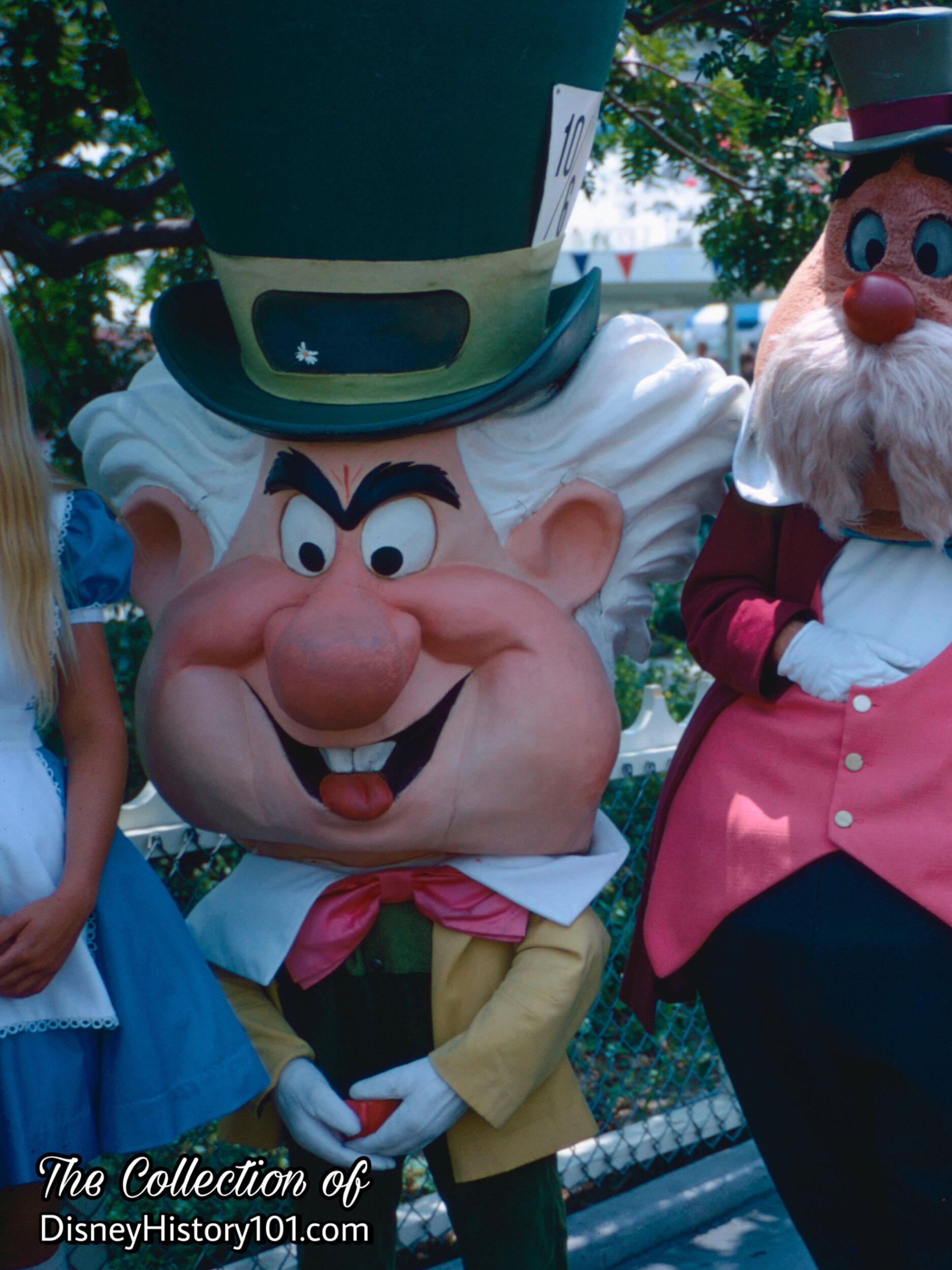
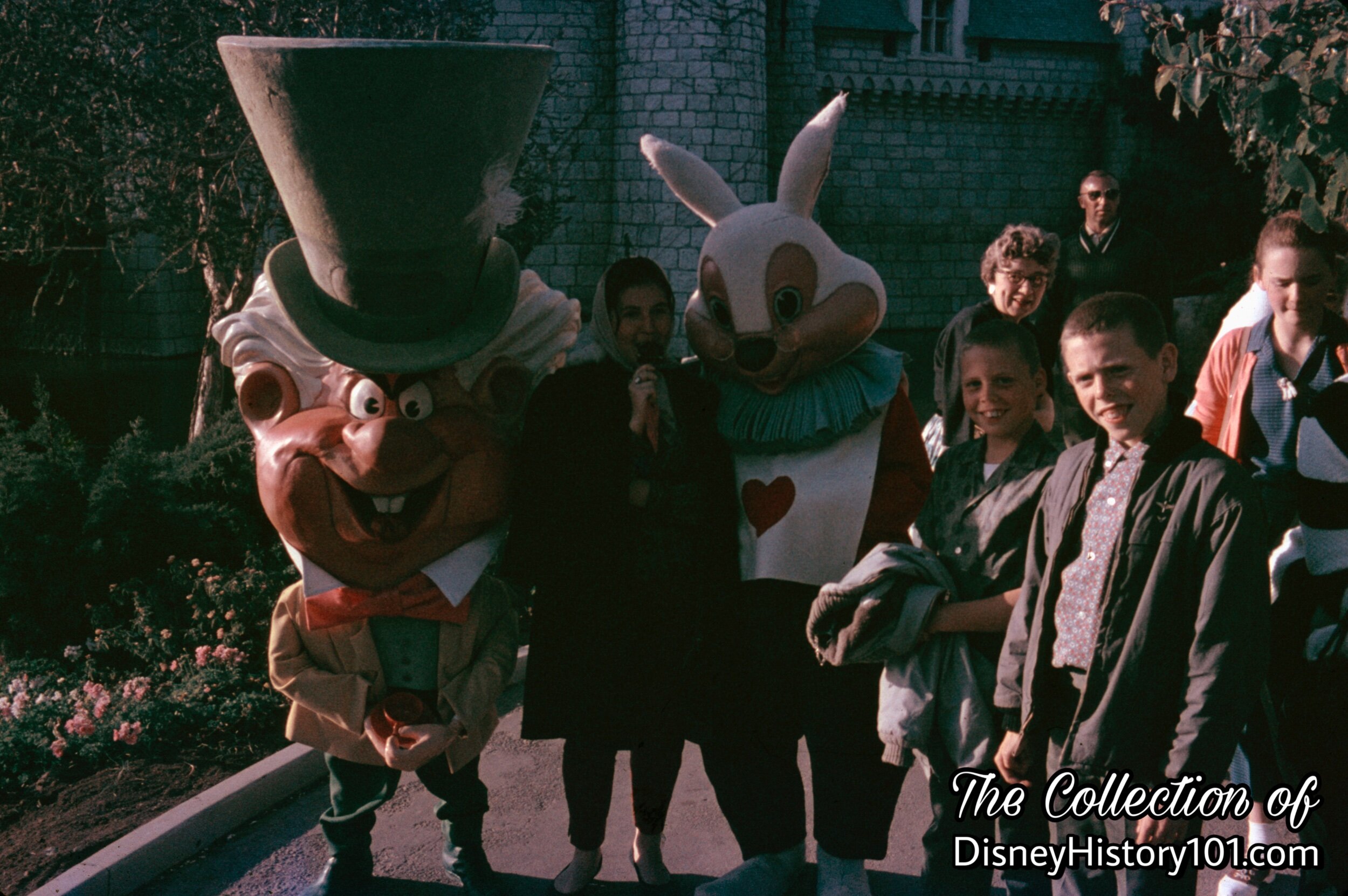
Mad Hatter, The White Rabbit, and Disneyland Guests
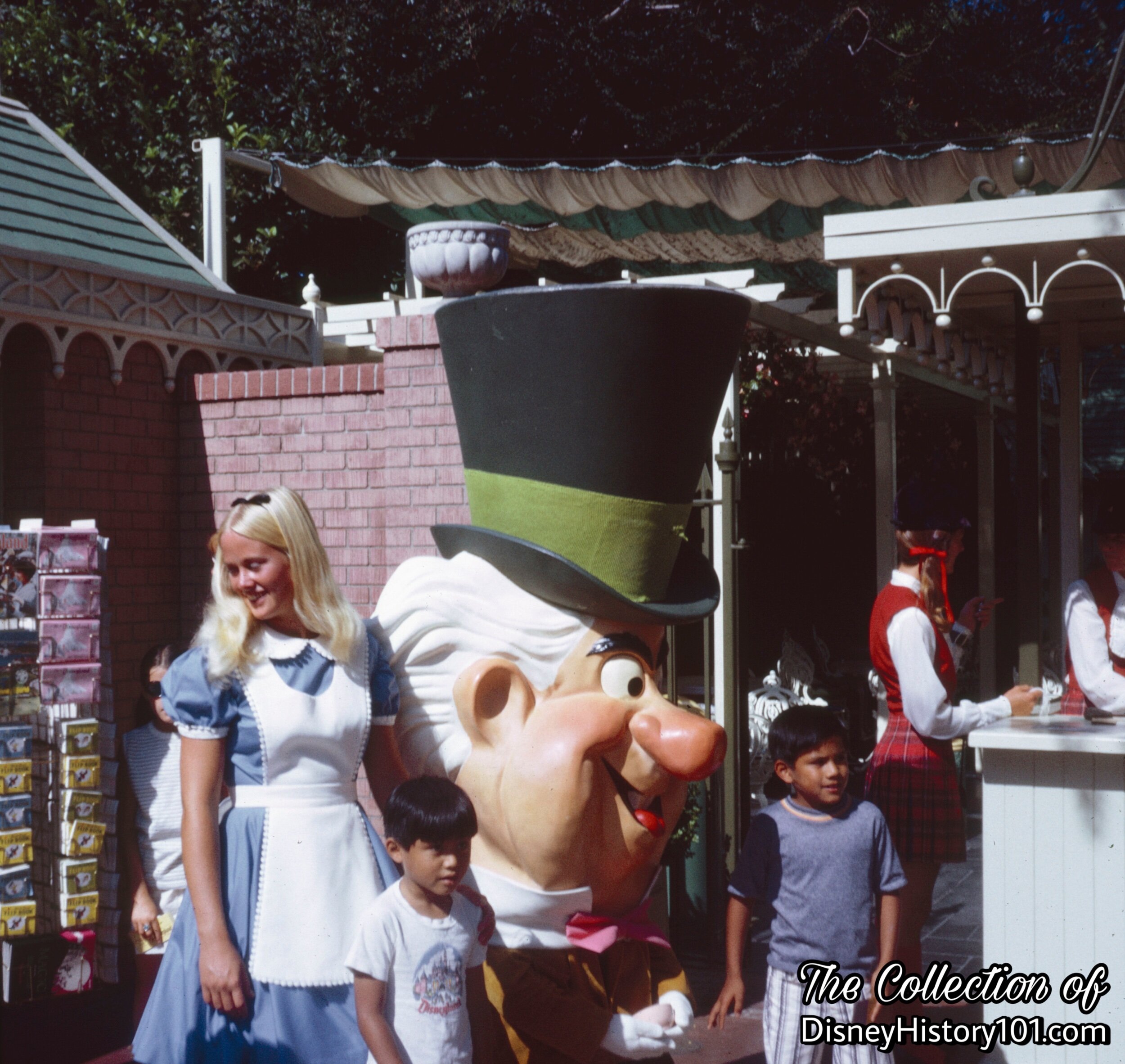
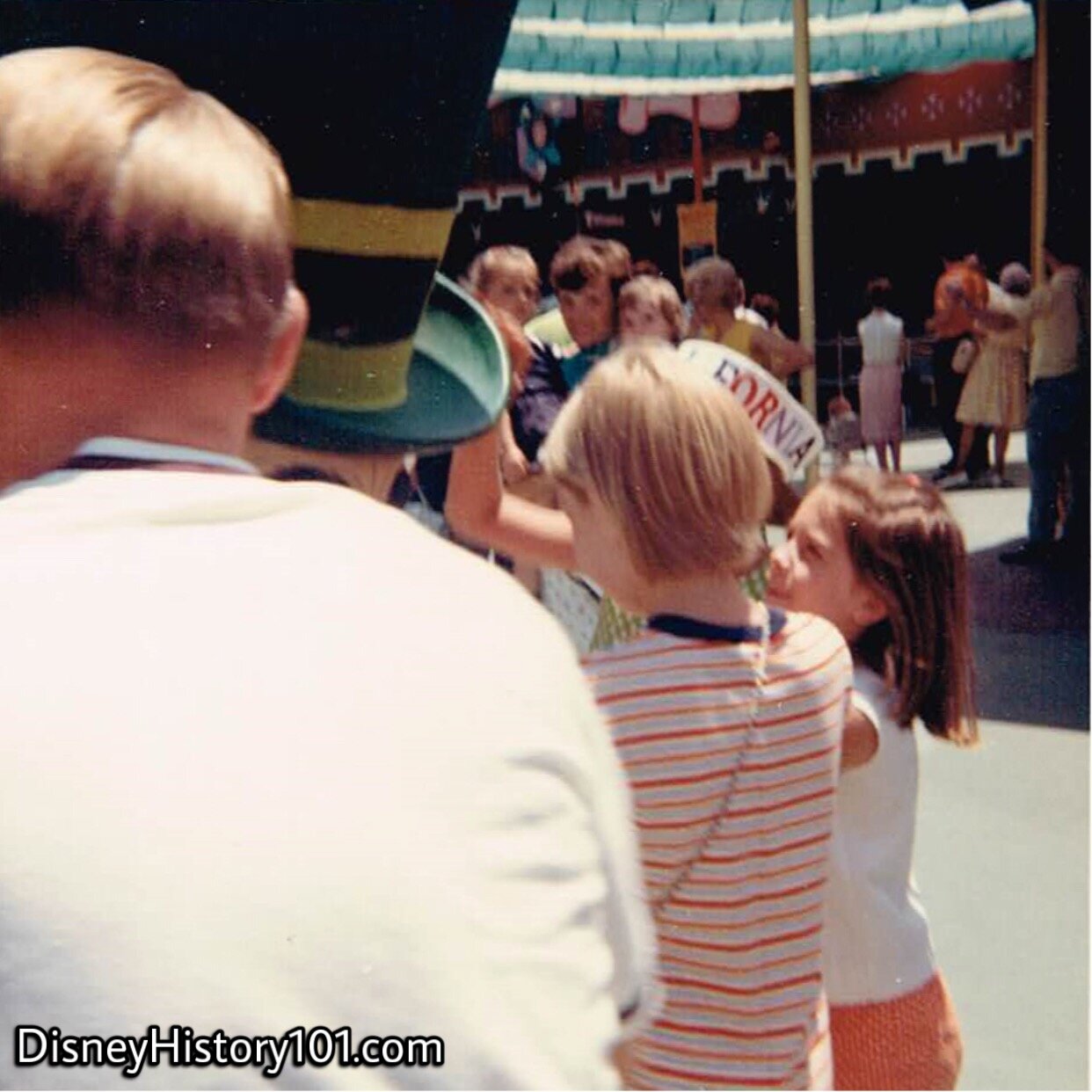
MAD HATTER, (1968)
“How d’ye do and shake hands?” Children often rather had a habit of “tweaking” the Mad Hatter’s nose.
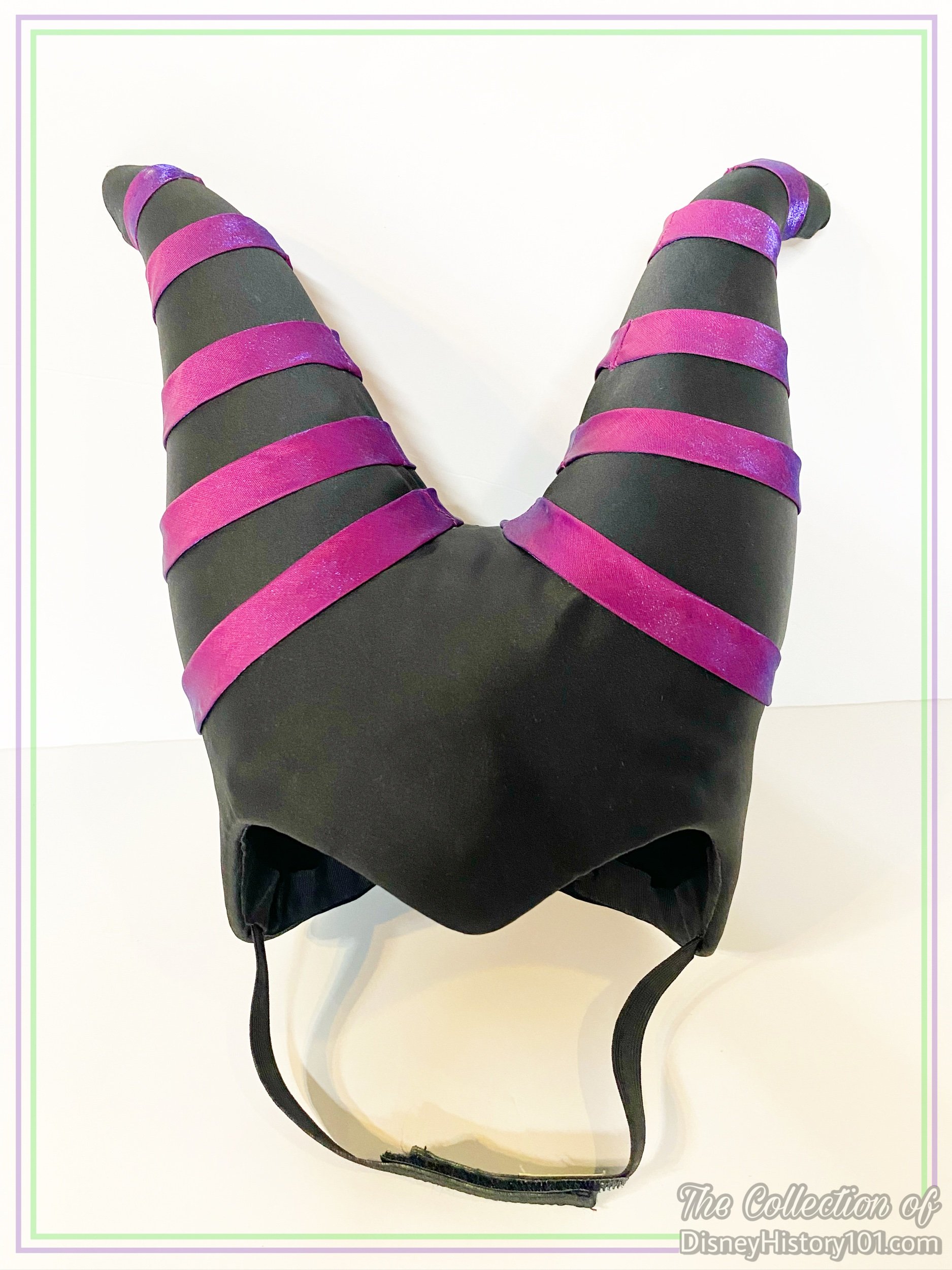
Maleficent Standard Headpiece with Horns; Character Programs and Development.

“Mary Poppins Days” (February 20-21, 1971) included a special stage show, starring Mary Poppins, on the Tomorrowland Stage and two special parades
Don Bobbs (right).
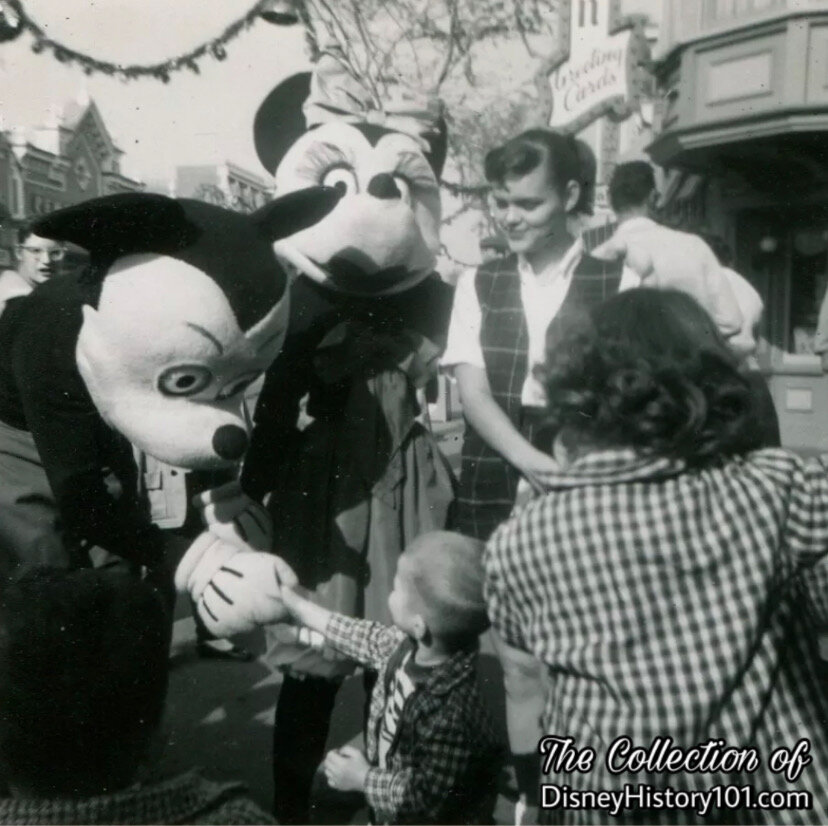
Mickey Mouse, Minnie Mouse, and Linda Cassin in Town Square, (December, 1958)
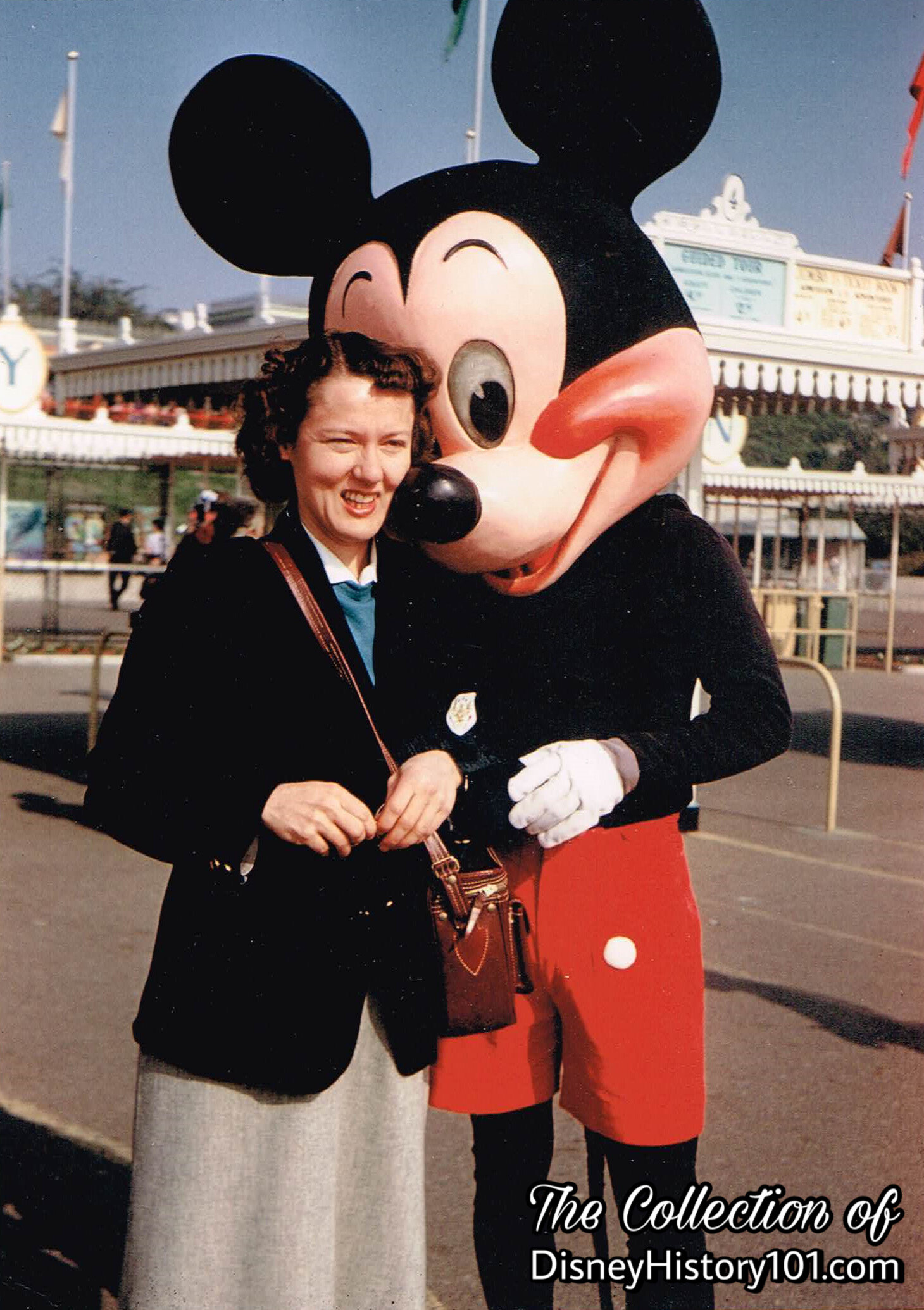
Mickey Mouse (2nd incarnation) extends courtesy to a Guest, (November, 1960)
Very few Guests arrive at DISNEYLAND in a bad mood or with a negative attitude. They normally reach that state by encountering negative experiences during their visit. Here, Mickey Mouse ensures that he is not the negative experience that Guest Betty B. encounters.
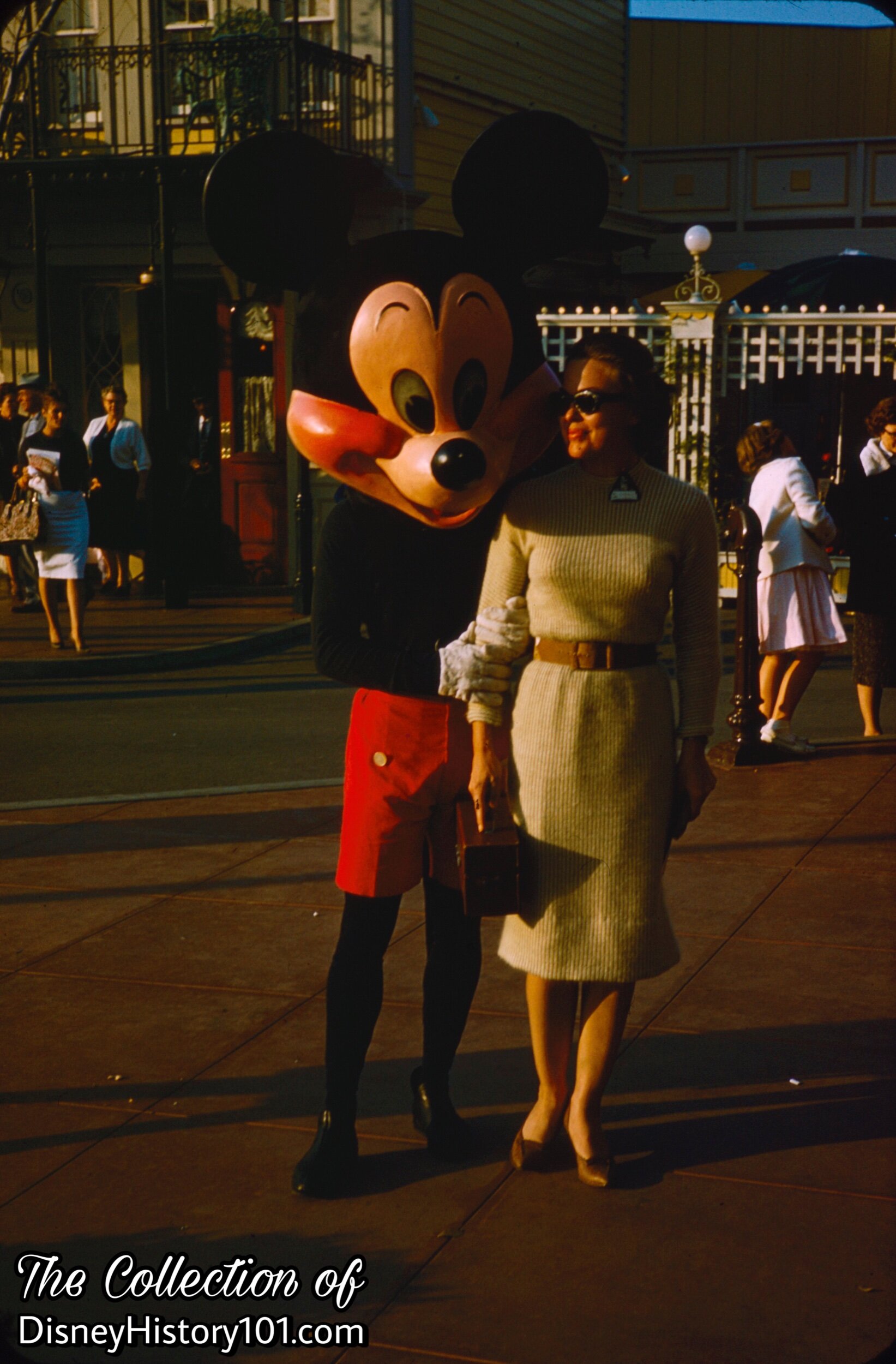
MICKEY MOUSE (2nd incarnation), (March, 1961)
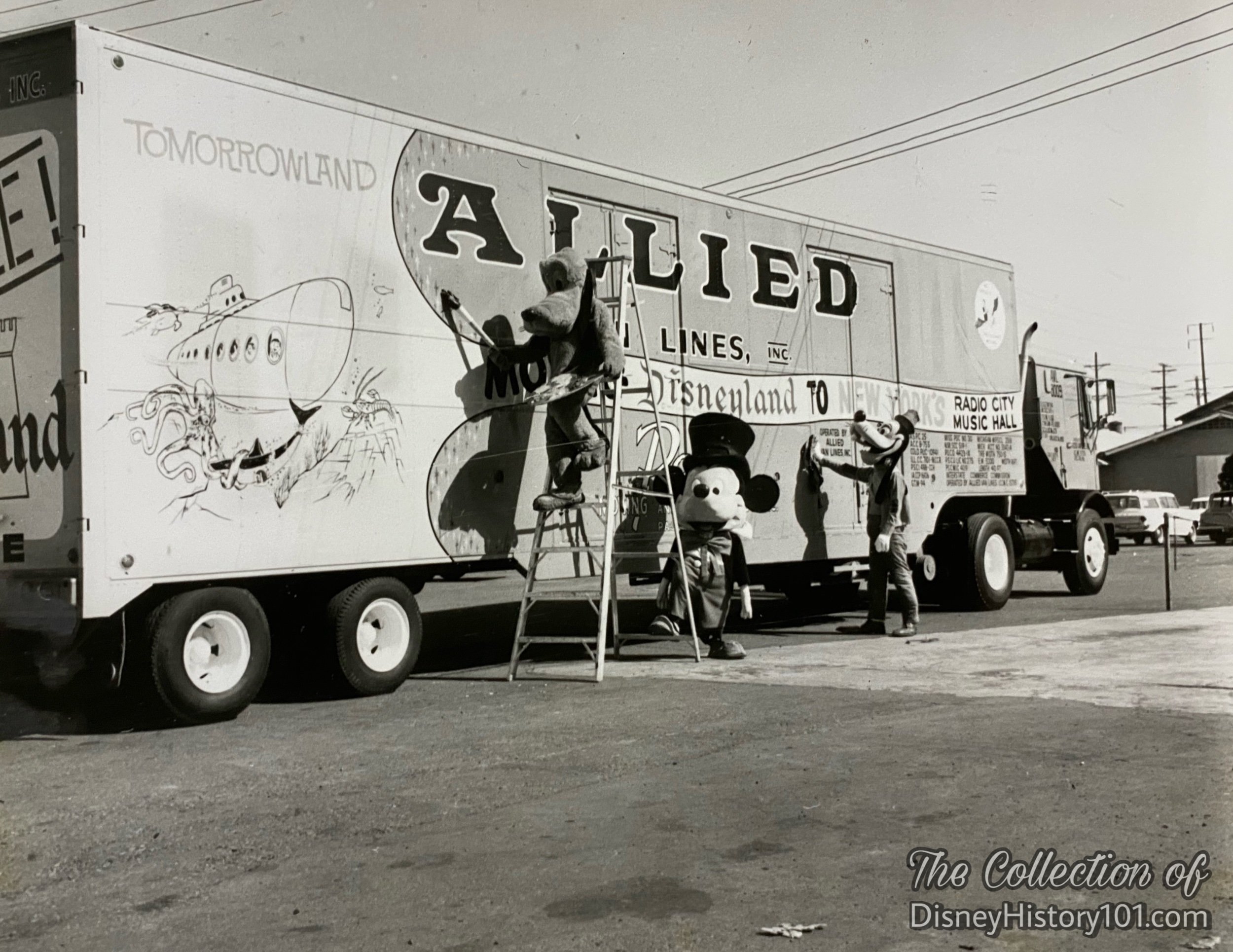
Mickey Mouse is the Grand Marshal for the “Disneyland U.S.A. Goes To Radio City” , 1962.
In the Disneyland Christmas Parade of 1961, there appeared for the first time a bass drum measuring 10 - 7" in diameter, and perched on top was Paul Castle in the character of Mickey Mouse. One of Paul's most memorable experiences was his role as a sort of Grand Marshal for the “Disneyland U.S.A. Goes To Radio City” journey, which must have been the world's longest and only coast-to-coast parade. The show itself, which played for six weeks during Easter Vacation in 1962, broke all previous records for attendance at the Radio City Theatre.

MICKEY MOUSE (3rd incarnation), (October, 1966)
This “Vintage View” gives us an early look at the third incarnation of Mickey Mouse, who first greeted guests at Disneyland (during the summer of 1963)! Here, Mickey Mouse demonstrates the importance of catching each person’s eye in a group.
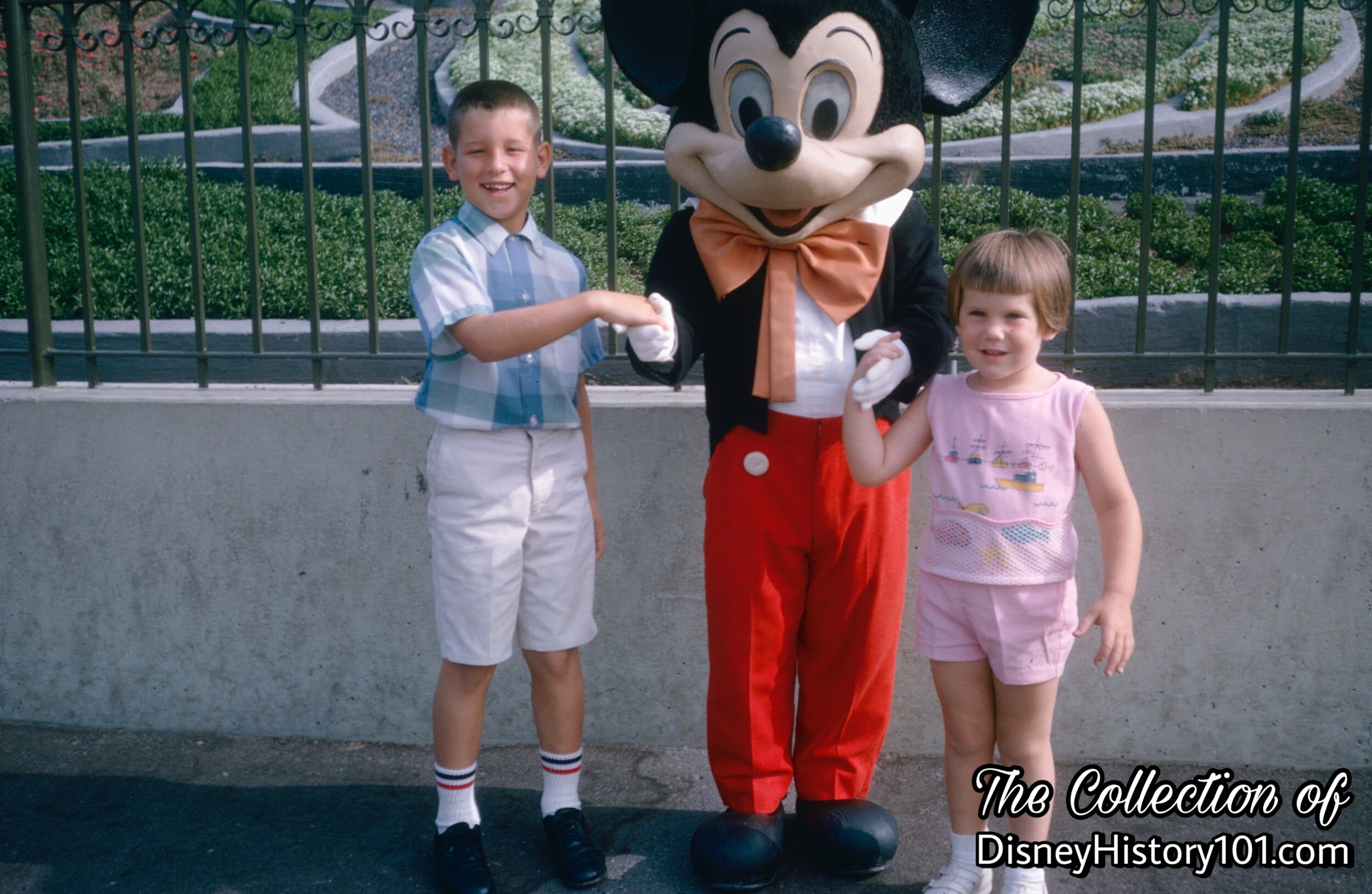
MICKEY MOUSE (4th incarnation)
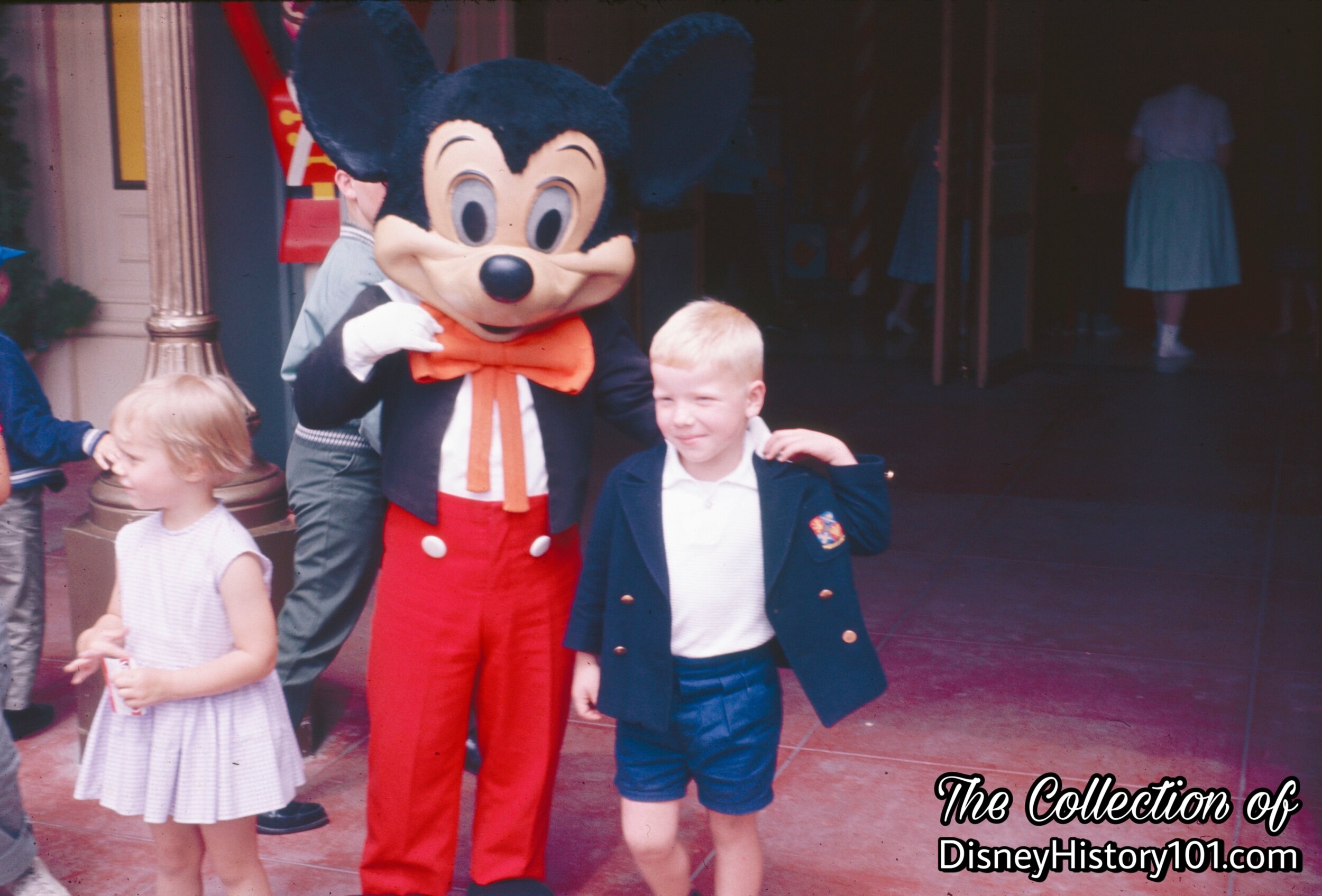
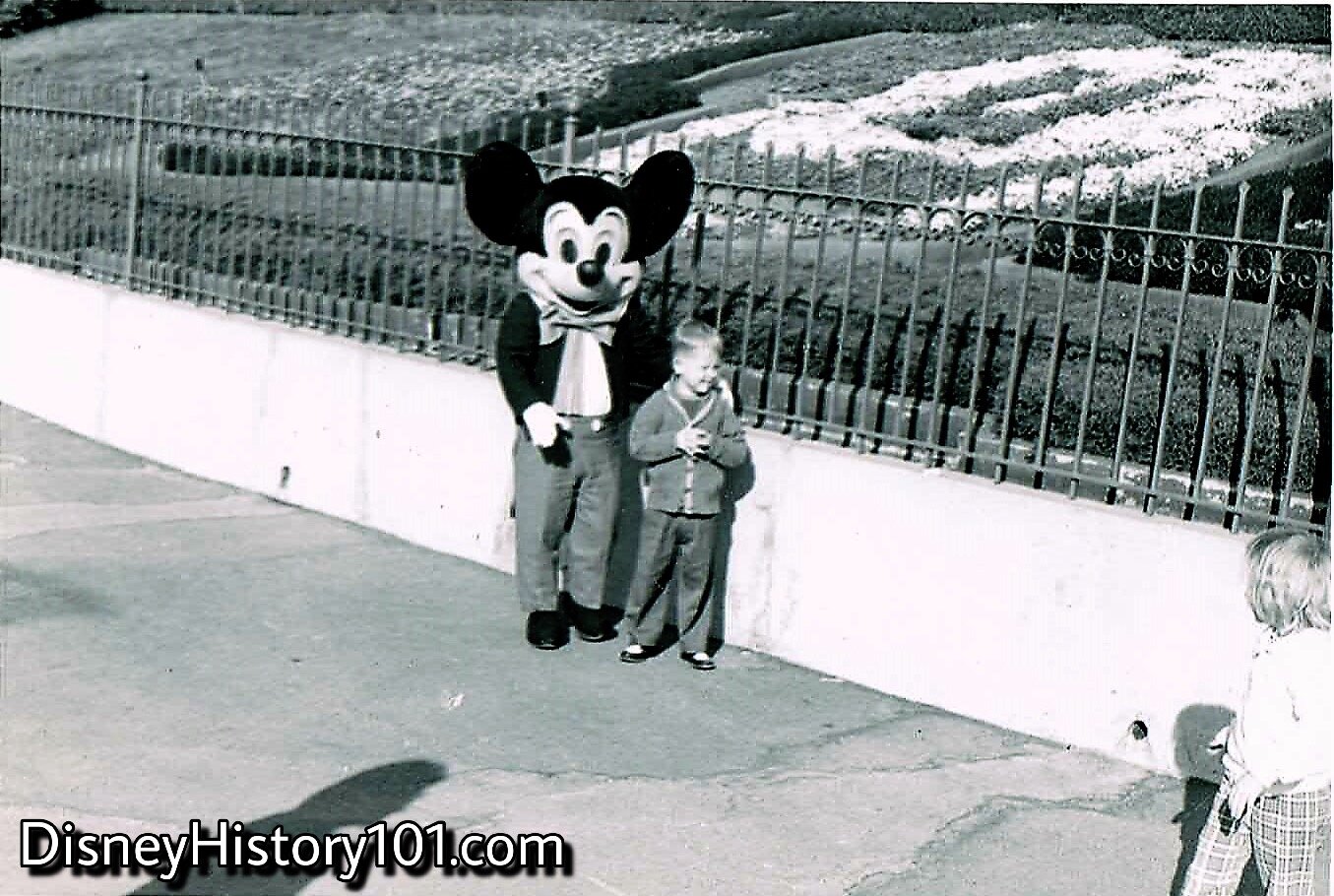
MICKEY MOUSE
Sometimes guests were a little shy or “star struck”.

The “Ambassador of Fun” greets a family in Town Square!
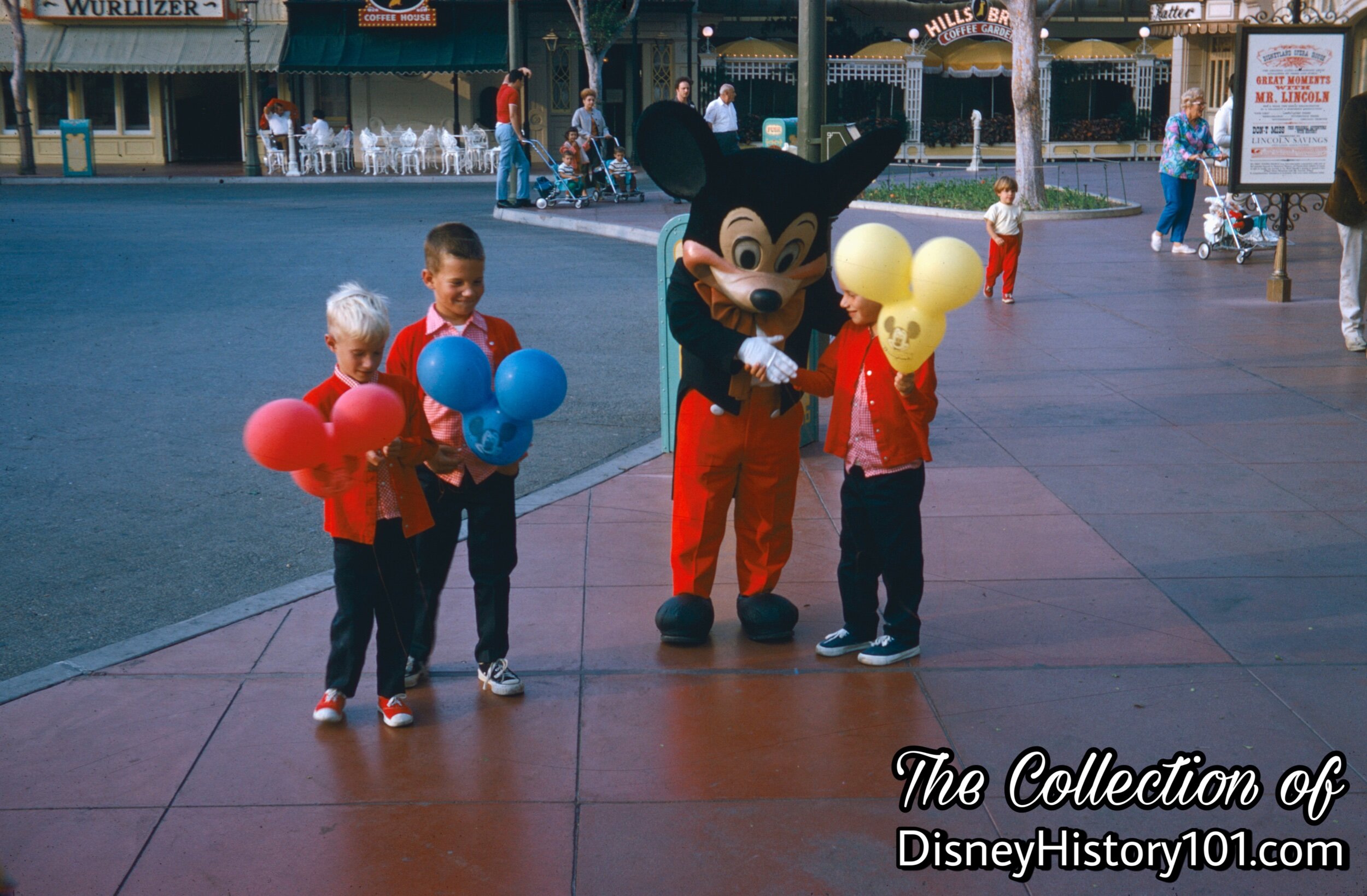

MICKEY MOUSE, (November, 1973)
Most of know that a giant floral Mickey greets Disneyland guests on their way through the tunnels. But if you’re really lucky, you’ll be greeted by the Big Cheese himself - Mickey Mouse.
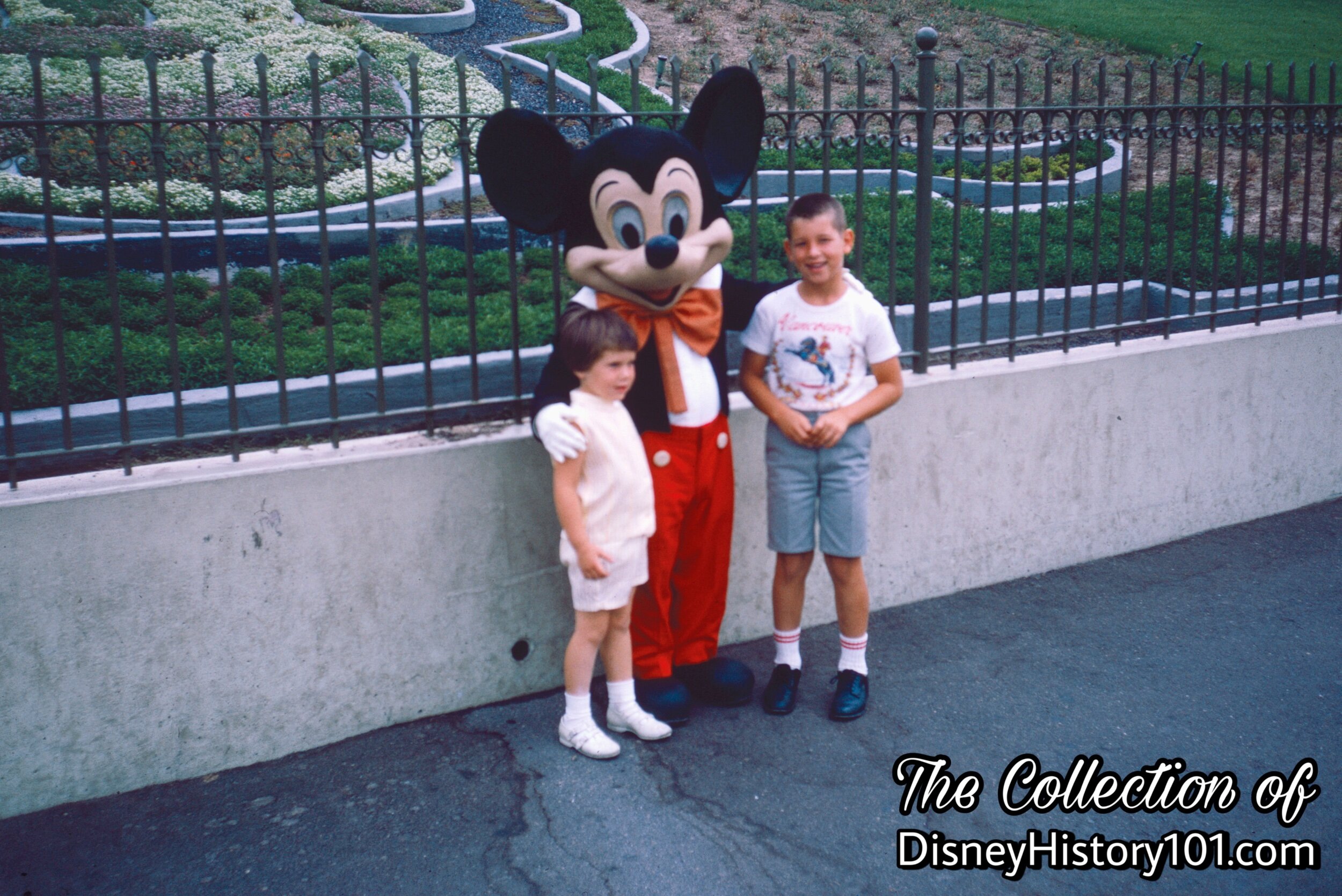
MICKEY MOUSE
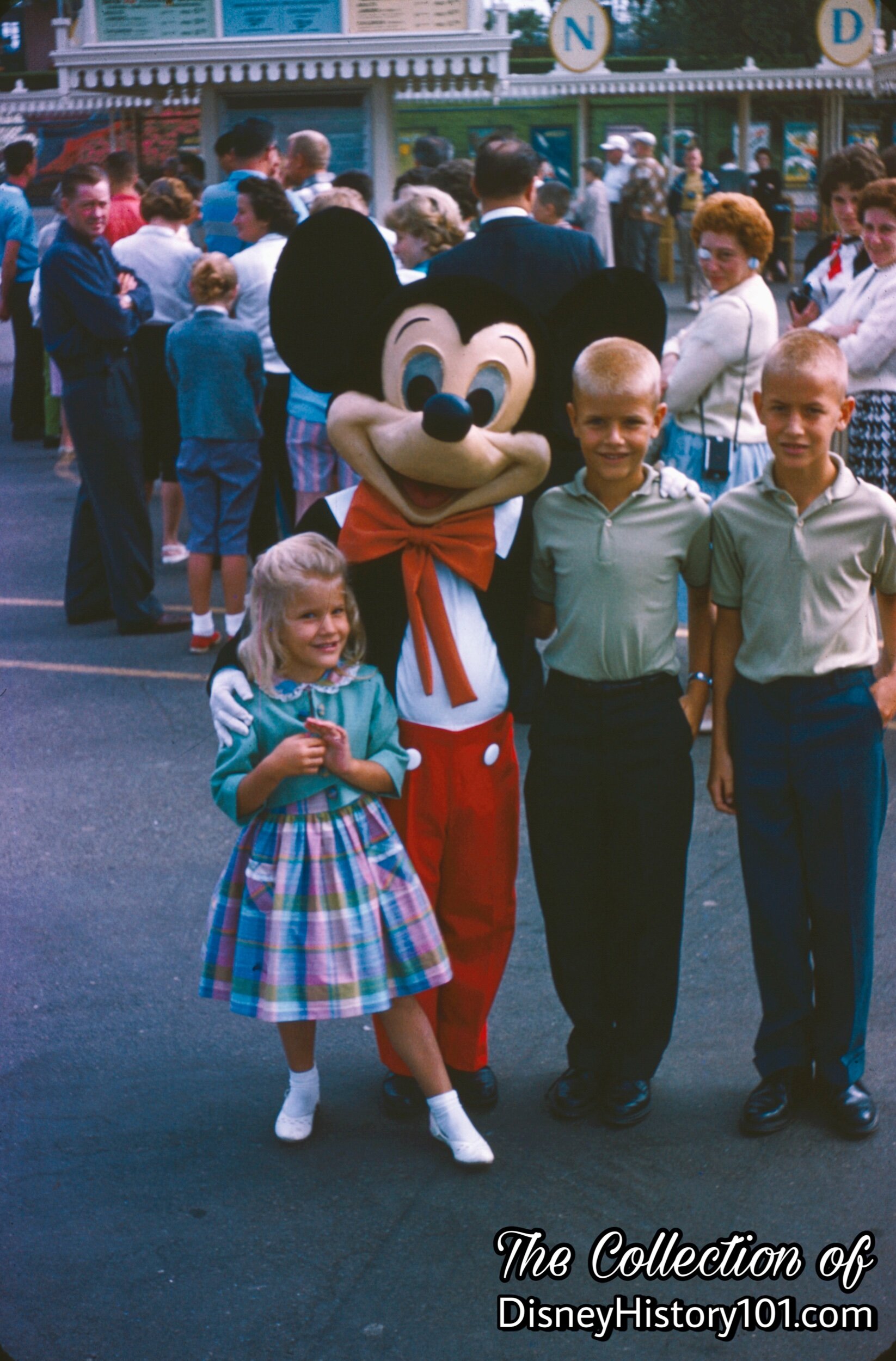

Mickey and Pluto, (September, 1969)
Sometimes Mickey Mouse was joined at the entrance, by his loyal pup, Pluto!
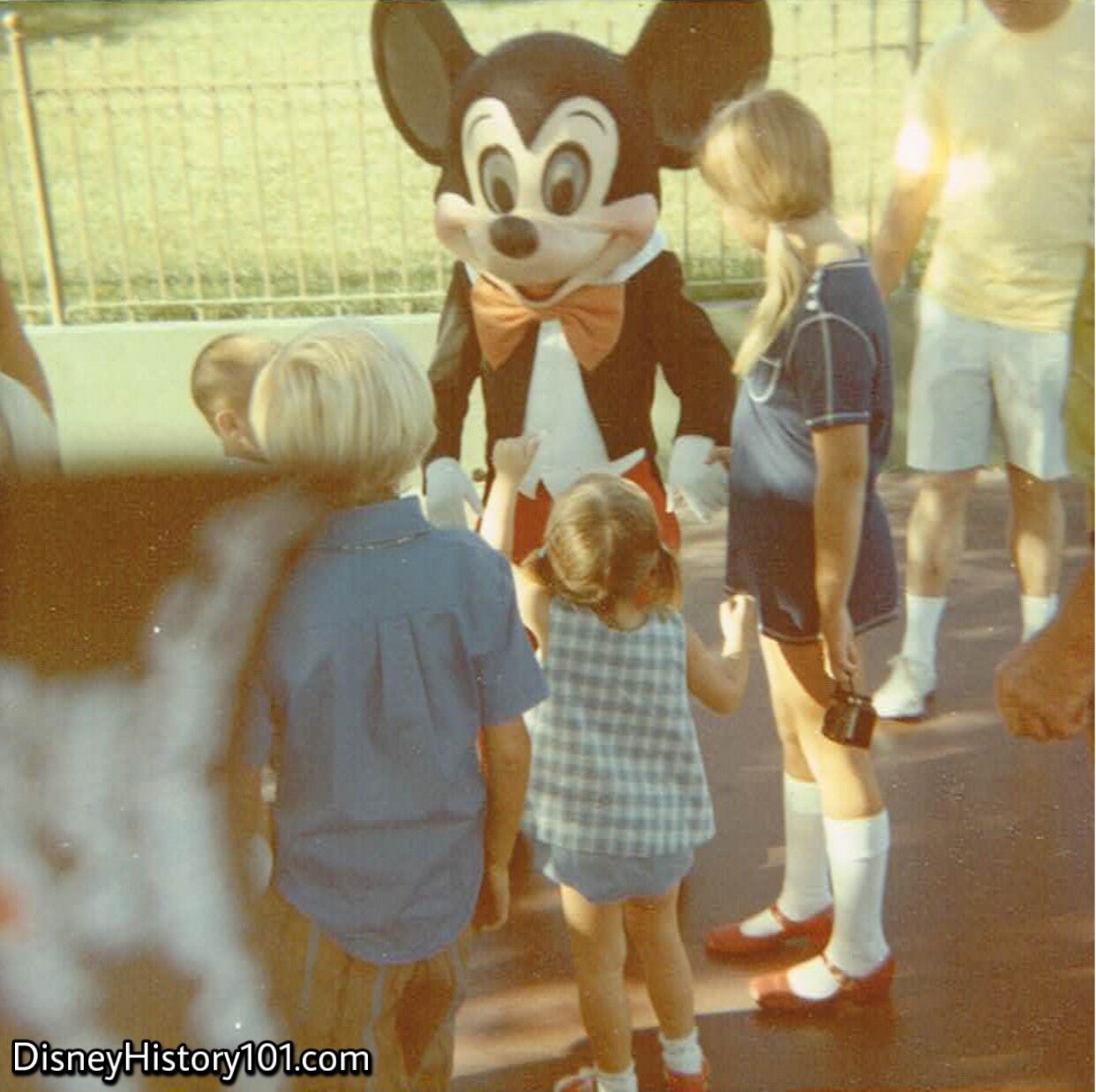
MICKEY MOUSE, (August 31, 1970)
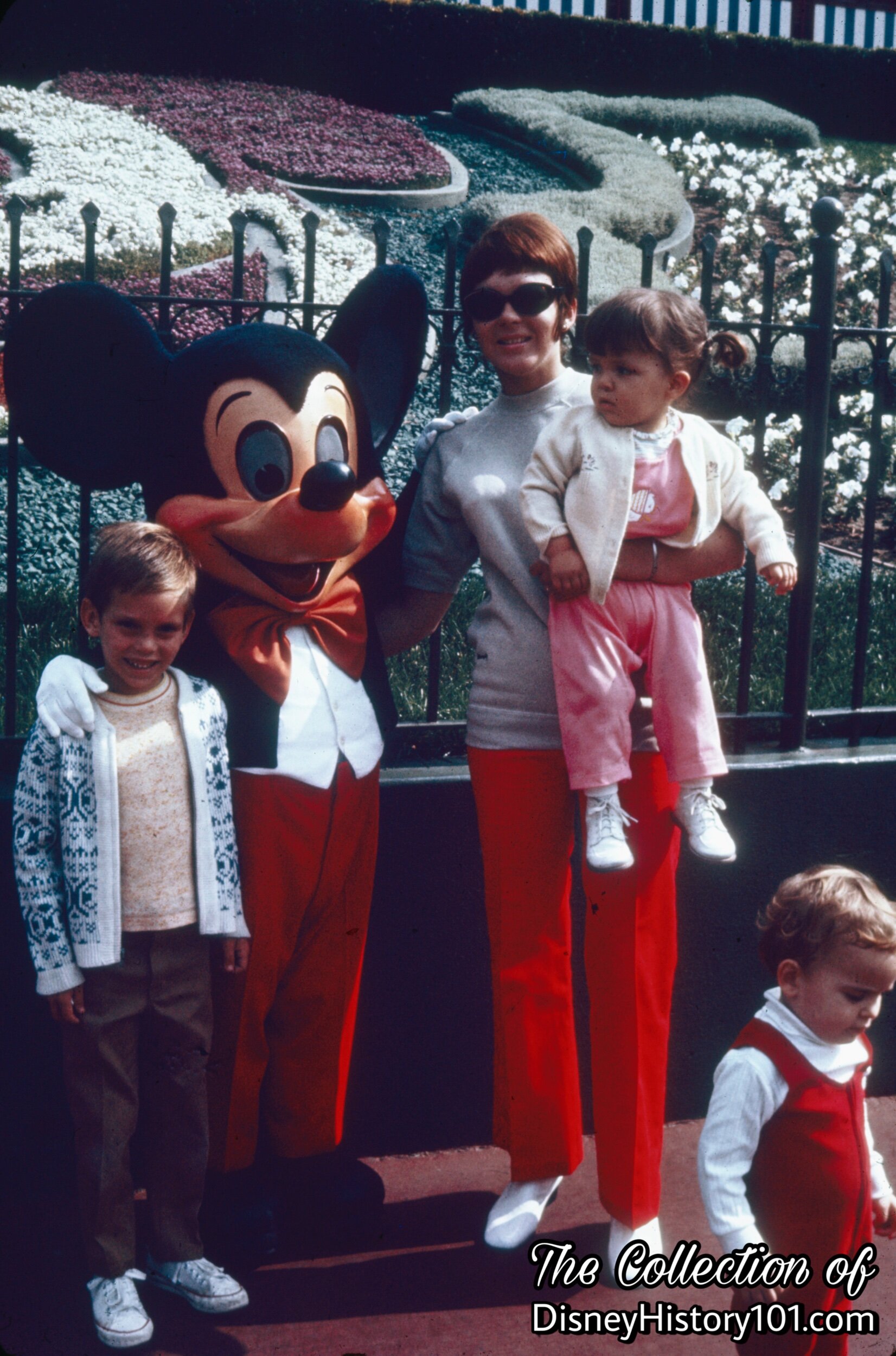
MICKEY MOUSE


MICKEY MOUSE
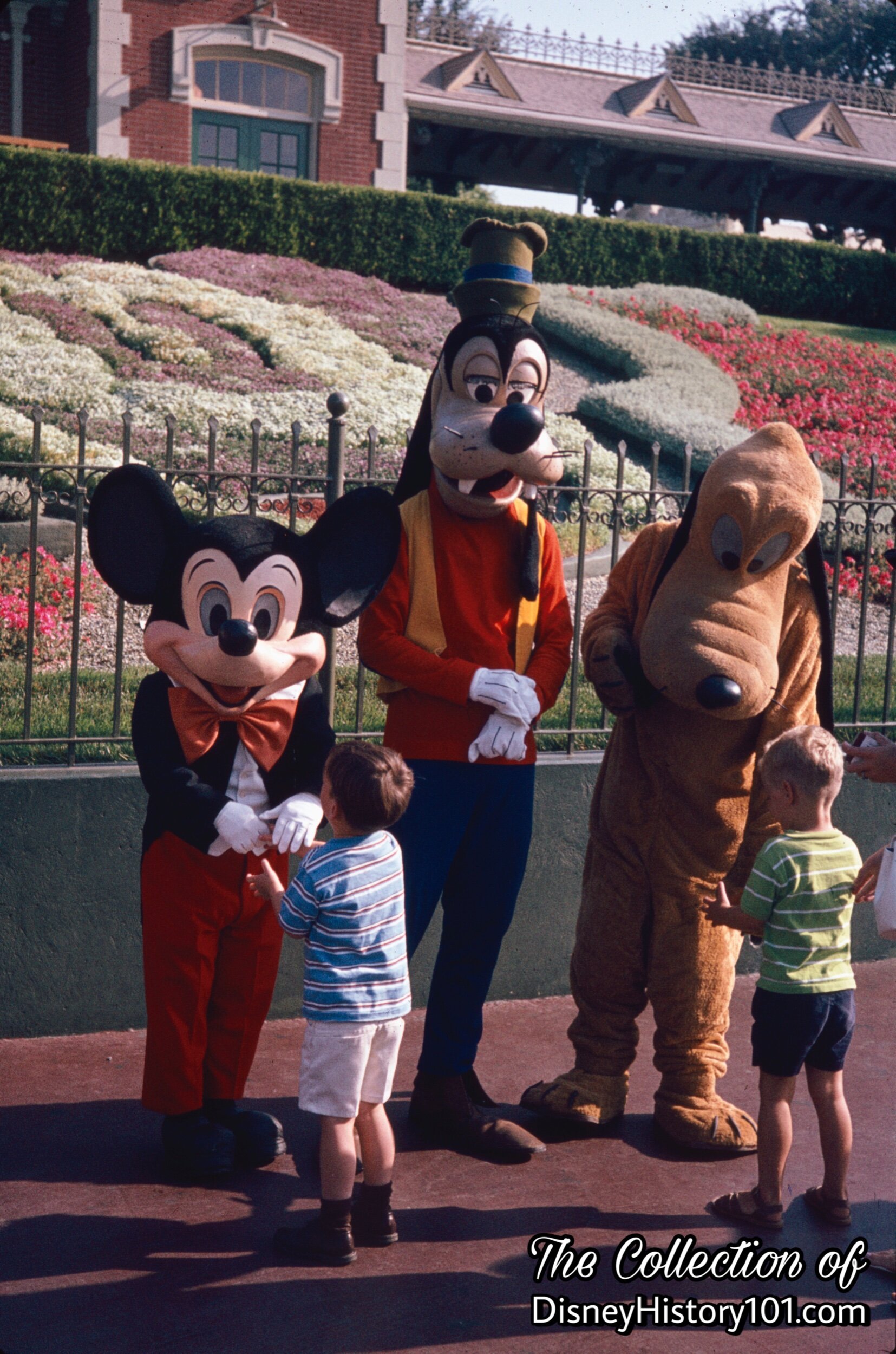
Mickey and Pals, (1969)
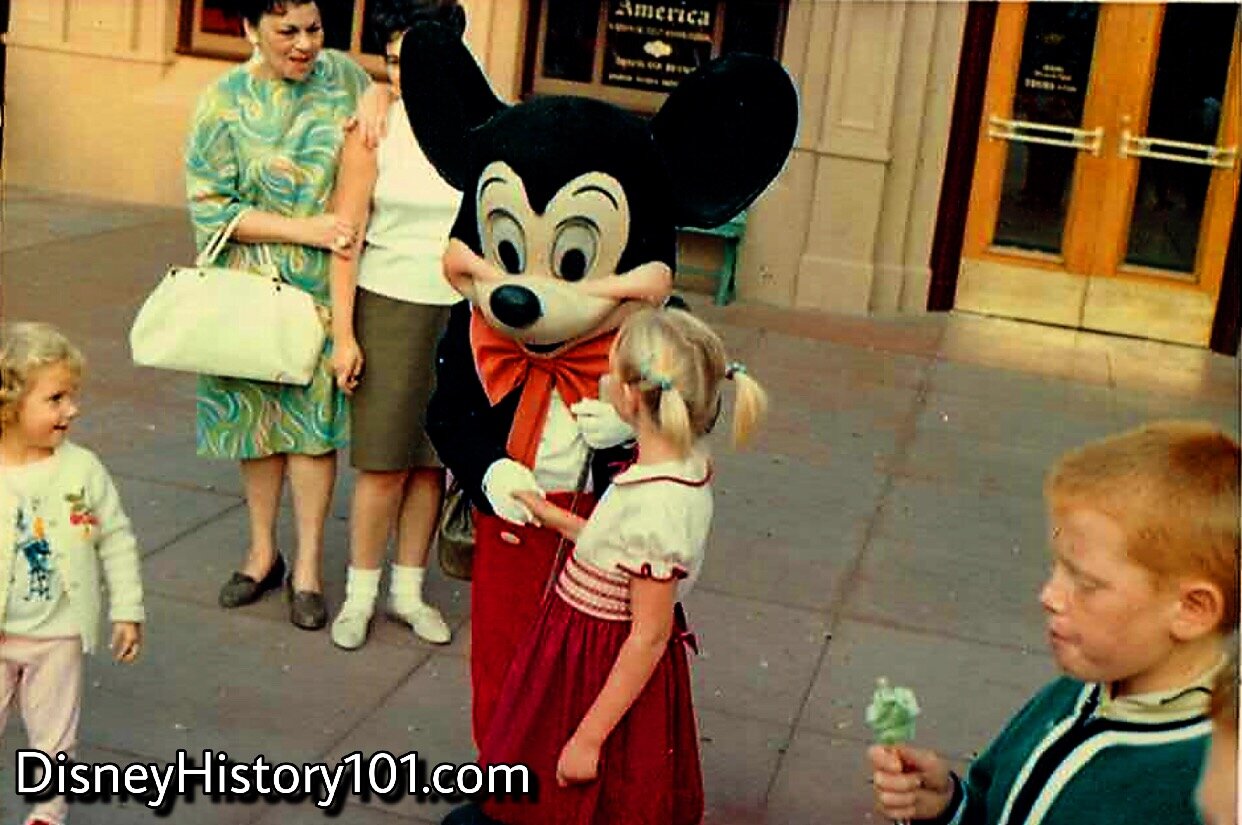
MICKEY MOUSE, (October, 1967)
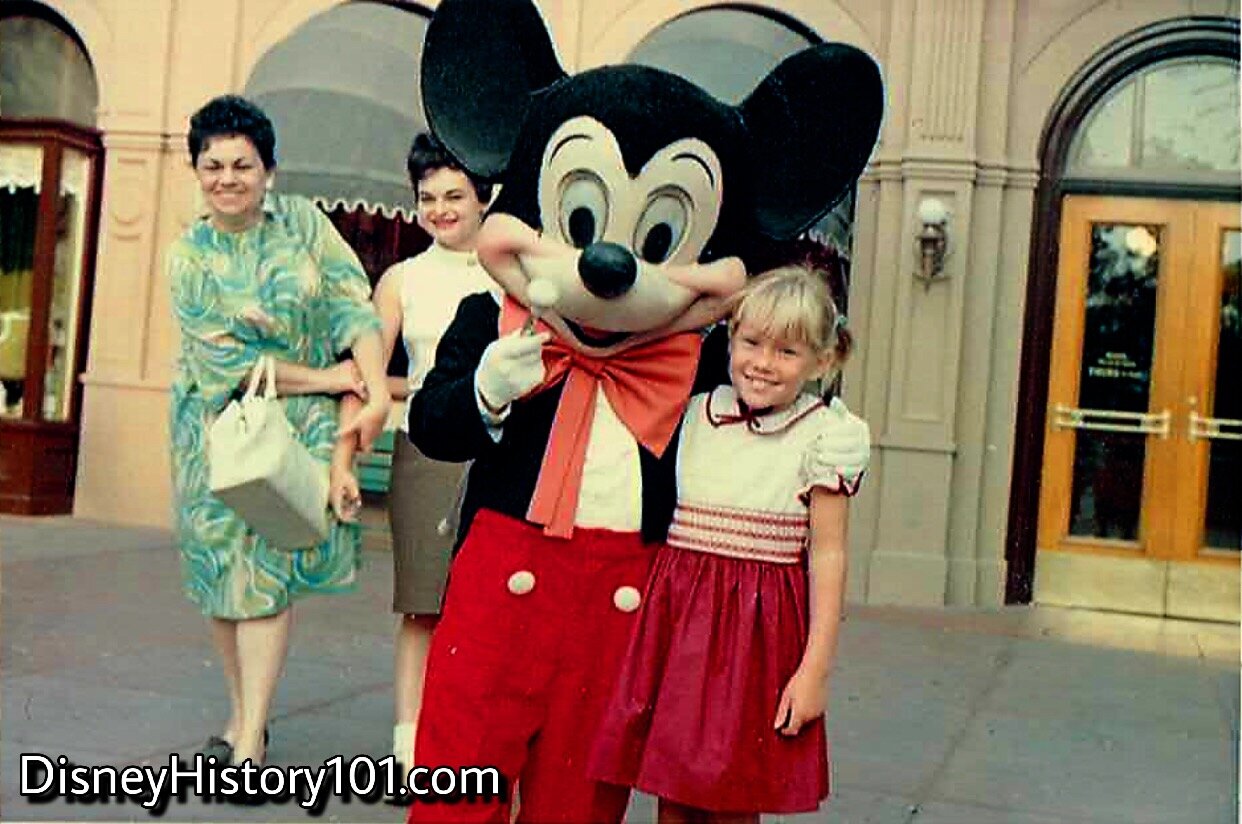
MICKEY MOUSE, (October, 1967)
After leading Disneyland’s marching band down Main Street USA, Mickey Mouse takes time for some of his friends that come to visit him.
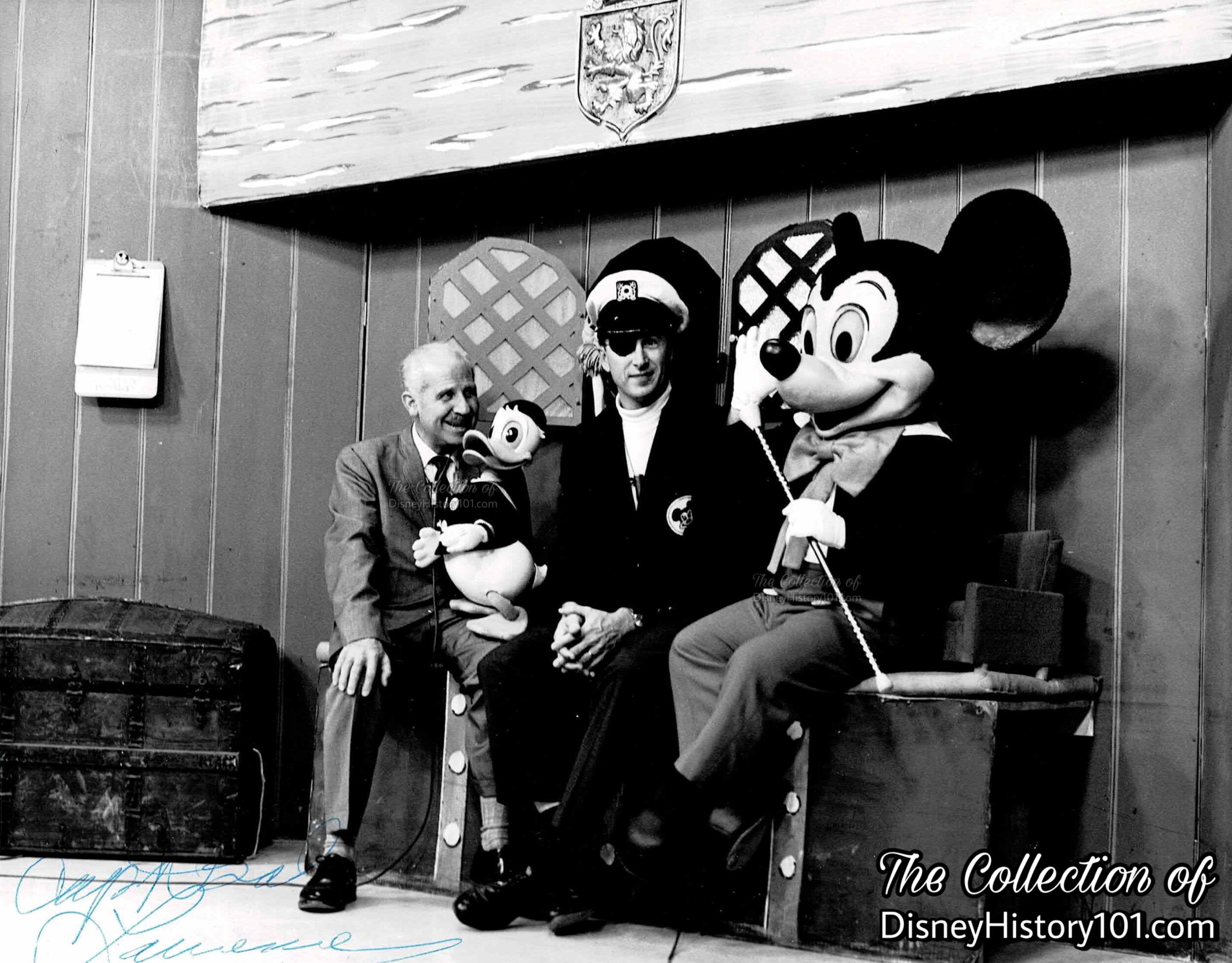
Clarence Nash, Mickey Mouse, and Captain Bob ; Photo Credit : Sherwin Greenberg Studio, Inc.
In a synergistic cross-pollination, Mickey Mouse, Donald Duck (and close friend, Clarence “Ducky” Nash) make an appearance on Captain Bob Lawrence’s WGR-TV television program out of Buffalo, New York, during 1964. This is (of course) in order to familiarize East Coast audiences with the recently syndicated Mickey Mouse Club television series (which is soon to air with newly recorded footage). In addition, this familiarized audiences with Walt Disney Productions, as they were involved with several exhibits at the upcoming 1964 New York World’s Fair.
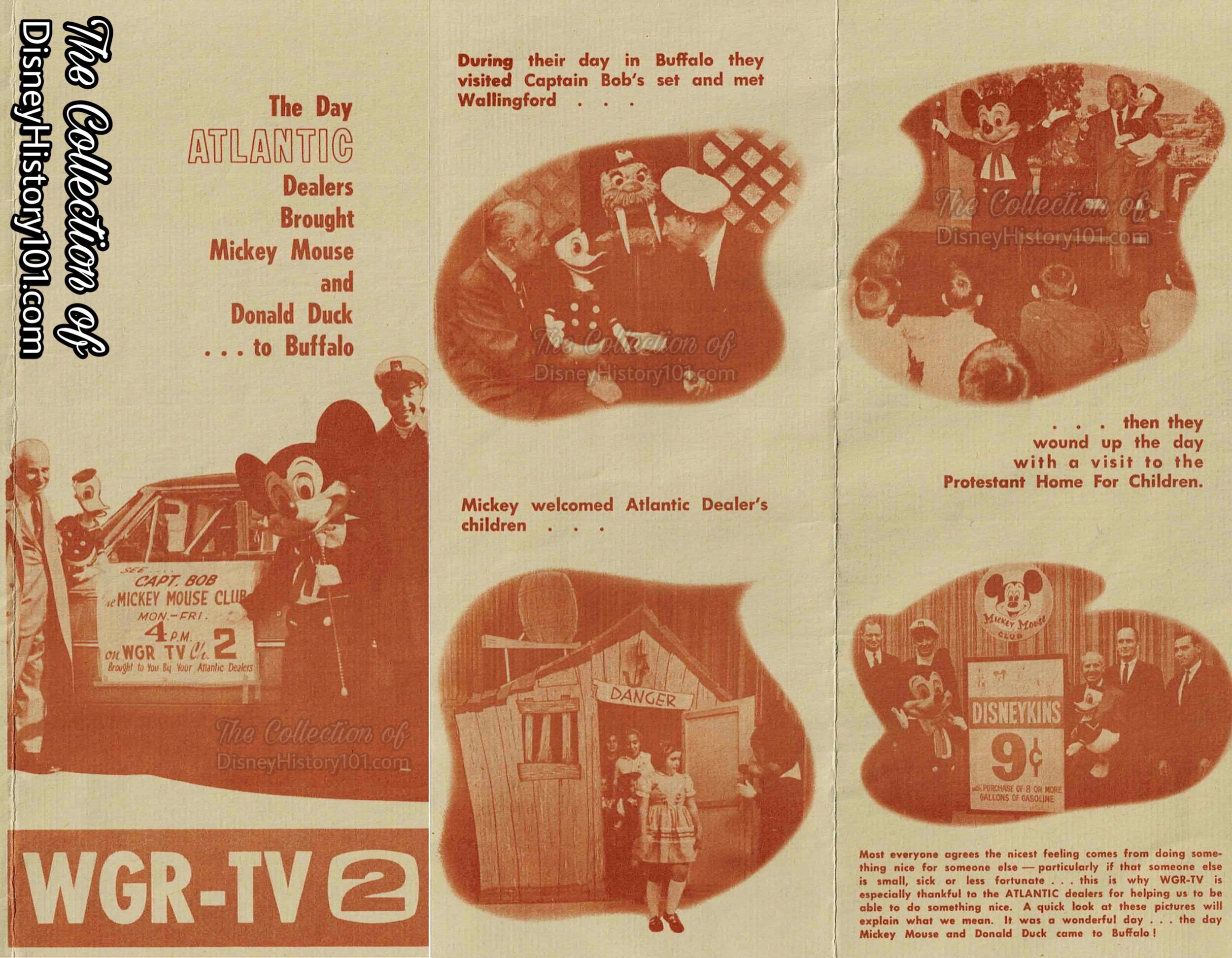
Mickey Mouse, Donald Duck and Clarence Nash Visit Buffalo
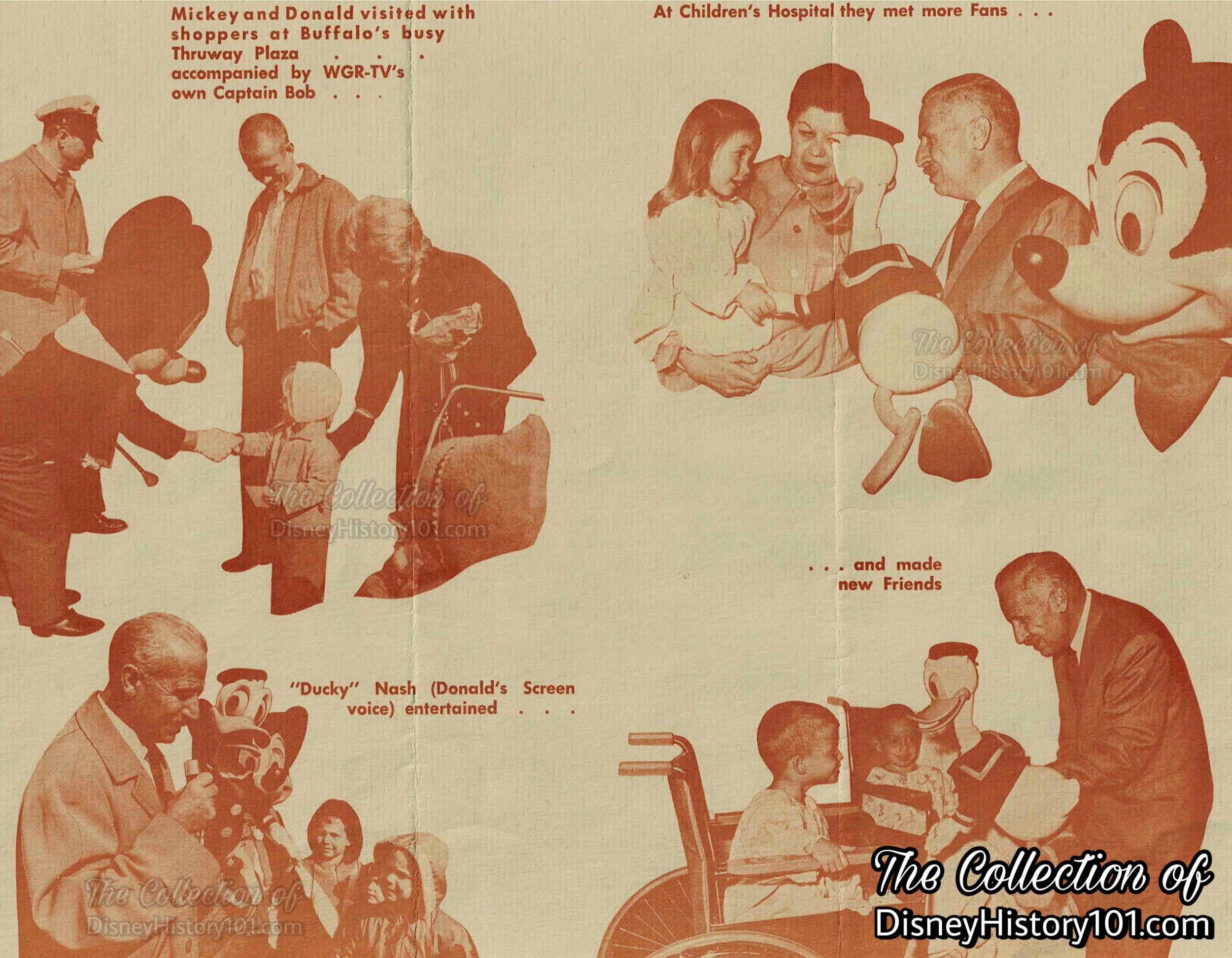
Mickey Mouse, Donald Duck and Clarence Nash Visit Buffalo
As a sidelight, Clarence Nash and Donald Duck continued to visit children’s hospitals until (a year after Donald Duck’s fiftieth birthday, and) Clarence passed in 1985.

MICKEY MOUSE, (1964)
During 1964, Mickey Mouse often welcomed new Mouseketeers (while in between performances) in front of the Mickey Mouse Club Headquarters (a temporary attraction housed in the Main Street Opera House during 1964).
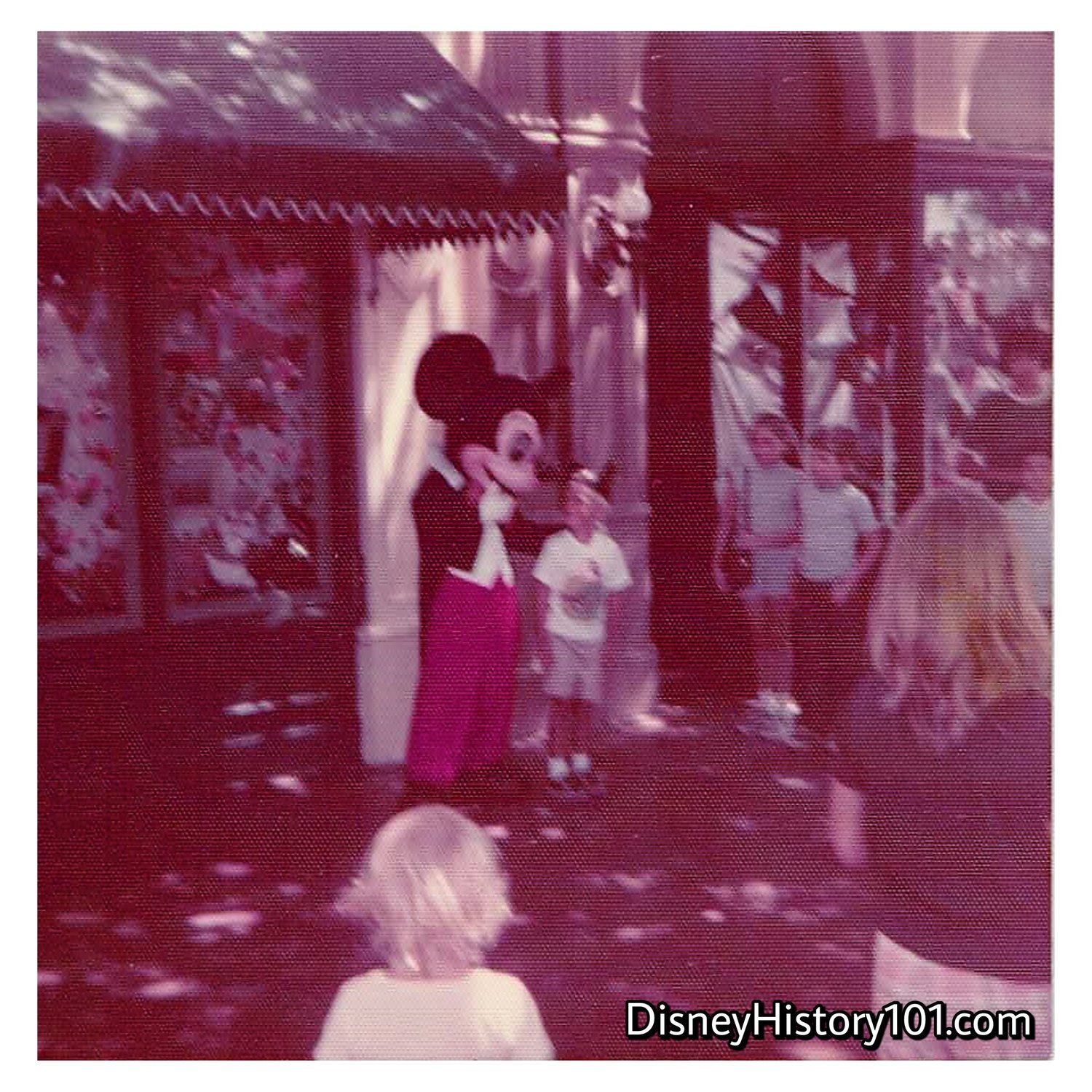
MICKEY MOUSE
During the 60s, Mickey Mouse could be found just about everywhere in Disneyland. Here’s Mickey Mouse on Main Street near Bank of America.

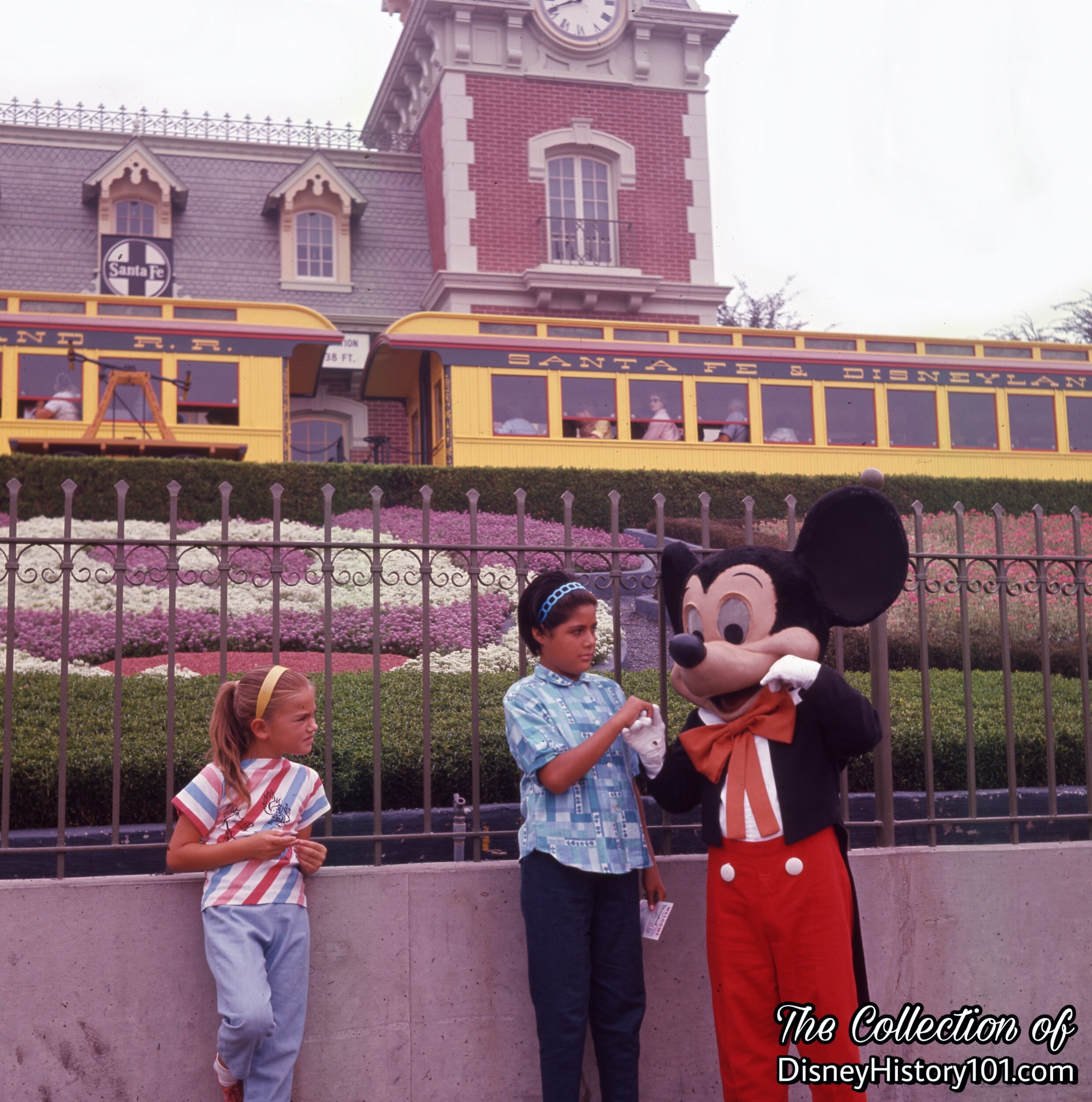
Occasionally guests seem uninterested, so Mickey Mouse and his pals must change what they are doing in order to gain back the guest’s attention. Here, Mickey Mouse attempts to initiate participation with a gesture.
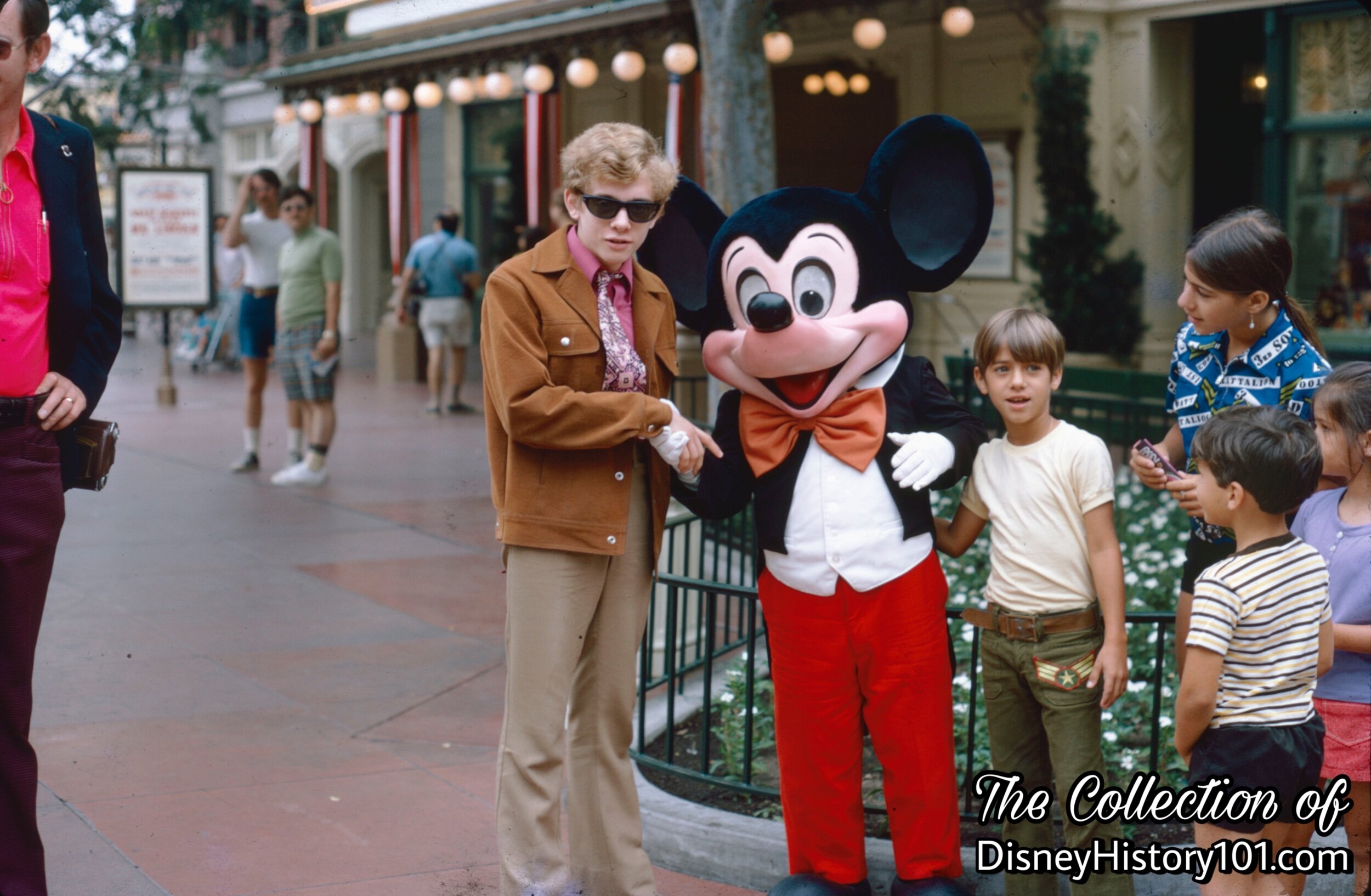
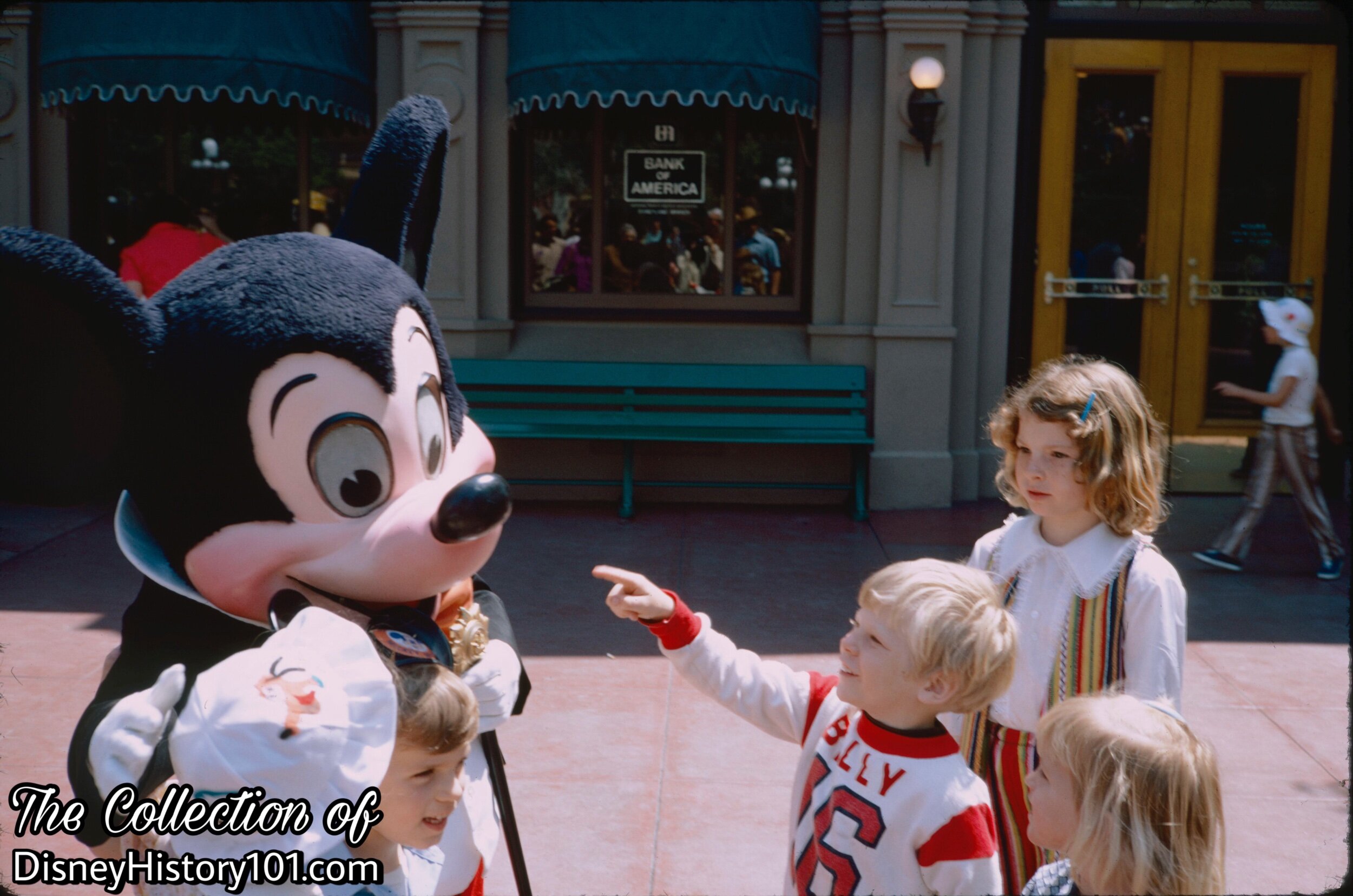
MICKEY MOUSE
Mickey Mouse has always been a model of Disney Courtesy Policies, maintaining a pleasant facial expression and good eye contact while interacting with guests. Maintaining such expressions throughout communication “establishes an immediate rapport by indicating a receptiveness to listen and understand,” which even children can grasp.
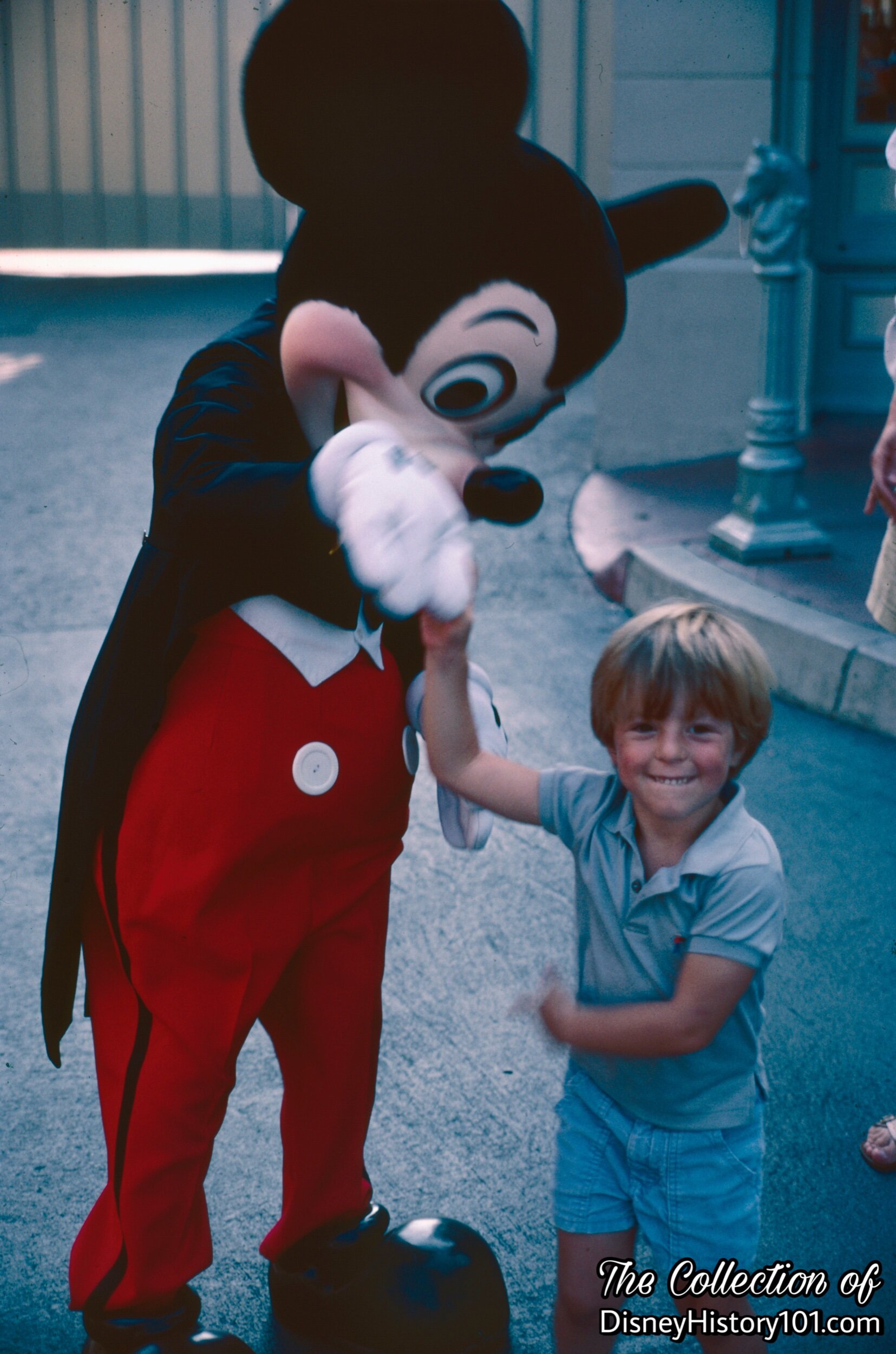
The white glove treatment
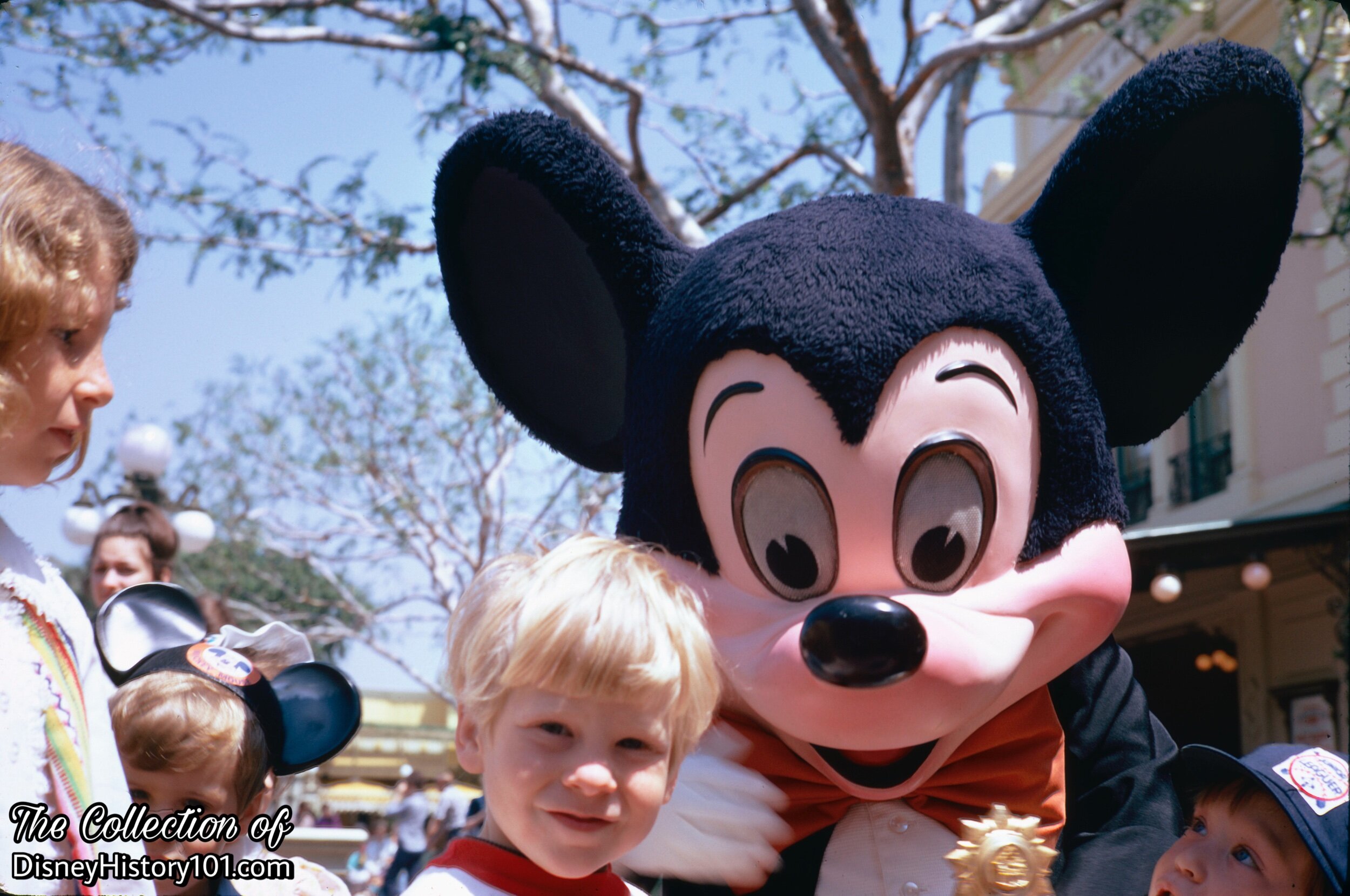
MICKEY MOUSE, (April, 1972)
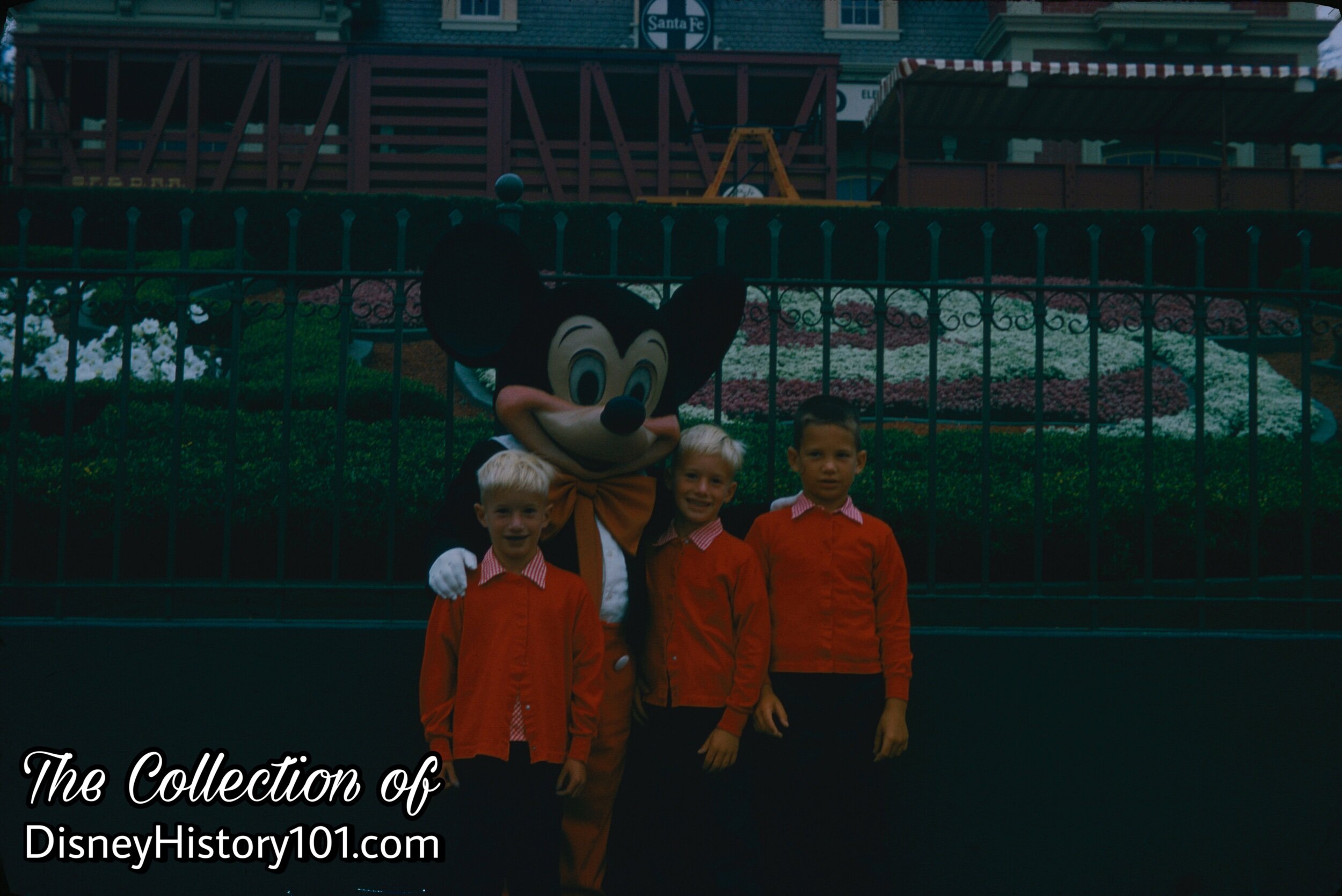
MICKEY MOUSE, (c. October, 1968)

MICKEY MOUSE, (December, 1968)
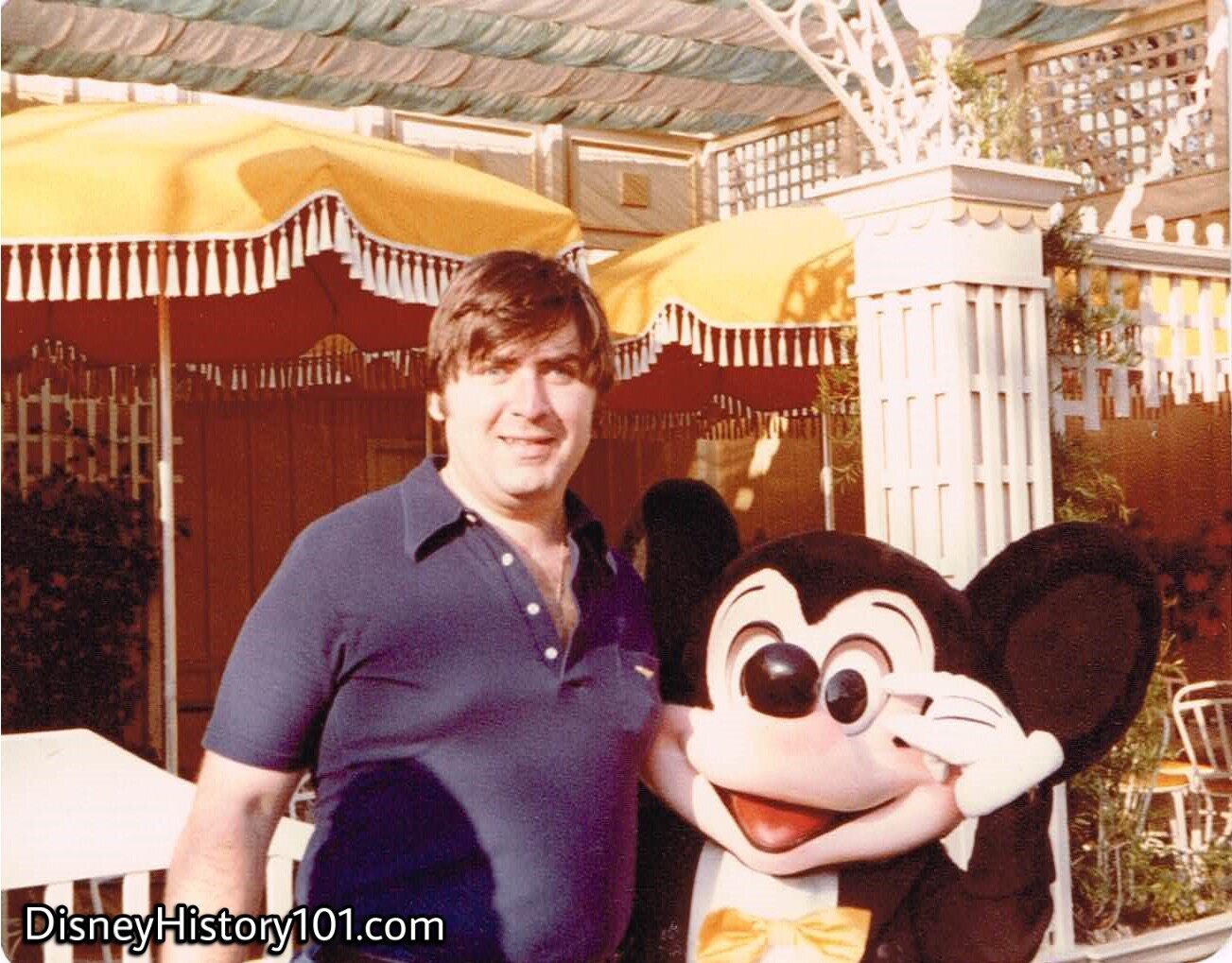
MICKEY MOUSE
Mickey Mouse meets with a guest near the Egg House during Disneyland’s 25th Anniversary! Mickey’s costume was newly designed by Jack Muhs of the Disneyland Entertainment Costume Design Department.
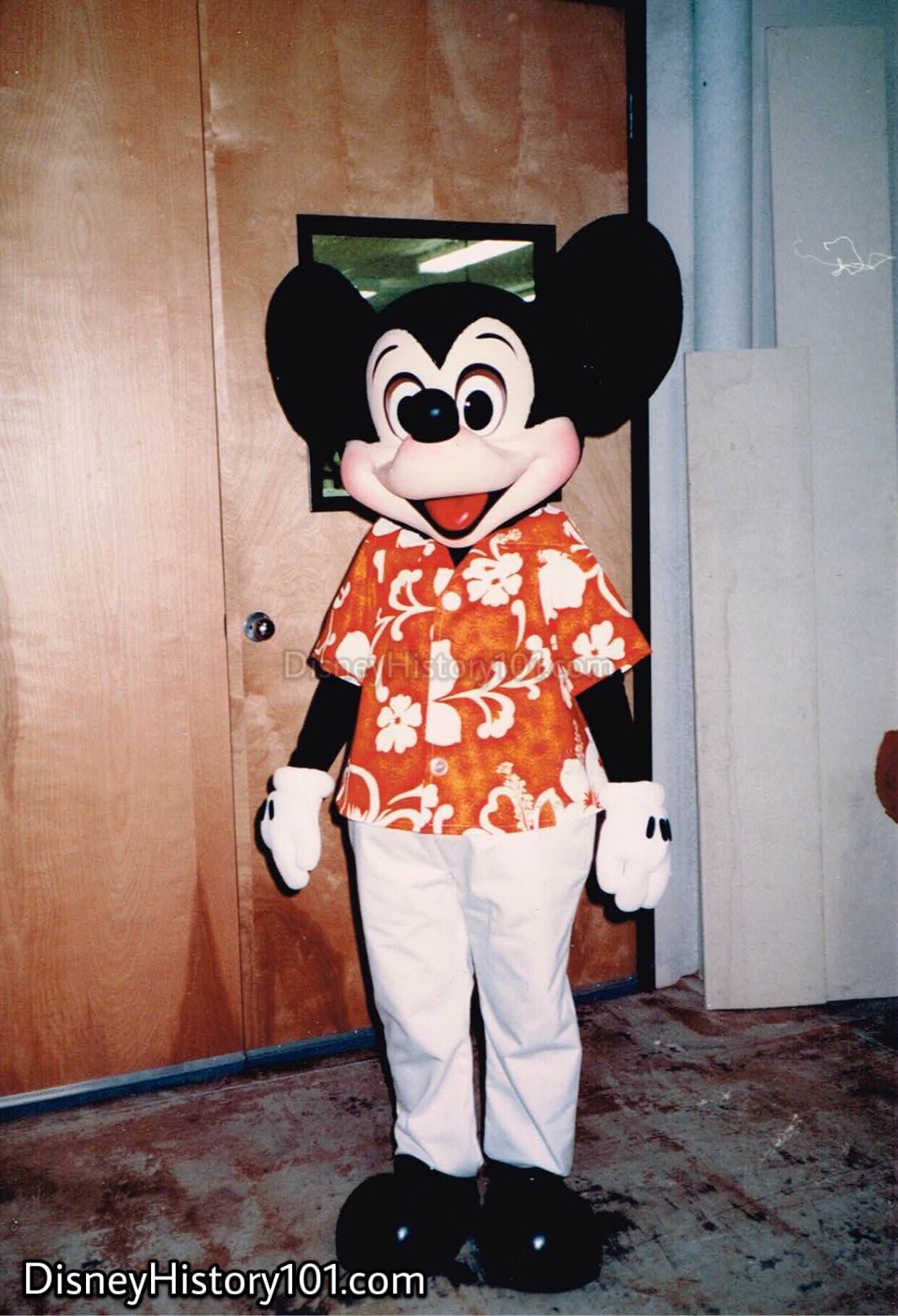
MICKEY MOUSE
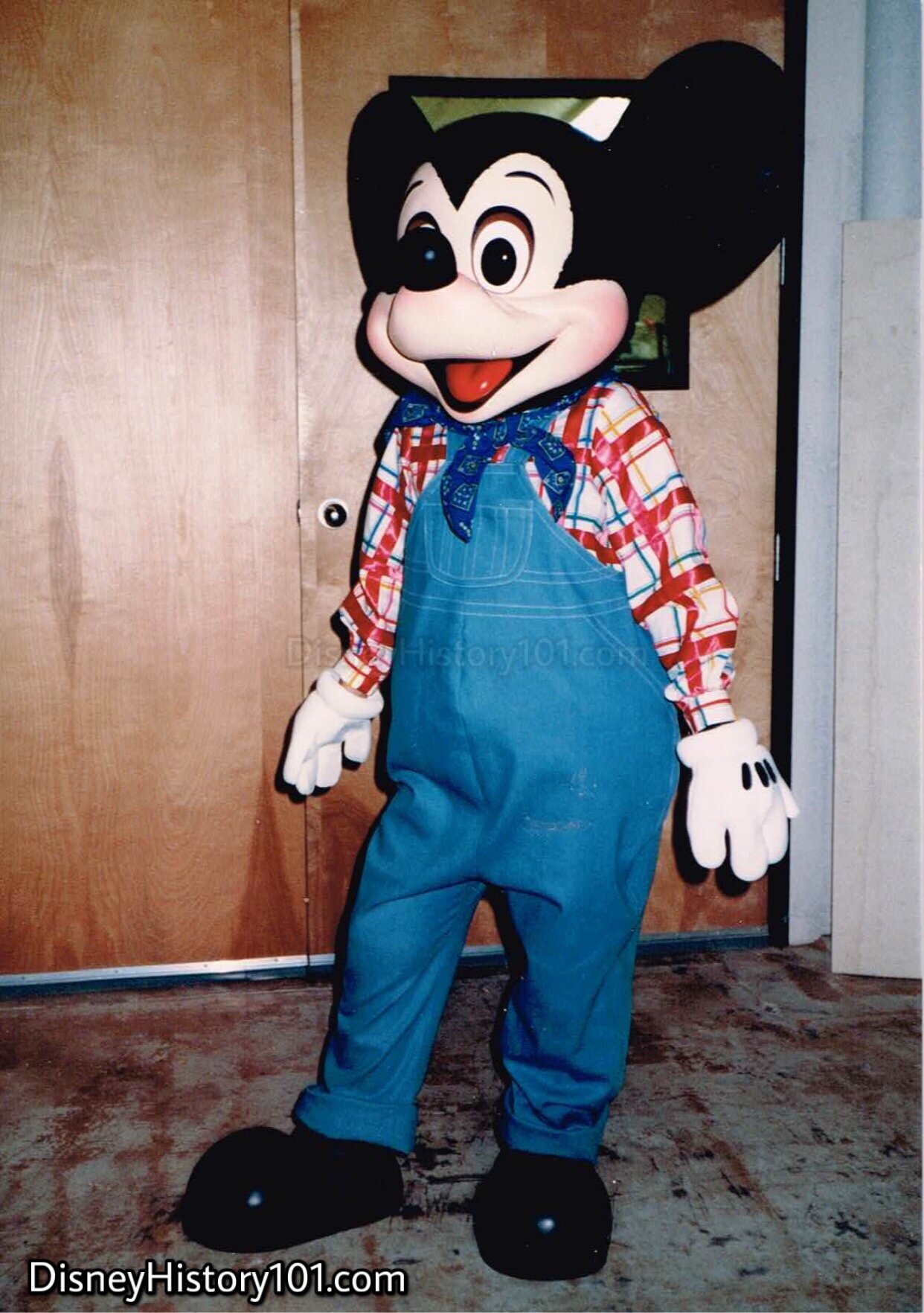
"Hoedown" MICKEY MOUSE of the State Fair
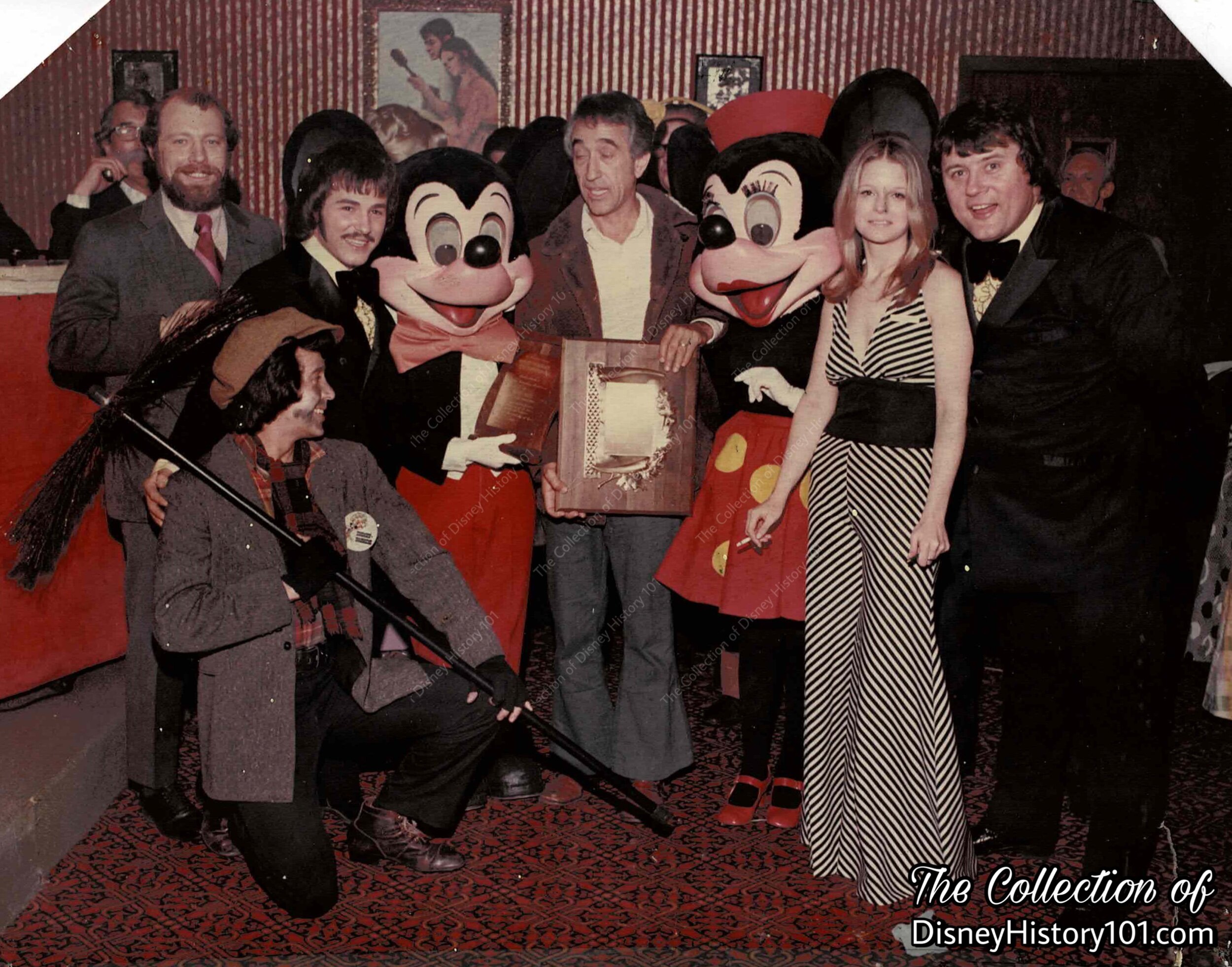
Comedian Pat Paulson visited Disneyland. His daughter Terri recounts - The family, which had once been near eviction, suddenly had enough money for their own home, private schools and a decorator. Terri remembers being wildly excited when such a huge crowd gathered to see her father at Disneyland that they had to bring him in by helicopter. While there, they were greeted by Mickey Mouse and Minnie Mouse.
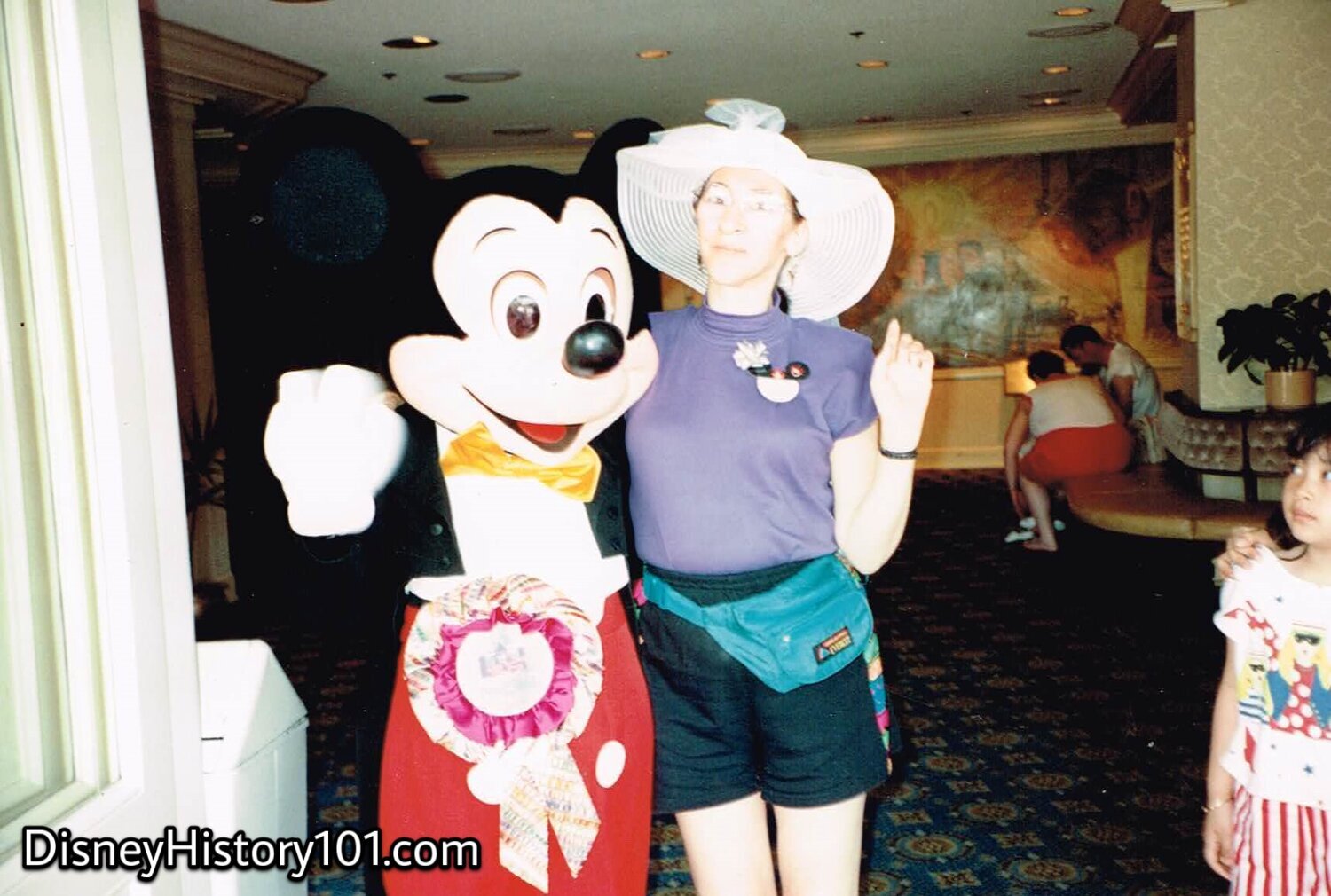
MICKEY MOUSE
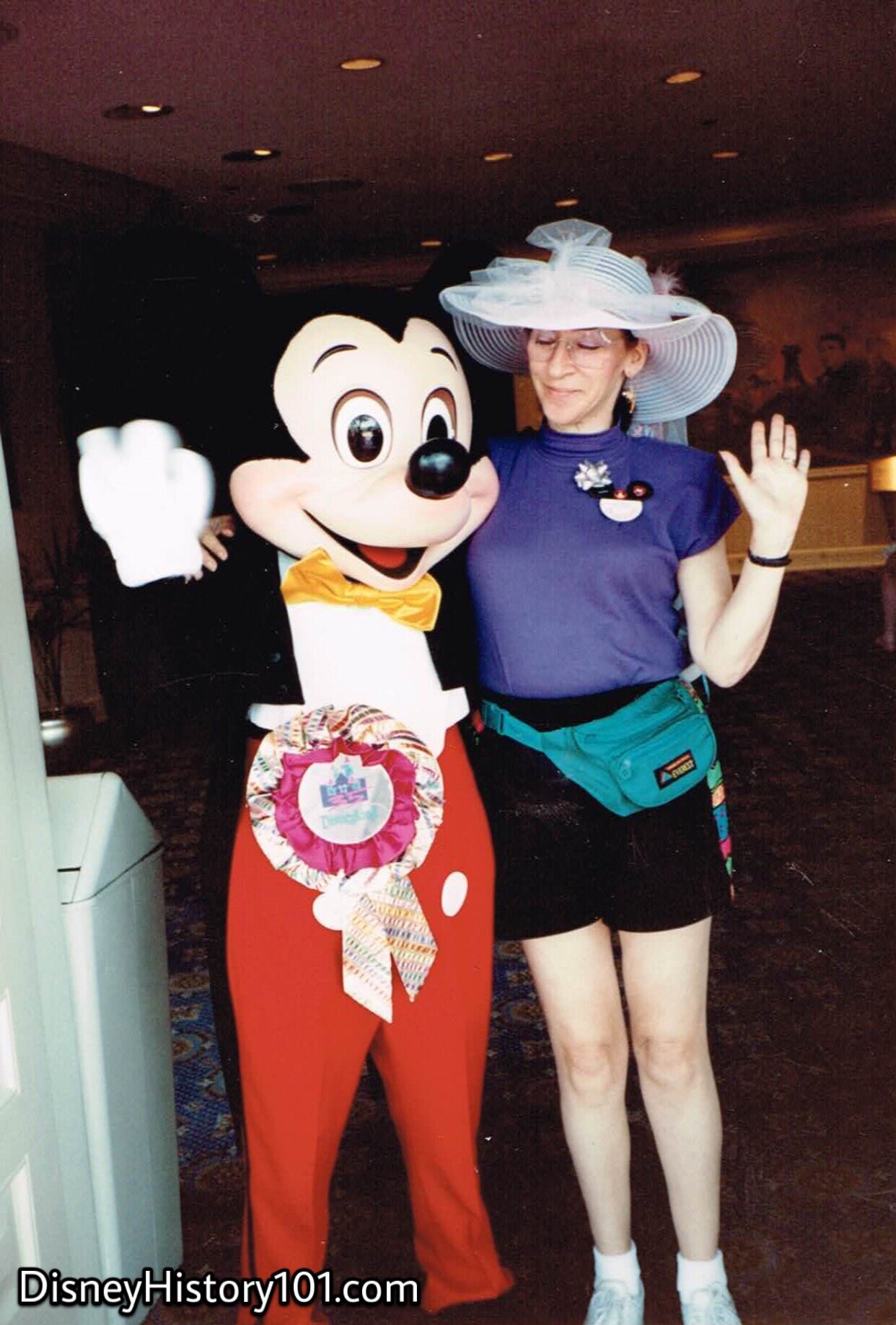
MICKEY MOUSE
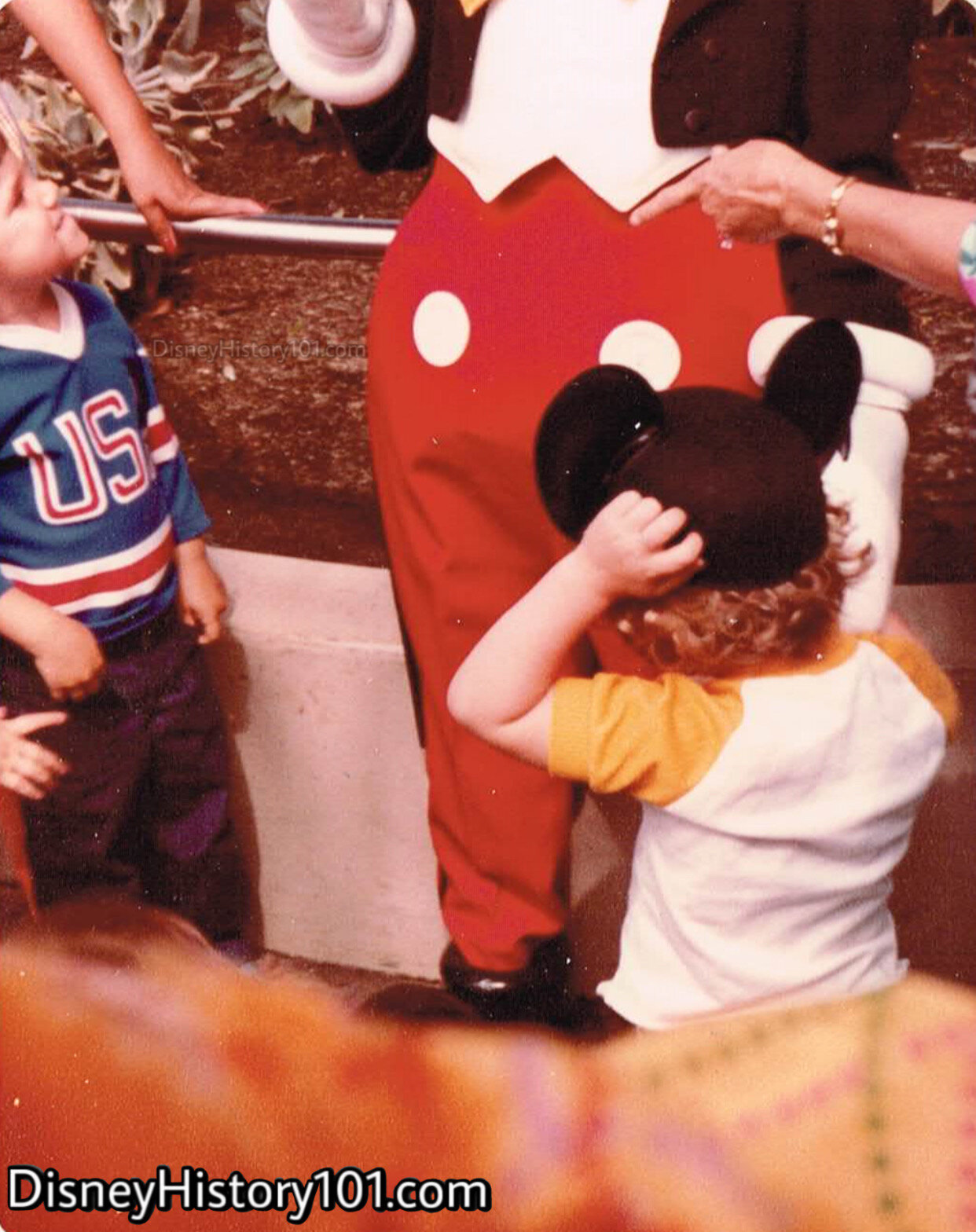
MICKEY MOUSE, c. 1981-1982
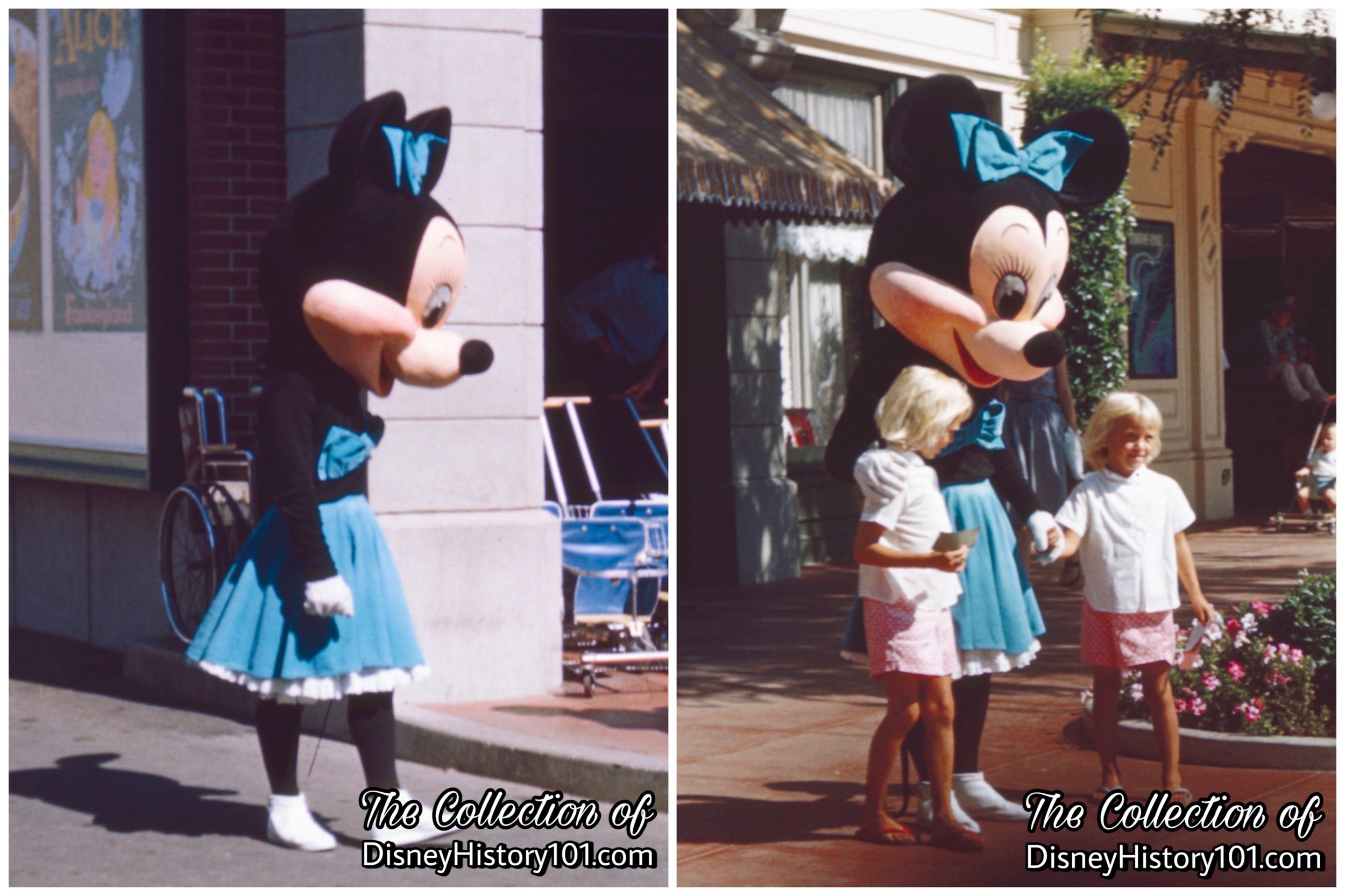

MINNIE MOUSE (2nd incarnation), (c. 1959 - 1961)
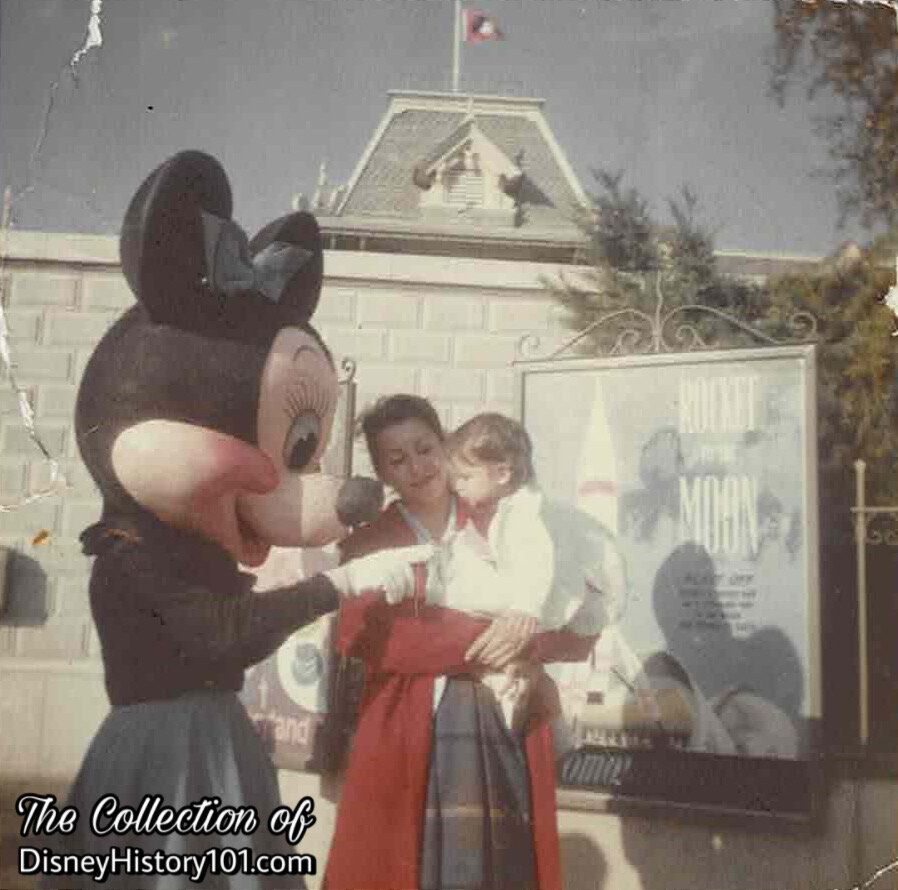
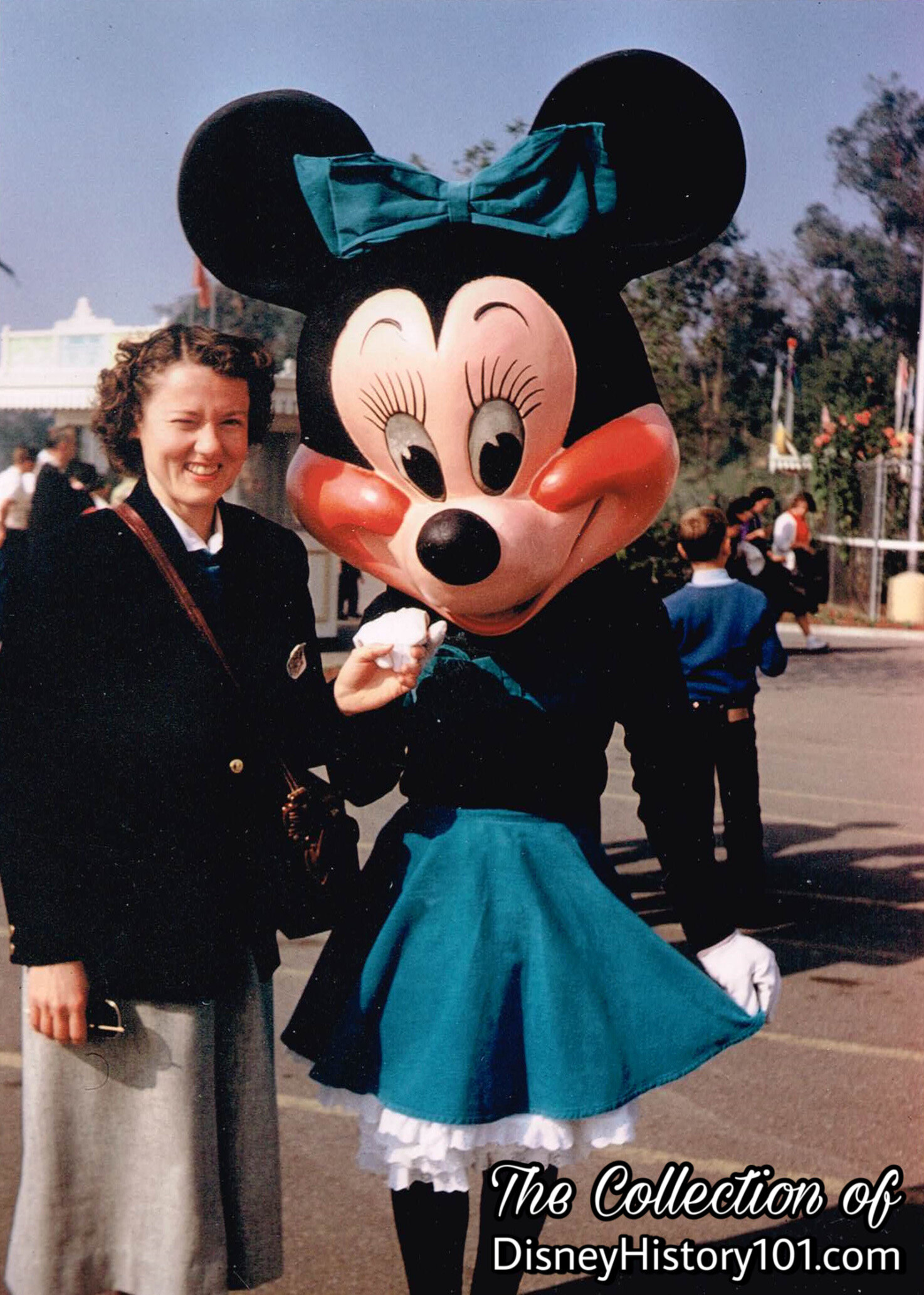
Minnie Mouse (2nd incarnation), (November, 1960)
Minnie Mouse and guest Betty B.
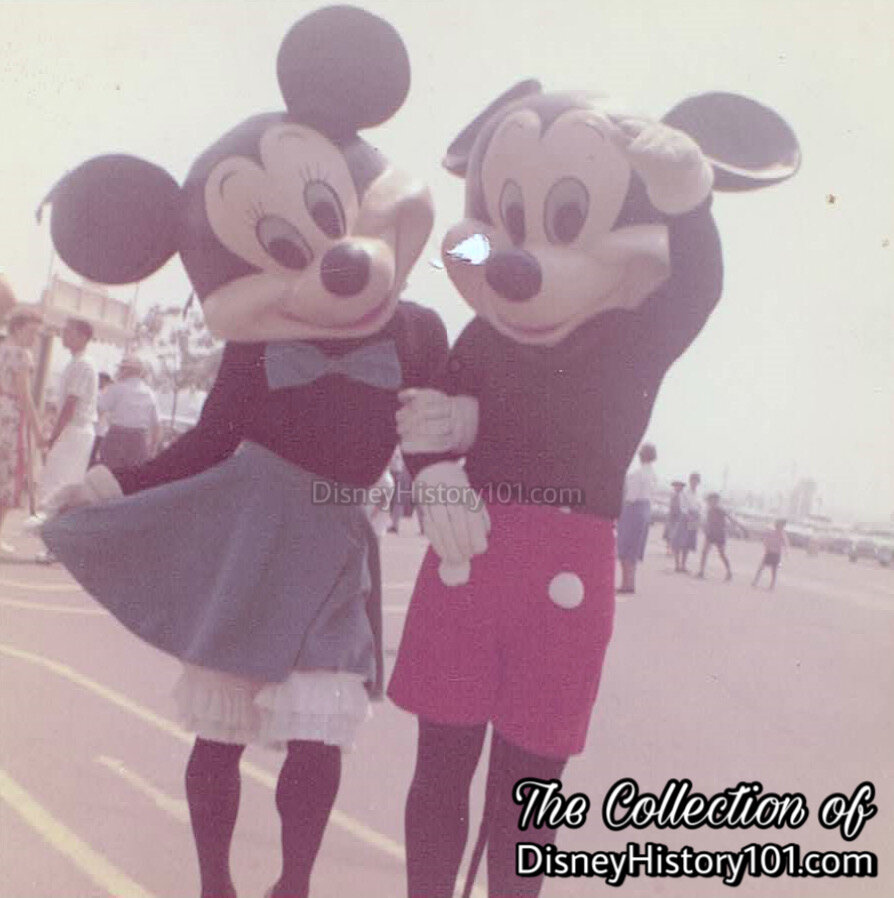
An animated Mickey Mouse and Minnie Mouse.
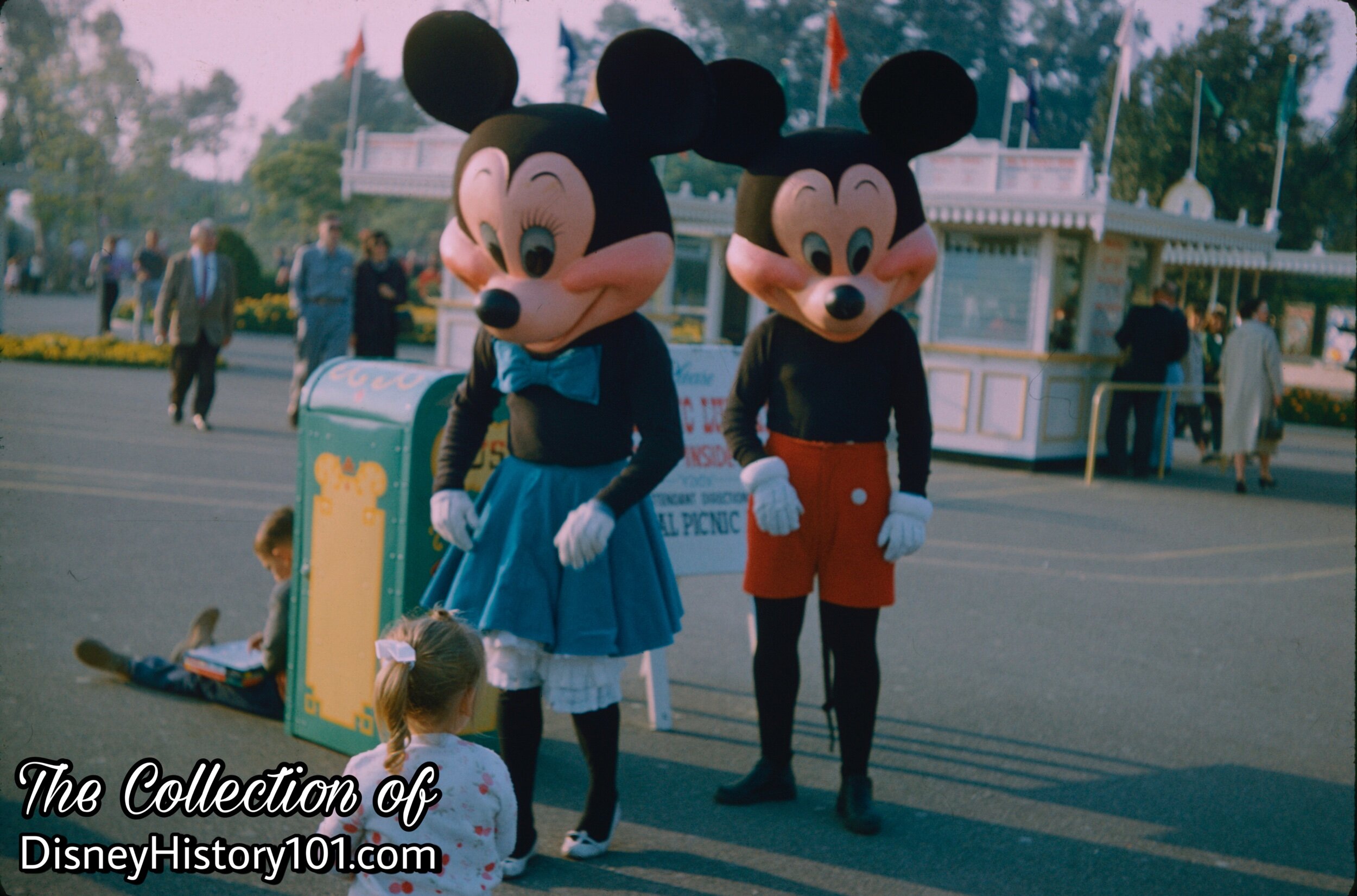
MINNIE MOUSE and Mickey Mouse (2nd incarnation), (April, 1960)
These second incarnations of Mickey and Minnie appeared In 1959 (their predecessors appeared in Disney Ice Capade shows). But now, Mickey and Minnie would greet visitors at Disneyland’s entrance!
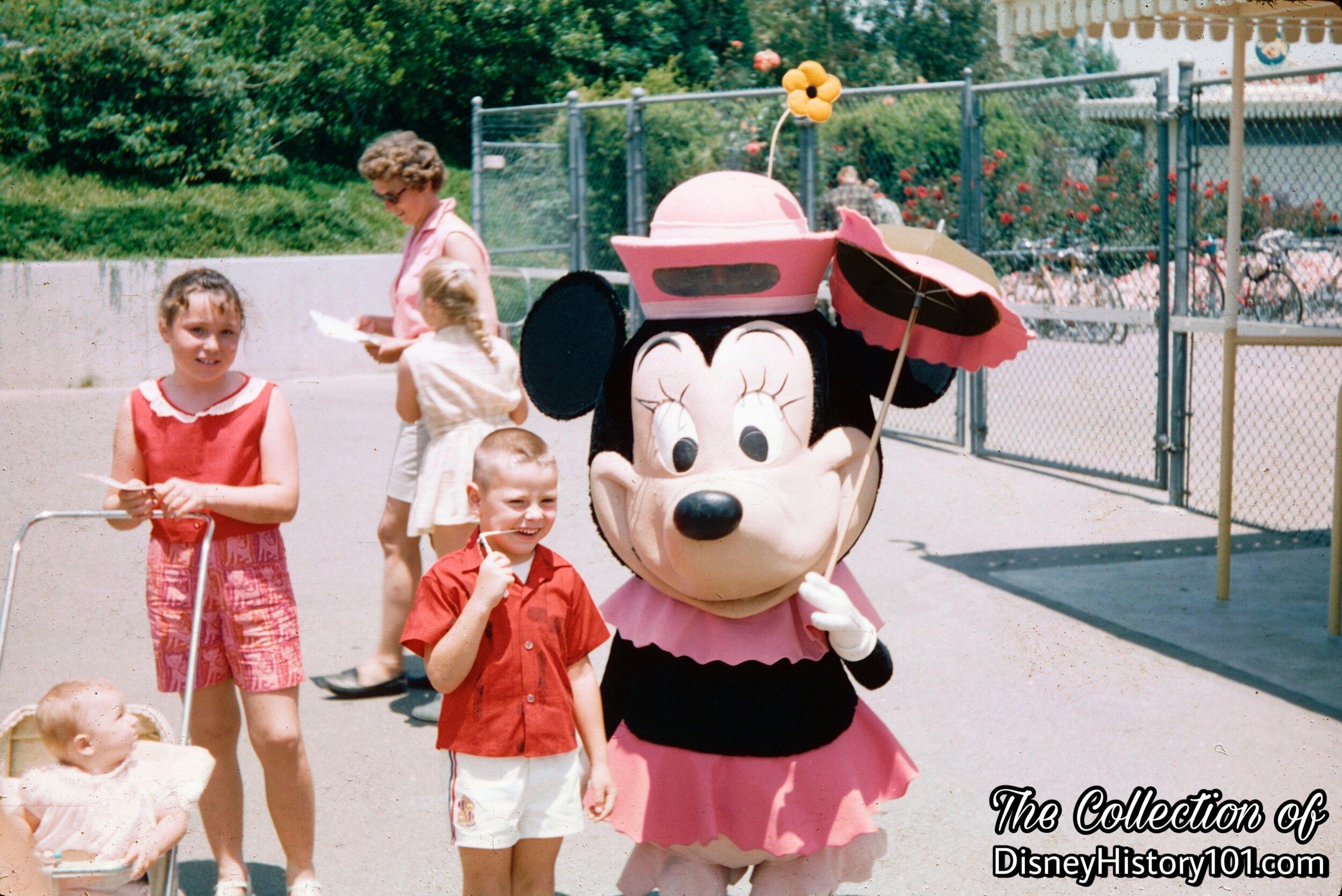
MINNIE MOUSE (3rd incarnation), (1962)
This third incarnation of Minnie Mouse appeared to greet customers at Disneyland’s entrance. She was redesigned at Walt Disney Studios by character designer and animator Bill Justice, who had been commissioned by Walt Disney for this important job!
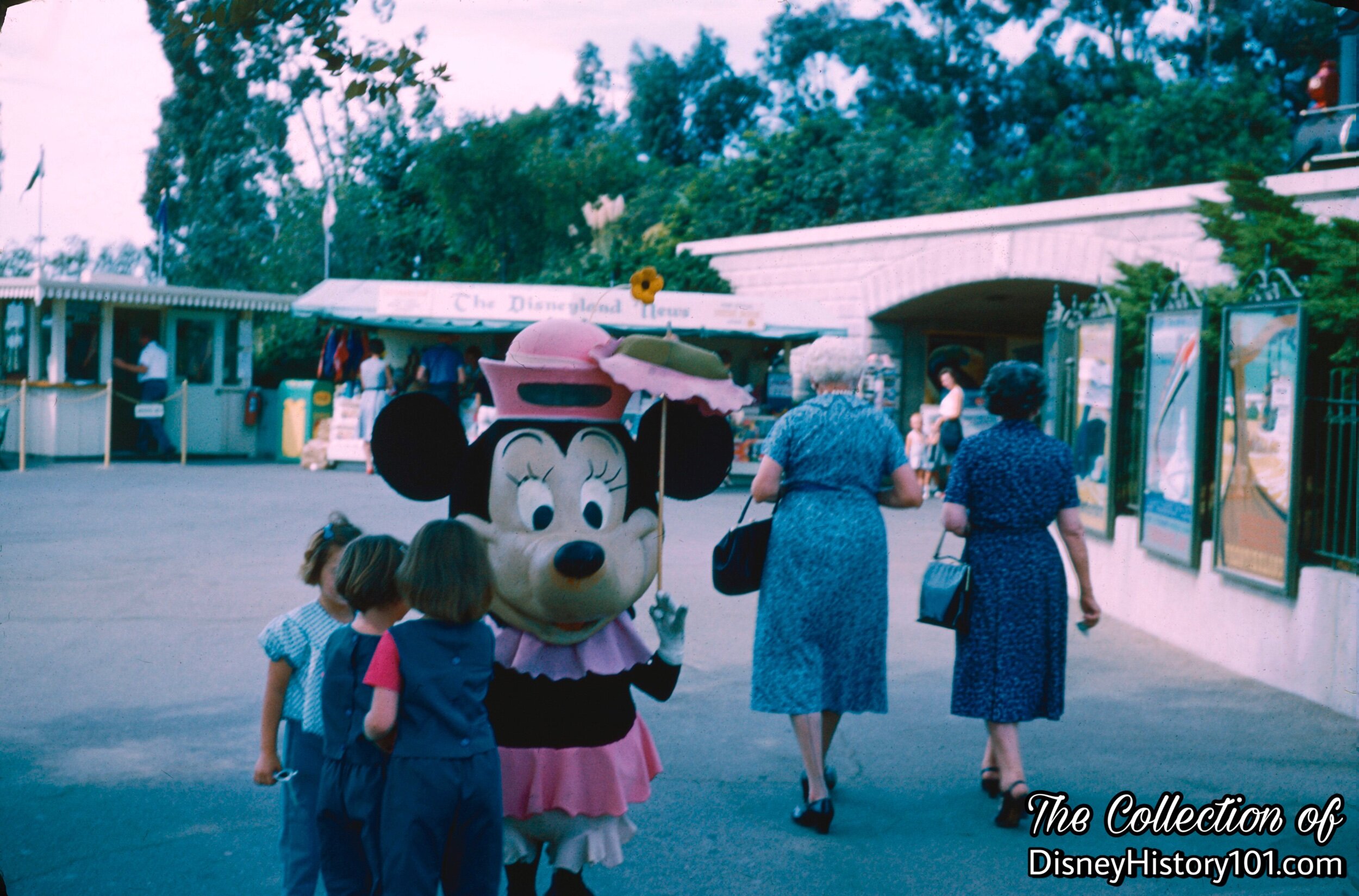
MINNIE MOUSE (3rd incarnation), (October, 1961)
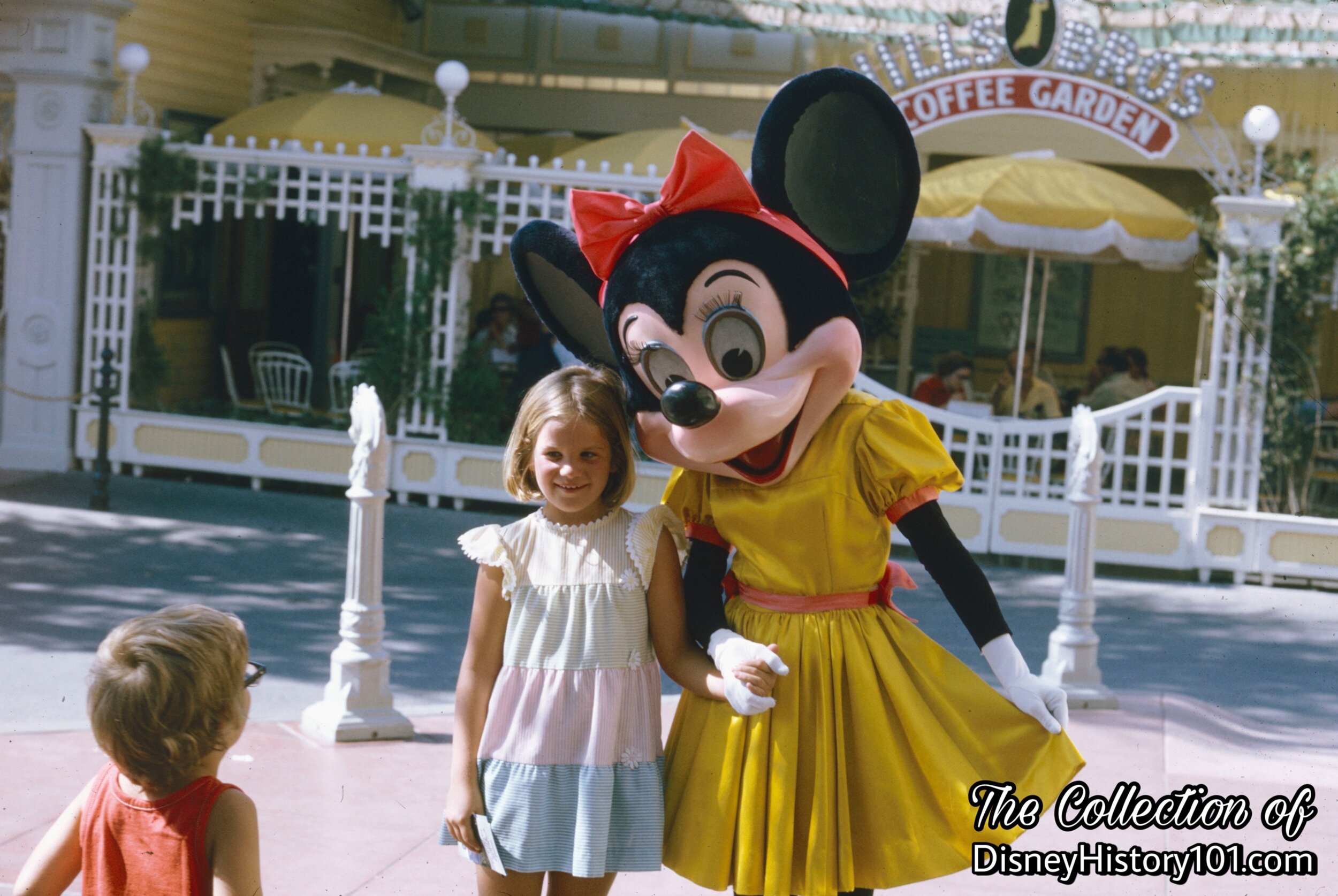
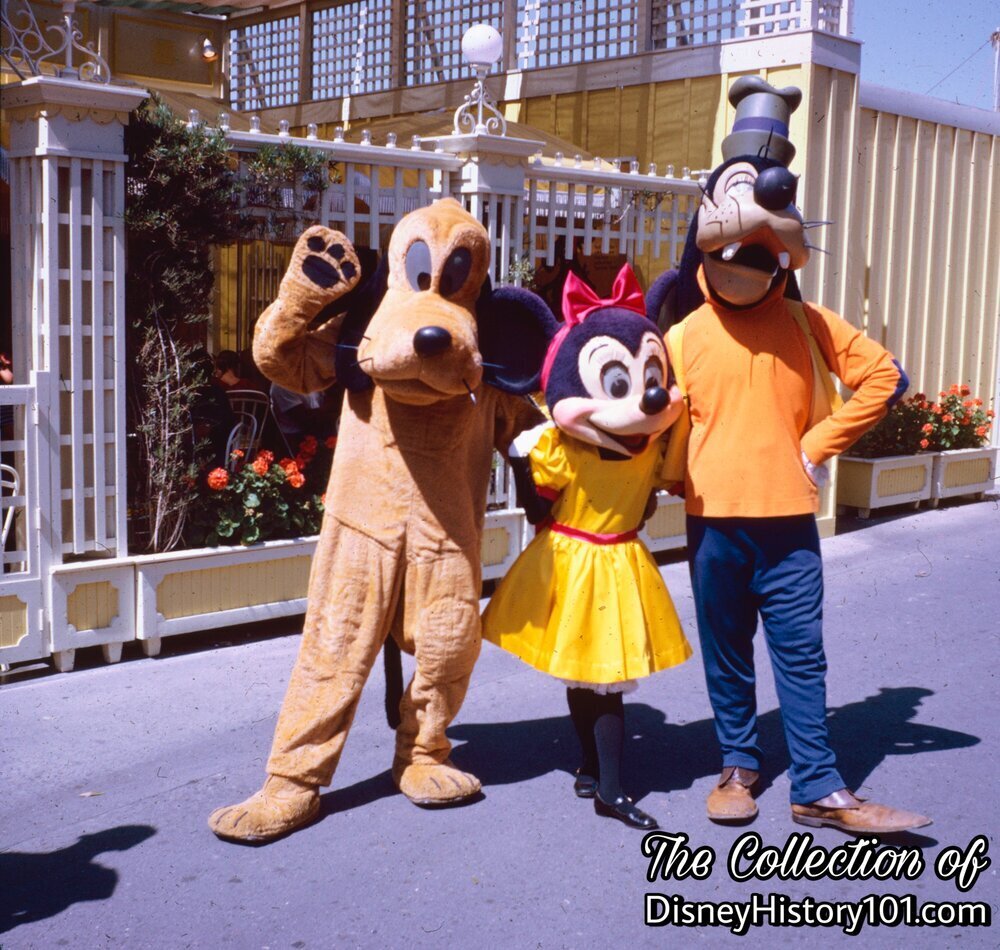
Standard Characters Goofy, Pluto, and Minnie Mouse.
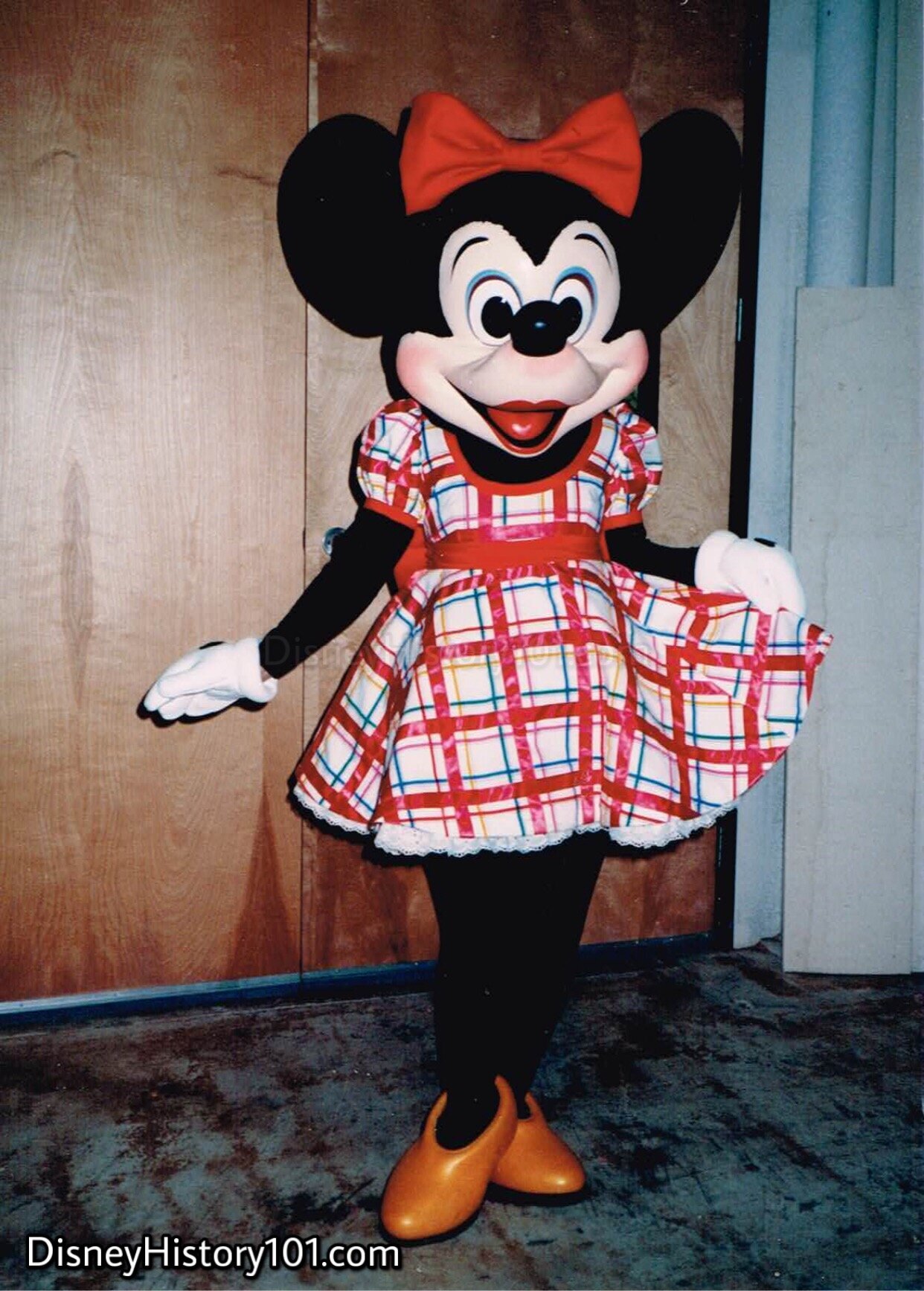
MINNIE MOUSE
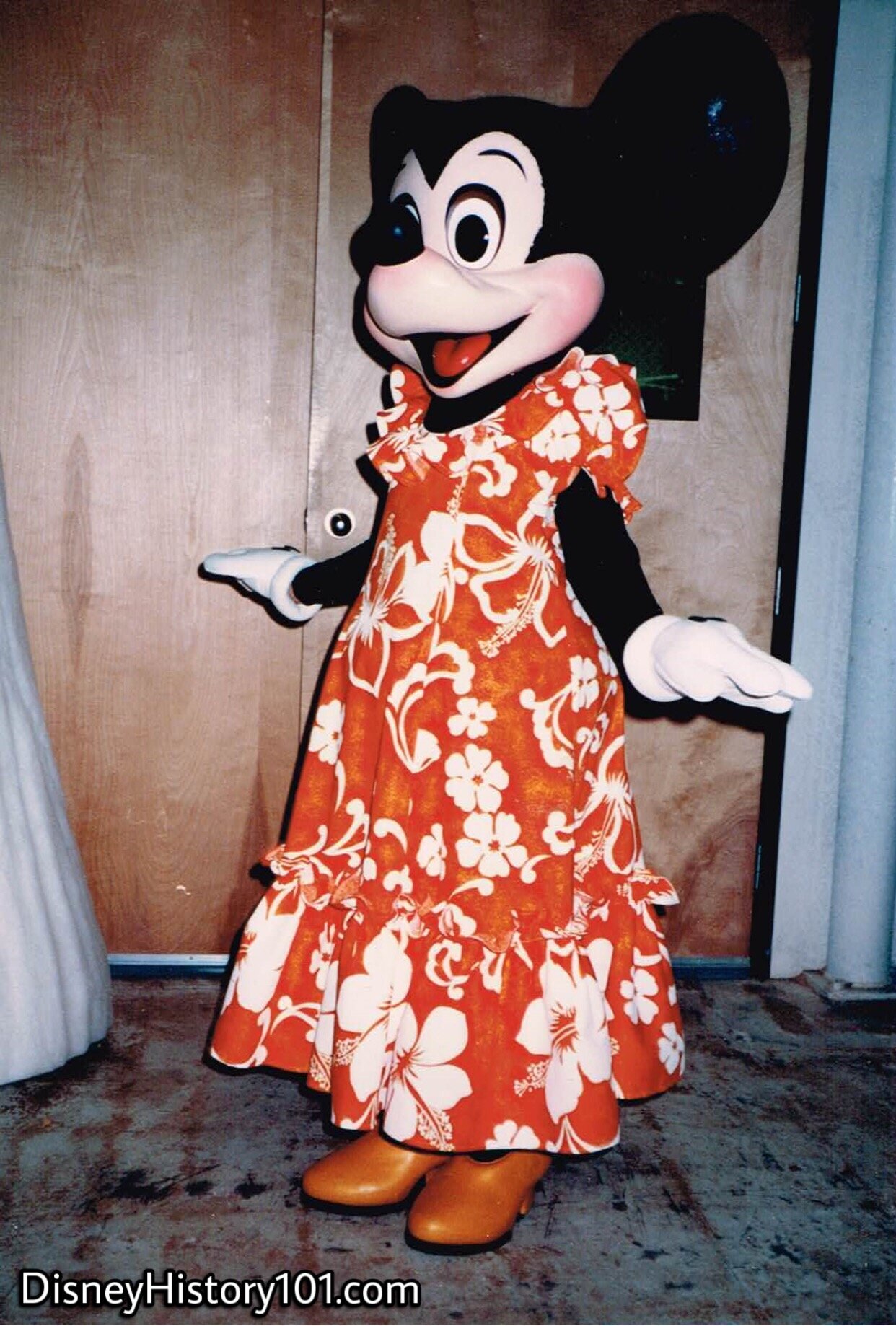
MINNIE MOUSE
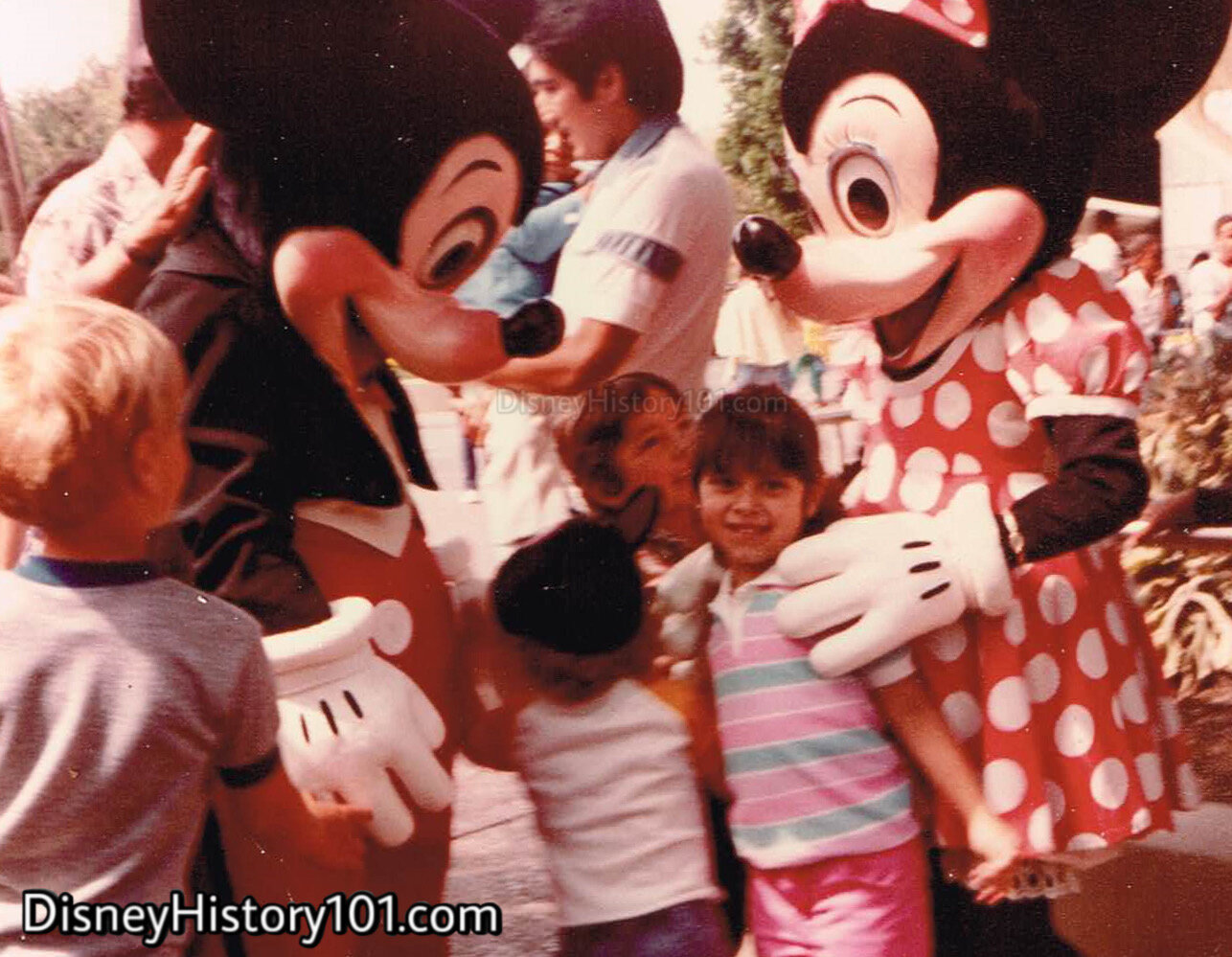
MICKEY MOUSE and MINNIE MOUSE, (c. 1981-1982)
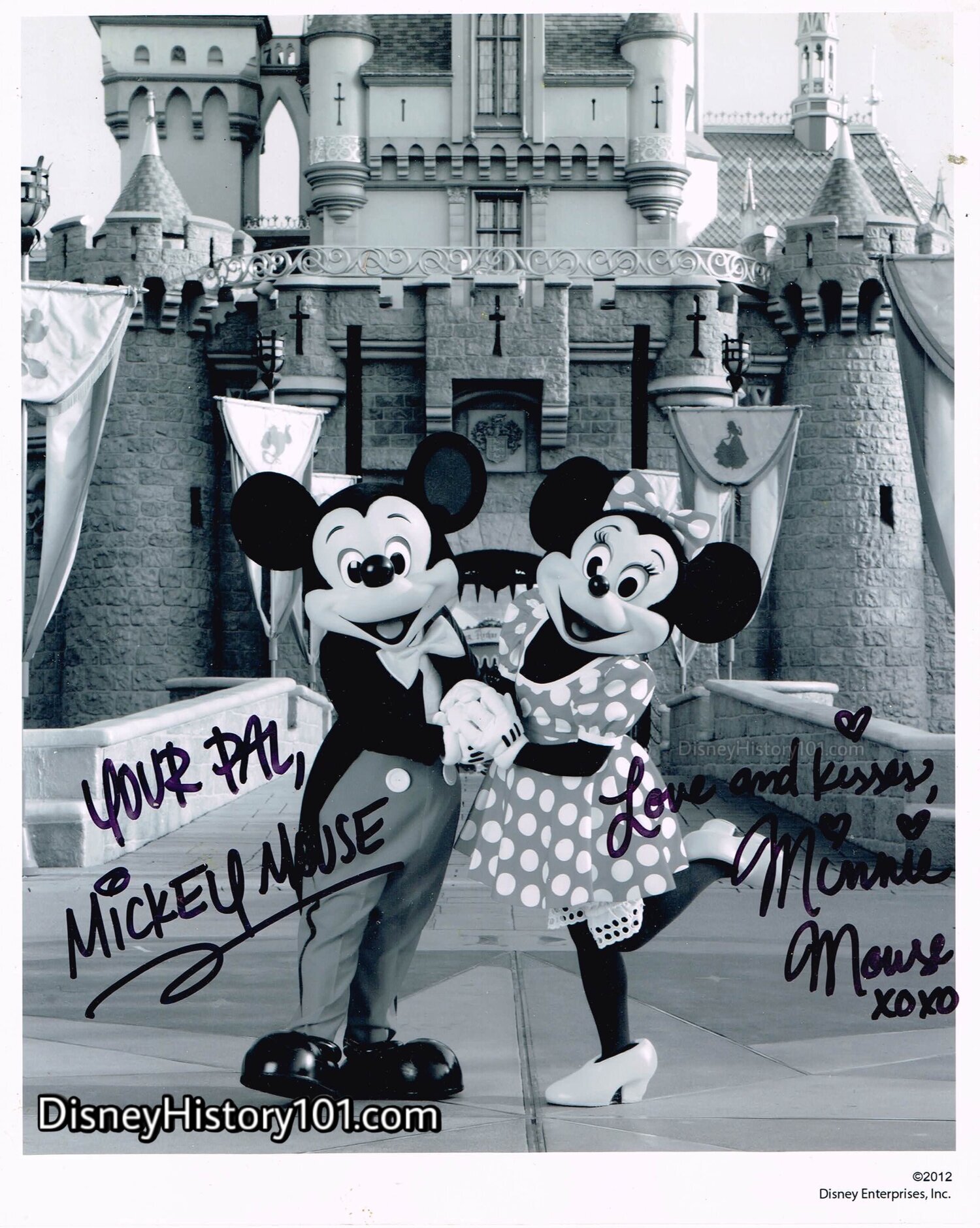
A photograph featuring fantastic animations of both MICKEY MOUSE and MINNIE MOUSE (Standard Costumed Characters) while their integrity & personalities have been incorporated into their signatures.
Mickey Mouse and Minnie Mouse have been known to sign Disney dollars, autograph books (including those from other Theme Parks), Disney merchandise, and even merchandise from other theme parks (away from the logo whenever possible). Minnie’s “I”s are always dotted with hearts and her signature is always accompanied by hugs and kisses (xoxo).
As a sidelight, there are some materials or surfaces that Mickey Mouse and Minnie Mouse would never sign. It is important that Guests understand that these include (but are not limited to) flags, currency, Non-Disney logos, corporate symbols or promotional materials, skin, passports, licenses, and birth certificates, Newspapers, sales receipts, and obscene material or clothing.
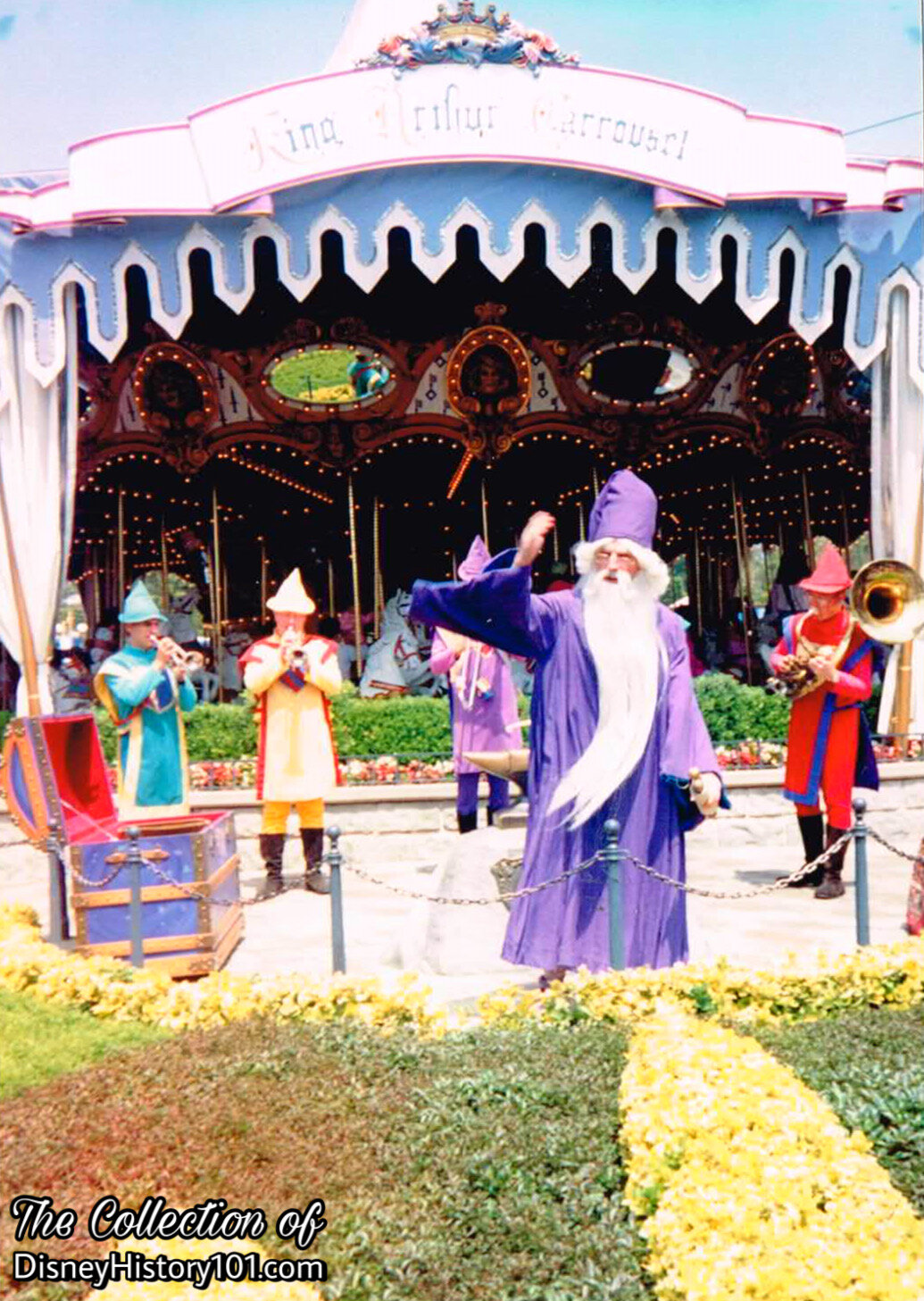
MERLIN, (1989)
When New Fantasyland opened, Merlin began to lead the Sword in the Stone Ceremonies!

MERLIN
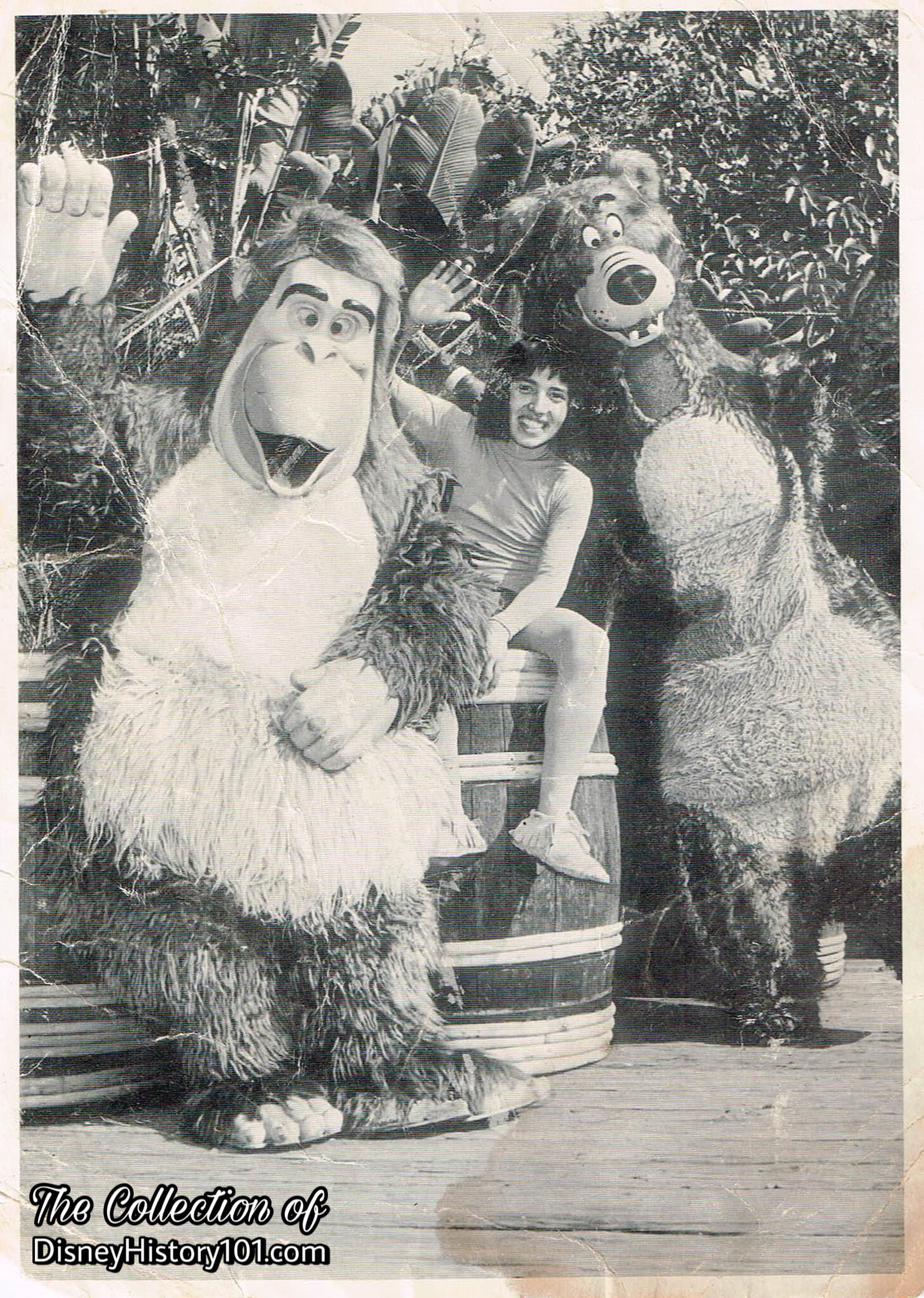
MOWGLI & Walt Disney's Jungle Book Cast
Guests could see two special parades at 12:30 and 4:45 p.m., beginning in Town Square and proceeding along Main Street U.S.A., past Matterhorn Mountain to ‘its a small world’ in Fantasyland. Mowgli, Baloo, and King Louie also posed for pictures during “Jungle Book Days” on February 6 and 7, 1971.
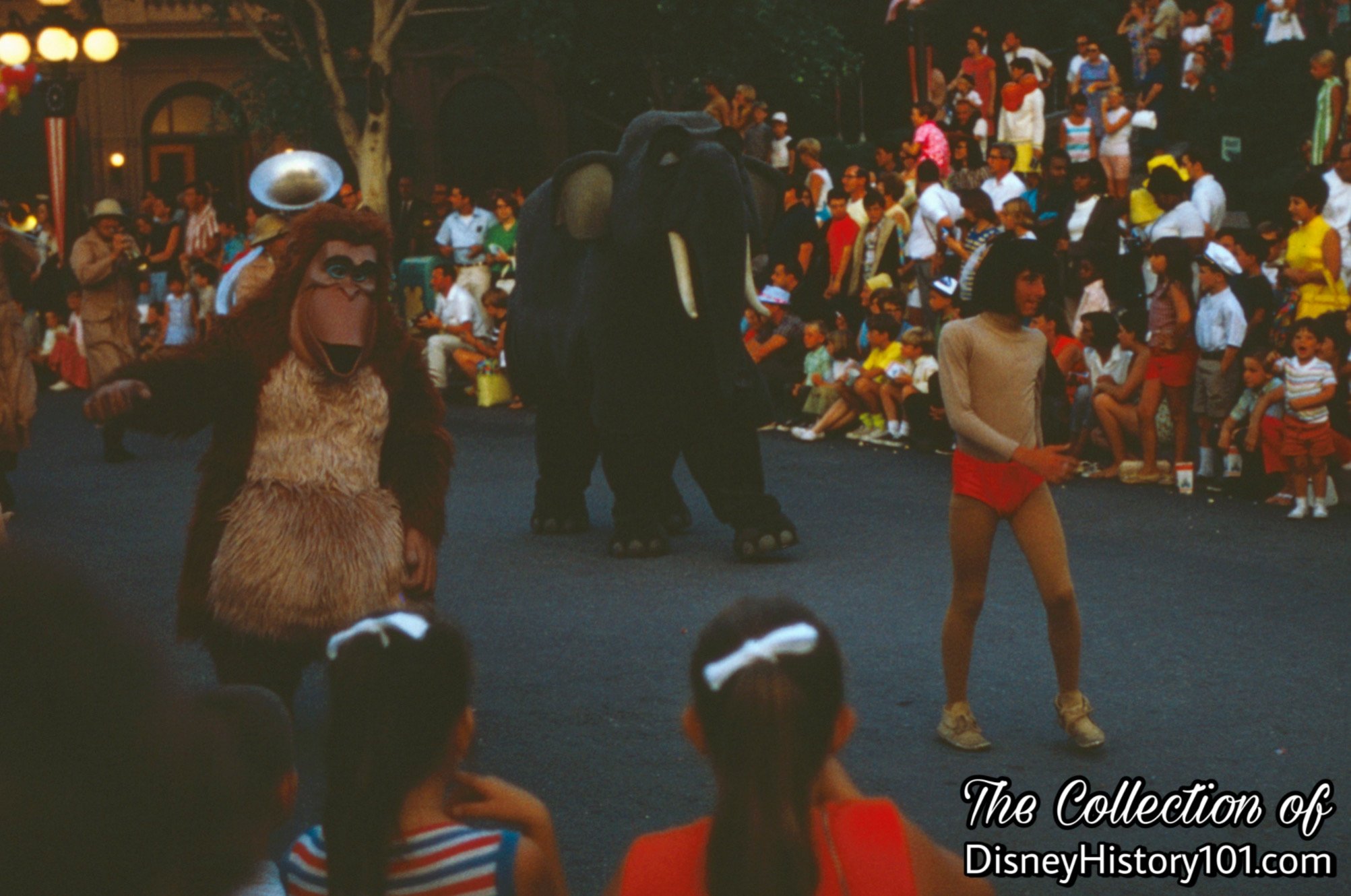
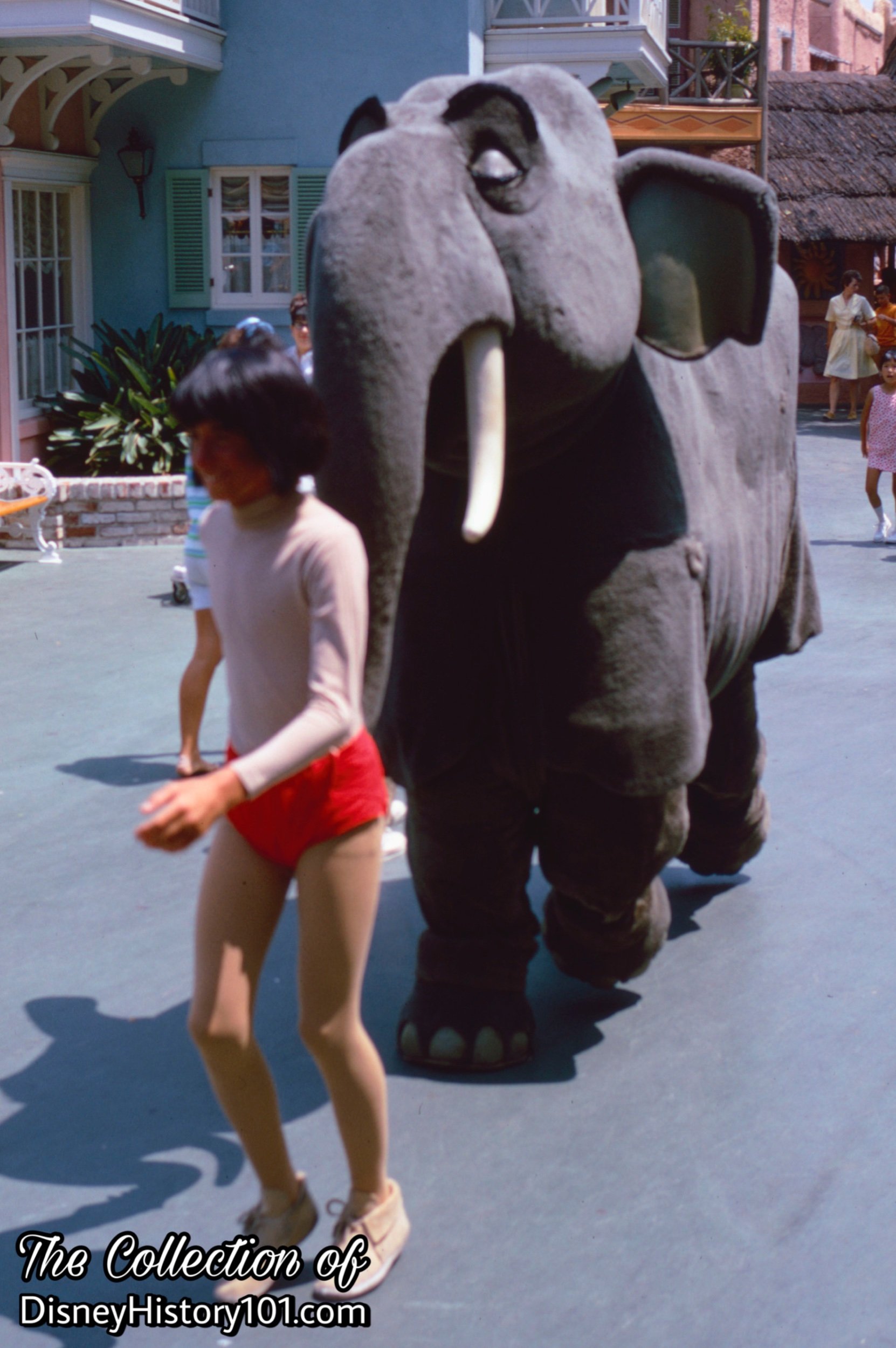
A Jungle Book Parade starring Mowgli and Col. Hathi, (1968)
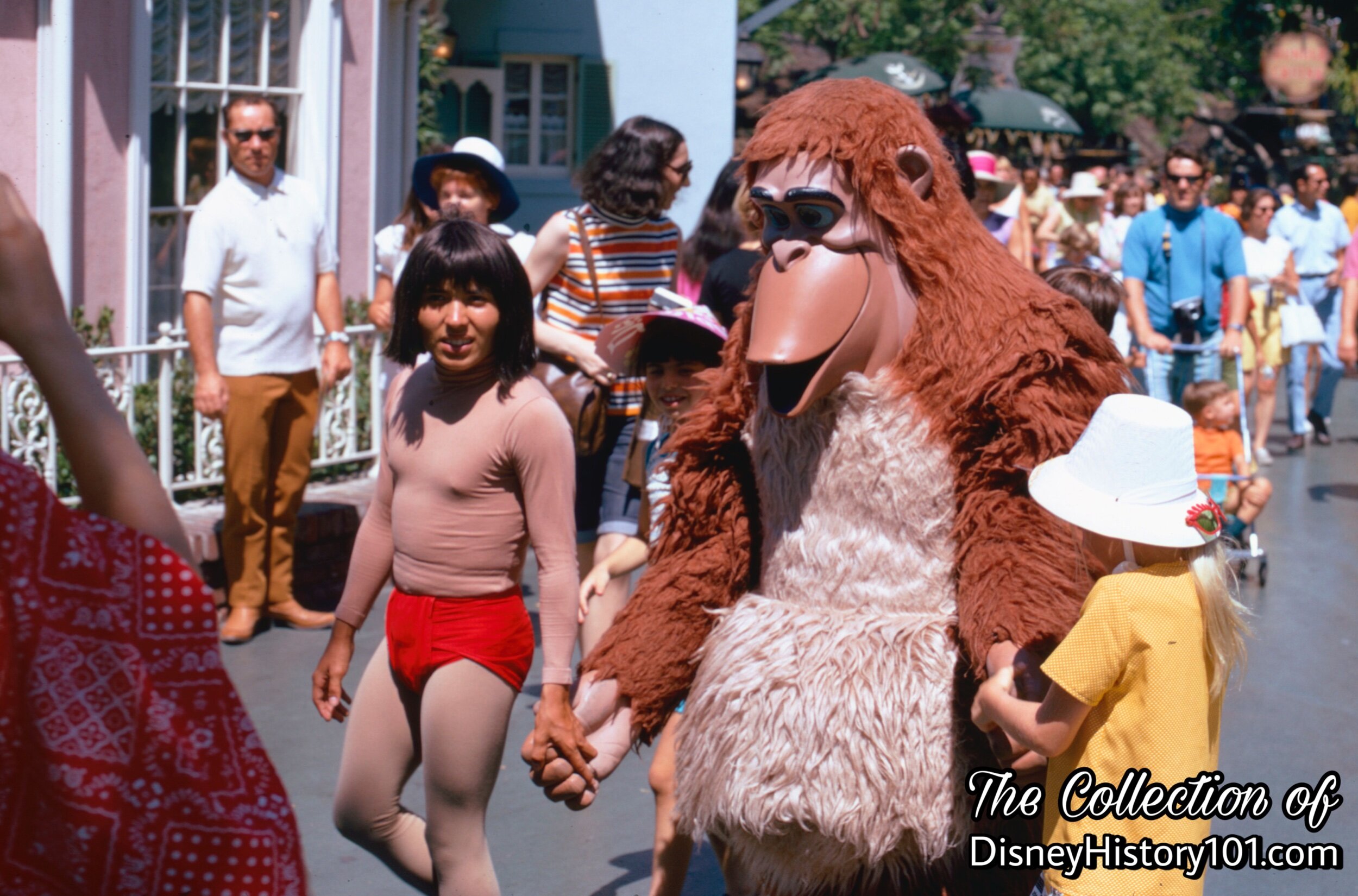

Nemo -
![•Oliver - The namesake star of the box-office record setting Oliver and Company (which grossed $53.3 million). [see The Walt Disney Company 2nd Quarter Report] •One Man Band - Performed (c.1986) around Frontierland. •Organ Grinder & Monke](https://images.squarespace-cdn.com/content/v1/5b3d7f804eddec6e826be0c9/1587688591955-W3DUOLH33UWZ7T5BE1O1/IMG_8236.jpeg)
•Oliver - The namesake star of the box-office record setting Oliver and Company (which grossed $53.3 million). [see The Walt Disney Company 2nd Quarter Report]
•One Man Band - Performed (c.1986) around Frontierland.
•Organ Grinder & Monkey - “55er” Marion Schawacha remembered “There used to be an organ grinder and he had a monkey named Josie. All the little kids would crowd around and throw him pennies, and Josie would jump around picking them up.”
•Oswald the Lucky Rabbit -


•Pearly Band -
•Penguins - Richard and Robert recalled: “We were demonstrating the song "Jolly Holiday" at a story session, and told Walt that the next verse would be sung "barbershop quartet-style," by a quartet of waiters. "You know," Walt said, "waiters have always reminded me of penguins. Why don't we have penguins as the waiters? We'll animate the penguins— in fact we'll animate everything except the principal characters!" Out of those inspired comments came "Jolly Holiday, one of the most imaginative musical sequences in movie history.”
•Peter Pan - Peter Pan made his theatrical debut in Walt Disney’s Peter Pan on February 5, 1953. Soon, the Mickey Mouse Club Circus premiered at Disneyland with an aerial ballet featuring 24 Mouseketeers (like Dennis Day and Darlene Gillespie) costumed as Tinker Bell and Peter Pan.
Peter Pan is a Disney Face Character who can talk, communicate with Guests, and create magical Disney experiences for them. Peter Pan was part of the Pre-game “Walt Disney and Disneyland Salute to the California Angels” at the new Angels Stadium on Saturday, April 23rd, 1966! Both Peter Pan and Captain Hook (and occasionally Mr. Smee and Tick-Tock Crock) made regular appearances at the “Fantasyland Pirate Ship,” greeting guests as part of the Character Program, “throughout the Christmas Holidays” (daily between parades, from 9:00am to 11:45am). [“Disneyland Holiday Talent Master Schedule,” prepared for the period of December 16, 1967 through January 1, 1968] A number of friends were close to Peter Pan through the years including (possibly) Peggy Matthews Rose, (possibly) Kerry Mahoney, Jan Wright (c.1969), and Gail Berk (c.1970s).
During 1969, Peter Pan, Captain Hook and Mr. Smee engaged in a four-week tour of the United States (and the first tour to visit Hawaii).
•Pete - Pete first debuted in Alice's Tin Pony (released 1925) and was later known as Peg Leg Pete and Black Pete. He is older than Mickey. For a time, he ran the Toon Town Garage at The Magic Kingdom.
•Peg Leg Pirate (“Peg Leg Pete”) -
The Peg Leg Pirate was also referred to as “Peg Leg Pete” in some contemporaneous Disneyland promotional material. A “Five Minute Fairytale” of the Peg Leg Pirate could best be summed up this way. The iconic Fantasyland Cast Member was portrayed by a true life Captain - Guy Exon! “Captain Guy Exon’s background has prepared him well for the role he plays here. Guy was born and raised in the ‘Wild West’ town of Pojaque, New Mexico, travelled to the Aleutians, Africa and Europe as a paratrooper in World War II, and was a prisoner of war in Germany. He travelled extensively in South American countries, where he became known as the first one-legged man to travel over the Pan-American Highway, and was a beachcomber in Hawaii after trying the academic road at SMU in Texas. When Guy returned to the United States, he spent a year-and-one-half in an Army Hospital where he became interested in handicapped people. After leaving the hospital he spent some time working with the Good Will Industries as Public Relations Manager. At the present time Guy’s activities include : participation in church groups, fishing and selling Chicken of the Sea Tuna”, according to The Disneylander, published June of 1958. During his era, the Peg Leg Pirate was aboard for the Chicken of the Sea ceremony (on December 23, 1960), and subsequently guarded the way to the Pirate’s Grog. He continued to welcome special guests to Disneyland, all the while proving that “pirates were real in the land of Fantasy”!
•Perla Mouse - Perla the seamstress mouse friend of Cinderella made her theatrical debut in Walt Disney’s Cinderella on February 15, 1950.
•Pinocchio - Pinocchio made his film debut on February 17, 1940, subsequently winning an Academy Award for the Best Original Score and Best Song. The film became the inspiration for several early attraction concepts that ultimately became Pinocchio’s Daring Journey at Disneyland.
After some sort of hiatus, the Disney Character made a return during the winter if 1962. According to the Talent Schedule “All of our regular Characters, plus a return visit by the 3 Pigs and Wolf and Pinocchio, J. Worthington Foulfellow and Gideon, will highlight this year's Holiday Season.”
One of the first individuals who worked so closely with Pinocchio at Disneyland was Alma Castle (wife of Paul Castle, “close friend of Mickey Mouse”). Alma and Pinocchio became acquainted during the Fall of 1964. Also during 1964, through a special business arrangement with Al Dobritch (of the Dobritch International Circus), Pinocchio and his feature film co-stars appeared in traveling circus acts.
Pinocchio was part of the Pre-game “Walt Disney and Disneyland Salute to the California Angels” at the new Angels Stadium on Saturday, April 23rd, 1966!
When he wasn’t feeding Cleo or Figaro, Pinocchio made regular appearances at the “Small World” Area, greeting guests as part of the Character Program, “throughout the Christmas Holidays” (daily between parades, from 9:00am to 11:45am). [“Disneyland Holiday Talent Master Schedule,” prepared for the period of December 16, 1967 through January 1, 1968] Steve Berk became acquainted with Pinocchio in 1969, after accompanying a friend on a job interview in the Entertainment Office.
•Pluto - Pluto (Mickey’s ever faithful companion) made his film debut unnamed and alongside a “double” bloodhound in “The Chain Gang” (first released during May of 1930, then September 5, 1930). Later in 1930 he appeared in The Picnic as Minnie's pet pooch, Rover. According to Mickey Mouse Club Magazine (December of 1956), Walt decided that Mickey should have a permanent pet, but that first, he should have a name. “Everybody in the Studio got to thinking. Names like Rover and Pal were dreamed up, but none seems to fit. On day Walt came in and said, ‘How about Pluto the Pup?’”
Soon, in the 1931 short The Moose Hunt, he became known as Mickey's dog Pluto (or "Pluto the Pup" as he is sometimes affectionately called).
Pluto was featured in a number of short films, and soon won a Tail-wagger’s Association Bronze Fire Hydrant for his acting ability. After a few more performances (and four Academy Award nominations), Pluto won an Academy Award for his role in the short film “Lend A Paw,” in 1941. Pluto went on to be featured in roles on television, including the Disneyland episode “The Story of Dogs” and a Mickey Mouse Club episode where an animator brought him to life. Although Pluto does not usually talk, he did speak on screen once in his career. In the 1931 short, The Moose Hunt, he uttered the two words, Kiss me!
By the time Disneyland opened in July of 1955, “the public began to recognize Pluto as a great pantomime artist,” (according to the “Mickey Mouse Club Magazine,” published December of 1956). When Pluto isn’t getting “good boy treats” or going for a walk, he can occasionally be found meeting and greeting Guests at Disneyland.
Like his Disney Character co-stars, Pluto appeared at quite a few other events held outside Disneyland, demonstrating “the ultimate in wild animal training” assisting Goofy in an act performed at the Canadian National Exposition’s “Matinee Fun Fest” (held August 24 - September 5, 1964). While at the New York World’s Fair, Mickey, Goofy, and Pluto appeared at Walt’s four shows in addition to other pavilions. For instance, they assisted in the ribbon cutting at the new “People-to-People Room” of the Federal Pavilion of the New York World’s Fair during the 1964 season.
Pluto was part of the Pre-game “Walt Disney and Disneyland Salute to the California Angels” at the new Angels Stadium on Saturday, April 23rd, 1966!
The dog duo of Pluto and Goofy again engaged on an “incredible journey” joining the “official Disneyland Tour Guide Lynn Taylor” for the Coca-Cola Tour, advertised for the summer of 1970. The trio visited locations like the south patio of the Brentwood Country Mart. In Hollywood, actors had stuntmen, and these multiple and simultaneous appearances of Pluto (outside of Disneyland) were similarly accomplished by way of “body doubles.” For instance, in 1964 Wardrobe assured that Pluto had at least “3 costume bodies” and “3 heads.”
As for Pluto’s routine appearances at Disneyland, he regularly greeted guests “throughout the Christmas Holidays” as part of the Character Program in Town Square (daily (9:00am to 11:45am) with both Mickey Mouse and Goofy. [“Disneyland Holiday Talent Master Schedule,” prepared for the period of December 16, 1967 through January 1, 1968]
A number of individuals were “close” to Mickey’s pal Pluto and “lend a paw” thru the years including Carlos Comanchu, whose experience was shared in Backstage Disneyland magazine (Vol.4, No. 4 ; December 1965) : “Pluto, tells of the pros and cons of being a dog. He said that one day a little girl came up and said, ‘Pluto, I love you. I really love you. And guess what? I have a dog, a St. Bernard. Would you like to have a date with her?’ Well, anyway, that is the way it is when you lead a dog's life!”
During the 1970s, Pluto appeared in Main Gate/Town Square.
By the 1980s, Pluto (reckoned a “standard Disney Character” had appeared in more than 105 films. By that time, he was known as “Disneyland’s official watchdog.” Pluto used to sign autographs with a heart, bone, or paw icons, but had desisted from doing so by 2007.
In the present, Mickey Mouse, Minnie Mouse, Donald Duck, Goofy, and Pluto are still considered the original "Fab Five" VIP Characters.
•Pocahontas - Disney’s Pocahontas debuted in Pocahontas (June 23, 1995).
By 2007, Pocahontas and Her Forest Friends was presented at Grandmother Willow's Grove in the Magic Kingdom (at Walt Disney World) - a theater that could seat approximately 400 guests. This live show was a quaint, dramatic presentation featuring a number of smaller, North American woodland animals, as well as characters Pocahontas, Grandmother Willow, Meek and Sprig, a young sapling who helped Pocahontas and & Grandmother Willow tell their story.
She also appears in “Mickey and the Magical Map” presented in the Fantasyland Theatre.
•Prince Ali (Aladdin) - Prince Ali is a Disney Face Character who can talk, communicate with Guests, and create magical Disney experiences for them.
•Prince Charming (Cinderella) -
•Prince John - Prince John (the evil Prince of Nottingham) had his film debut in Walt Disney’s Robin Hood on November 8, 1973.
•Princess Atta -
•Push the Tomorrowland Trash Can - A walking and talking trash can.
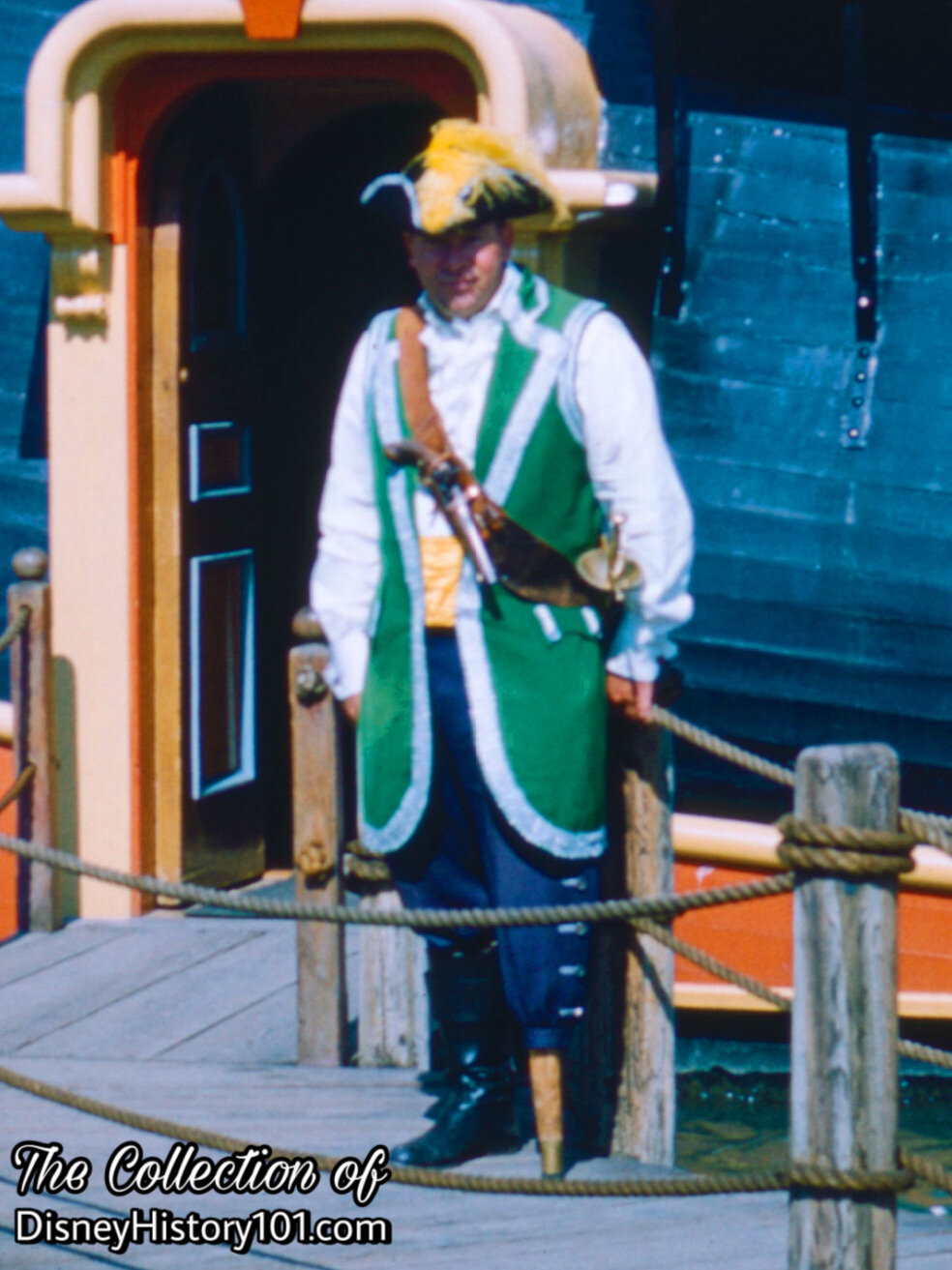
Peg Leg Pete (a.k.a. Peg Leg Pirate)
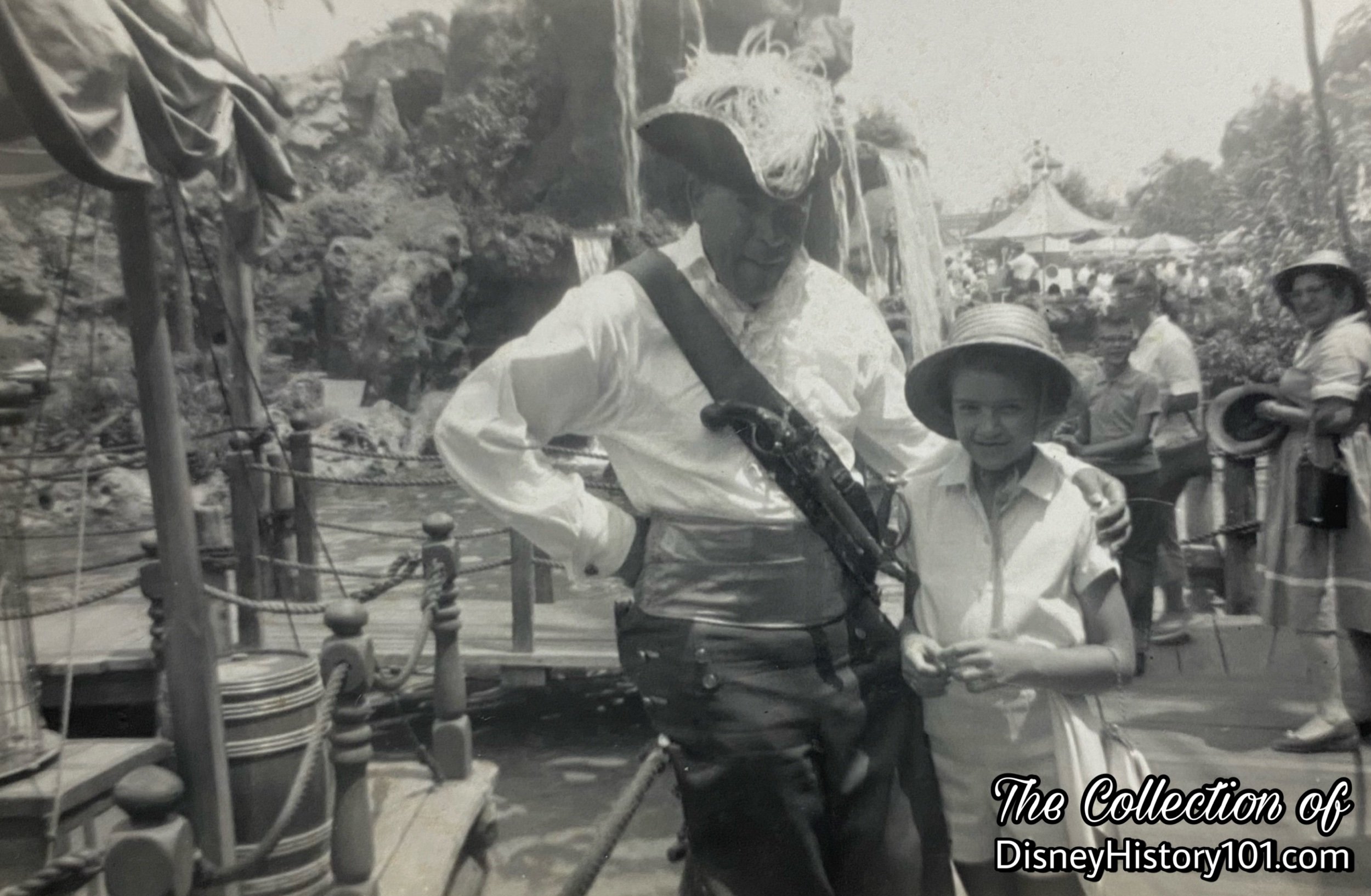
Peg Leg Pete (a.k.a. Peg Leg Pirate) extends courtesy toward a VIP.
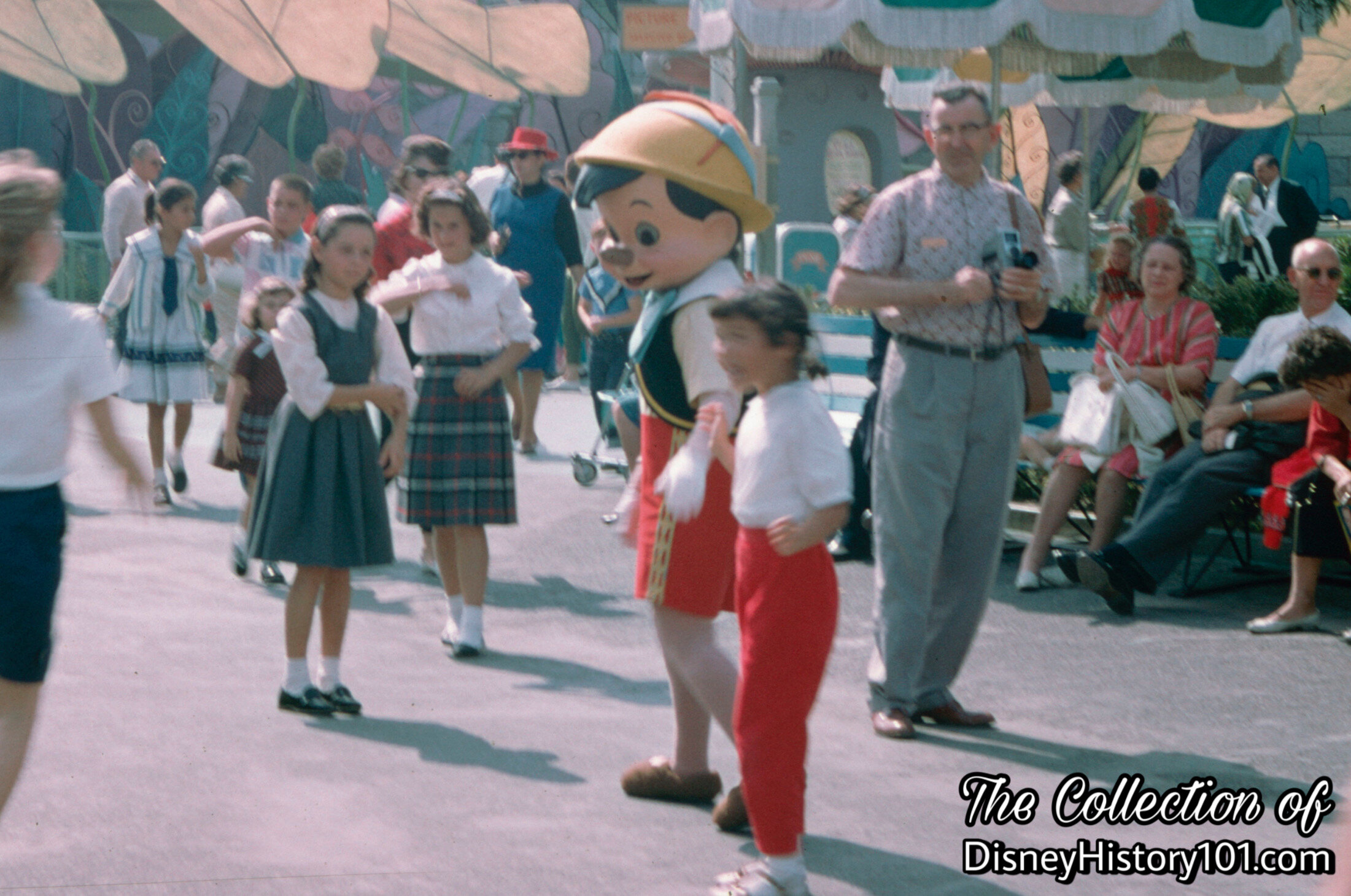
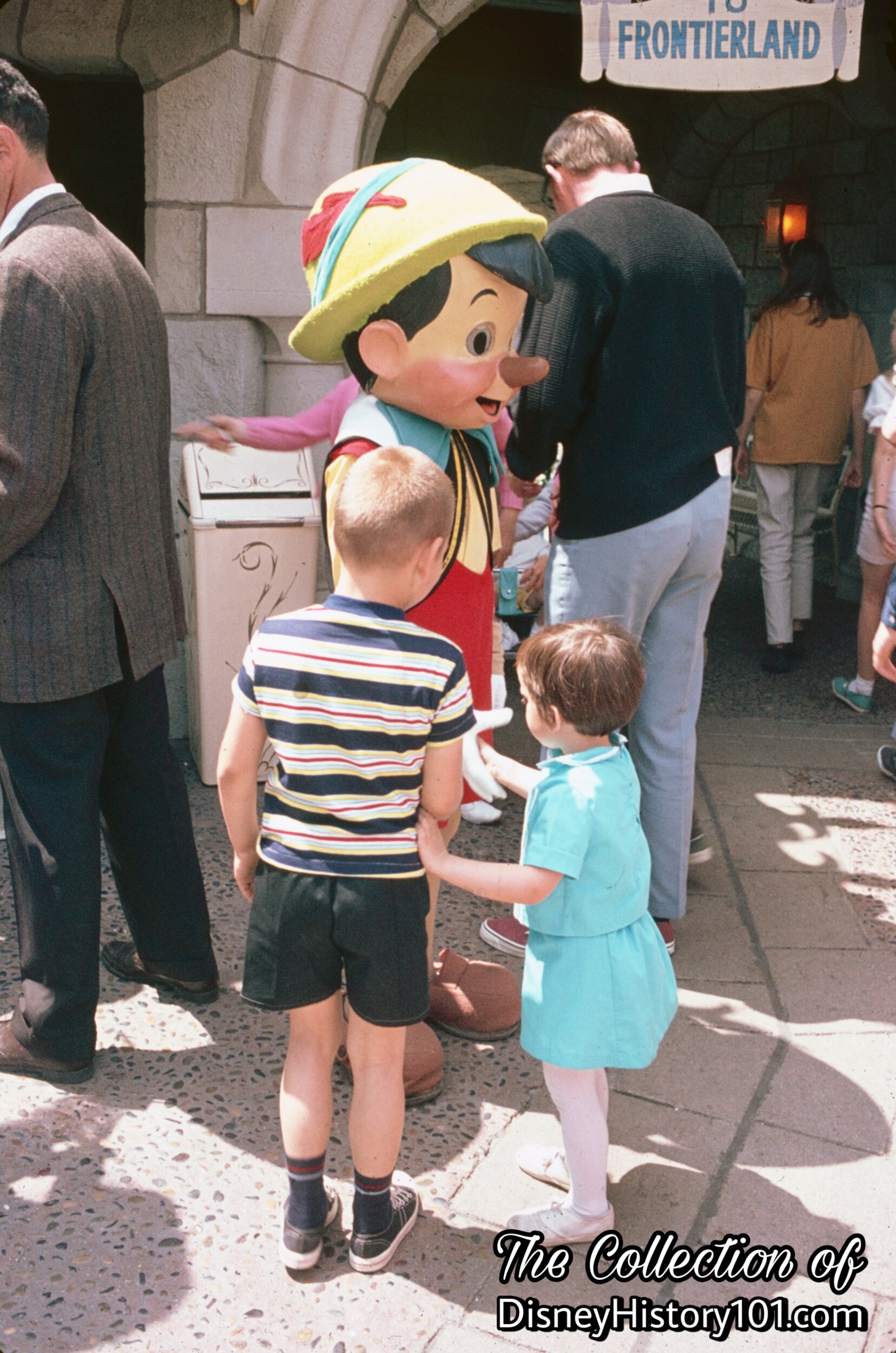
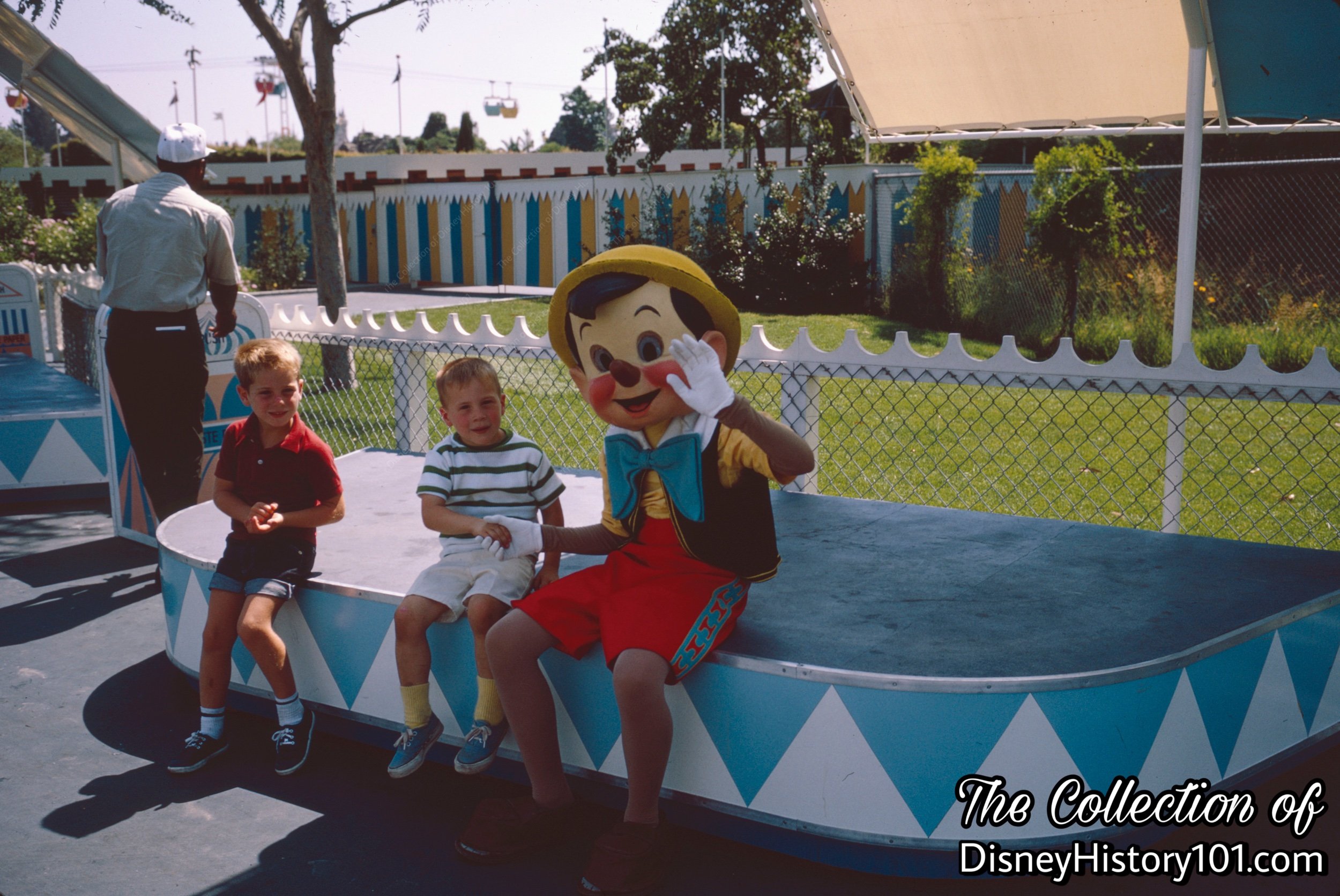
Pinocchio greets guests near Its A Small World, (1968)
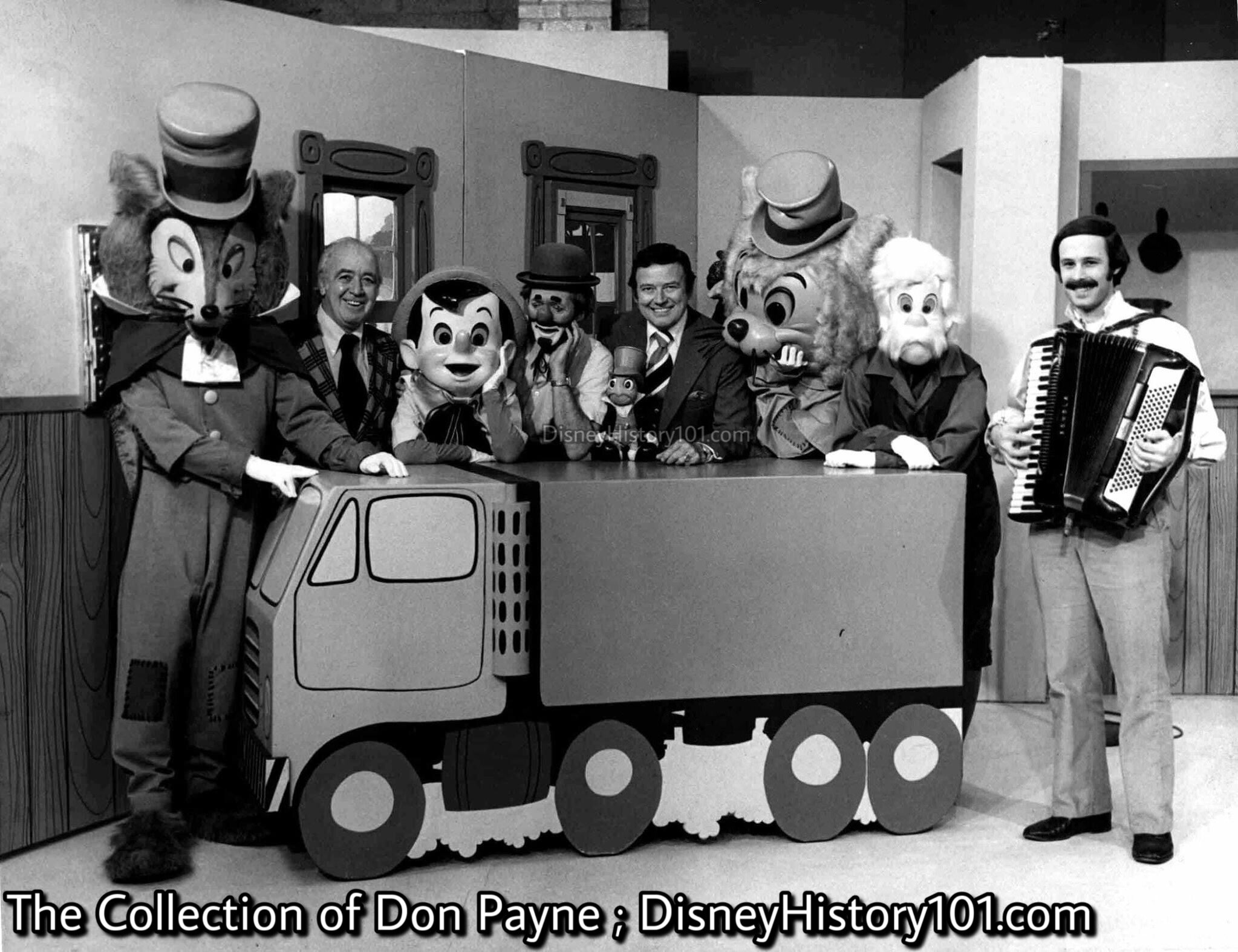
Pinocchio National Promotional Tour (December 1, 1978)
Don “assisted” Jiminy Cricket during the Pinocchio National Promotional Tour!


PINOCCHIO, 1972
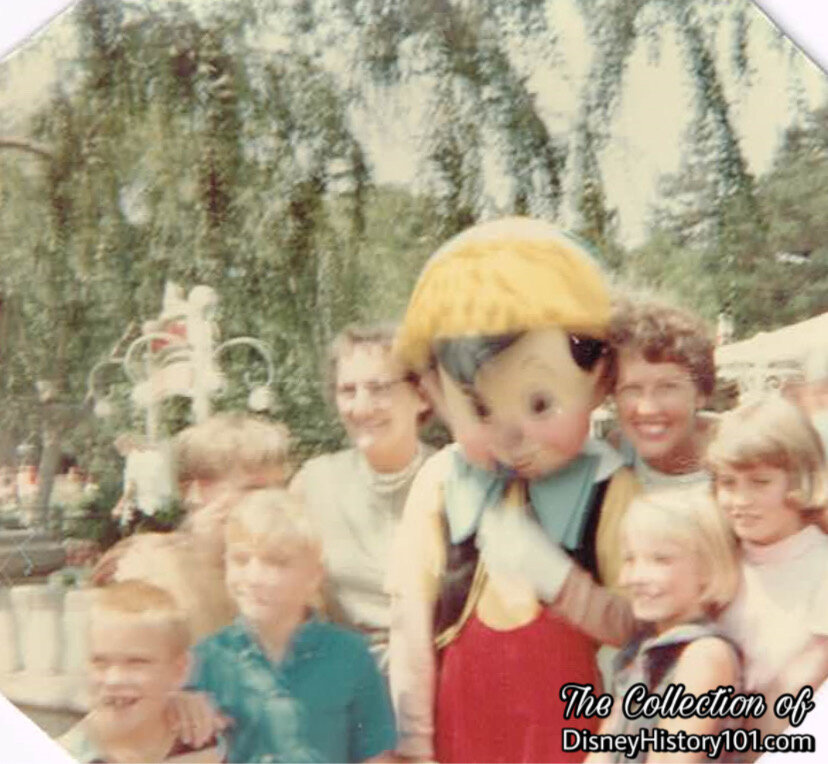
PINOCCHIO
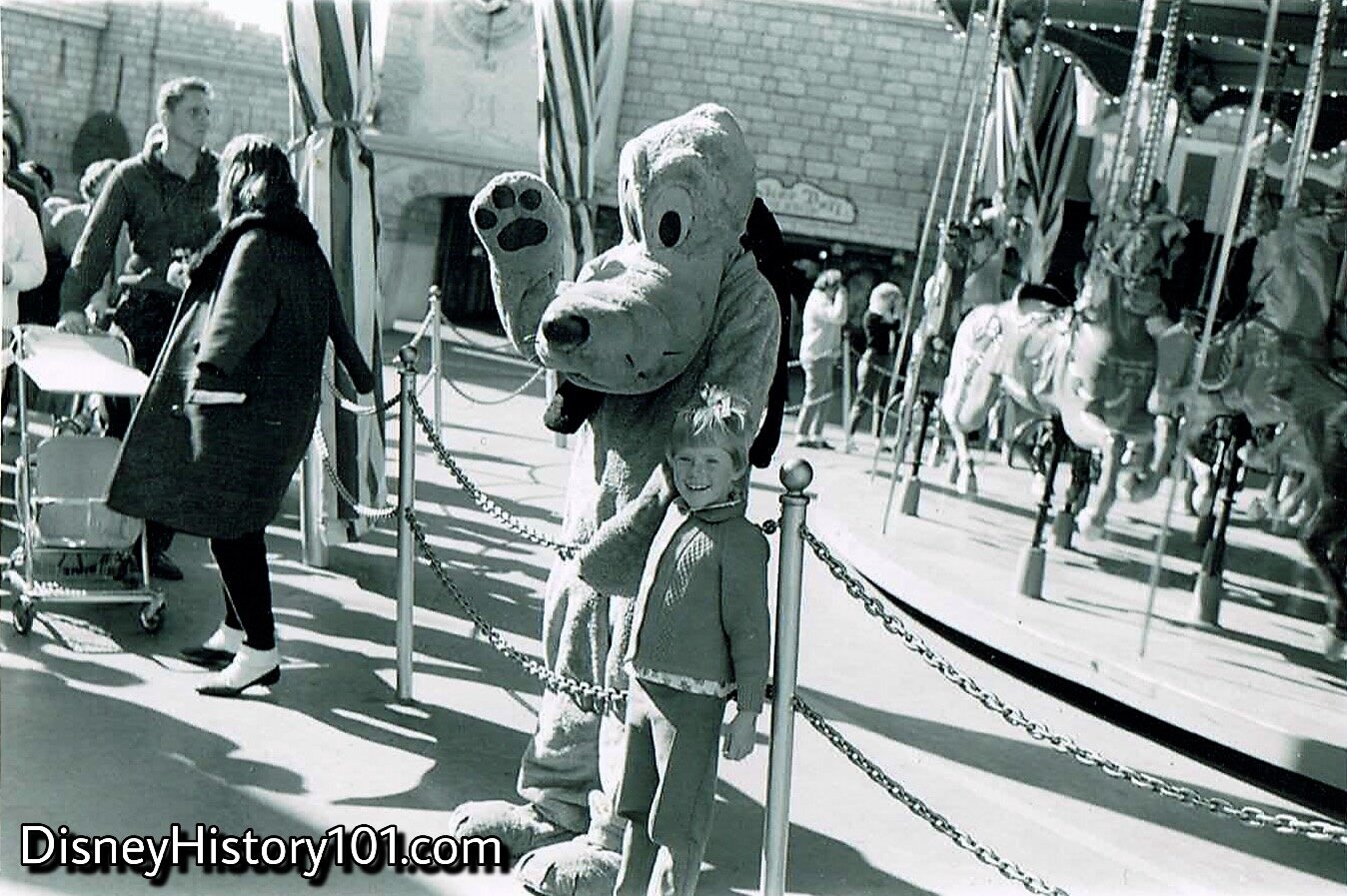
PLUTO (1967)
A number of Disneyland Cast Members were close to Pluto during the 1960s, including Tony Barksdale and Don Payne. Pluto was known for signing autographs and drawing cartoons of himself while holding a pencil between his paws.
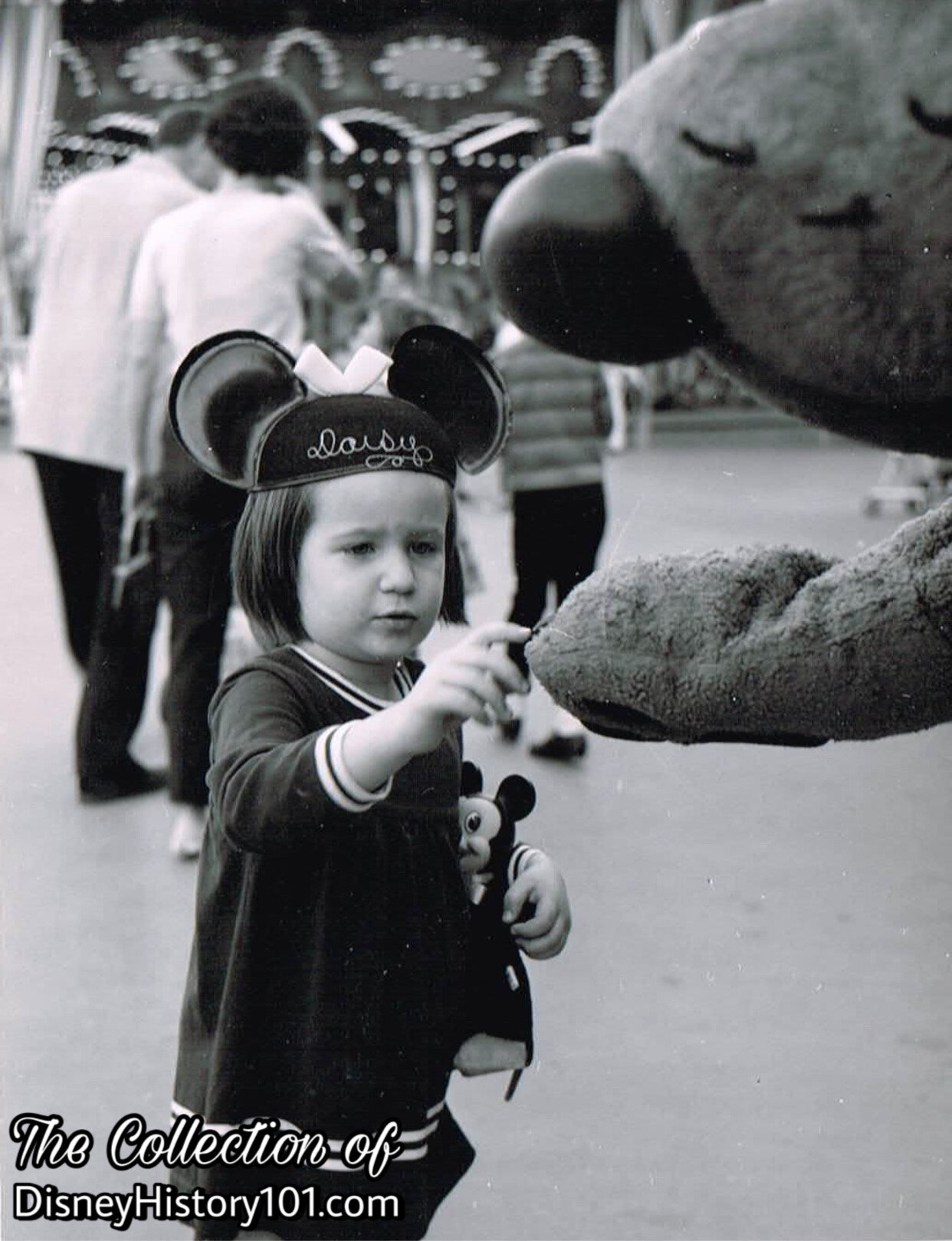
PLUTO

PLUTO
When Characters (like Mickey’s Pup Pluto) make each guest feel special, they are not just performing a role, but displaying a way of life! I am reminded of some wise old reminder, explaining how much the “personal touch” can mean to guests of all ages : “One personal experience, good or bad, usually makes the greatest impression. The personal touch is a way of life… a vital ingredient in Disneyland’s success.”
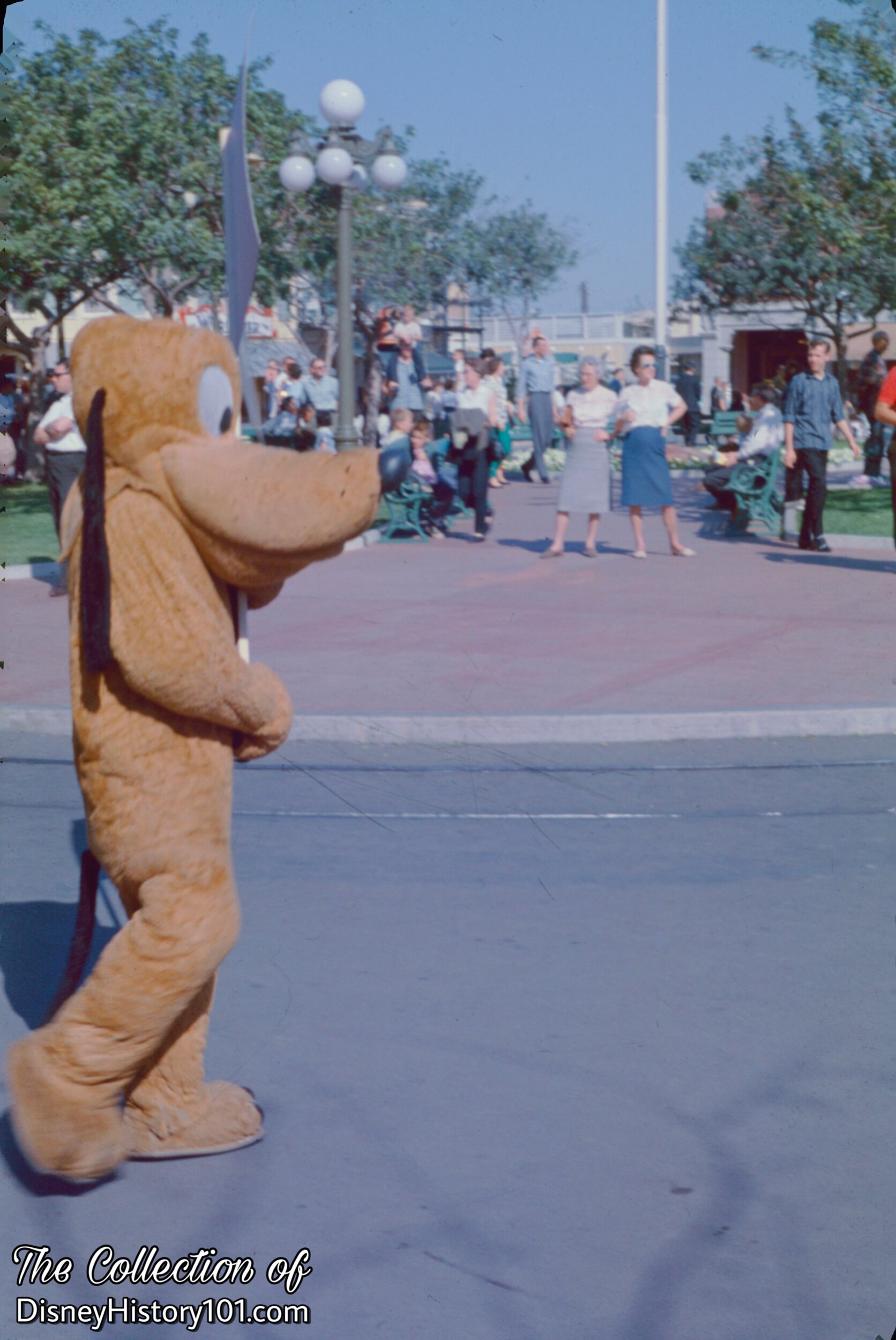
PLUTO, (1964)
This image was captured on the day of the Pancake Races (perhaps during the parade).
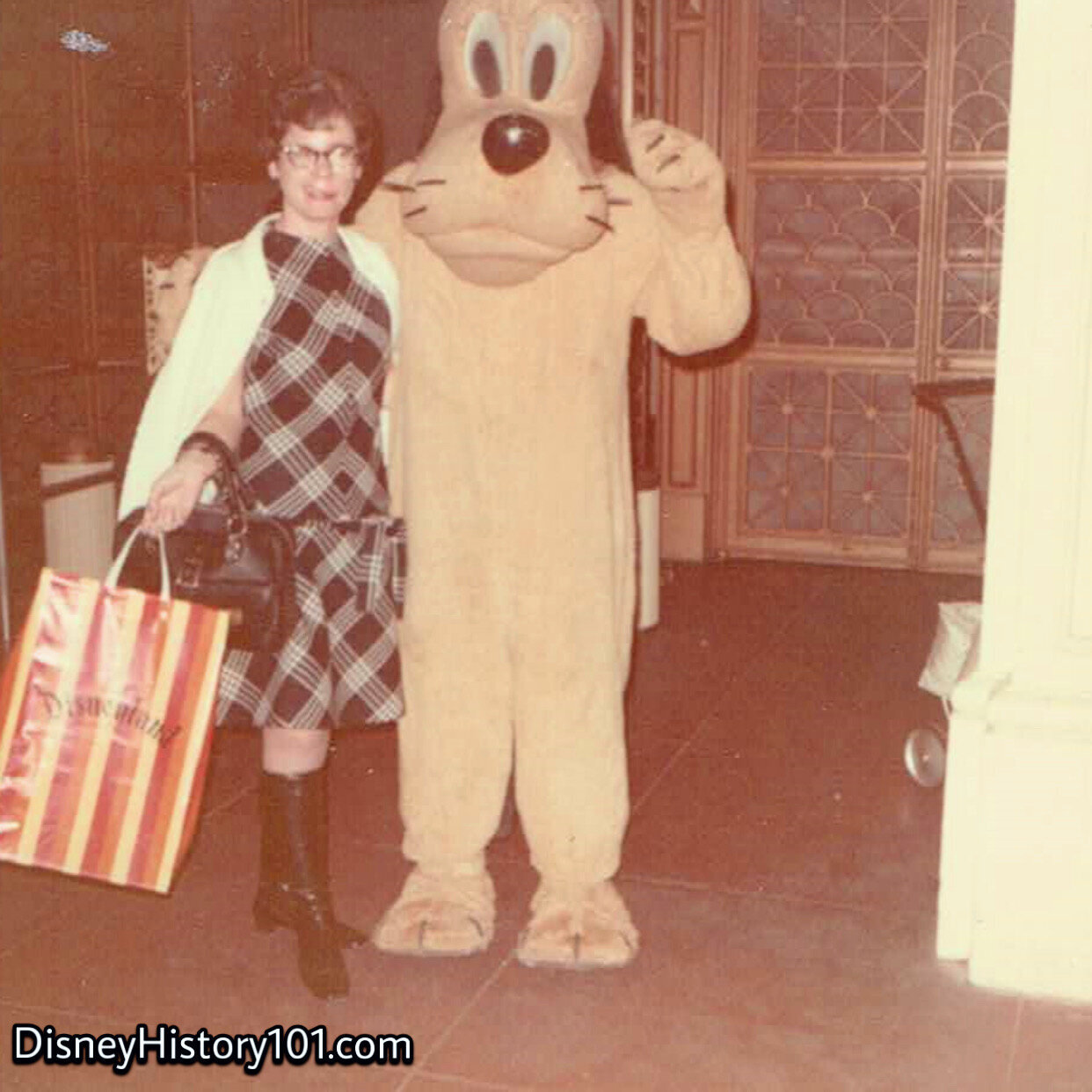
PLUTO, (December, 1968)
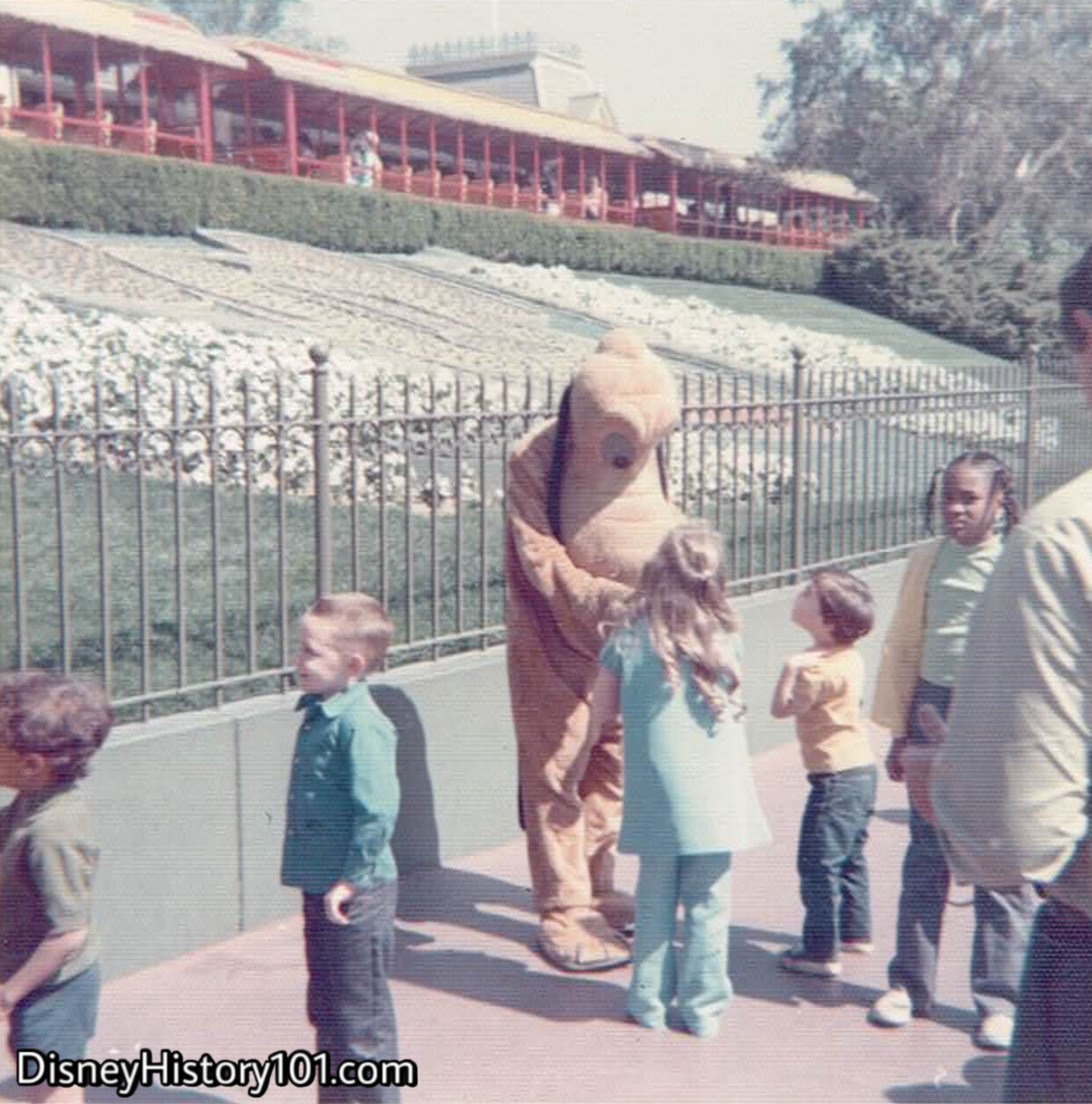
PLUTO, (April, 1971)

PLUTO
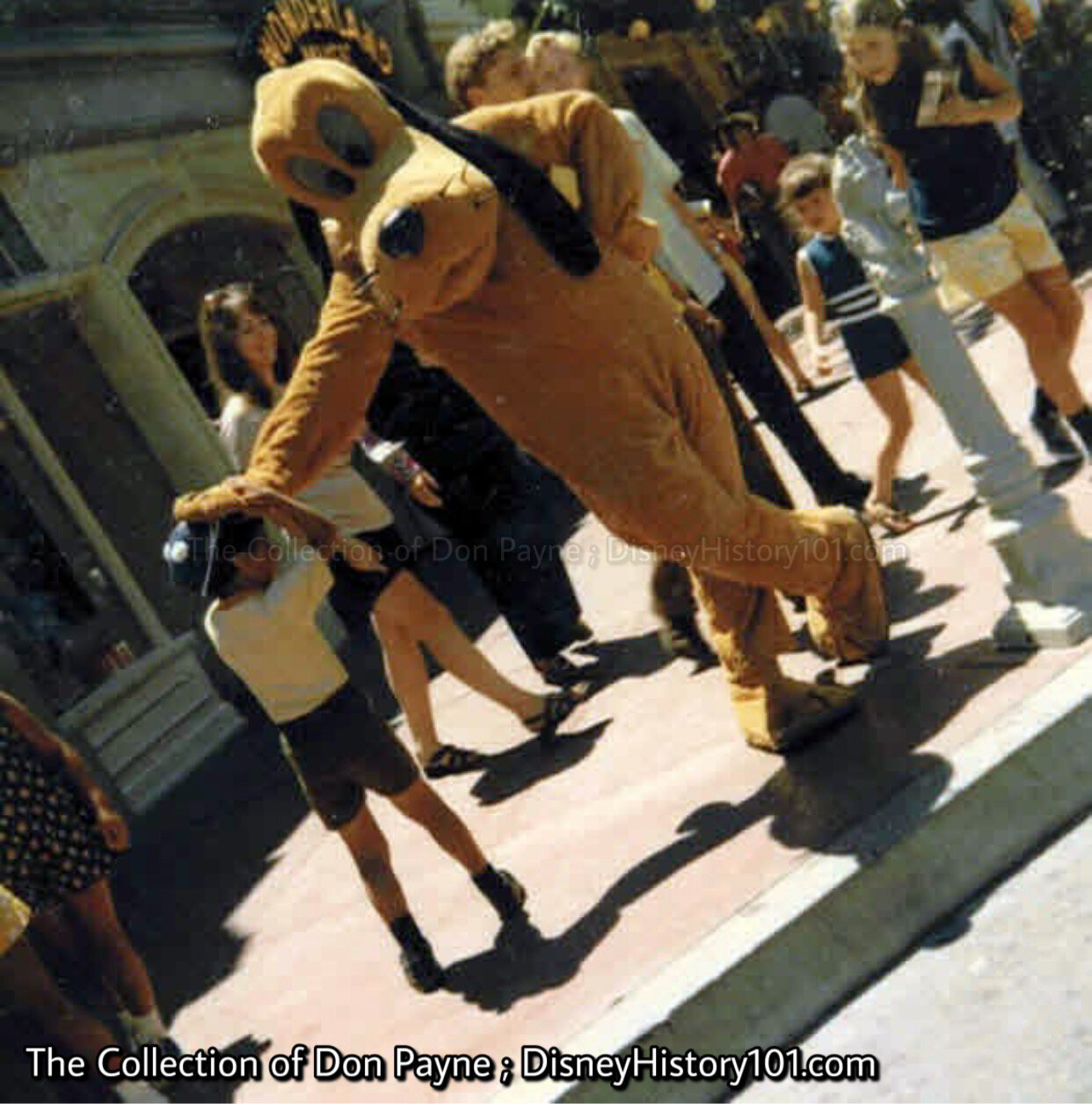
An animated PLUTO, 1970.
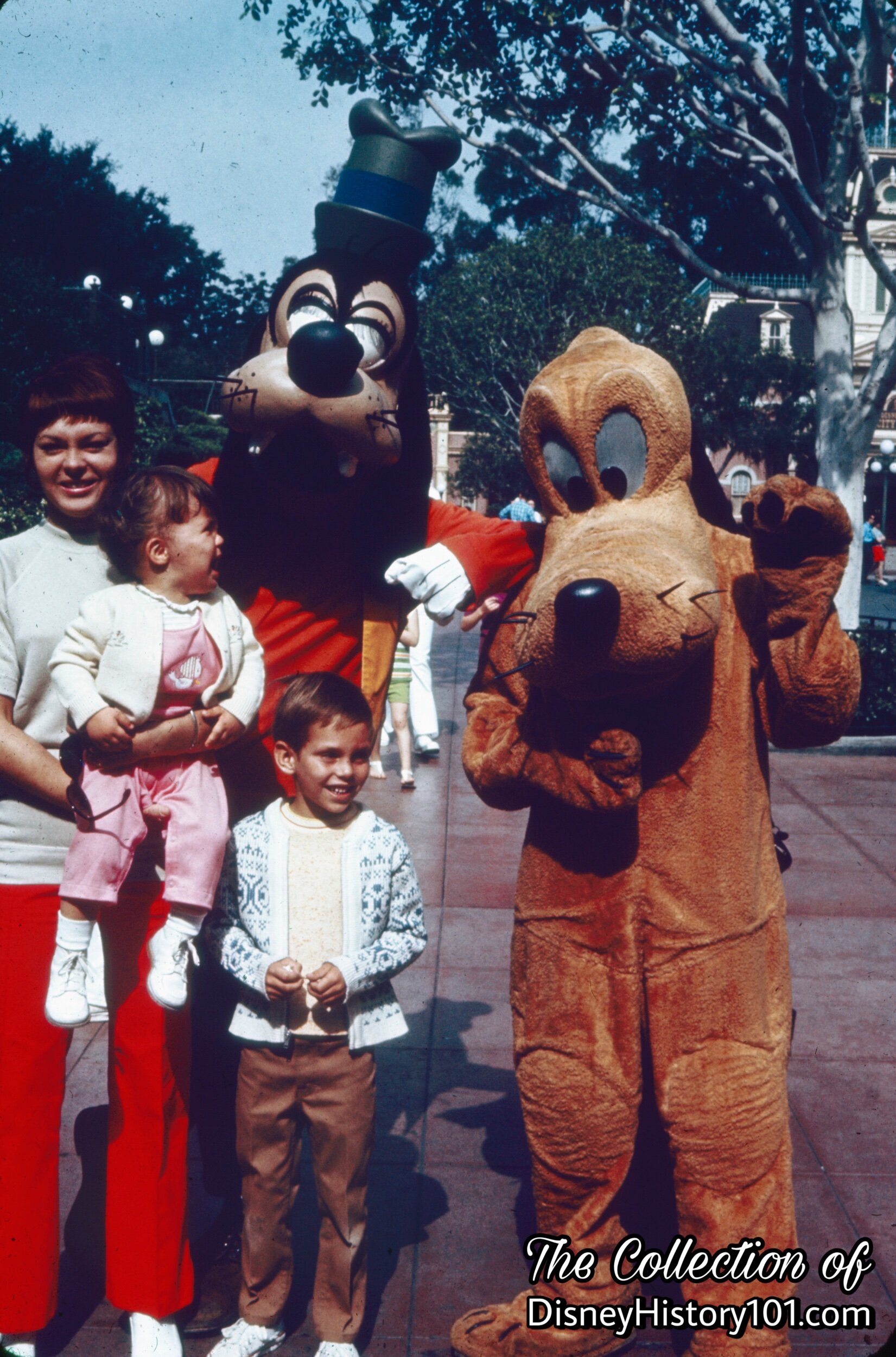
PLUTO

Pluto (November, 1970)
Pluto and Goofy ride in the Character Parade.
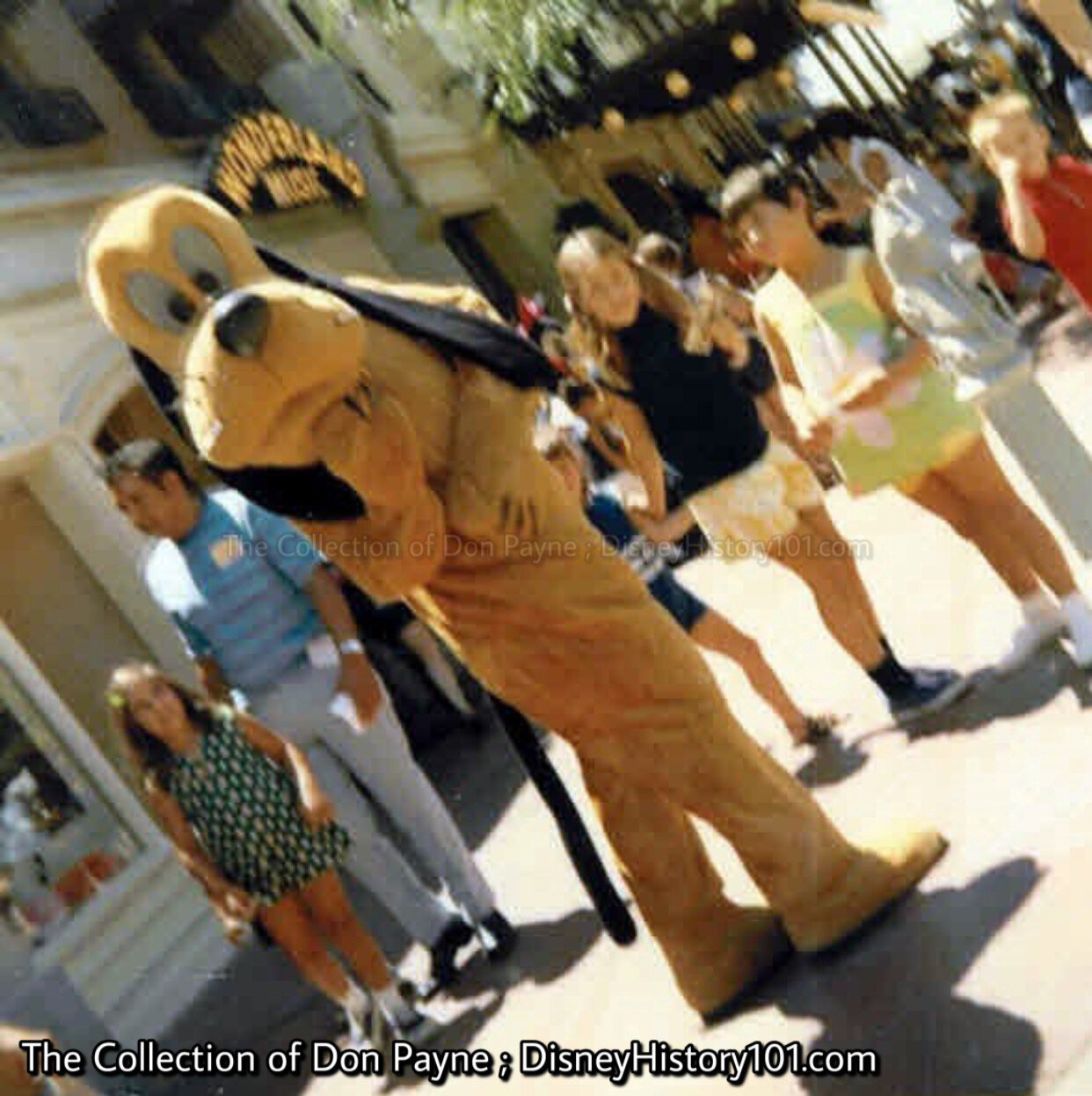
PLUTO, (1970)
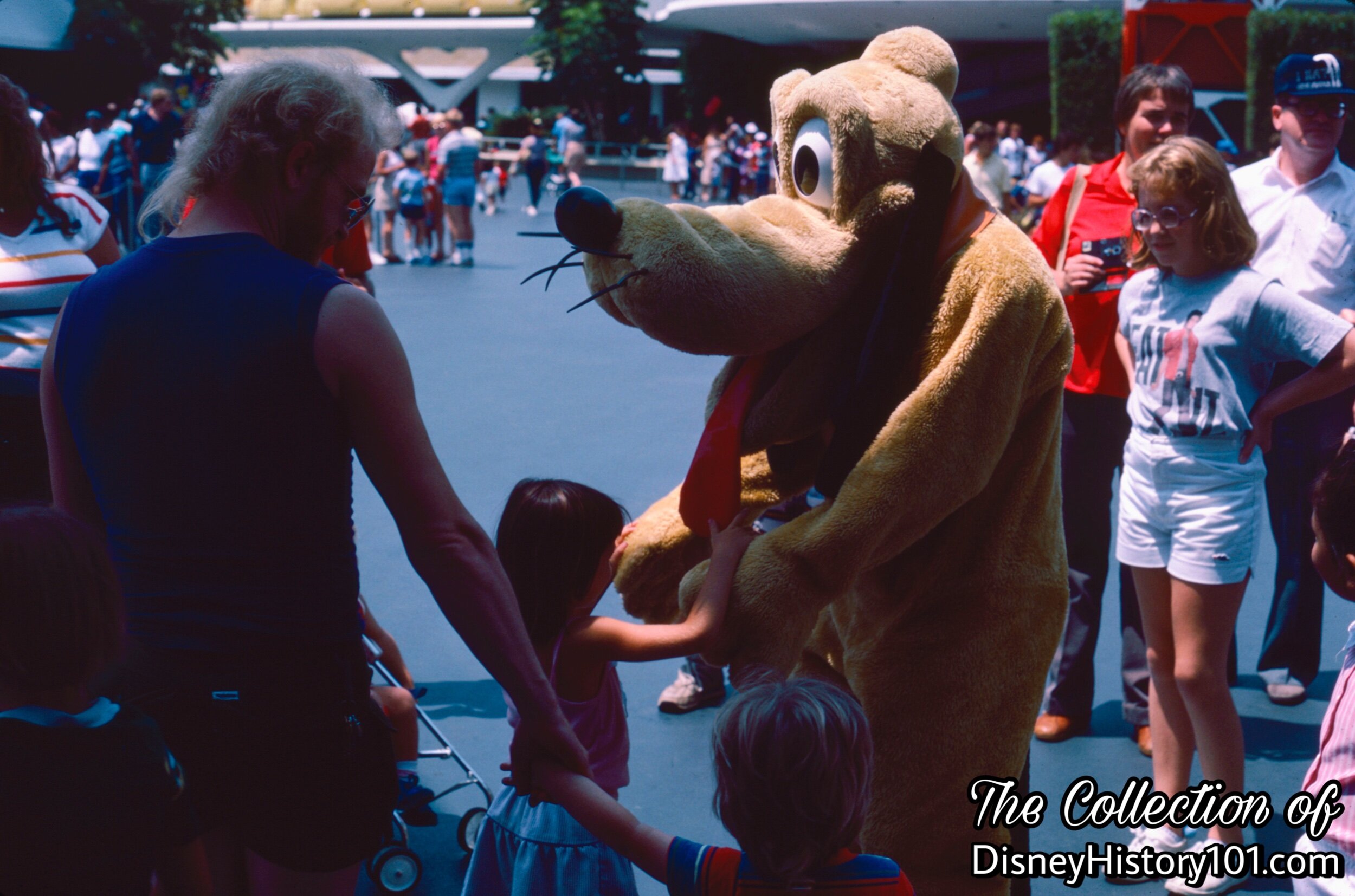
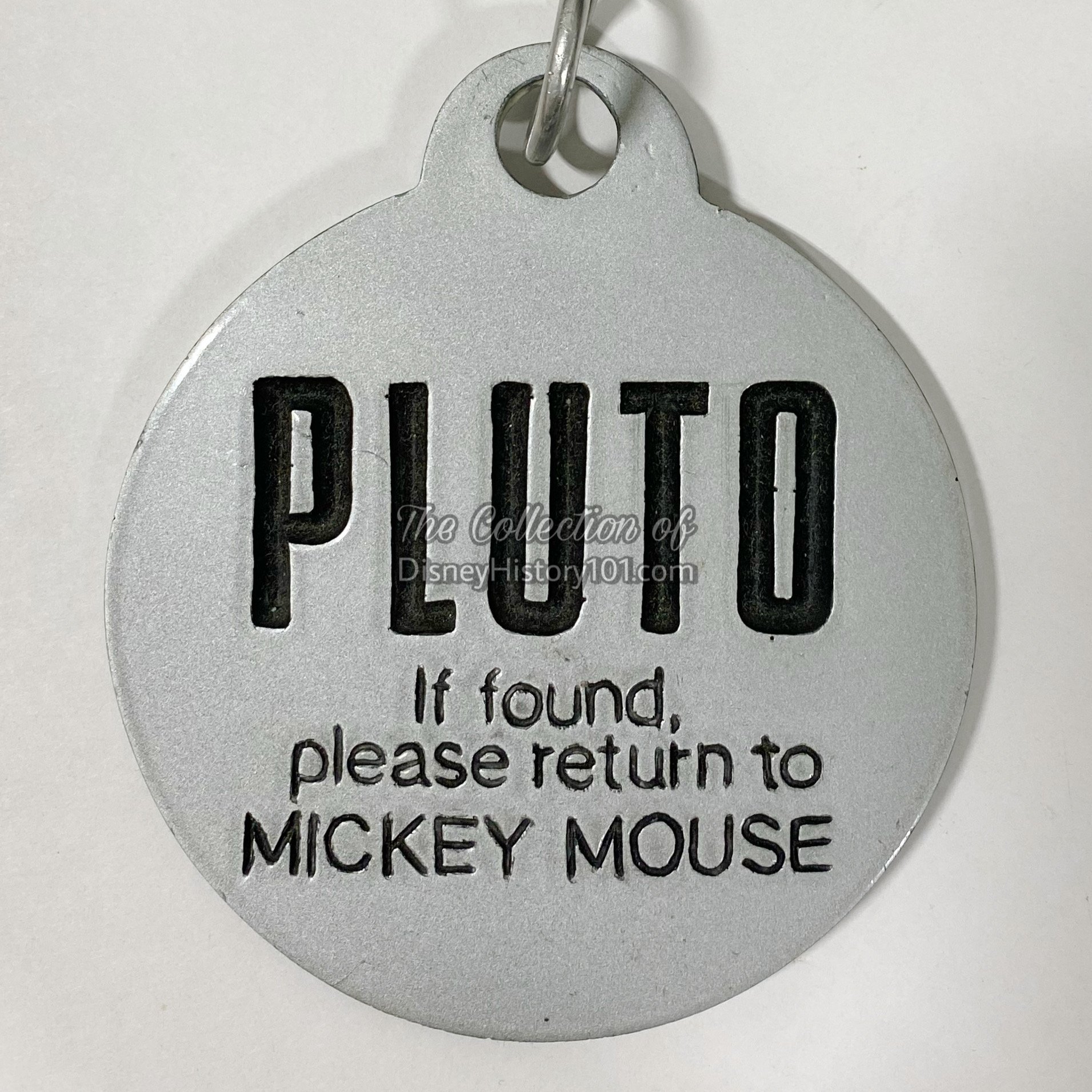

•Quasimodo -
•Queen (Snow White and the Seven Dwarfs)
•Queen of Hearts (Alice in Wonderland Unit)

•Rapunzel - The star of Tangled greeted guests in Fantasyland during 2012.
According to “Fantasy Faire - Just Got Happier”: “Rapunzel is an intelligent, adventurous 18-year-old who was raised in a tall, tall tower. After her caretaker, Mother Gothel, refuses to let her leave the tower, Rapunzel convinces Flynn Rider (a stranger) to be her guide. Their journey leads them to new friendships and adventures neither had expected (including discovering she is the "lost princess" of the kingdom). She is eventually reunited with her royal parents and marries the love of her life ... Flynn!”
She also appears in “Mickey and the Magical Map” presented in the Fantasyland Theatre.
•Rafiki (The Lion King)
•Rhinonkey (The Wuzzles) - This character is believed to have appeared in Walt Disney’s Magic Kingdom On Ice: Sport Goofy from 1985 to 1986.
•Robin Hood - Robin Hood - the hero of Sherwood Forest, an expert in archery, and object of Maid Marian’s affections made his theatrical debut on November 8, 1973. When he isn’t giving Little John archery lessons, Robin Hood can be found at Disneyland.
•Roger Rabbit (Who Framed Roger Rabbit) - The “budding new ‘Toon’ star” and Roger Rabbit made his film debut on June 22, 1988, while becoming the “newest member of the Disney Character family.” Designs were prepared and approved during April of 1988 owing to Alyja Kalinich (Disneyland Character & Entertainment Costume designer from 1979-1999) and Roger Rabbit soon became “one of the officiating dignitaries at the grand opening of Disneyland’s newest attraction Splash Mountain.” A few months later, Touchstone Pictures received three Academy Awards for “technical excellence” displayed in “Who Framed Roger Rabbit.” [see The Walt Disney Company 2nd Quarter Report]
•Roy Williams (“The Big Mooseketeer”)
•Royal Jesters -
•Royal Street Bachelors -
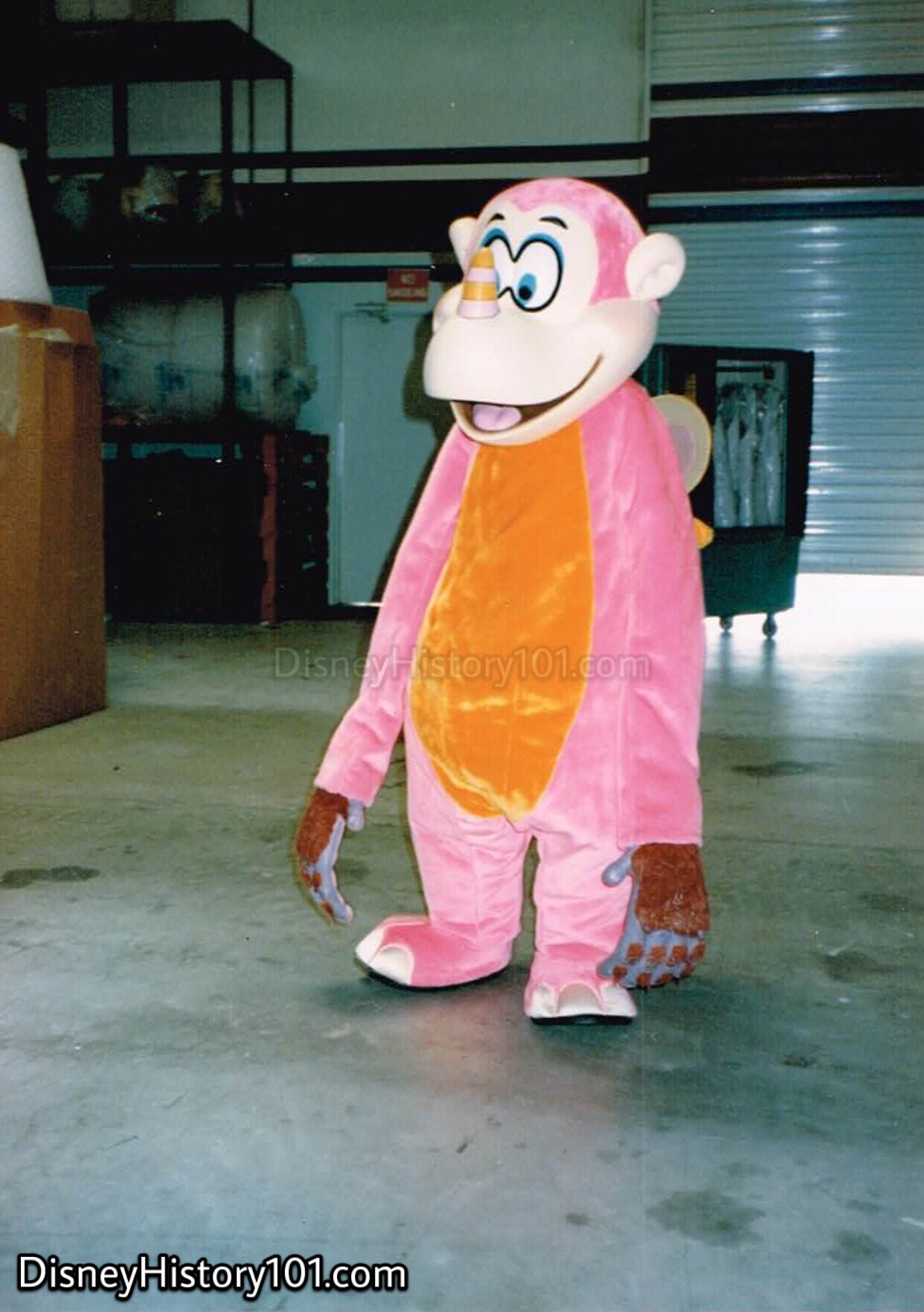
RHINONKEY (Prototype)
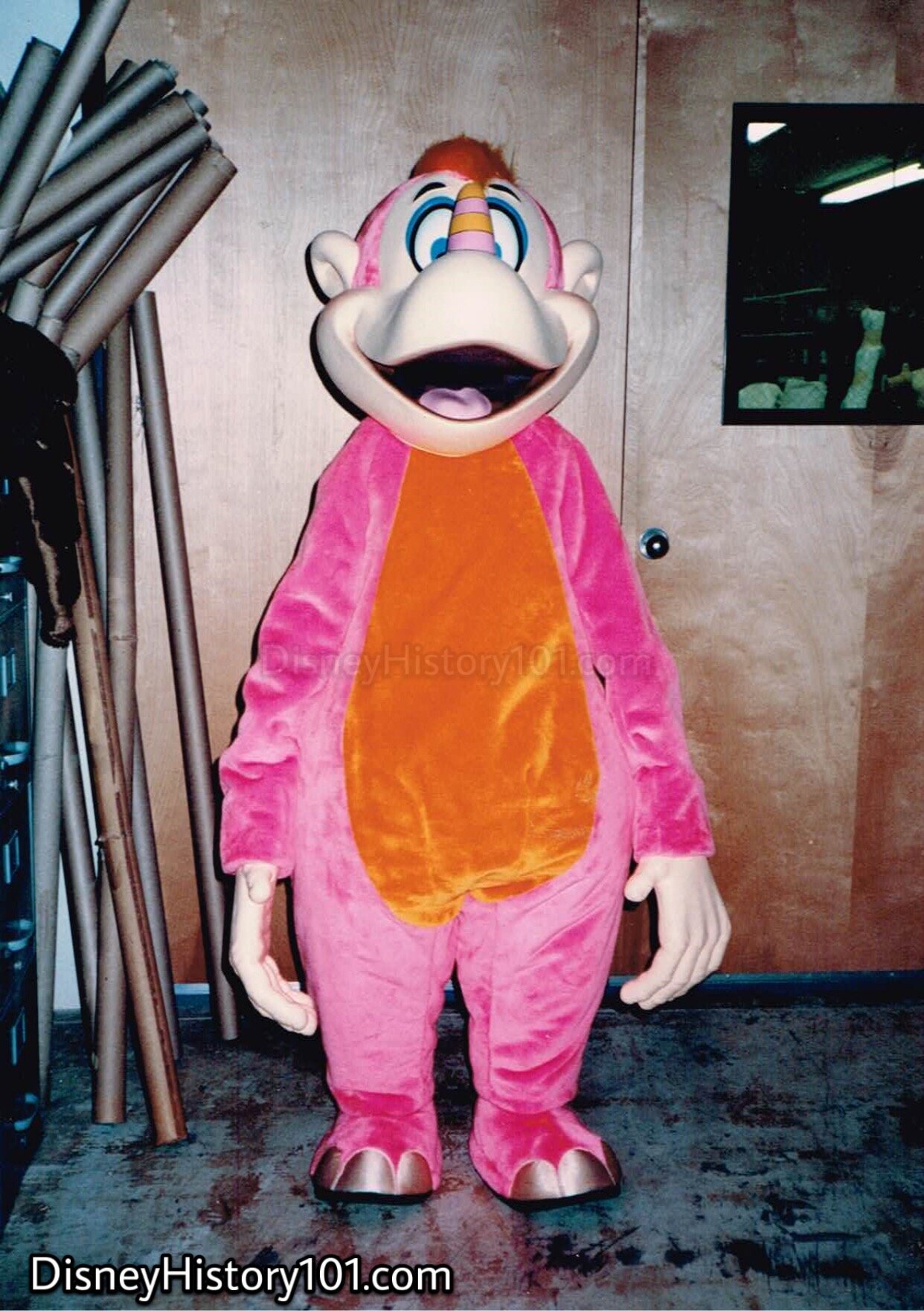
Show Documentation captures the creative intent for Rhinonkey Prototype.
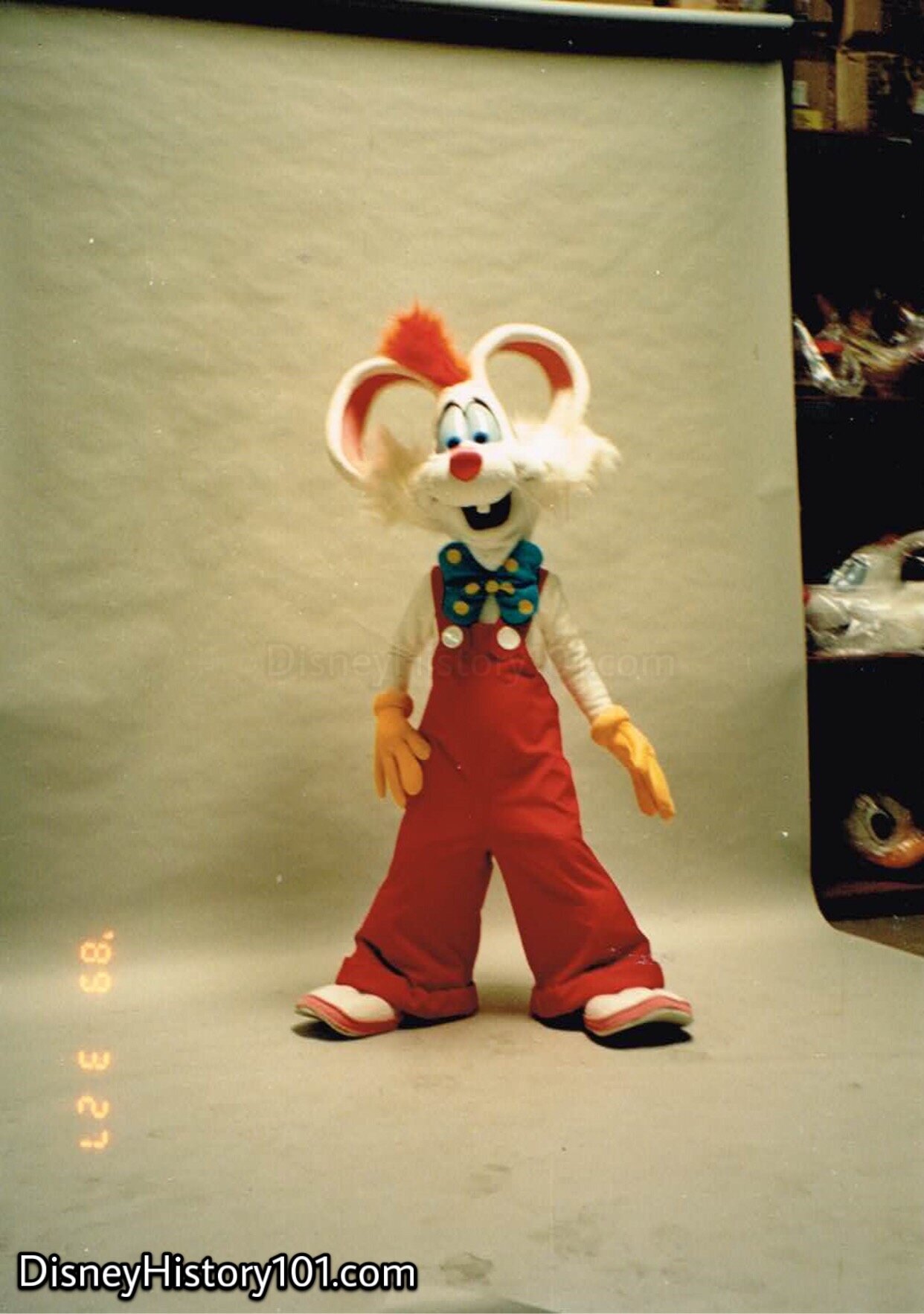
ROGER RABBIT; Roger Rabbit character © Walt Disney Pictures/Amblin Entertainment
Roger Rabbit (star of the popular 1988 film) appeared in Disneyland long before the creation of of Mickey’s Toontown (which opened in 1993).
Show Documentation captures the creative intent. As was the tradition for the Entertainment Costuming Department, multiple costumes were created (for backup or use for out-of-the-Park appearances). This can be evidenced by the “toon head” stored in the background, on the left.

An animated ROGER RABBIT in overdressing; Roger Rabbit character © Walt Disney Pictures/Amblin Entertainment
Roger Rabbit would received new costumes as he would appear in various parades and events. Here, the star of the popular 1988 film gets fitted for a tuxedo, before an early (pre-Mickey’s Toon Town) appearance.
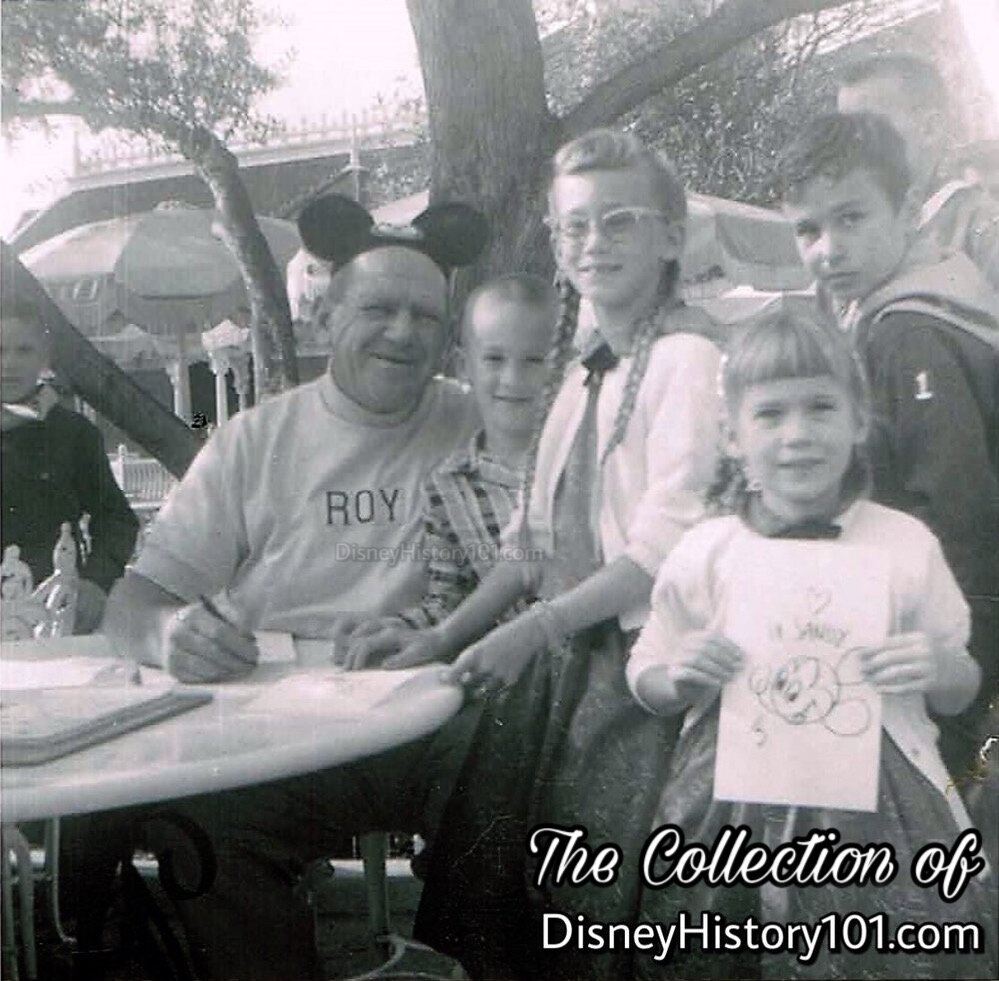
Roy Williams ("The Big Mooseketeer") at The Red Wagon Inn, (May, 1960)
Roy Williams stops by the Plaza Pavilion in order to entertain a group of kids, and draw their favorite characters (like a drawing of Mickey for little Sandy)!
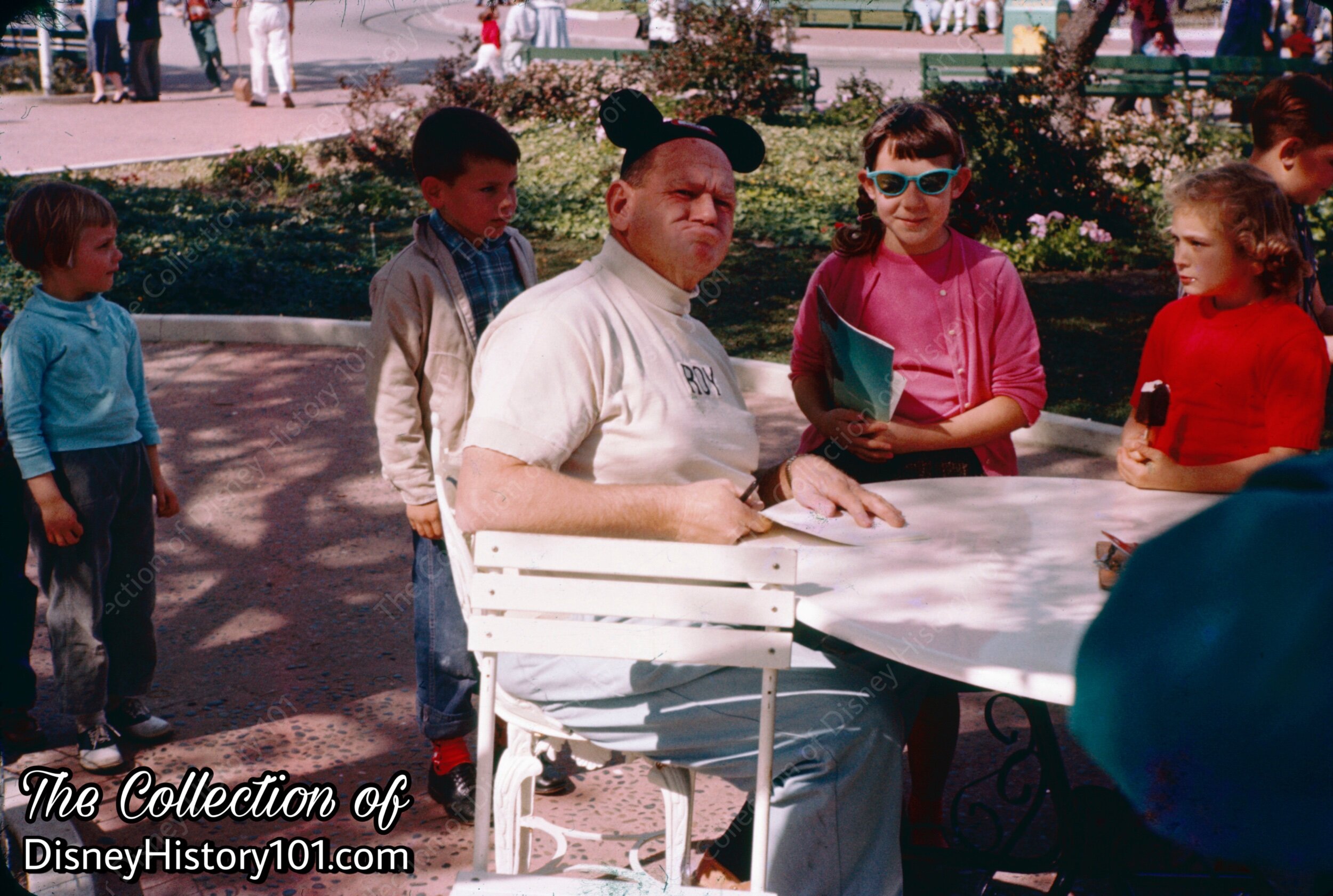
Roy Williams ("The Big Mooseketeer") at The Red Wagon Inn
Roy Williams could often be found under an umbrella on Red Wagon Inn’s patio. Young Mickey Mouse Club fans seek out the “Big Mooseketeer” in search of an “original” Disneyland souvenir. Roy’s solution was to create a few funny faces (and sketches) for his young admirers.
(Photo : Late 1950s, Early 1960s)

Roy Williams ("The Big Mooseketeer") at The Red Wagon Inn, (April, 1960)
“STEVE VOSBURG REMEMBERS MEETING ROY WILLIAMS”
“I shot of Roy with my Brownie 2 camera. One time my mother and I were having lunch in the employee's cafeteria and Roy was sitting across from us at another table. After a few minutes he got up and came over and gave us a sketch he drew of my mother and I on a little three-by-five pad. It showed in cartoon form of my mother and I sitting at the table-- me with horns and forked tail!”
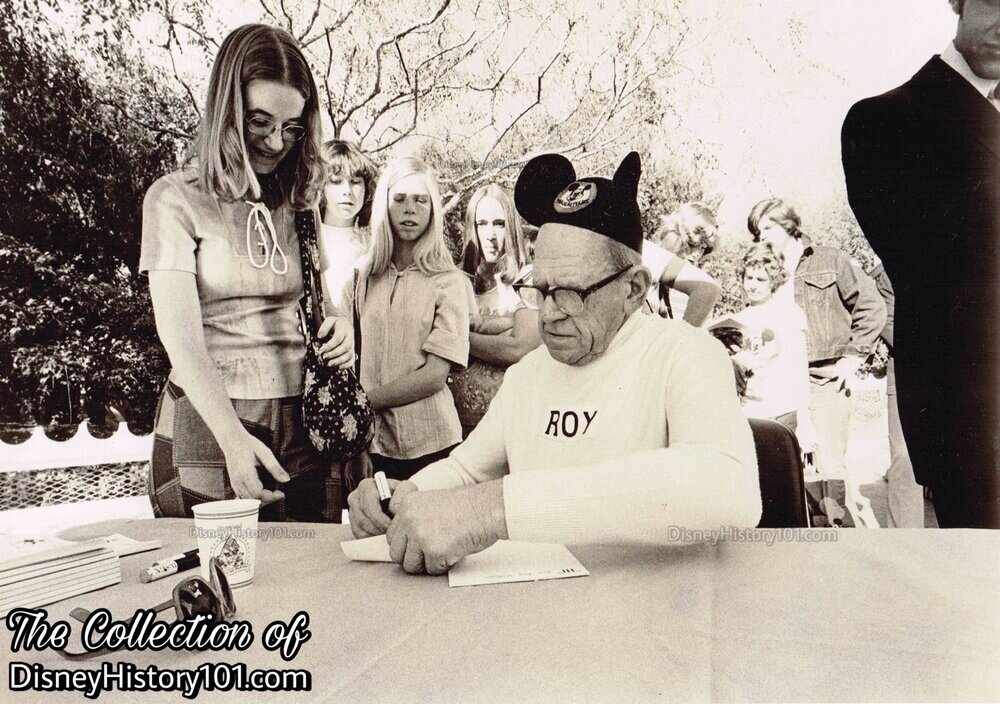
Roy Williams ("The Big Mooseketeer"), (1975)
Roy Williams (the “Big Mooseketeer”) continued to make appearances for many years, as seen in this photograph taken during Disneyland’s salute to America’s Bicentennial Celebration. We imagine that the tables at the Plaza Inn were full, as Roy is sitting at a table near the Canals of Story Book Land!

•Sax Quintet - c.1986
•Scat Cats - The Scat Cats debuted at Disneyland during December of 1970. Disneyland's newest Characters, the Scat Cats from Walt Disney Productions’ latest animated feature, The Aristocats, starred in a special stage show with Scatman Crothers, Fulton Burley, and The Swinging Ambassadors. Shows were staged daily on the Tomorrowland Stage through the winter season (at 3:30, 4:30, 5:30, 6:30, and 7:30).
•Scrooge McDuck - During 1986, Ducktales was planned to be a 65 part animated series for afternoon time periods (according to Walt Disney Productions Quarterly Reports). Scrooge McDuck was still the star of the most popular syndicated children’s television series in 1989. [see The Walt Disney Company 2nd Quarter Report]
•Scuttle - Ariel's bumbling seagull friend and human artifacts expert.
•Seven Dwarfs - The Seven Dwarfs made their film debut December 21, 1937. The first time they made their Disneyland debut, the original Seven Dwarfs were on loan from the Ice Capades. These would help open “Snow White and Her Adventures” to guests of all ages during the Disneyland opening day broadcast. New (second) incarnations of the Seven Dwarfs (the 2nd to appear in Disneyland) were some of the 33 characters to debut in the Park as part of Disneyland’s big summer show of 1961. These would begin to embody “the Disney Touch” of teamwork, appearing from the Summer of 1961 to 1971. During this time, the Seven Dwarfs were part of the Pre-game “Walt Disney and Disneyland Salute to the California Angels” at the new Angels Stadium on Saturday, April 23rd, 1966! Walt Disney’s Snow White and the Seven Dwarfs was rereleased multiple times (as in 1967) and many individuals became acquainted with the Seven Dwarfs, including Steve Berk (some time after 1969).
Over time the Seven Dwarfs would receive updates that would allow for increased interaction with guests as well as greater Cast comfort and safety. For example the Seven Dwarfs’ caps (originally, not fastened tightly) had the tendency to slide on their head, and infringe upon the Cast Member’s field of vision. This issue was addressed.
The third incarnation of all Seven Dwarfs (to appear in Disneyland) were designed and sculpted in clay by WED Enterprises artists. These designs were sent to Disneyland Staff Shops, where full-scale versions were sculpted in clay, in order to cast molds. These were sent to the Paint Shop and Wardrobe for the remaining fabrication according to specifications. The results were much lighter than the previous incarnations. These would appear from 1971 to 1983, debuting with a traveling stage show called “Disney on Parade”! This occurred during the Summer months of 1971, when Walt Disney’s Seven Dwarfs were transported “right out of the motion picture screen” and to convention centers in several major cities (including Seattle Center Coliseum, from July 6th thru the 11th, 1971). These third incarnations of the Dwarfs could be seen during the show’s second act, as well as in souvenir publications for “Disney on Parade” of 1971.
Fourth incarnations would appear during the late 1990s and continue to make appearances into the 2000s. WED designed the characters (sculpted small models and full-size models) and the staff shops cast those full-size models and created the costumes.
When they aren’t working on their Diamond mine, the Seven Dwarfs greet Guests at Disneyland. By c.2007, the Dwarfs had a sanctioned Park Marching order at Walt Disney World®: Doc, Grumpy, Happy, Sleepy, Sneezy, Bashful, Dopey. [“Trivia Time Answers,” revised 2007 for Operations Learning & Development, Entertainment] This differed slightly from their Movie Marching order: Doc, Grumpy, Happy, Sleepy, Bashful, Sneezy, Dopey.
•Shang - Rode in a carriage in the Mulan Parade.
•Sheriff of Nottingham - Sheriff of Nottingham (the coyote assistant to Prince John and Royal Tax Collector) had his film debut in Walt Disney’s Robin Hood on November 8, 1973. When he isn’t going to collect taxes, the Sheriff can be found at Disneyland.
•Sheriff - There were many who were deputized as Sheriff (or Marshall) of Frontierland, routinely keeping the peace and thrilling the kids by dueling six-gun style. Sheriff Lucky was one such, who first portrayed by Lucky Fauntz (a former Los Angeles police officer and San Bernardino Sheriff) beginning c.1955-56. He was followed by two men who portrayed the role. Sheriff Lucky Laredo.
When the Magic Kingdom opened at the Walt Disney World Vacation Kingdom, there were Frontierland Gunfighters present - Stunt men who would “shoot it out, western style.”
•Shoeshine Boys - Dancing Shoeshine Boys (Gene and Eddie) were part of the big talent lineup during the summer of 1963. Gene and Eddie will be at their shoeshine stand, located in front of the Opera House, through the Holidays (December 15, 16, Dec. 20 - Jan. 1, 1963; from 10:00 AM to 6:00 PM).
The Shoeshine Boys continued to “entertain while they put a mirror finish on footwear” at “one of the last ten-cent shoeshine stands in the country,” according to the “Disneyland Dictionary”, compiled by WED Enterprises, Inc. and WED Public Relations Department, c. 1968. For instance, the “Shoeshine Boys” Teddy and Kenny shined and tap danced at the old Shoeshine Stand in New Orleans Square performed seven times daily (from approximately 10:00am to 9:30pm), from December 16th, 1967 thru January 1st, 1968. [“Disneyland Holiday Talent Master Schedule,” prepared for the period of December 16, 1967 through January 1, 1968]
•Sidestreet Strutters - c.1986
•Sleepy (Snow White and the Seven Dwarfs)
•Smee (Peter Pan) - Mr. Smee (voiced by Bill Thompson) made his theatrical debut in Walt Disney’s Peter Pan on February 5, 1953. Smee’s head briefly makes a cameo appearance in the “Walt Disney Productions” Shareholders Report of 1965, page 11. Smee was part of the Pre-game “Walt Disney and Disneyland Salute to the California Angels” at the new Angels Stadium on Saturday, April 23rd, 1966! Pageant helper George Baxter (c.1969) once assured Smee.
•Sneezy (Snow White and the Seven Dwarfs)
•Snow White - “When is a Disneyland Cast Member also an attraction? When that Cast Member is also a world famous Disney Character.” [Disneyland LINE magazine, April 28, 1977] Snow White - “the fairest one of all” - made her theatrical debut in the first feature-length animated film ever produced on December 21, 1937. Snow White married the Prince.
“Snow White and the Seven Dwarfs,” was Walt’s first full-length animated musical feature, premiered at the Carthay Circle Theatre in Los Angeles. Produced at the unheard cost of $1,499,000 during the depths of the Depression, the film is still accounted as one of the great feats and imperishable monuments of the motion picture industry. Subsequently, the film won a special Academy Award (consisted of one large Oscar and seven little “dwarf” Oscars) when it was recognized as a significant screen innovation for the motion picture cartoon.
Her film would inspire “Snow White’s Scary Adventures” at Disneyland, and the Snow White Disney Face Character who does not sing but can talk, communicate with Guests, and create magical Disney experiences for them. Snow White would stand alongside Mickey Mouse, to welcome Disneyland’s 25 millionth visitor on April 19, 1961. In preparation for the her appearance at the 1964 New York World’s Fair’s Pepsi exhibit, the Disneyland Wardrobe Department assured Snow White a new “yellow velvet skirt,” “red velvet cape,” as well as a “petticoat.”
A number of Disneyland Cast Members would help bring Snow White to life over the years. The very first Snow White (JoAnn Dean Killingsworth) was a professional dancer and ice skater who previously appeared in Sonja Henie’s Hollywood Ice Revue and then various theatrical dance rolls, before receiving a call to perform in a TV special for ABC at Disneyland. JoAnn (in the role of Snow White) can be seen both riding atop a float and performing a dance routine with a broom (alongside Alice, Aurora, and Peter Pan) during the televised Press Preview Day Parade on July 17th, 1955.
Kathy Bender (a former Storybook Land Hostess) portrayed Snow White, c.1965. Linda Westin (mid-1960), Jeanette “Jan” Johnson Brown, Becky Cookson, and Lisa Binney (c.1969-71), Diana Adams (for America on Parade; c.1975-76), and Melissa Love (c.1980) were also close to Snow White.
When she wasn’t baking gooseberry pie for Grumpy, Snow White was part of the Pre-game “Walt Disney and Disneyland Salute to the California Angels” at the new Angels Stadium on Saturday, April 23rd, 1966! She also appeared outside Disneyland on a Snow White tour in June of 1967.
The c.1983 re-issue of Snow White and the Seven Dwarfs had the biggest opening of any Walt Disney Picture to date, and (with a film rental figure of $13,000,000) was the most successful reissue in the history of Walt Disney Productions.
During 1987, over 50 women who portrayed Snow White in Disneyland, from the Park's opening in 1955 to present, were reunited on June 5. The reunion was in celebration of the 50th anniversary of the release of Walt Disney's classic animated feature “Snow White.”
•Spyros - Spyros Olypopolus debuted as a new Walt Disney TV cartoon character on March 21 on the “Disneyland” program “The Goofy Sports Story“ on the ABC-TV Network. The toga-clad and rotund character narrated the story.
•Step Sisters - Drizella & Anastasia (Cinderella)
•Stitch -
•Stromboli - the Puppetmaster
•Sully -
•Suzy Mouse - Suzy the seamstress mouse friend of Cinderella made her theatrical debut in Walt Disney’s Cinderella on February 15, 1950.
•Swiss Yodellers - They entertained guests summer of 1962.

MARSHALL (or "SHERIFF") LUCKY extends courtesy toward a Guest.
As the Tomorrowland Space Couple represented Tomorrowland, Marshall (Sheriff) Lucky was one of Frontierland’s foremost characters! Marshall (Sheriff) Lucky was featured in numerous publications (i.e. Walt Disney’s Guide to Disneyland, 1958).
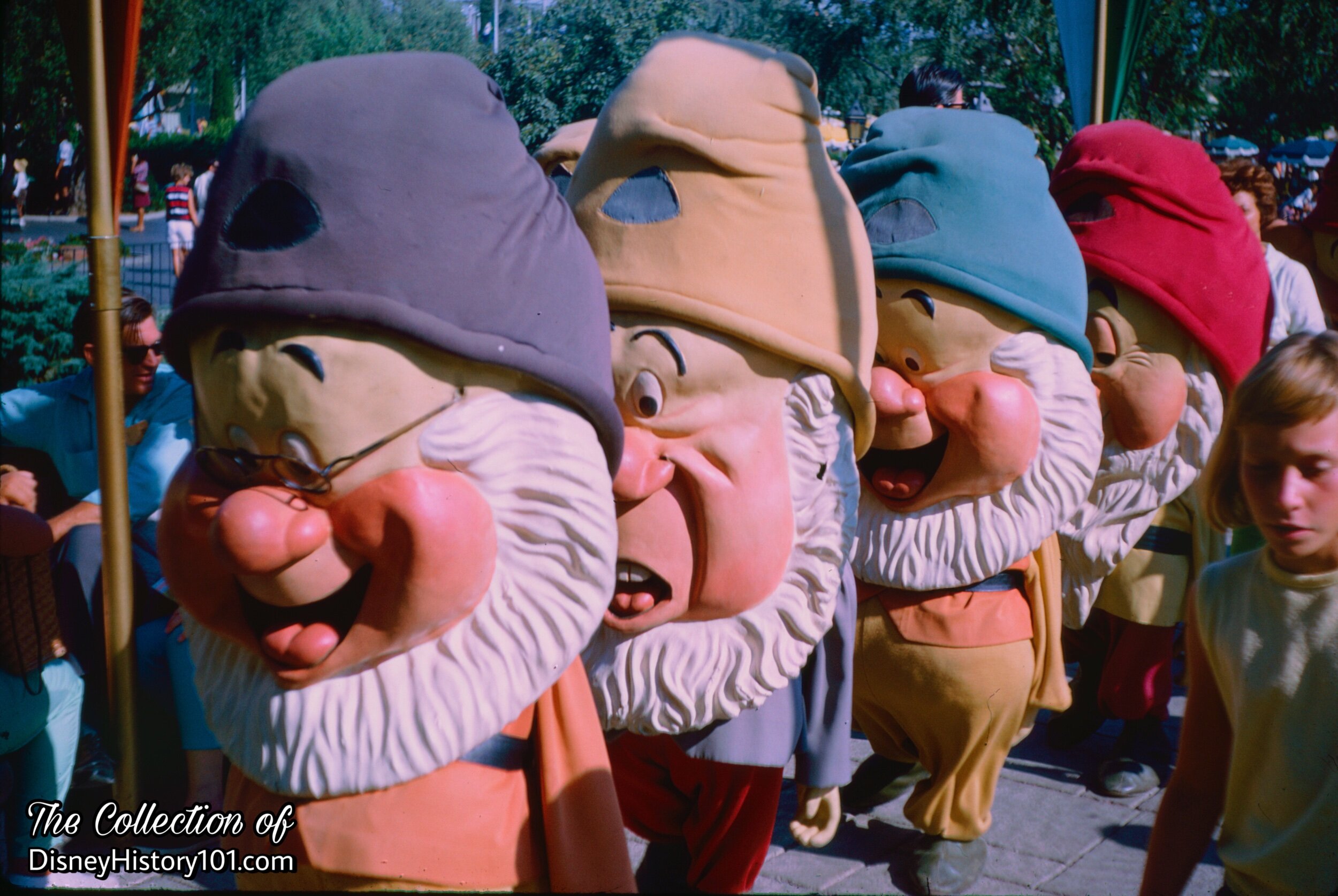
SEVEN DWARFS, (August, 1966)
From April 14 - 25, 1964, Snow White and the Seven Dwarfs (and other Disneyland characters) travelled to New York for the opening ceremonies of its a small world and additional filming at the New York Fair Grounds in Queens (courtesy of Frank Millington, Props Department, Jack Lindquist, Publicity Department, and Joe Bowman, Construction Department). When Snow White and the Seven Dwarfs returned to European theaters in 1965. Following the completion of the 1964/1965 New York Worlds Fair, 1 of 3 sets of duplicate costumes for Snow White and each of the Seven Dwarfs costumes were shipped to London. The purpose, was purely promotional, during December of 1964 to January of 1965. Walt Disney Productions London oversaw the appearance of the eight characters at theaters in London, Scotland, and Wales.
A number of new Disneyland employees were hired into the Character Department like Don Bobbs, who was “close to” the Seven Dwarfs and the Three Pigs during this era.
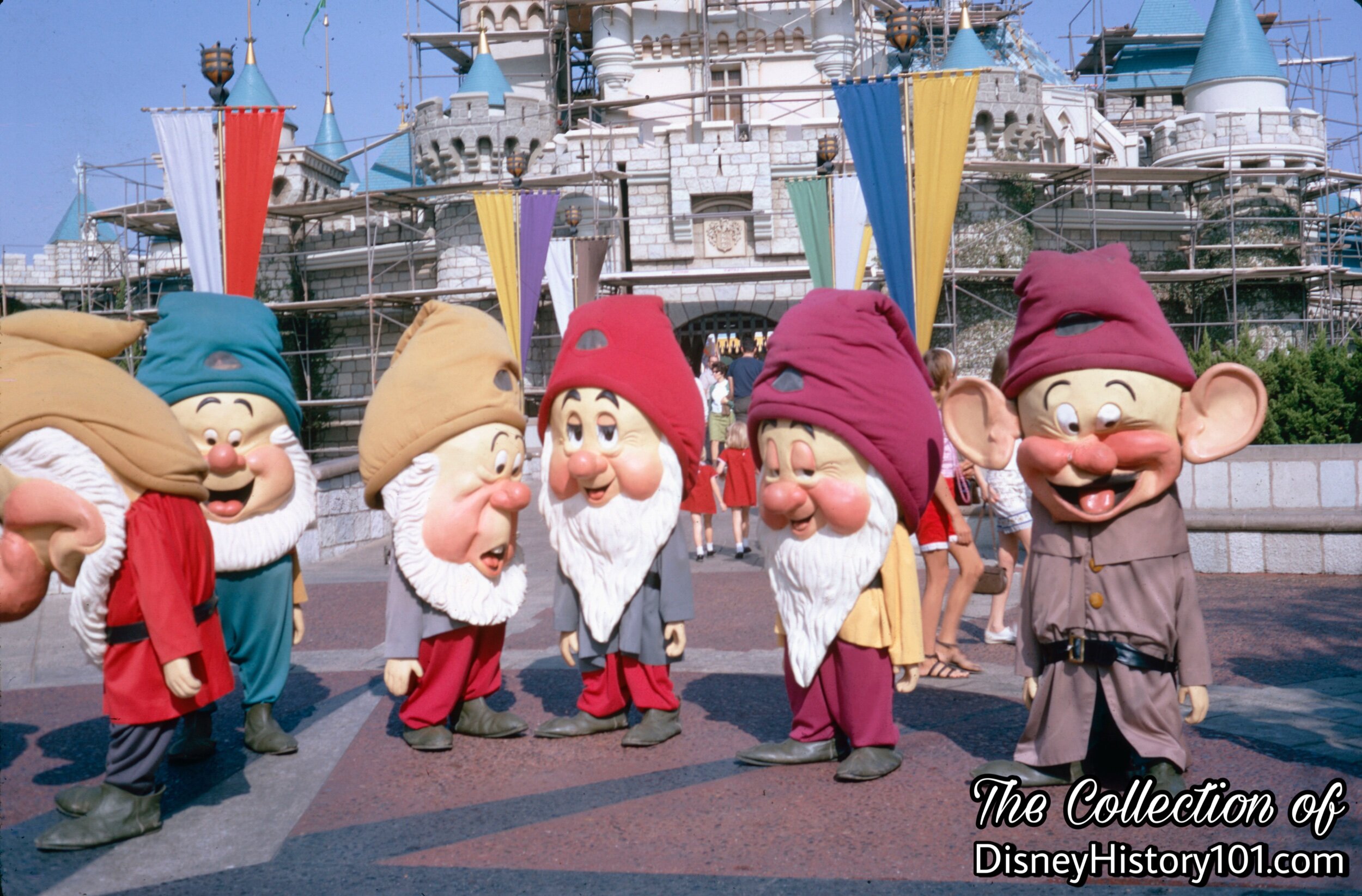
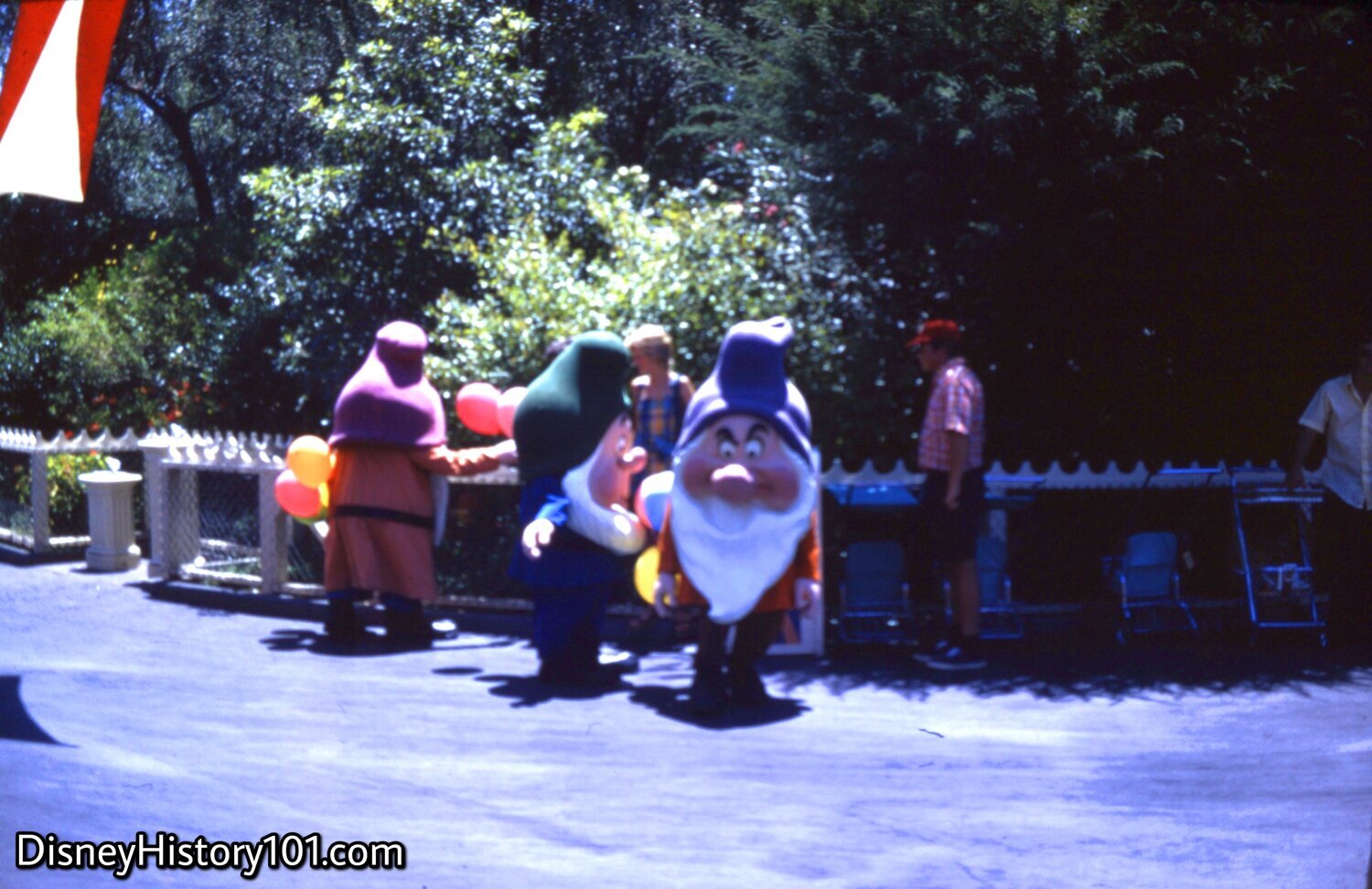
Seven Dwarfs
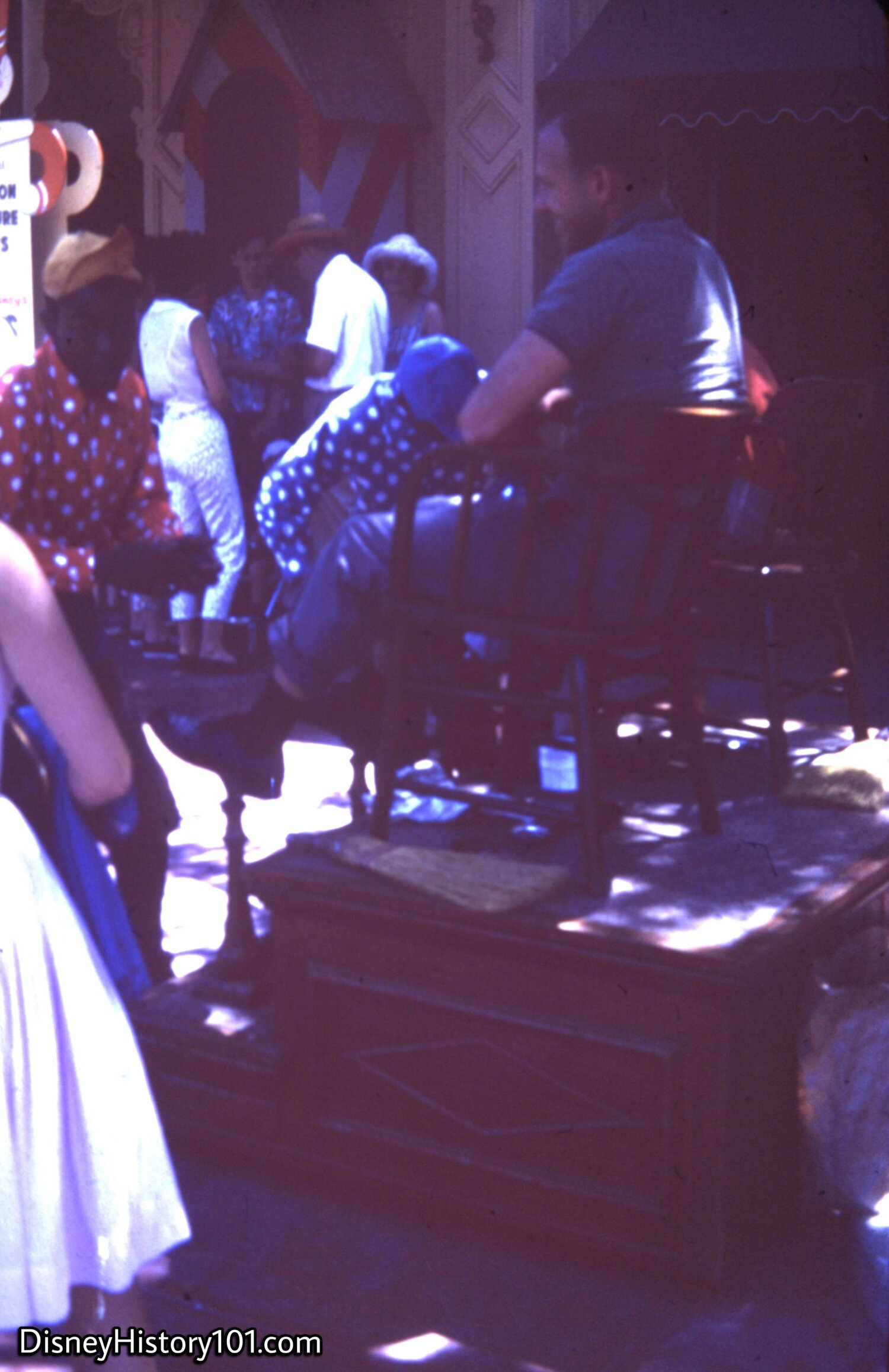
SHOE SHINE BOYS
Come and take a load off while the Shoe Shine Boys (Edward Graves and Eugene Jackson, Jr.) entertain you with their lively patter and soft-shoe routines! Backstage Disneyland (published Summer-Winter of 1963) published this short “People, People, People” article on the duo :
“This issue we’re not featuring just one person but a group of people who make up Disneyland. Each one is important to the Magic Kingdom. Our shoeshine boys have been in the Park for four years and who knows how many shoes they’ve shined and how many people they’ve delighted with their singing and dancing.
Eddie took dancing lessons for eight years. He got started dancing because his friends started taking lessons and he wanted to stay with them. They stopped but his mother wouldn’t let him. He appeared in the films : McGraw and Porgy and Bess. Eugene’s father told Eddie’s family about the auditions being held out here and Gene got the job. He wants to make dancing his profession.
Gene comes from a show business family. His father was Pineapple in the Our Gang comedies. Gene has been dancing ever since he was 3 years old. He also plays the trumpet and the harmonica and does magic. His first appearance on tv was at the age of 4. At 7 he appeared in Dreamboat with Alan Ladd and has appeared in such films and television shows as : Porgy and Bess, Toast to Jerome Kern, Manhattan Towers, Pygmy Island, and Artists and Models. Gene hopes to get into the producing end of show business.”
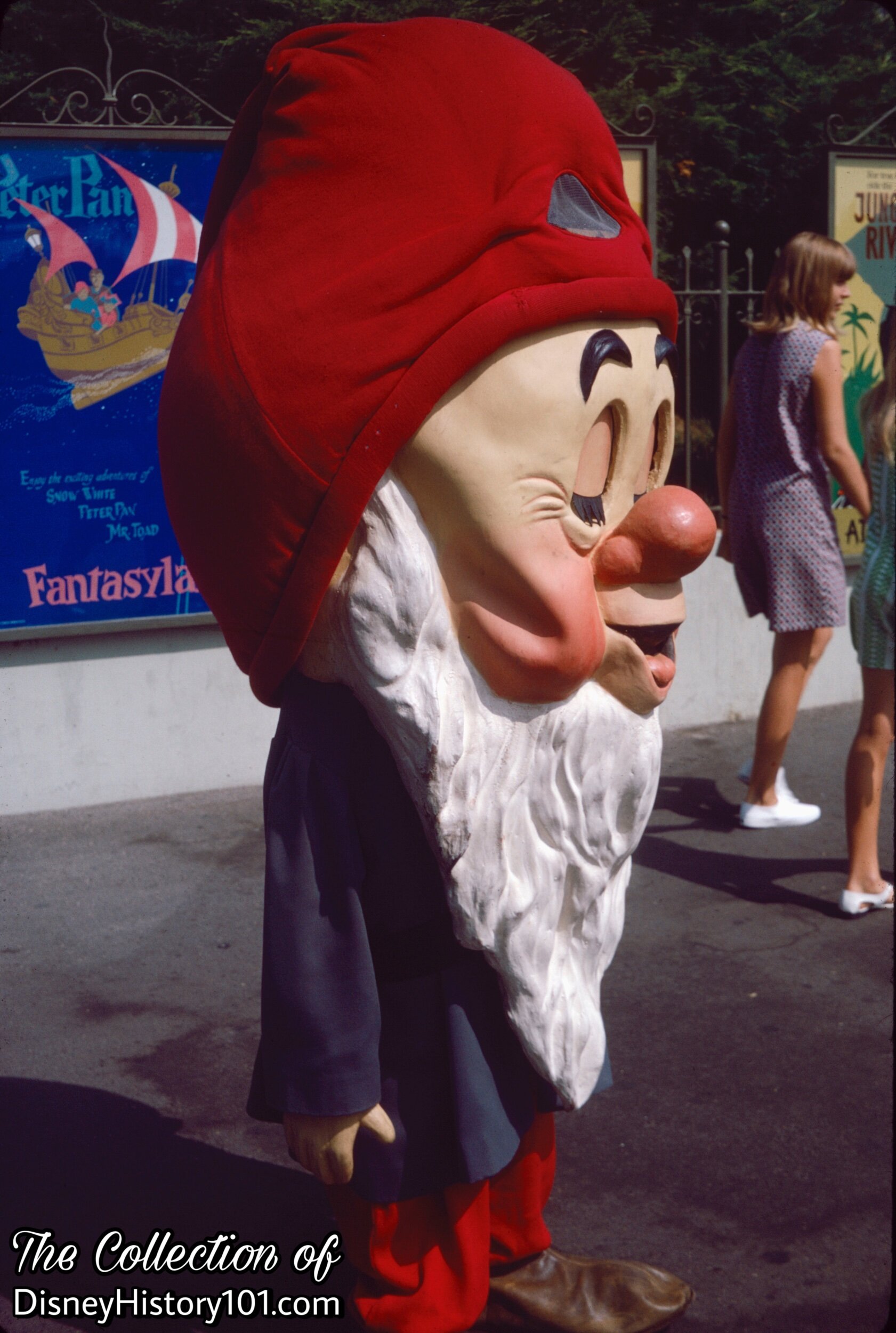
SLEEPY, (1967)

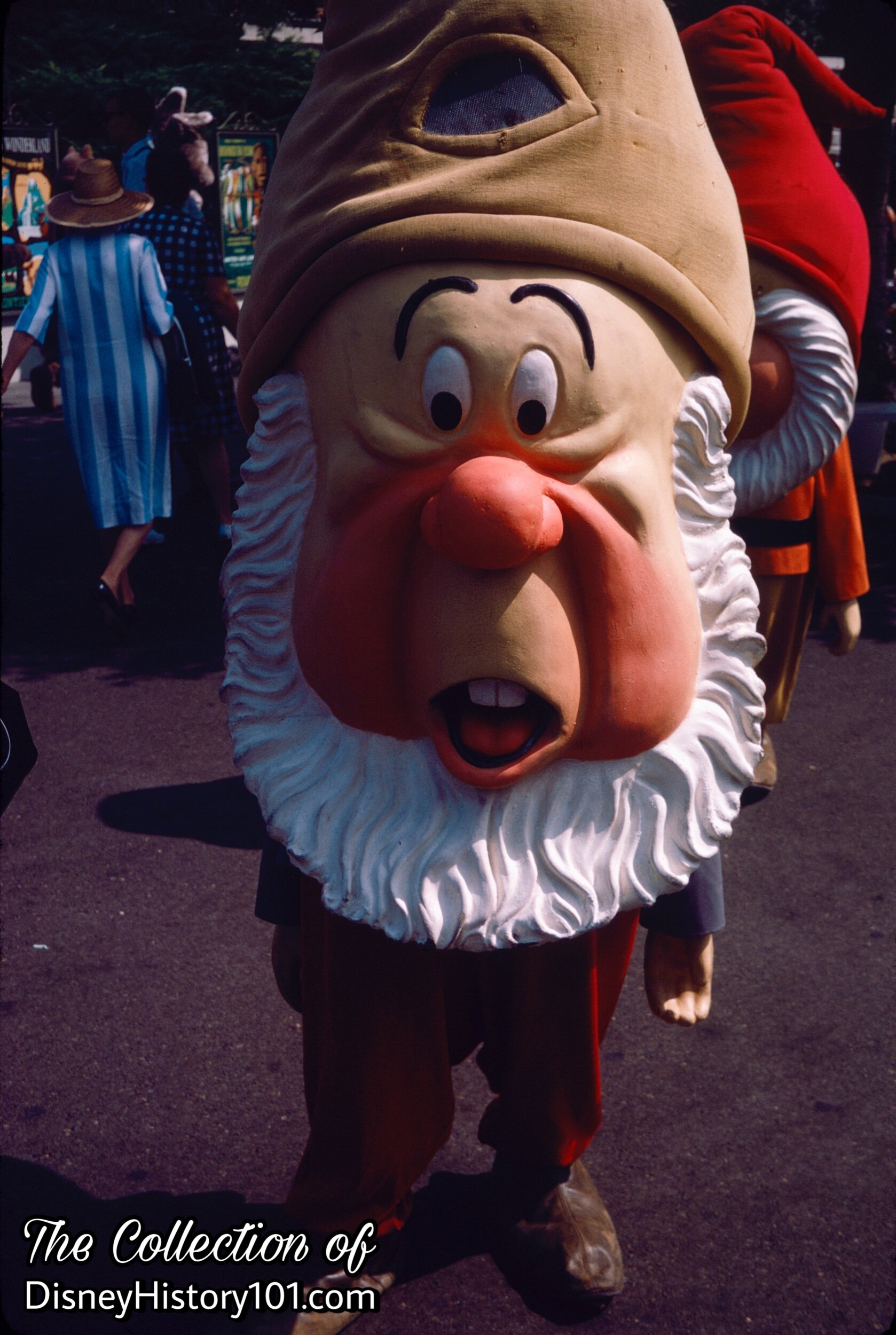
SNEEZY, (1967)
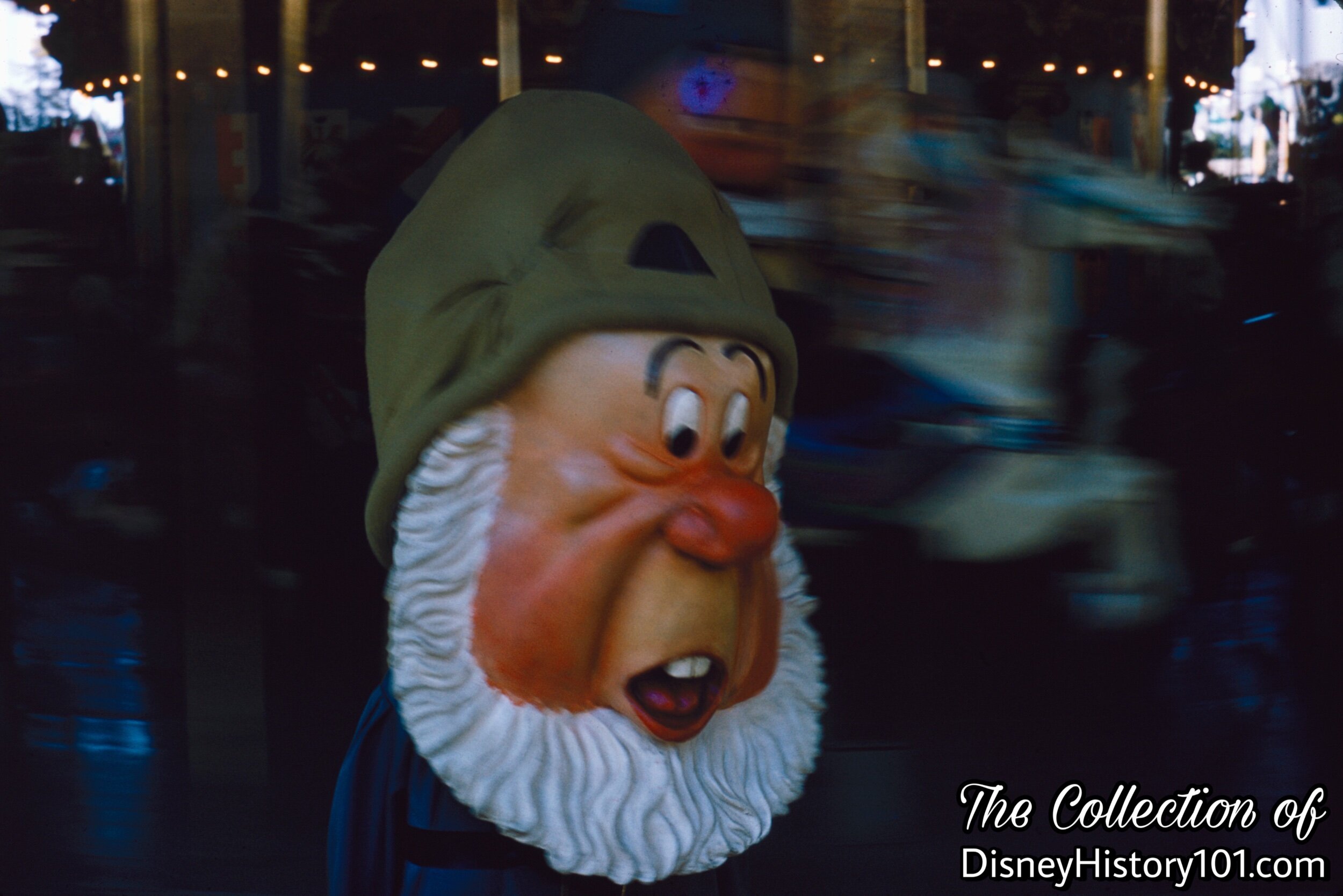
(1956)
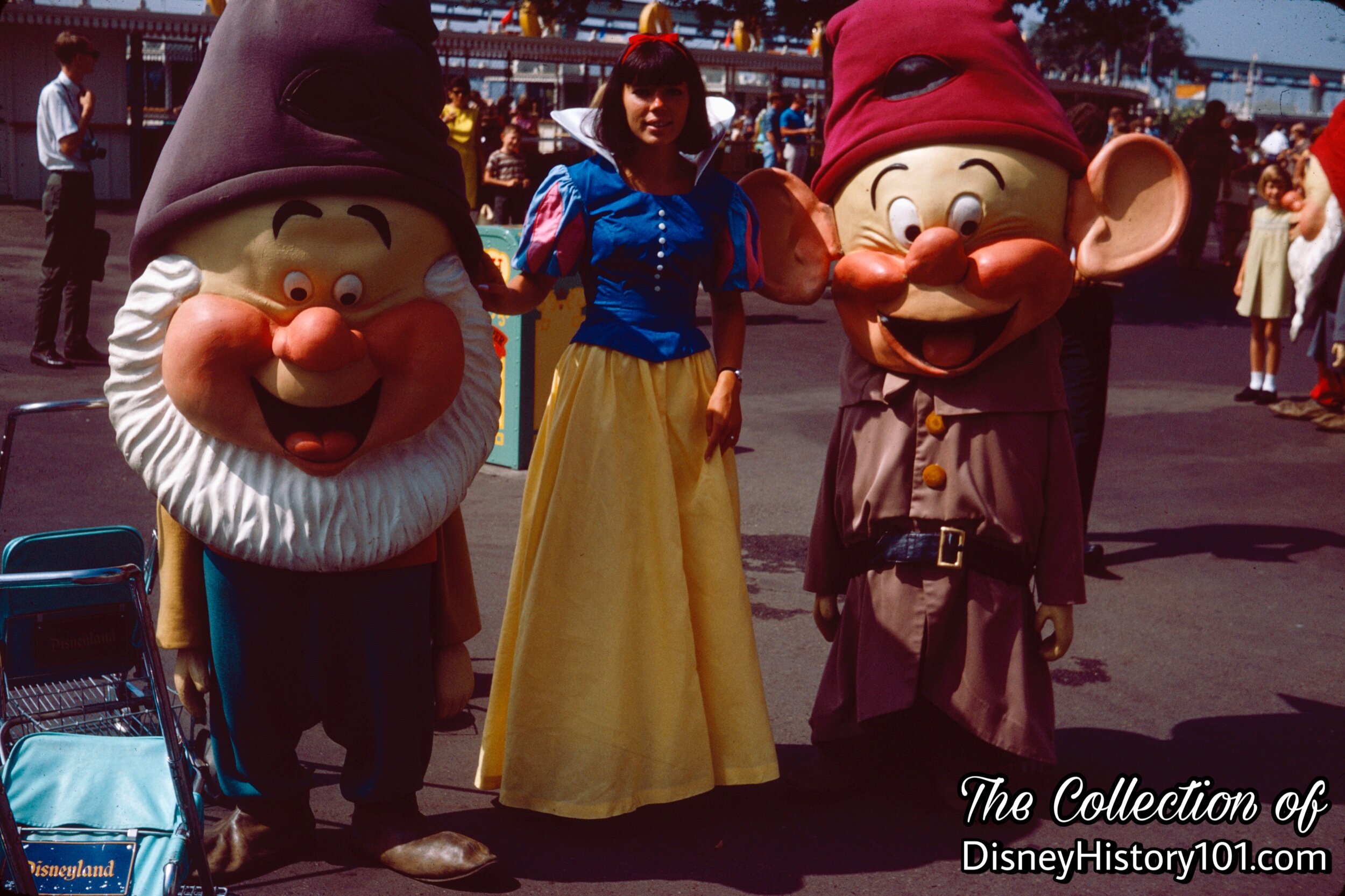
SNOW WHITE, Happy, and Dopey, (c. 1967)
You may recollect seeing these friends on the front of postcards sold at Disneyland from the late 1960s (c. 1967) to the 1970s! Linda Westin (pictured) was close to Snow White during the time this Vintage View memory was made.
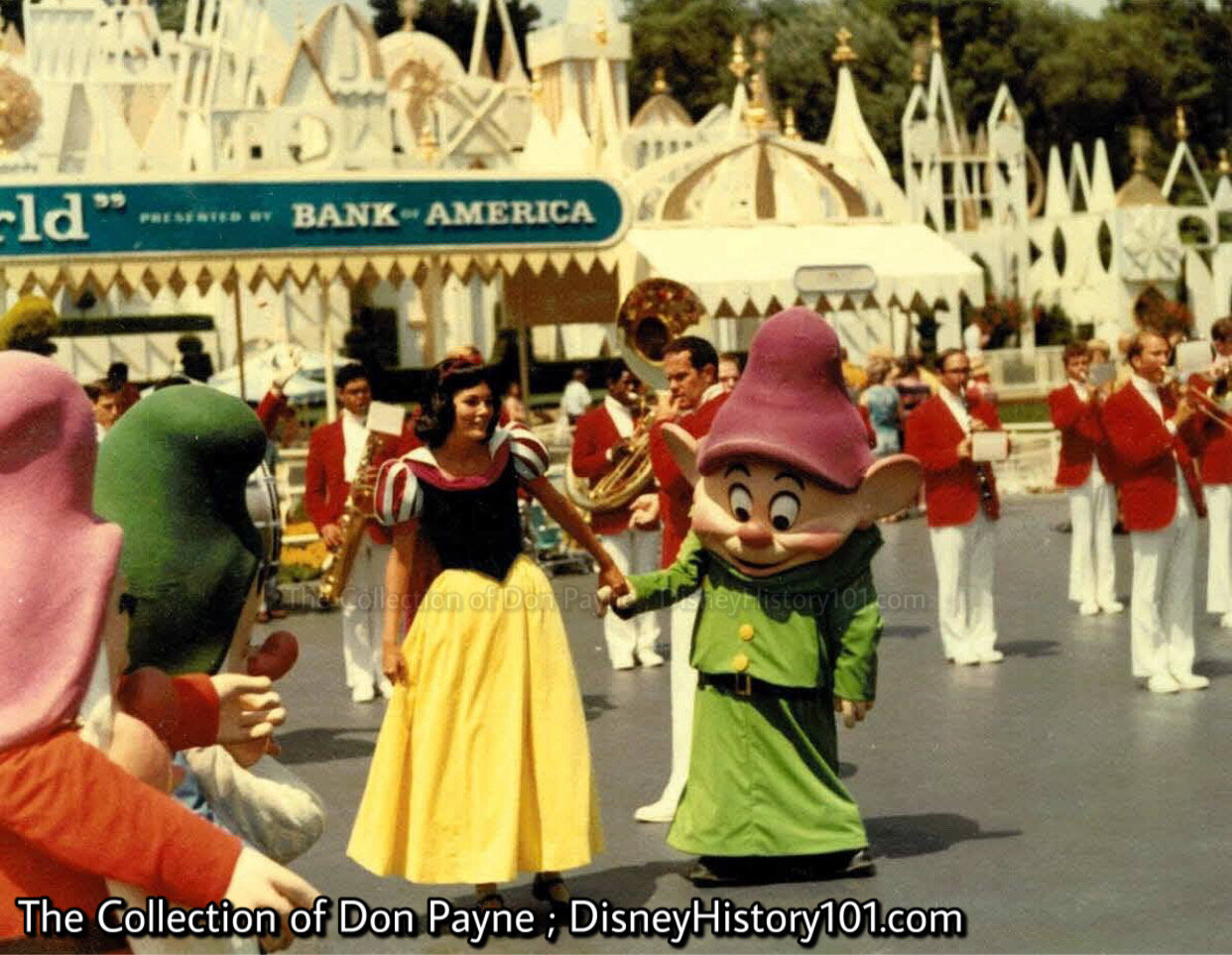
SNOW WHITE and the Seven Dwarfs, (September, 1971)
According to former Entertainment Department employee Don, we’re looking at “Dopey acting dopey with Snow White”. This cavalcade of characters appeared twice daily during June 20 - September 12, during the summer season saluting the 50th Anniversary of Snow White and the Seven Dwarfs.
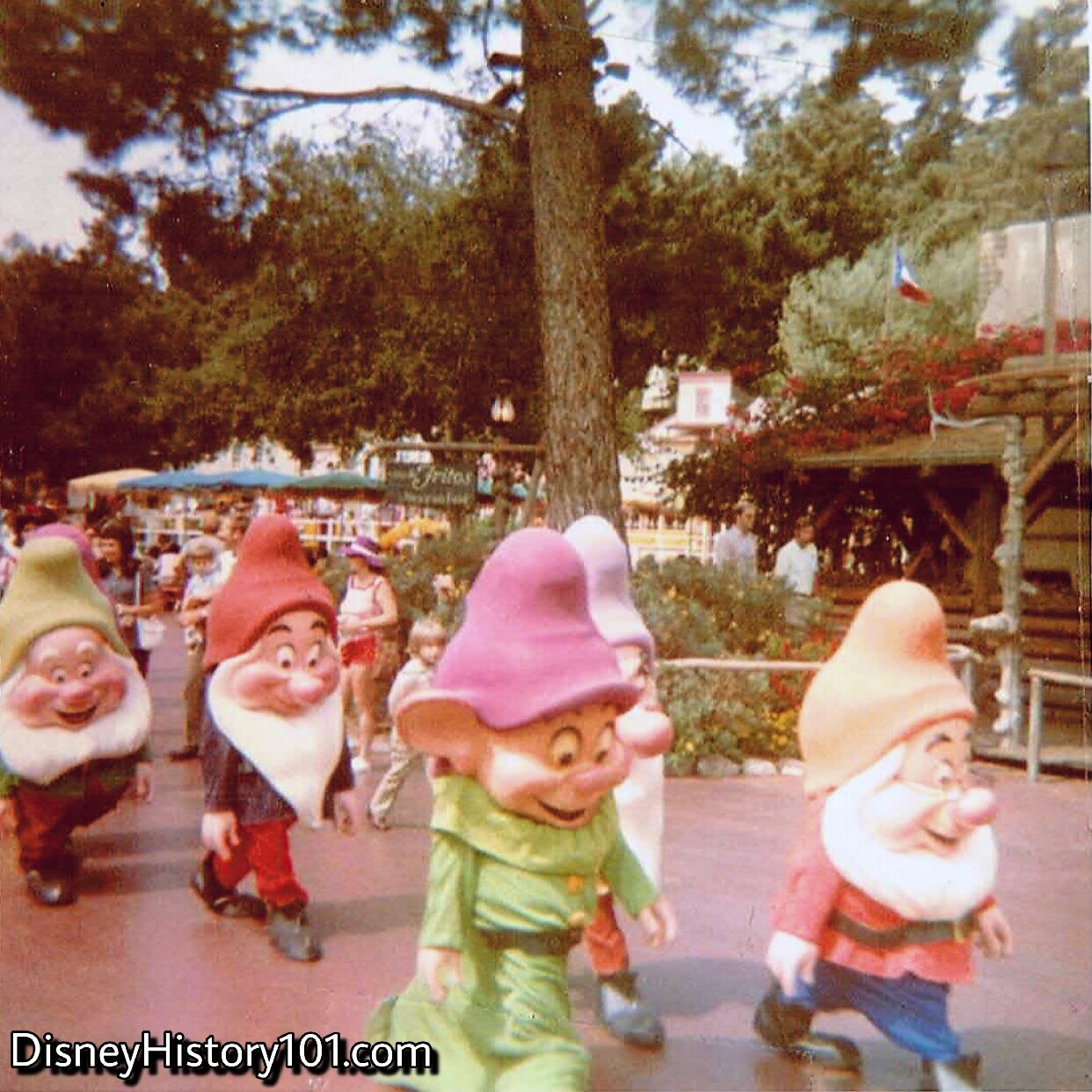
SEVEN DWARFS in Frontierland
The Seven Dwarfs march through Frontierland in front of Casa de Fritos.
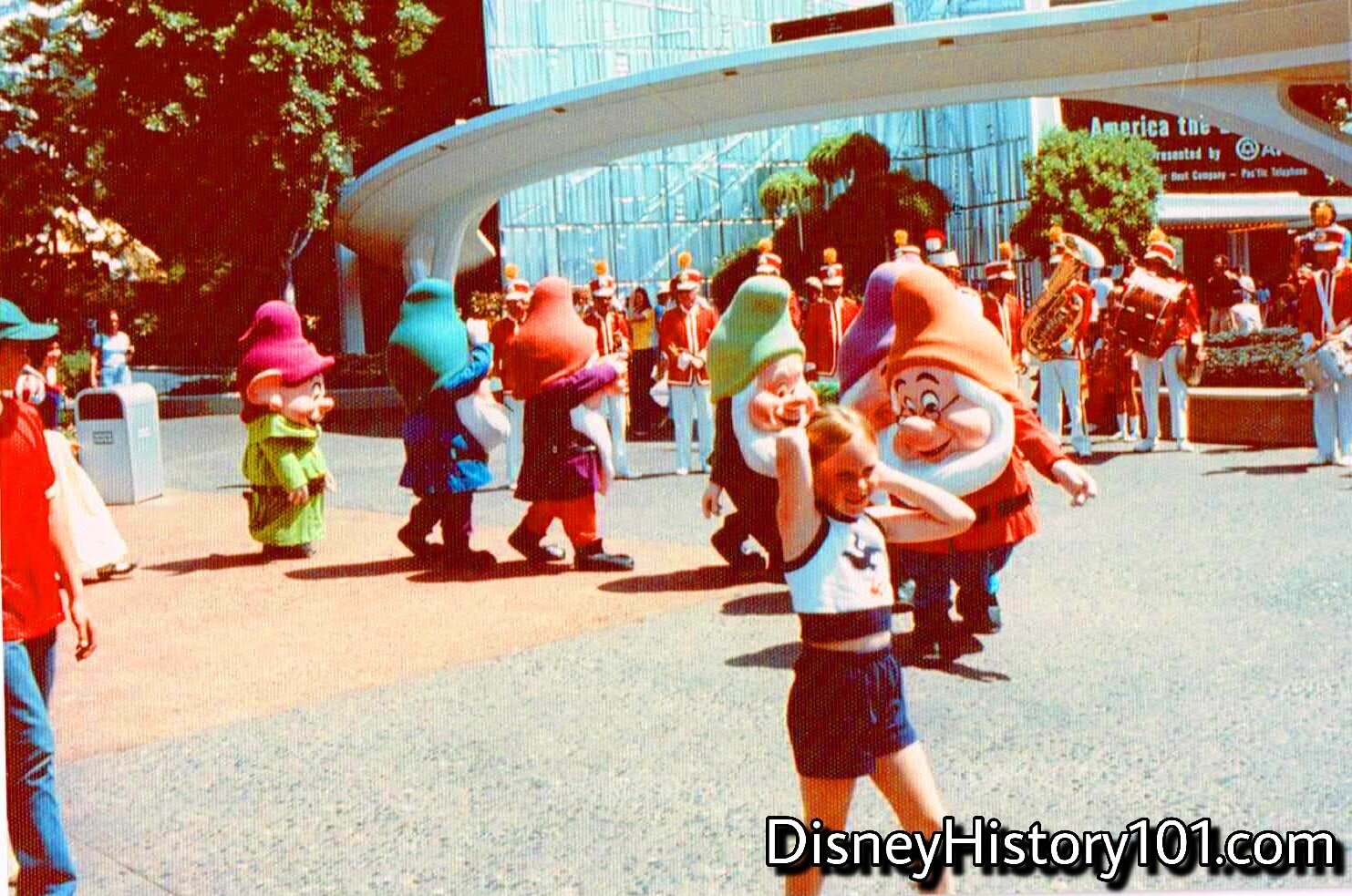
SEVEN DWARFS in Tomorrowland
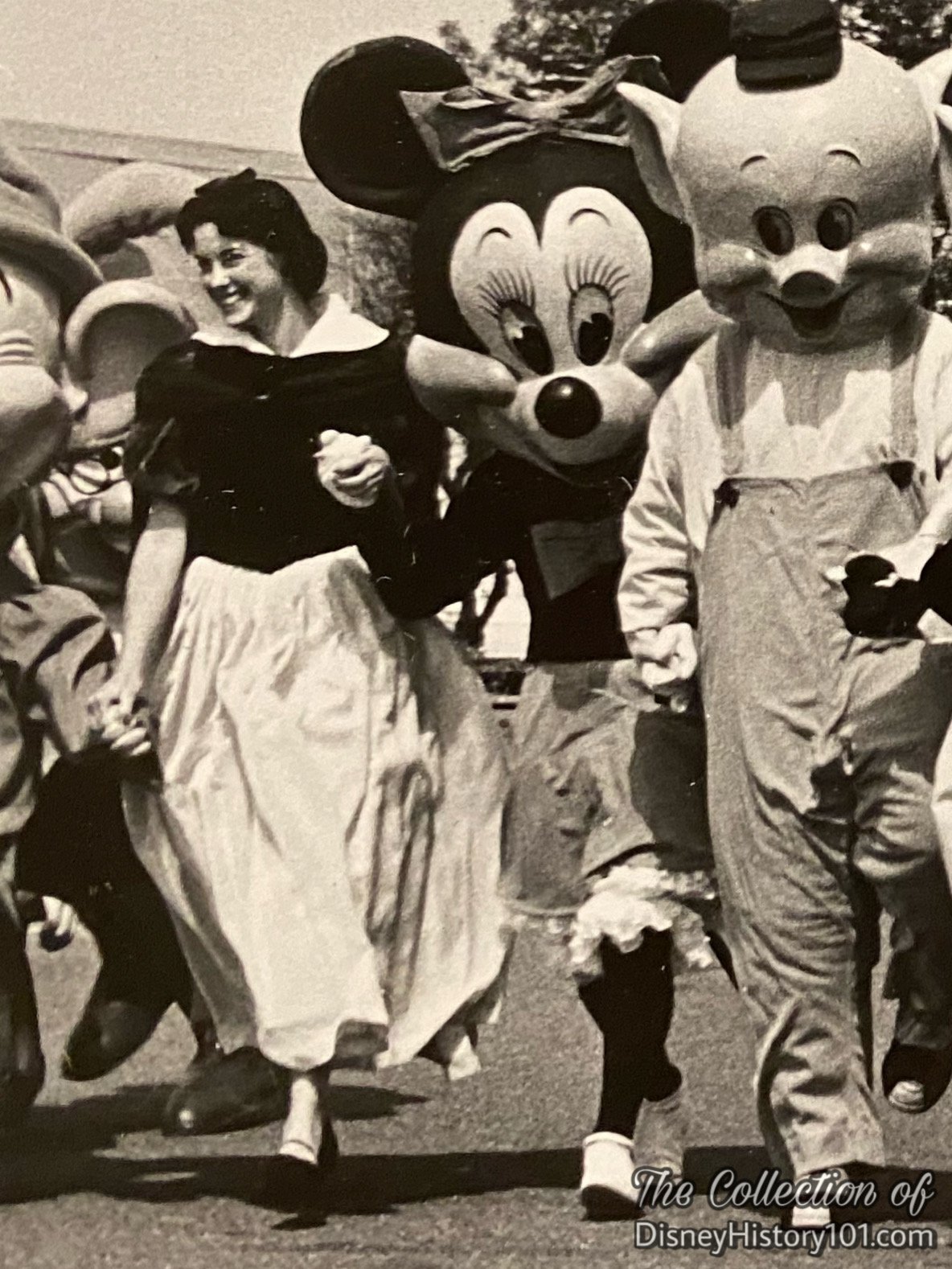
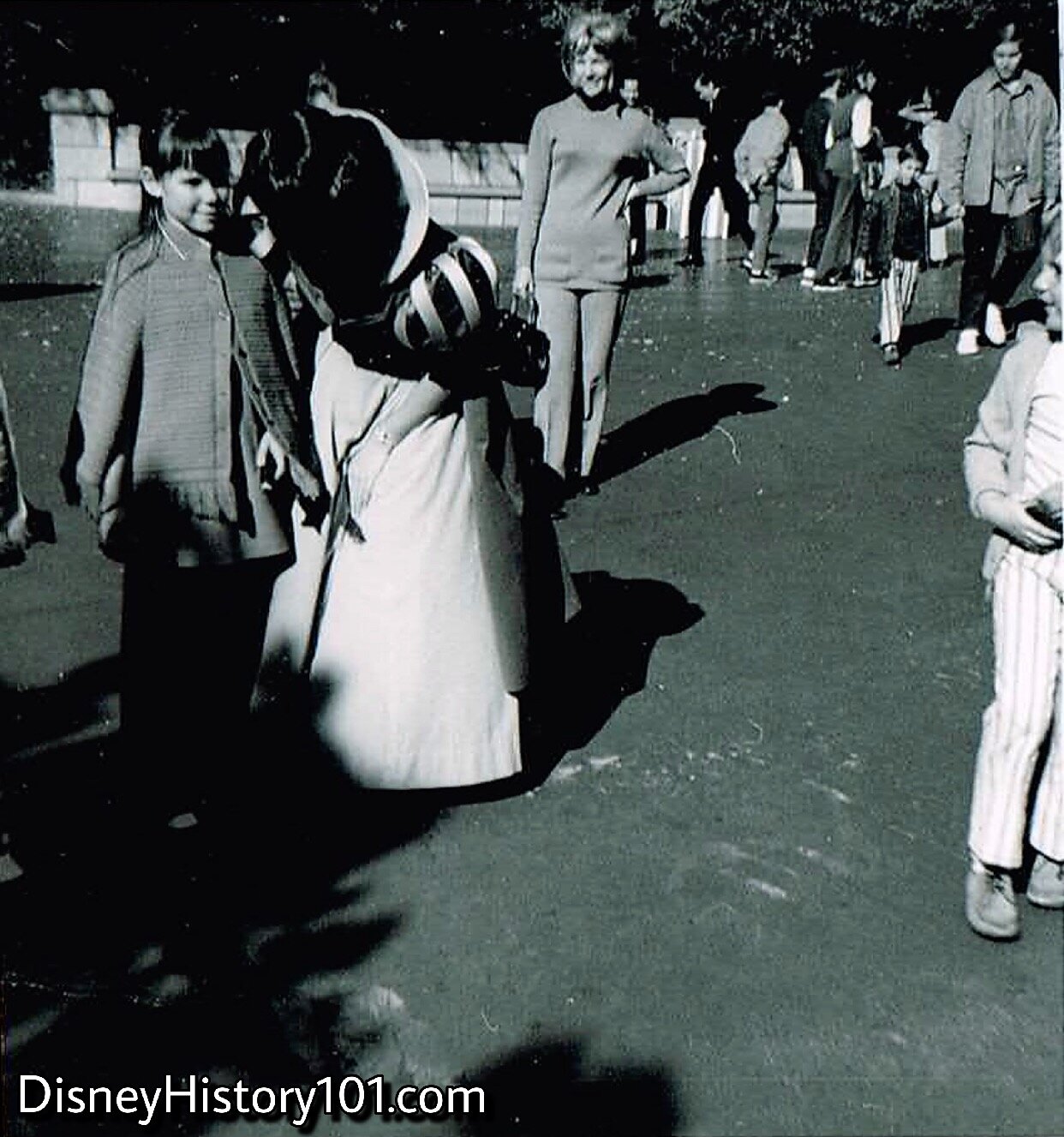
SNOW WHITE, (1971)
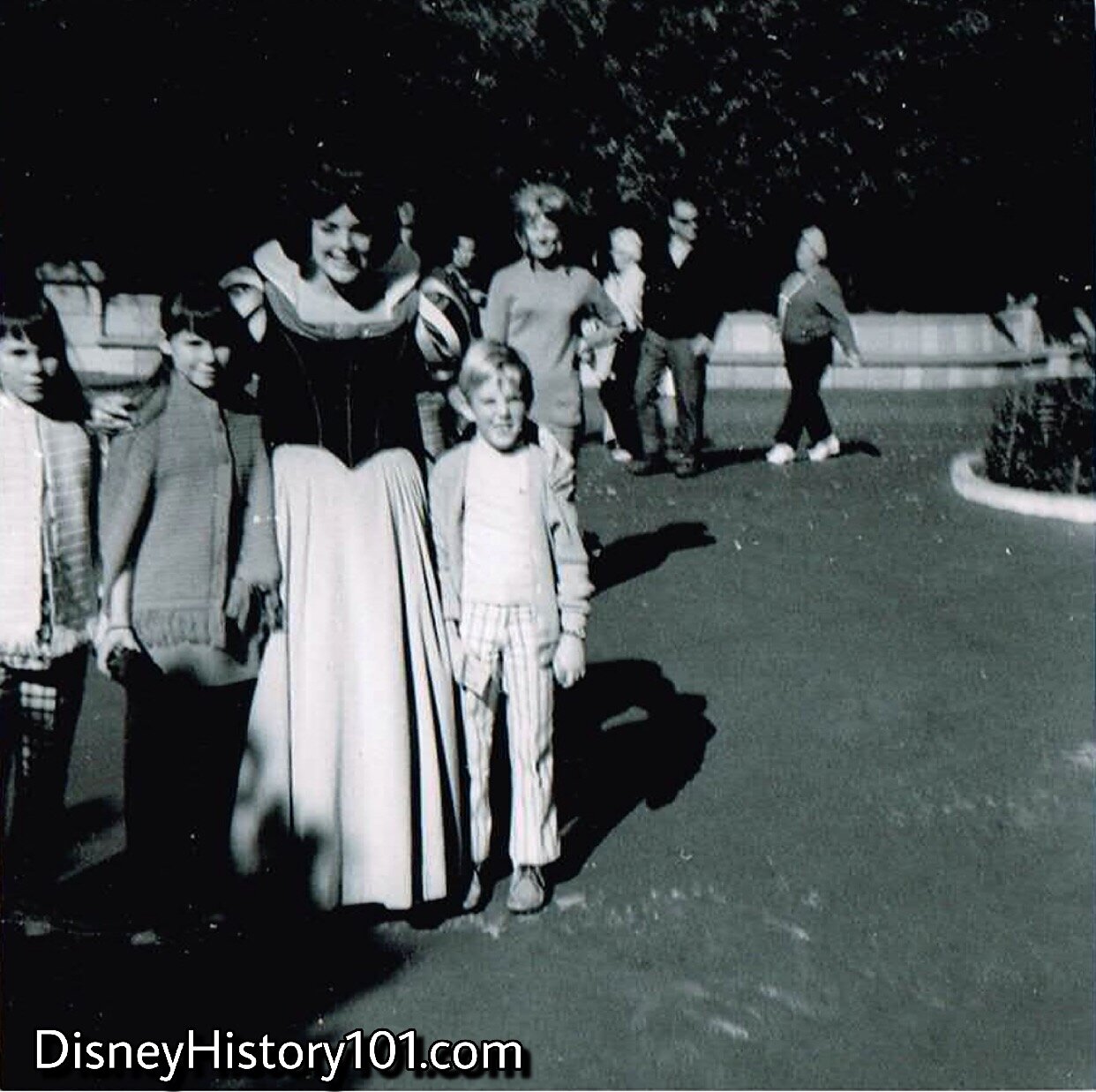
SNOW WHITE, (1971)
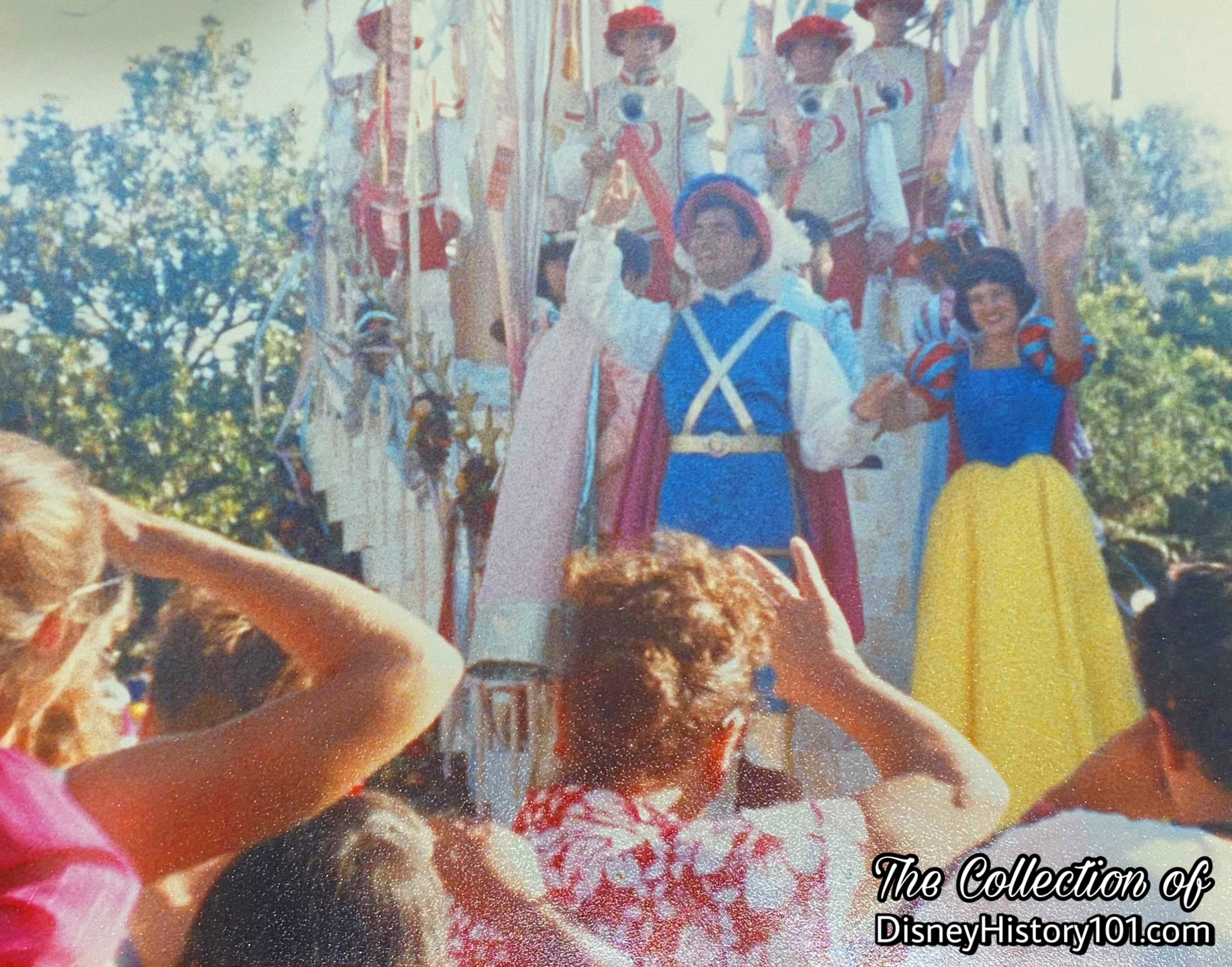

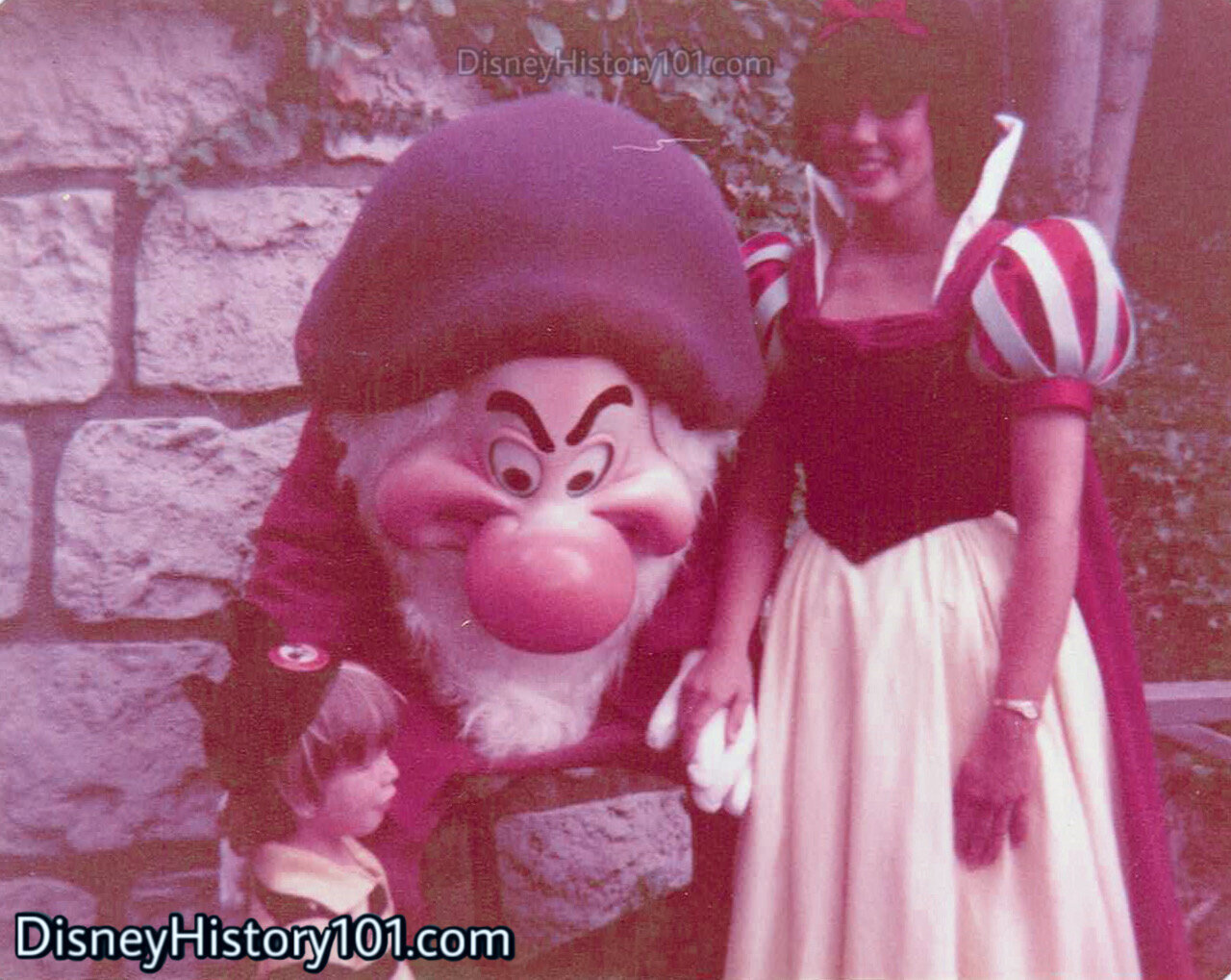
SNOW WHITE
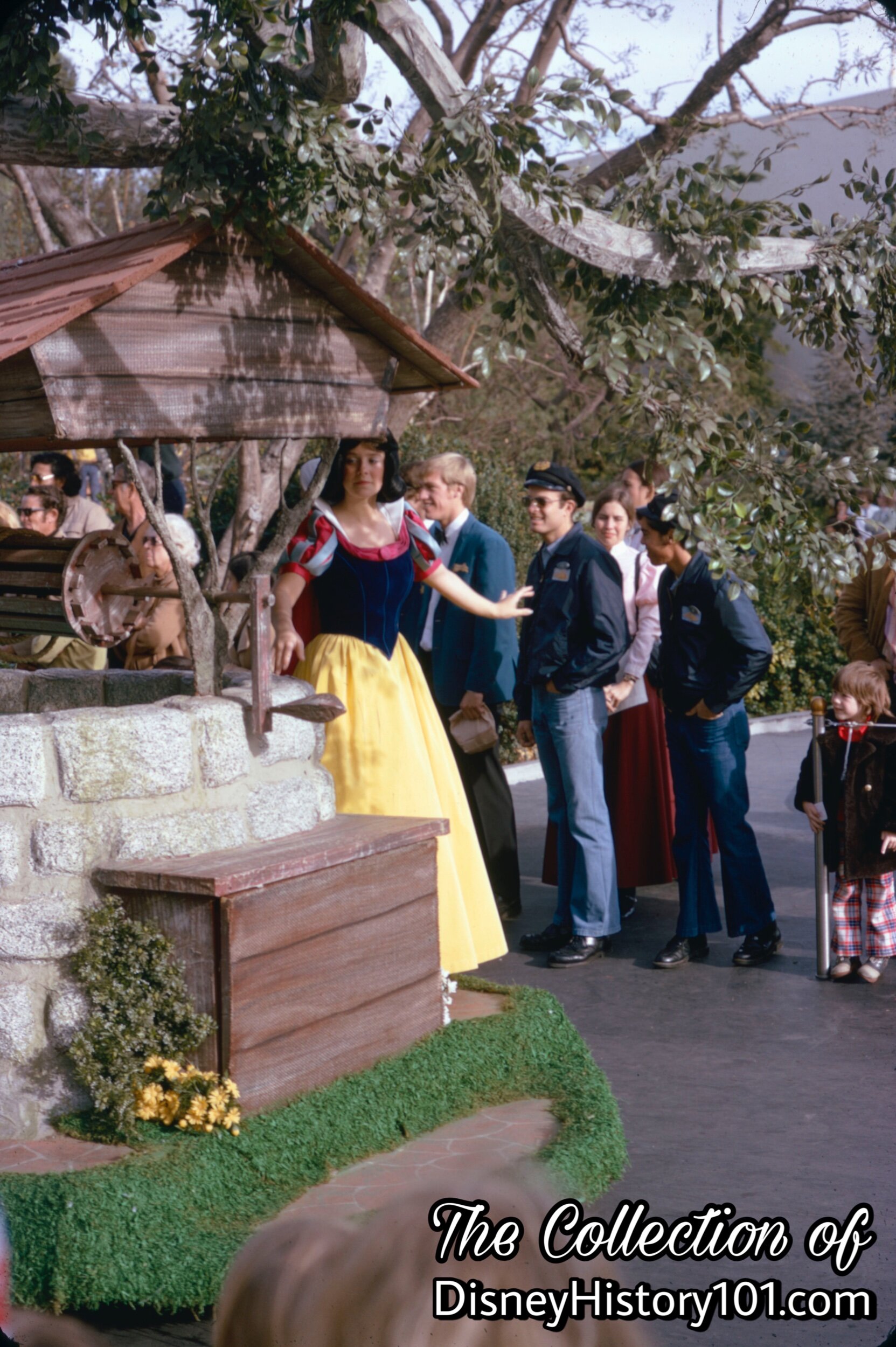
Snow White and Wishing Well Float, (c. Winter, 1972)
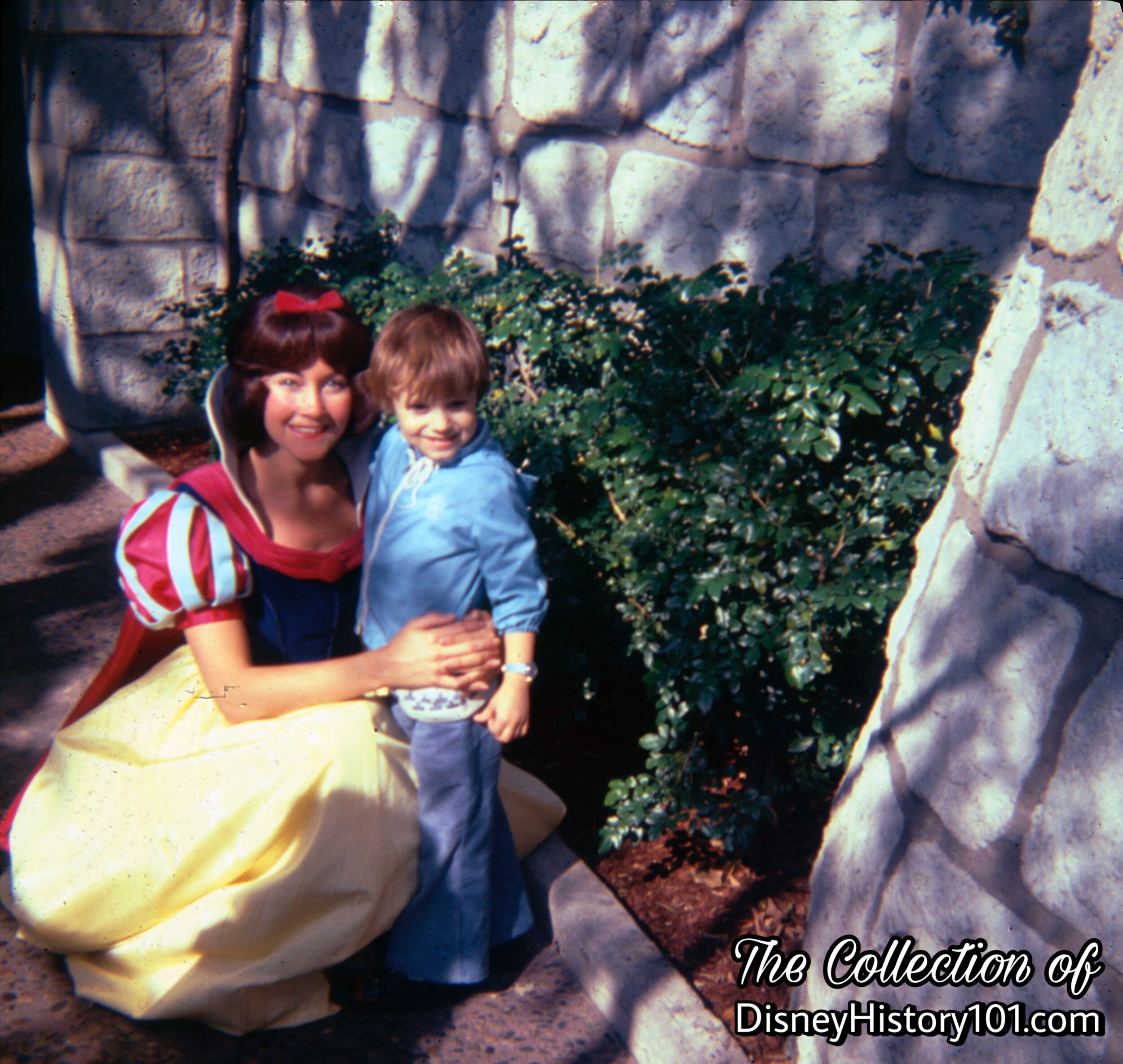
SNOW WHITE, (January, 1977)
Two years after this memory was captured, Snow White and Prince Charming had a Wedding Procession, a royal celebration held twice daily at noon and 5p.m. on Mother’s Day, May 13th, 1979.
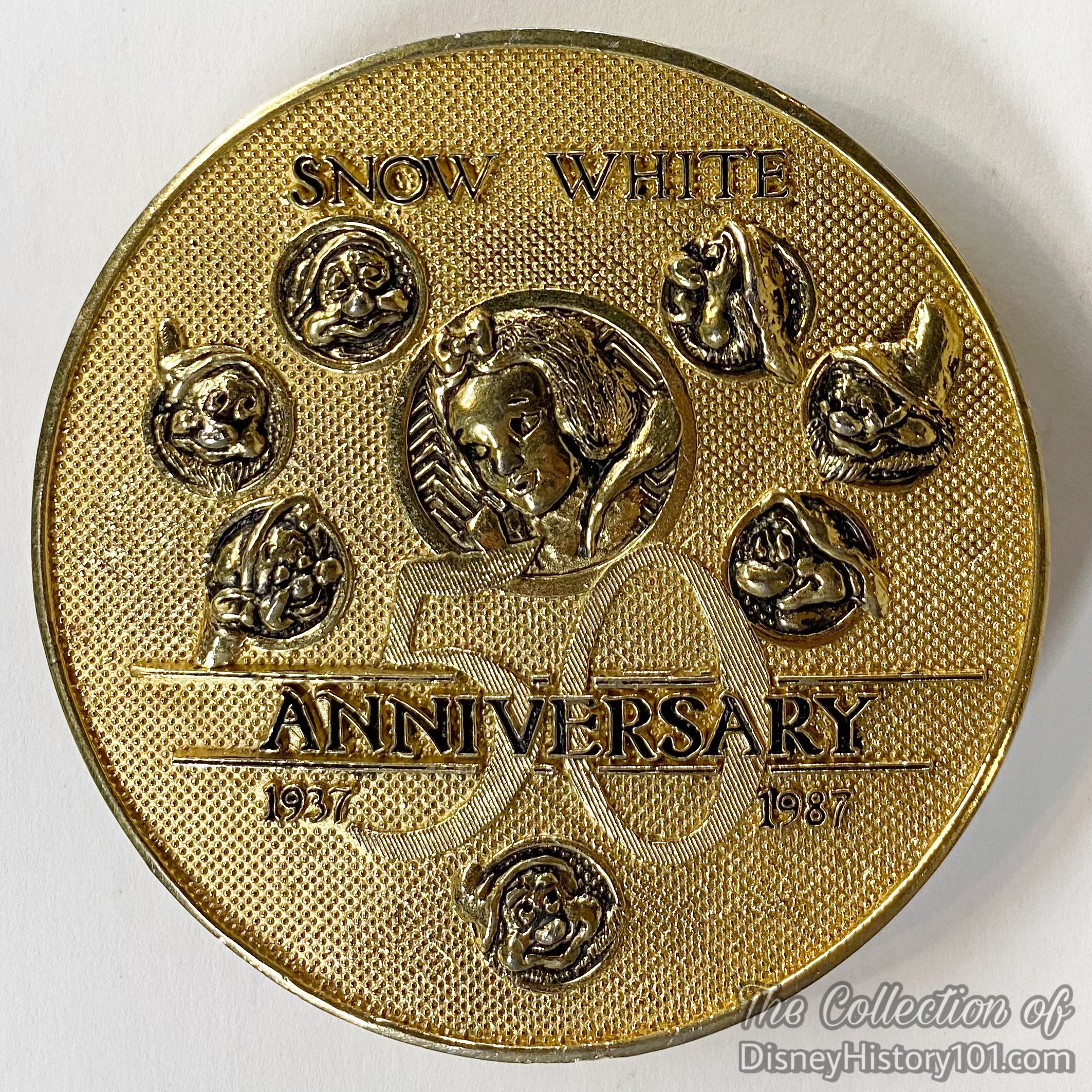
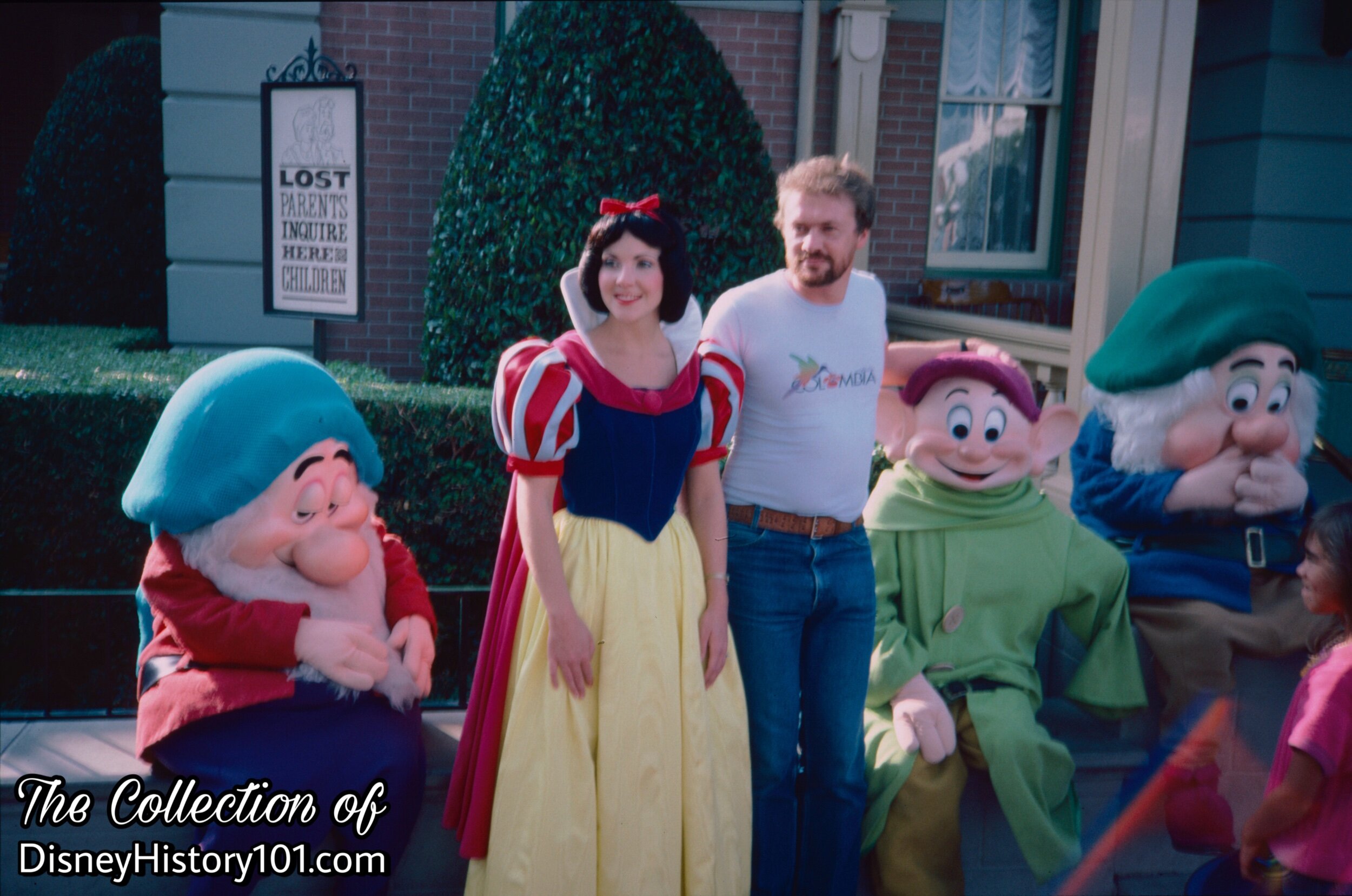
SNOW WHITE
The very same Snow White (pictured above) appeared in “Believe You Can, And You Can” - a Del Monte- sponsored television show (starring Mari Amsterdam and Heather O’Rourke) - which was shot before New Fantasyland opened to the public. In 1987, Snow White and the Seven Dwrafs commemorated a Golden Anniversary Celebration and cordially invited guests to attend.
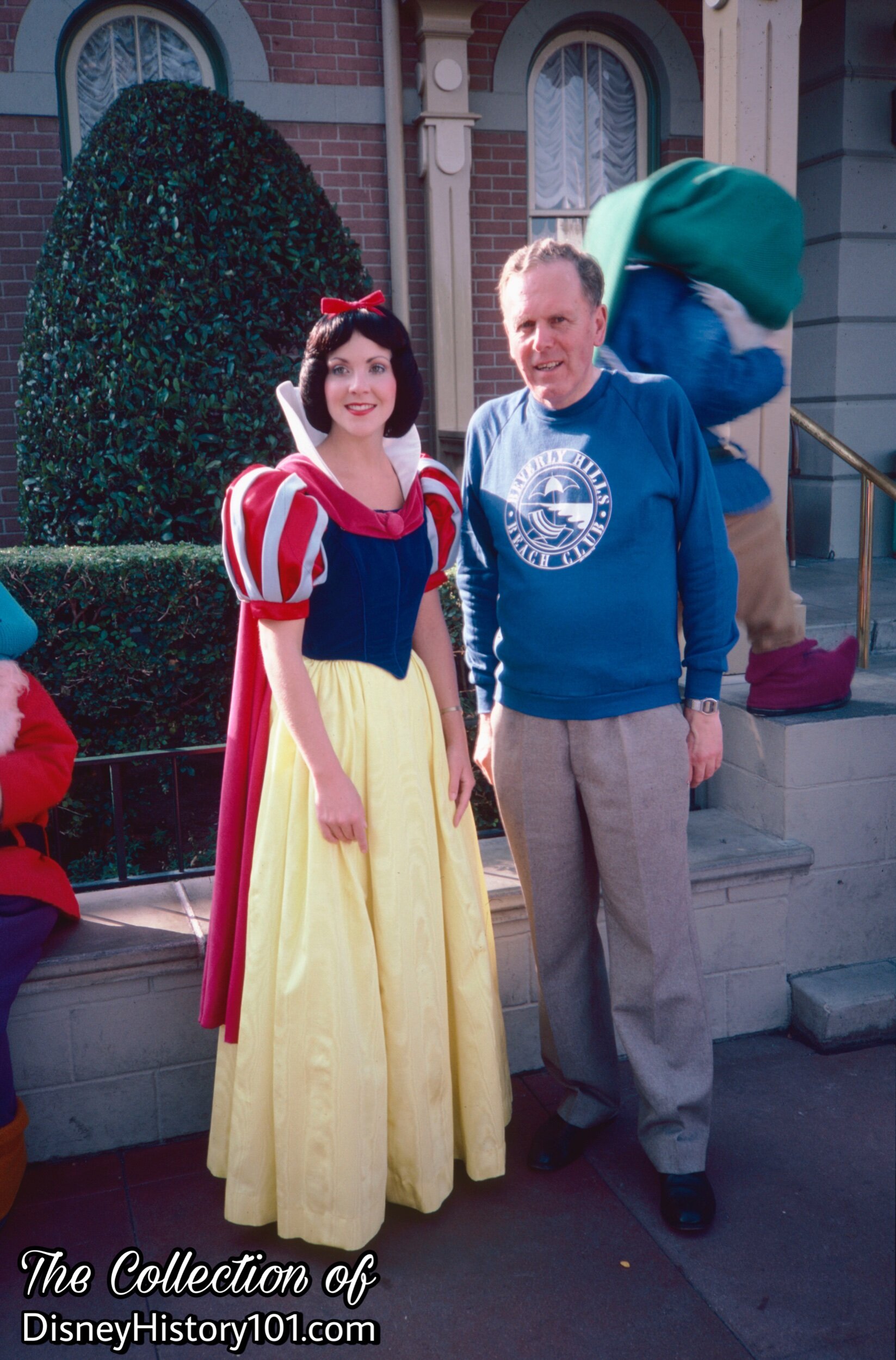
SNOW WHITE

Snow White extends a courteous smile.

An animated Snow White Face Character extends a friendly gesture.
“With a smile and a song,” Snow White demonstrates the power of the “gesture… a physical movement that is not immediately repeated… used to emphasize a point.”
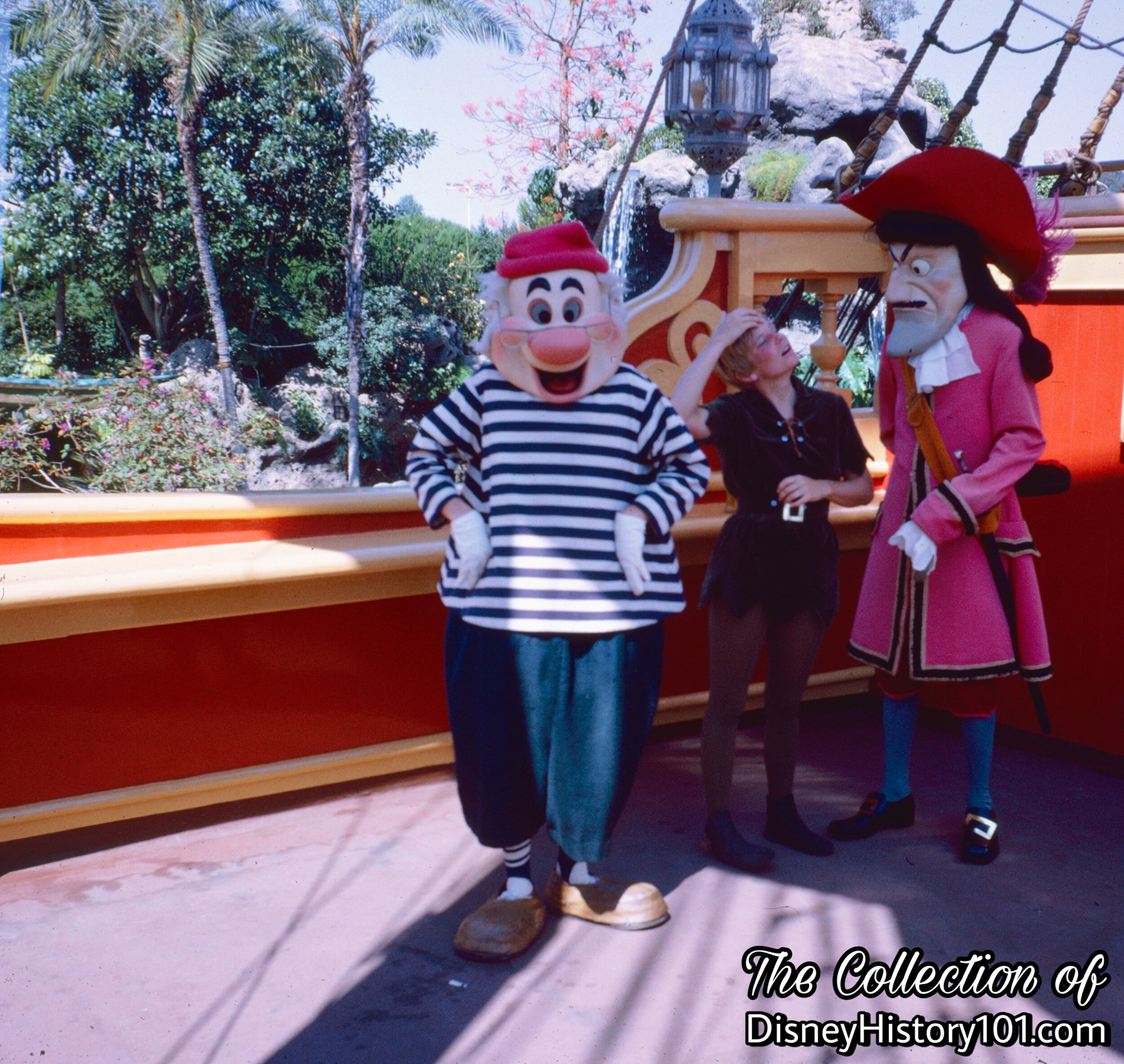
Smee, Peter Pan, and Captain Hook

•Tantor -
•Tarzan - Tarzan (June 18, 1999)
•Terk - Tarzan (June 18, 1999)
•Thumper (Bambi) - Thumper appeared in Walt Disney’s Bambi (released August 13, 1942), due to the contributions of artists like Marc Davis. Some time later, both Flower and Thumper were two of the newest Characters during the summer of 1964. Thumper was part of the Pre-game “Walt Disney and Disneyland Salute to the California Angels” at the new Angels Stadium on Saturday, April 23rd, 1966!
During the winter season of December 19, 1970 through January 3, 1971, he appeared at locations near Small World.
•The Three Pigs (Silly Symphonies) - The Three Pigs made their film debut on May 27, 1933, winning an Academy Award for Best Animated Short Subject of 1932-1933. At the time, their hit song “Who’s Afraid of the Big Bad Wolf” became “an anti-depression anthem.” But even more, the namesake character’s personalities were individually defined! As Walt once said, “I try to build a full personality for each of our cartoon char-acters--to make them personalities.” [“The Wisdom of Walt”]
The first incarnations of The Three Pigs were notably featured with child actor Kevin “Moochie” Corcoran on the cover of “Jack and Jill” magazine (published May, 1960). Prior to this, they helped introduce “Disneyland ‘59” (presented by Kodak), by supporting the “giant paper drum” which read “Disneyland ‘59”, through which Mickey Mouse leaped!
Also in August of 1962, Lloyd Richardson, Larry Clemmons, Joe Marquette, Coy Watkins, and Jack Leppert (of the Walt Disney Studio) filmed and shot scenery for Studio Production #3185. During this visit, a plate was shot with “Three Pigs” and six others Characters (including the Big Bad Wolf) in front of the castle.
After some sort of hiatus, the Disney Characters made a return during the winter if 1962. According to the Talent Schedule “All of our regular Characters, plus a return visit by the 3 Pigs and Wolf and Pinocchio, J. Worthington Foulfellow and Gideon, will highlight this year's Holiday Season.”
In 1964, through a special business arrangement with Al Dobritch (of the Dobritch Circus), the Three Pigs and other Disneyland Characters would make appearances in high-wire circus acts outside of Disneyland - first at the Canadian National Exposition (held August 24 - September 5, 1964), followed by the Detroit Shrine Circus (January 29 - February 14, 1965), and the St. Louis Police Circus (held April 22 - May 9, 1965). During these appearances, the Three Pigs worked “closely” with three teenage aerialists of the world-famous Flying Cavarettas - Marlene, Maureen and Joe.
The Three Pigs (Fifer, Fiddler, and Practical Pig) were part of the Pre-game “Walt Disney and Disneyland Salute to the California Angels” at the new Angels Stadium on Saturday, April 23rd, 1966!
Referred to as the “Orange Pig,” “Green Pig,” and “Blue Pig,” the trio made regular appearances with the “Wolf” at the “Small World” Area, greeting guests as part of the Character Program, “throughout the Christmas Holidays” (daily between parades, from 9:00am to 11:45am). [“Disneyland Holiday Talent Master Schedule,” prepared for the period of December 16, 1967 through January 1, 1968] Cast Member Mike Lopez was once close to Orange Pig.
The second incarnation of The Three Pigs (Fifer, Fiddler, and Practical Pig) can be seen both in the background scenes of “Disneyland Showtime” (a c.1970 Wonderful World of Disney episode), and alongside the Osmond Brothers.
•Tick-Tock Crock - By April through May of 1964, the Disneyland Wardrobe Department was preparing for the debut of “the Crocodile” during the summer of 1964. Jim Wormhoudt (c.1969) once served as a Pageant Helper.
•Tigger (Winnie the Pooh) - When he isn’t bouncing, eating extract of malt, or giving Roo a bouncing lesson, Tigger can be found at Disneyland.
•Tinker Bell - Tinker Bell appeared in Walt Disney’s Peter Pan, due to the contributions of artists like Marc Davis.
Just a short time later, “the classic imagery of Tinker Bell igniting fireworks over the Castle first began in 1954 with the debut of the Disneyland TV series,” according to “Disneyland: Then, Now, and Forever” by Bruce Gordon and Tom O’Day.
Out of all the Disney Characters, Tinkerbell was selected as the official “mascot” of Disneyland (Walt didn't choose Mickey in case Disneyland was not a success).
Tinker Bell began her 15mph “summer flights from the peak of Matterhorn Mountain and across Sleeping Beauty’s Castle, settling off the nightly ‘Fantasy in the Sky’ fireworks spectacular” for the first time, on June 9th, 1961, according to “The Disneyland Diary.” This magical (and colorful) 784 foot-long flight from atop the Matterhorn (at 147 feet in the air) to the Fantasyland Break Area (50 feet in the air) was (of course) accomplished by one aerialist (the then 71-year old Tiny Klein of Inglewood, California), a team comprised of a Wardrobe Hostess, a typical 8-person Maintenance Division “flight crew,” a “launching crew” (responsible for securing safety apparatuses and performing tests) and a “catching crew” (anticipating her arrival on the 10-foot “flight deck” square). While Walt preferred that no Disneyland Cast Member was to be employed who had previous experience with any amusement park, fair, or circus, it seems that Tinker Bell’s pageant helpers were one of the few exceptions.
Three years later, Tinker Bell (portrayed by Tiny Kline) made an appearance as Tinker Bell during “Disneyland Comes To The Hollywood Bowl” on Friday, August 1, 1958. Tiny appeared again as Tinker Bell on a one-hour Big Band television show which aired on KTTV in 1964. Disneylander and “55er” Frank Martines Tomorrowland supervisor recalled: “I had to shove Tinkerbell off the Matterhorn… She came to the mountain top happy, laughing...she was a gracious lady!” It was his duty to help Tinkerbell begin her nightly flight through Disneyland sky. Frank would accompany her up through the inner sanctum of the Matterhorn to her 'launching pad: He would make sure her harness was hooked up and that the trolley was hooked to the cable and then he'd start her on her way. “Tinkerbell in those days was a little old lady, named Tina Klein and originally she had wanted to fly through the sky HANGING BY HER TEETH!”
Other than Tinker Bell, Dumbo, Baby New Year, and (in the mid-Sixties) Mary Poppins flew over Sleeping Beauty Castle. Tinker Bell stopped flying atop the Matterhorn in 1978.
By 1985, a total of four amazing female aerialists had brought Tinker Bell “to life,” including - (1) the 71-year-old Tiny Kline (from 1961 to 1964) who was 4’10” and weighed 98 pounds (and initiated the colorful Fantasy in the Sky), (2) French circus aerialist Mimi Zerbini succeeded Tiny Kline for the following summer (of 1964), Judy Kaye who once performed with her circus family in the Mickey Mouse Club Circus (from November, 1955- January, 1956), began to fill the role for more than a decade (beginning in 1965), (4) and Gina DeMarco, the 4th Tinker Bell, by 1985. Gina would have the pleasure of more nightly flights than the others, from 1983 to 2005.
Tinker Bell’s nightly flights over Disneyland were so popular that she was spotted Far East over Cinderella Castle in the Walt Disney World Magic Kingdom when it opened. Tinker Bell embarked upon her first flight from Cinderella Castle on July 4, 1985, "flying" 750 feet, averaging 15 miles per hour and taking approximately 34 seconds for the trip.
During the era of Gina’s starring role, Alyja Kalinich (Disneyland Character & Entertainment Costume designer from 1979-1999) redesigned the costume.
By 2008, Walt Disney Imagineering Creative Development was considering new magical opportunities for Tinkerbell at Disneyland, including Entertainment and Merchandise collaboration and some sort of in-Park experience. By 2012, Tinkerbell was making daily appearances inside Pixie Hollow. Tinkerbell is a Disney Face Character who can talk, communicate with Guests, and create magical Disney experiences for them.
•Tomorrowland Spaceman - An unidentifiable “K-7 Space Man” met actress Spring Byington (of “December Bride) and child actor Bobby Diamond (of “Fury”) during their 1956 “TV Radio Mirror” photoshoot at Disneyland!
•Tomorrowland Spacewoman -
•Tweedle Dee & Tweedle Dum - This duo of Characters embody “the Disney Touch” of teamwork.
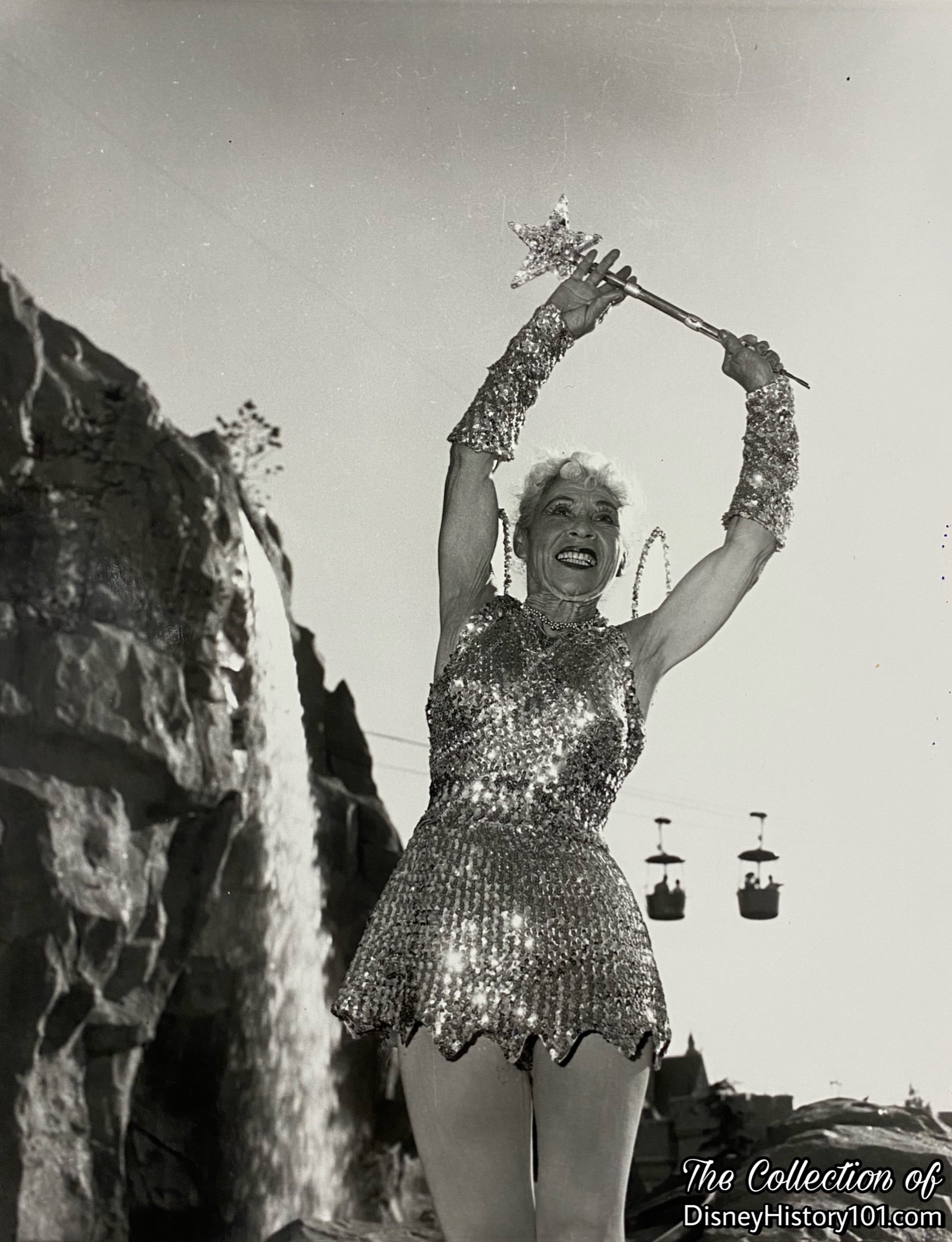
A press release photo depicts Tinker Bell; ©️ Walt Disney Productions.
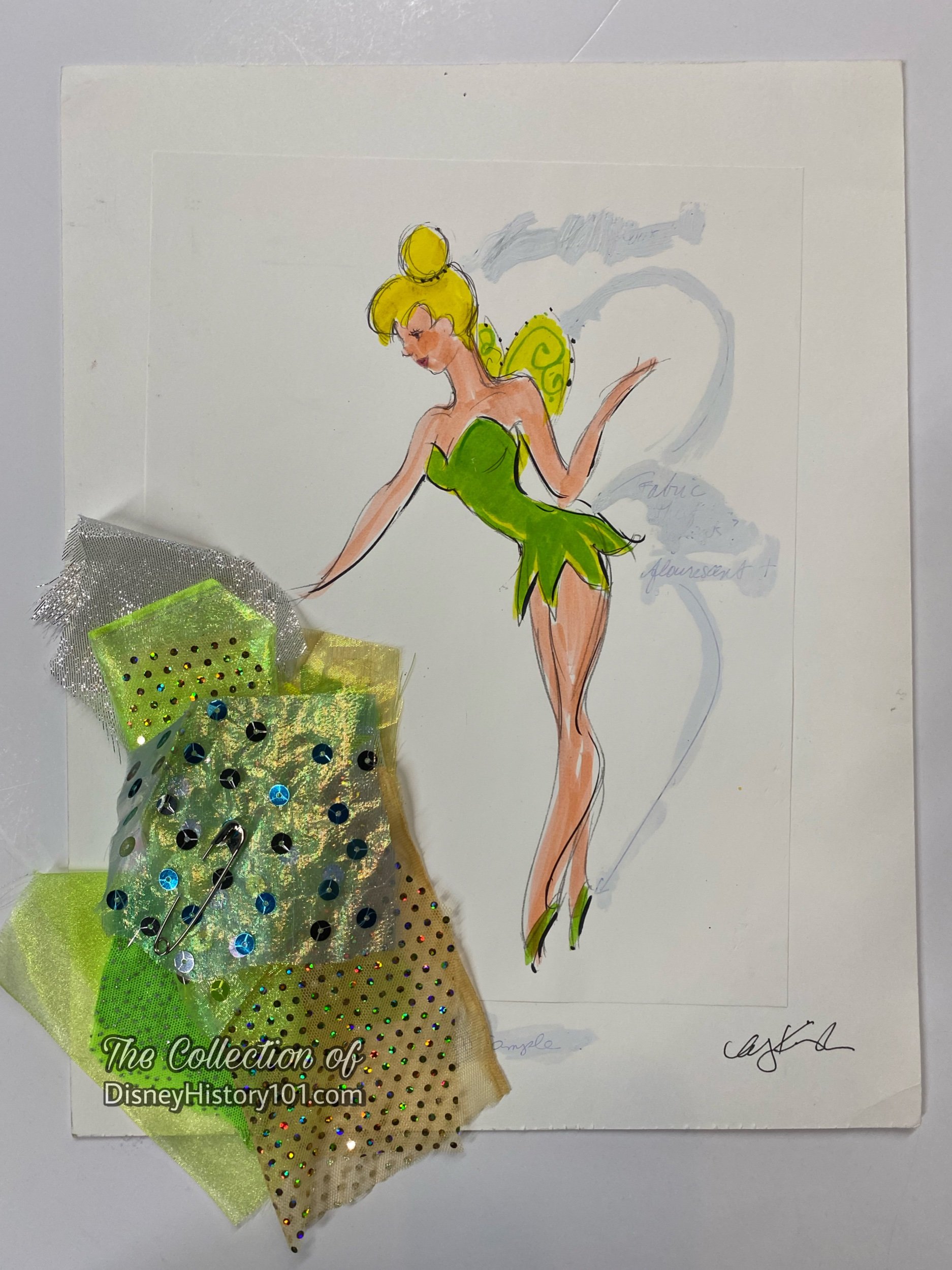
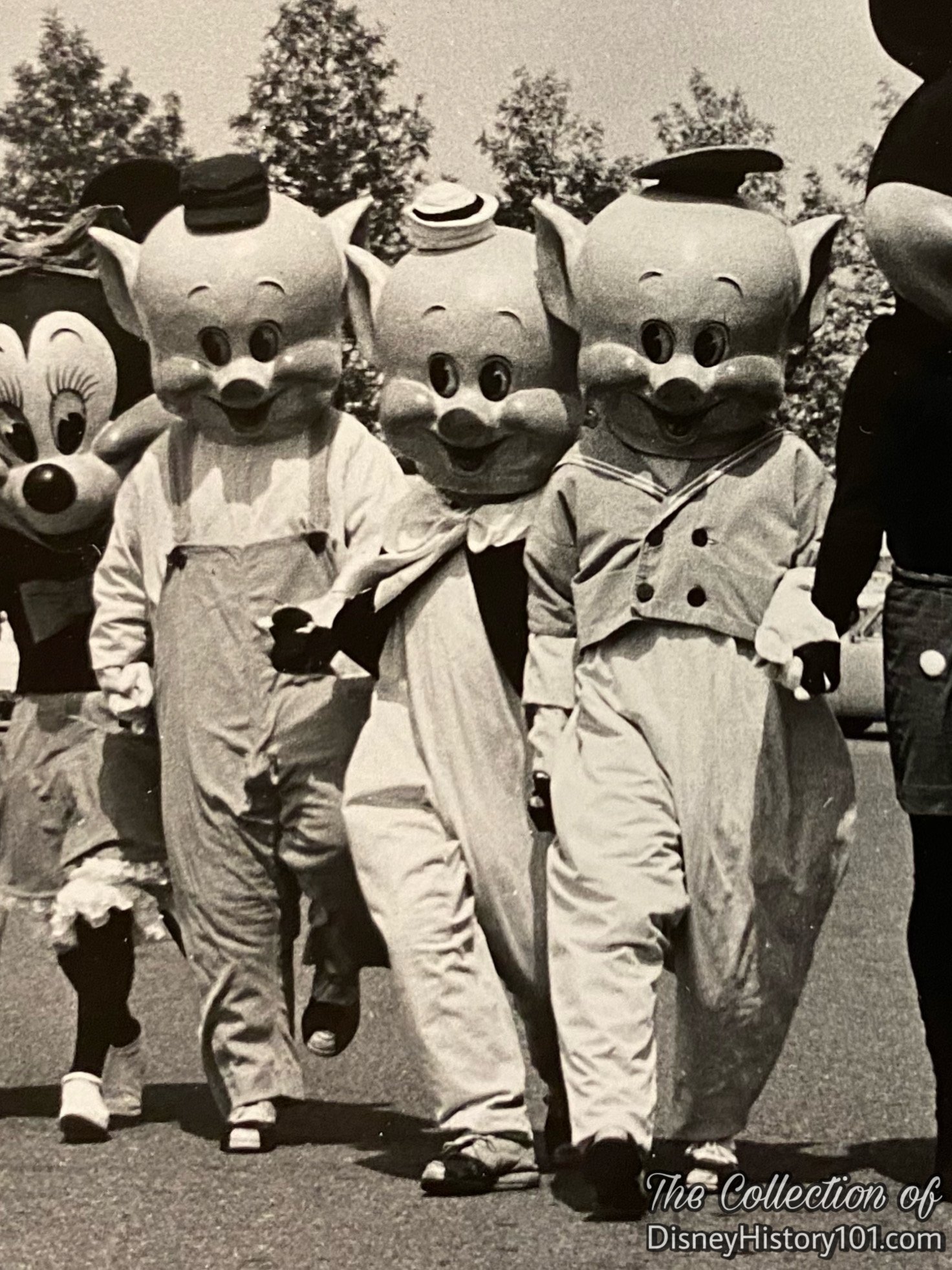
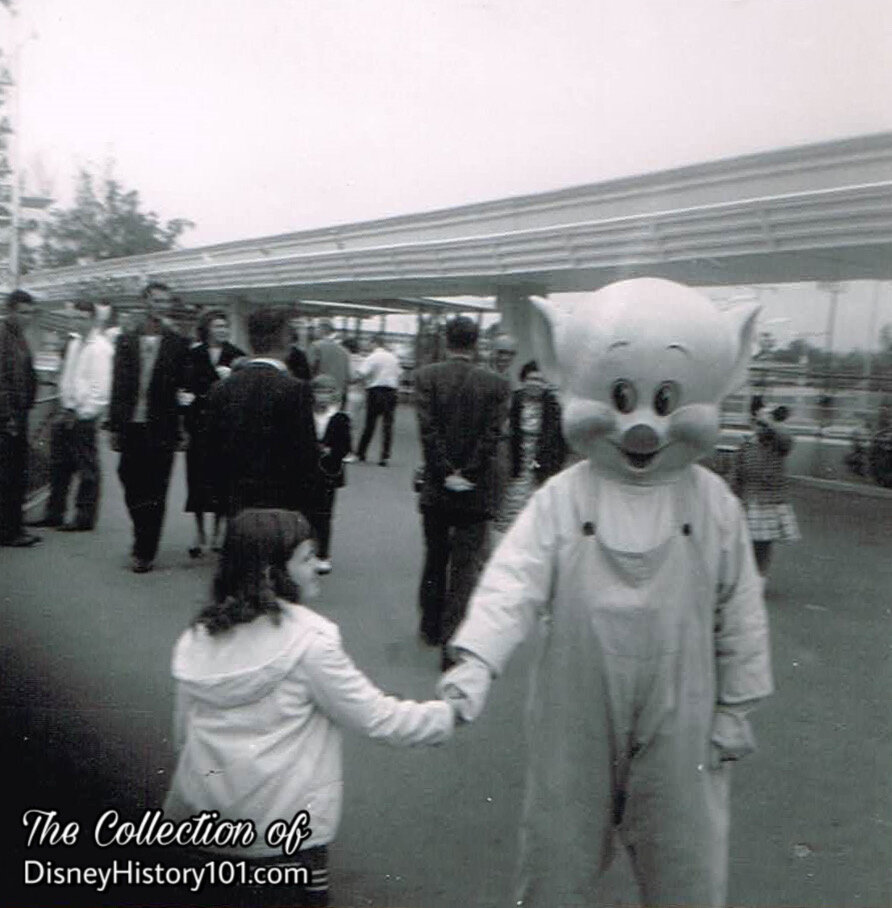
PRACTICAL PIG (of THE THREE PIGS)
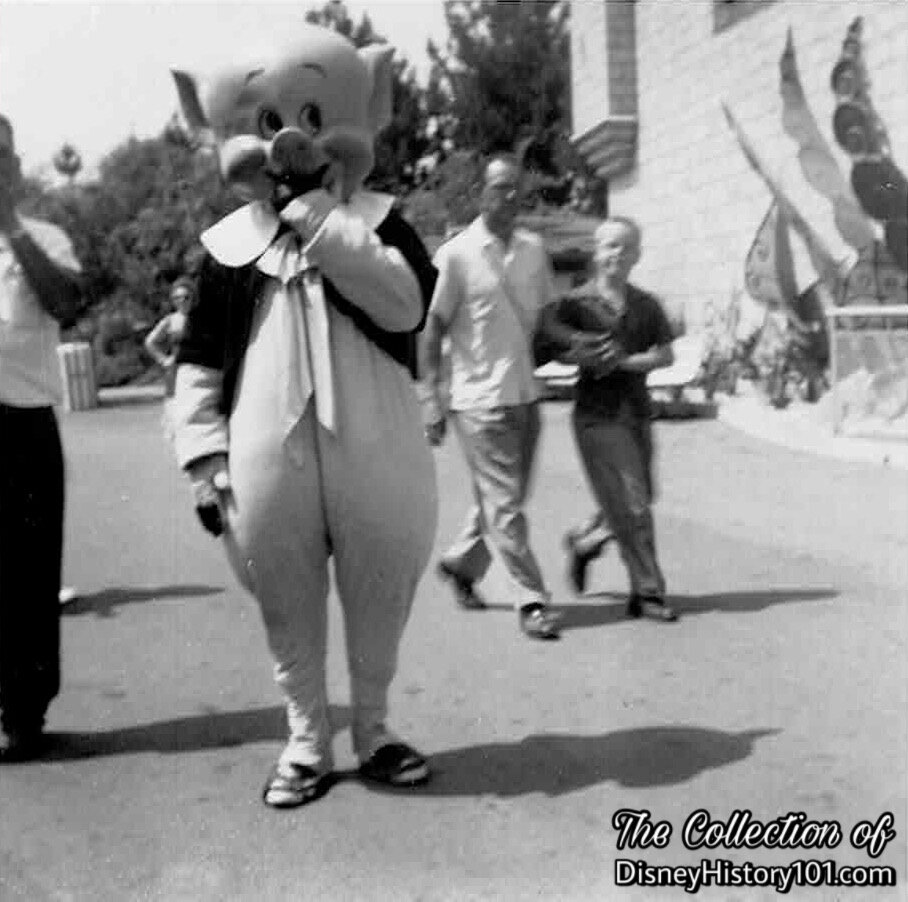
FIFER PIG
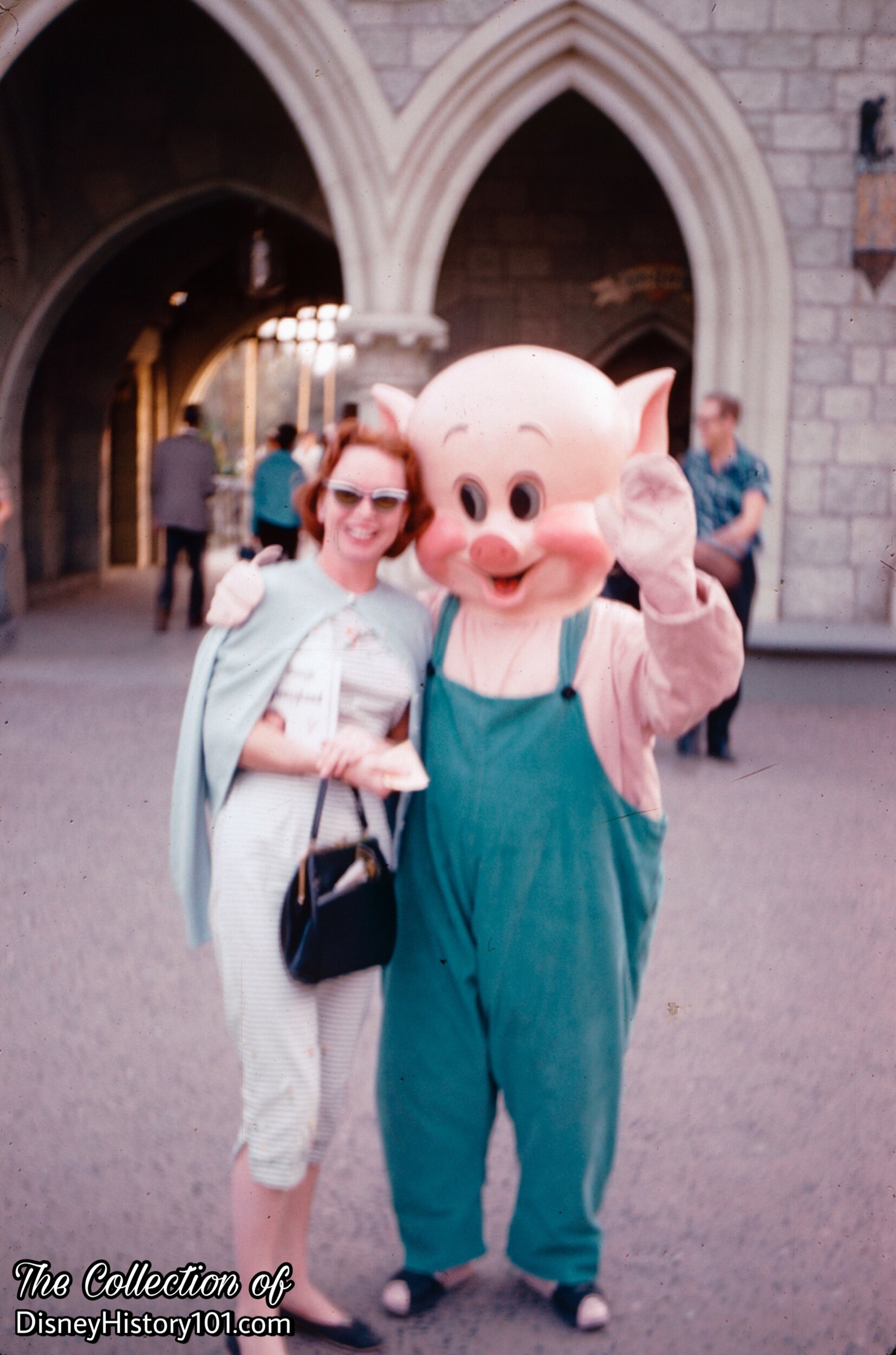
PRACTICAL PIG (of THE THREE PIGS)
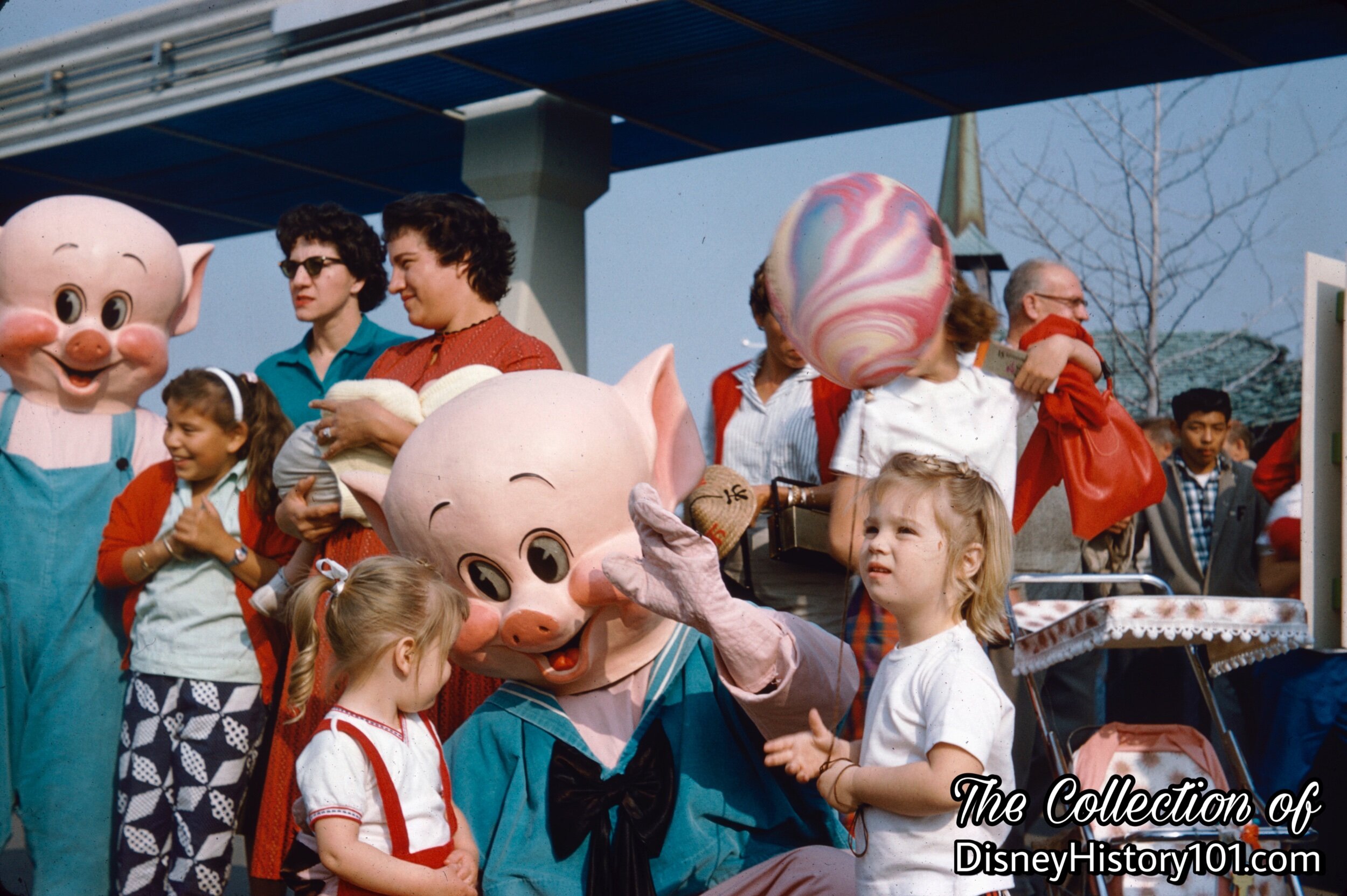
PRACTICAL PIG and FIDDLER PIG (of THE THREE PIGS), (c. 1959)
During 1959, the second incarnation of the Three Pigs (to appear in Disneyland) greeted guests all around the park!

THE THREE LITTLE PIGS (FIFER, FIDDLER, and PRACTICAL PIG) & THE BIG BAD WOLF
The third incarnation of The Three Pigs to appear at Disneyland (along with their new colorful ensembles) were created at Walt Disney Studios, under the direction character animator Bill Justice. These debuted during the summer of 1961.
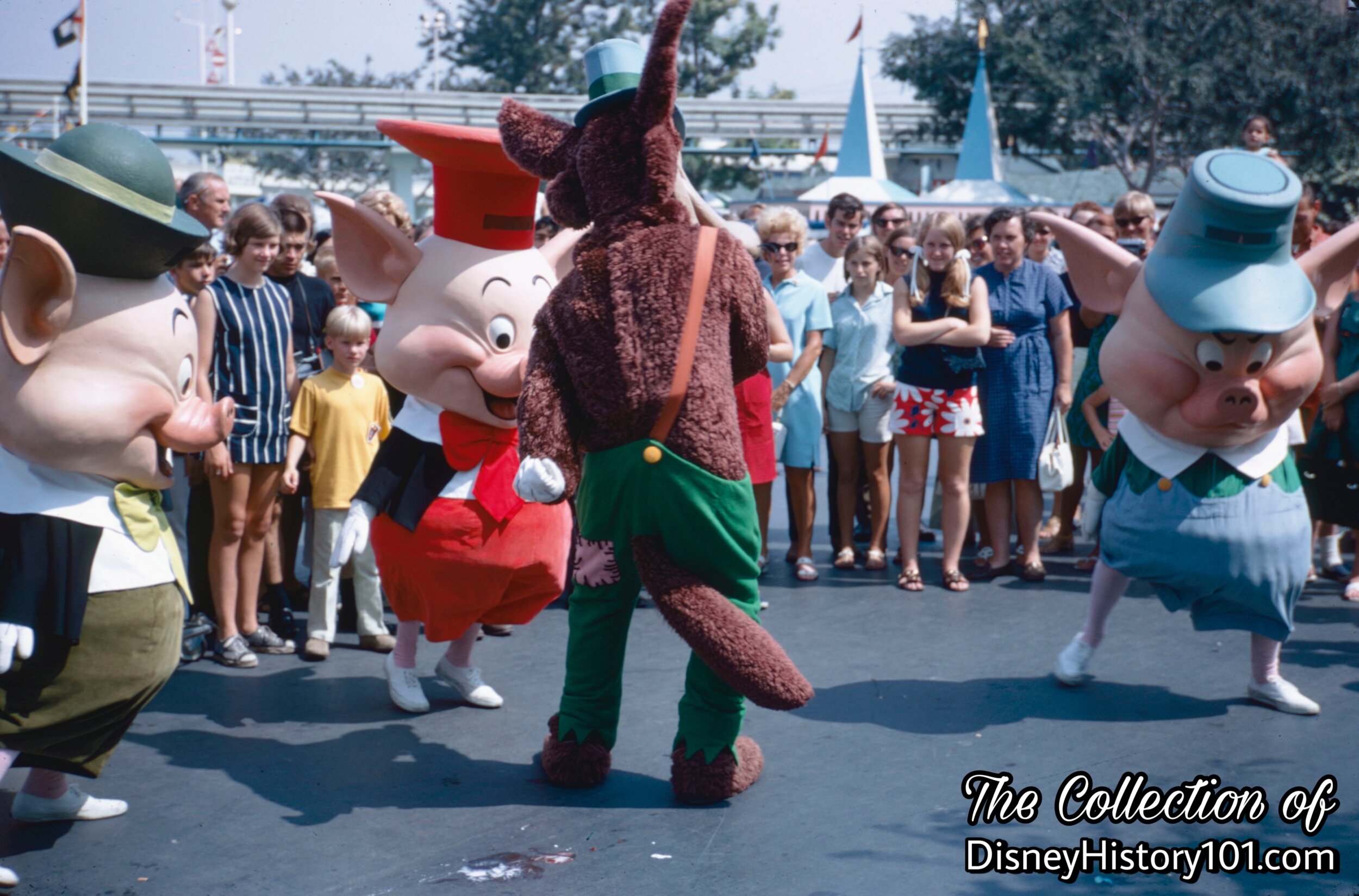
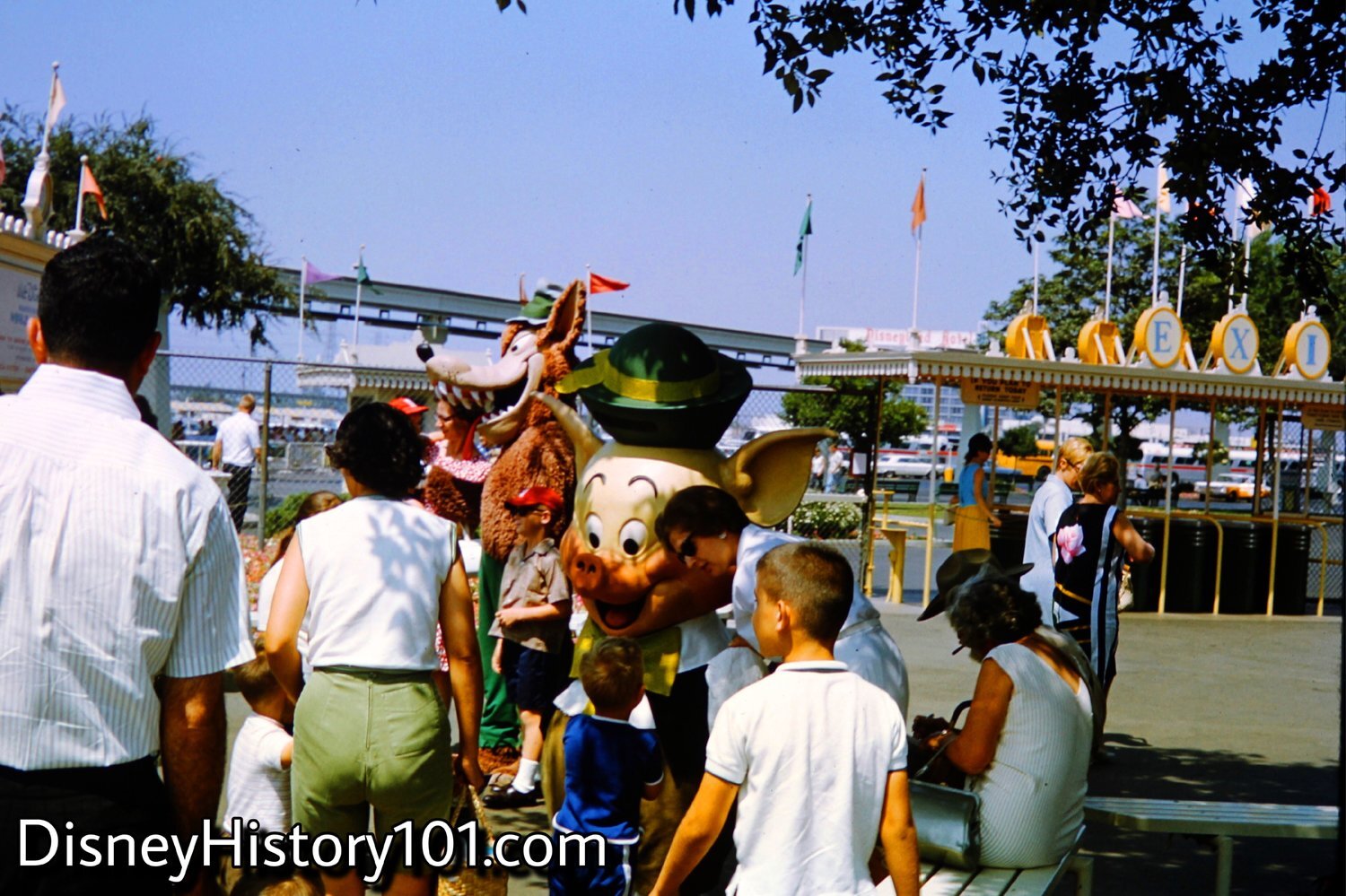
FIFER PIG (and THE BIG BAD WOLF)
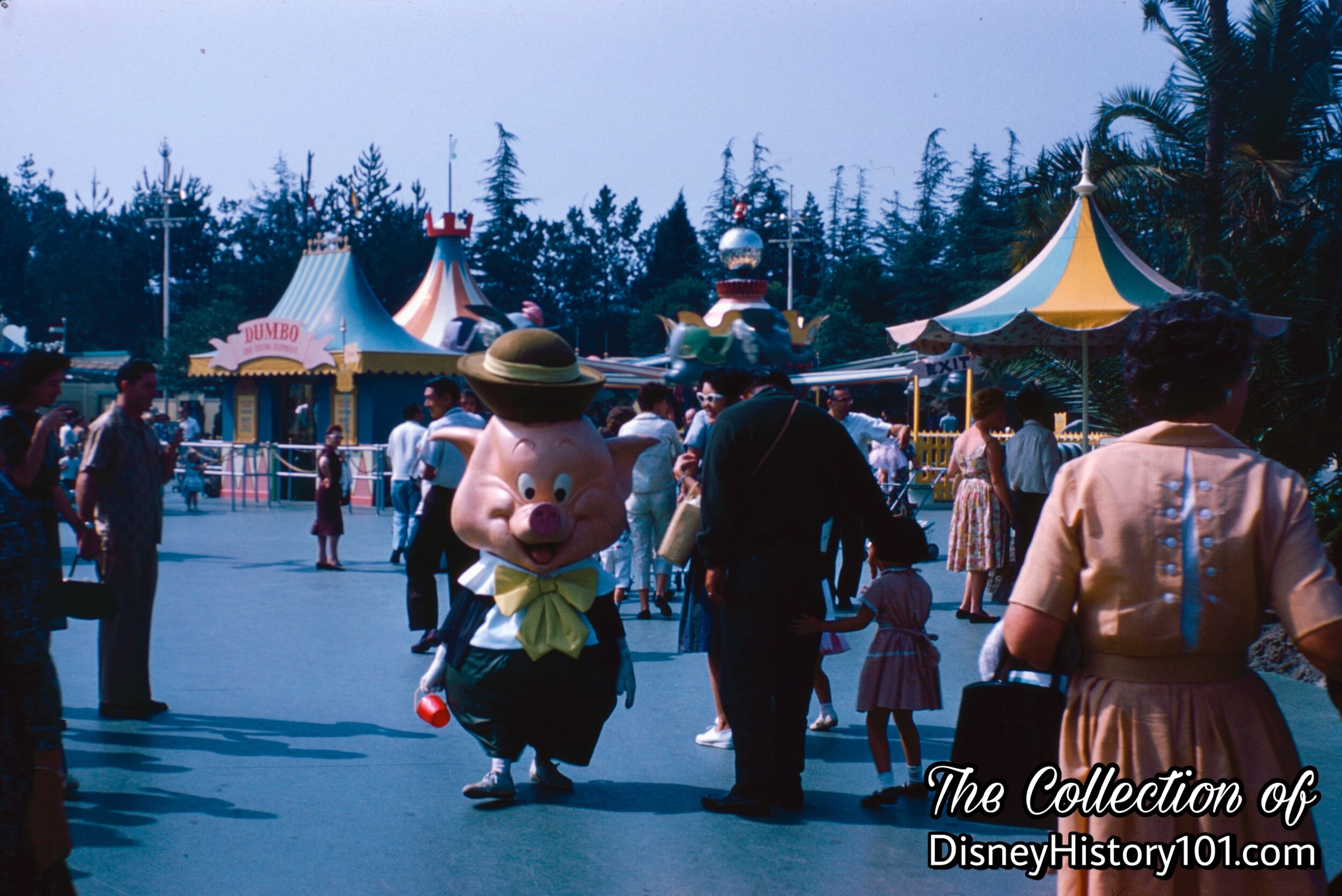
THE THREE LITTLE PIGS, (1961)
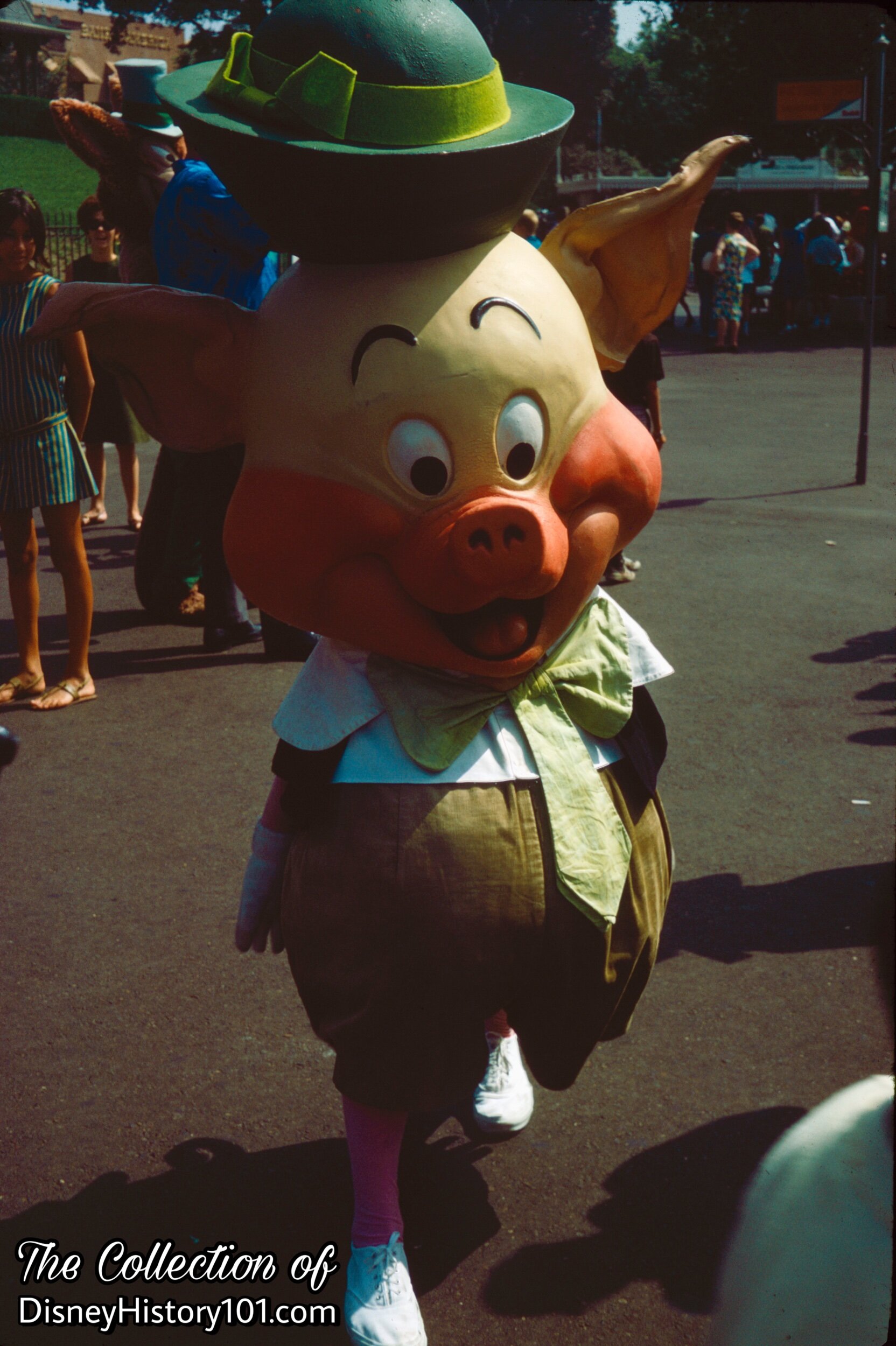
FIFER PIG, (1967)
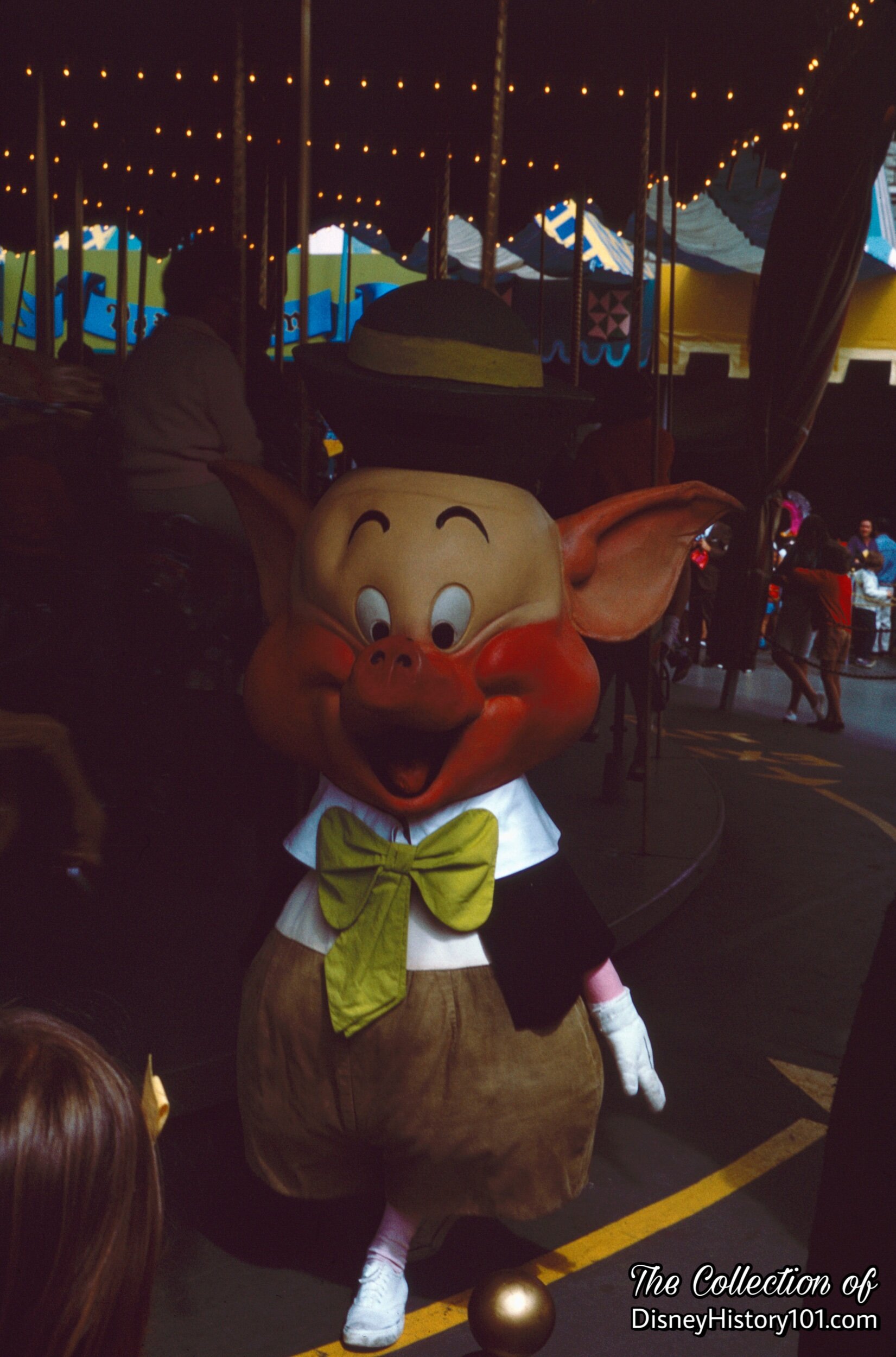
Fifer Pig, (1965)
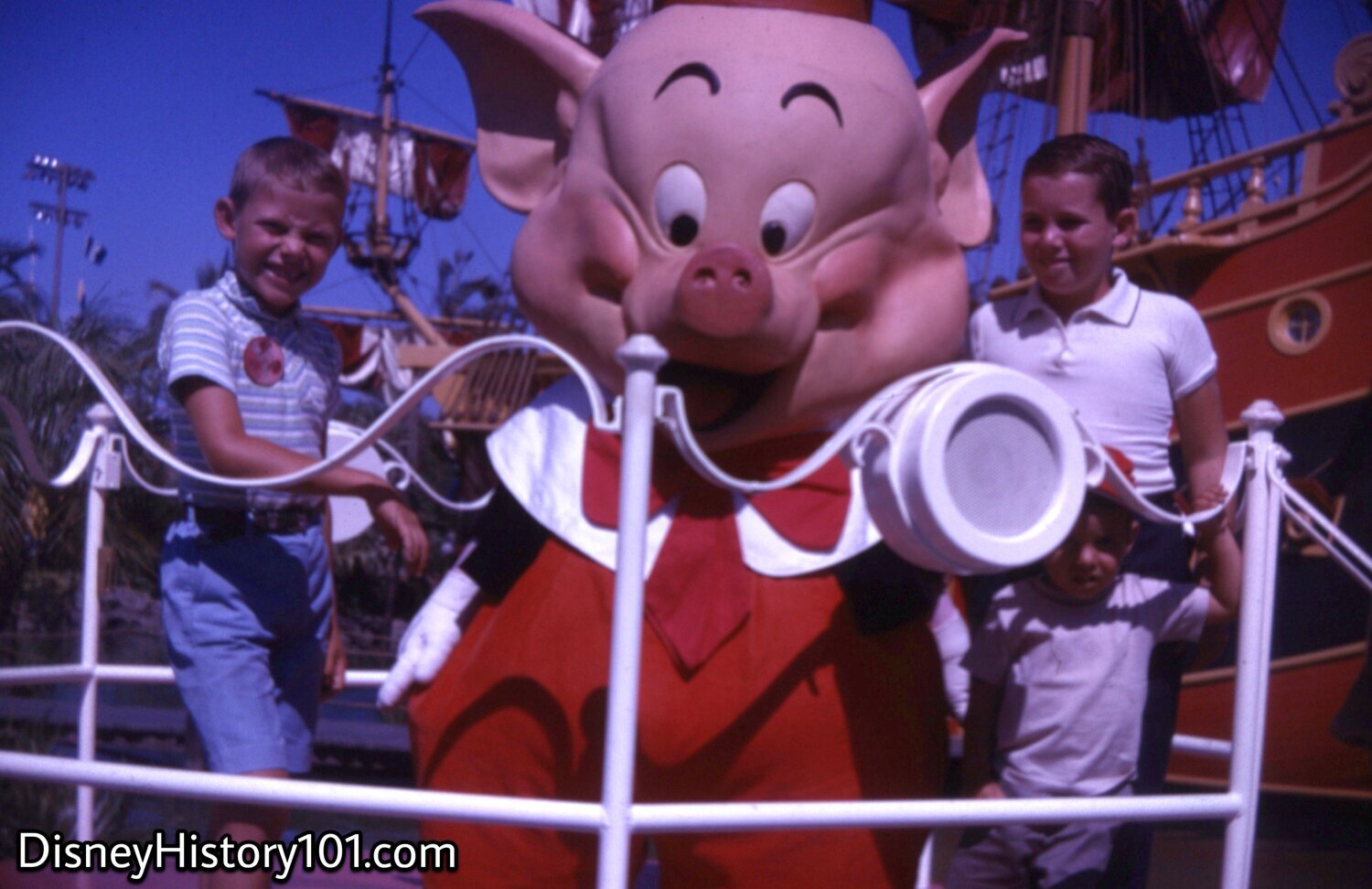
FIDDLER PIG and Guests
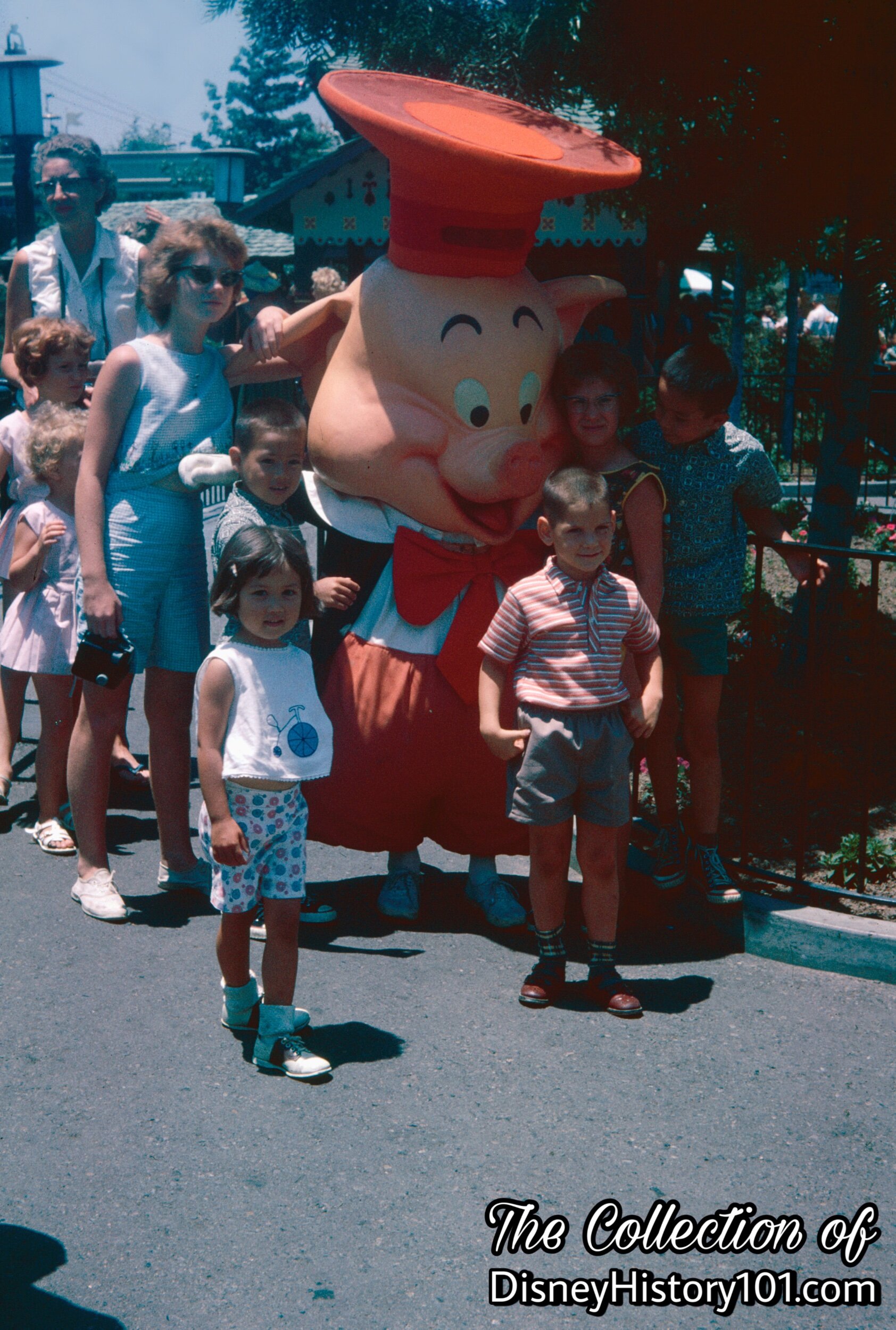
FIDDLER PIG and Guests

FIFER PIG
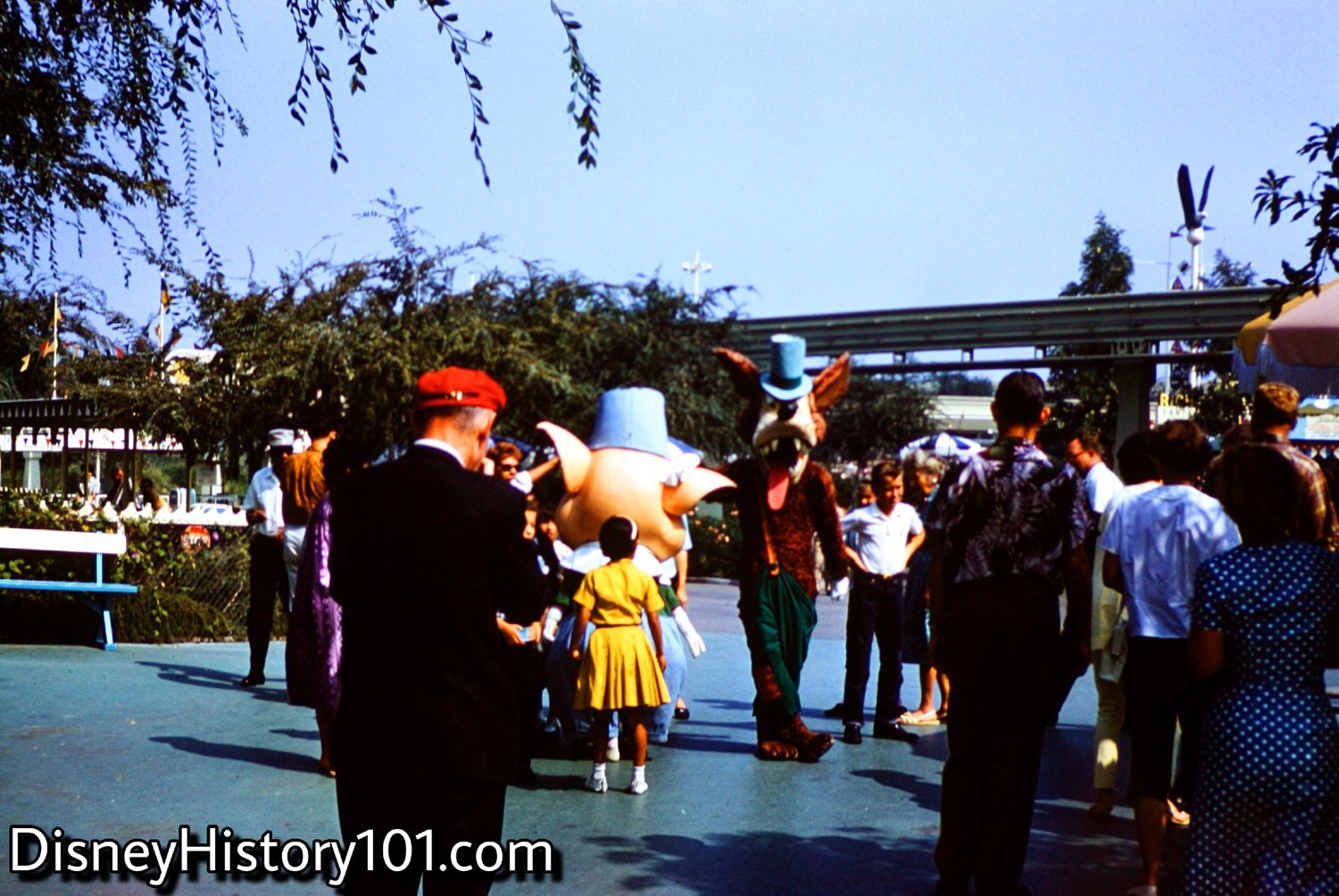
PRACTICAL PIG and THE BIG BAD WOLF, (1961)
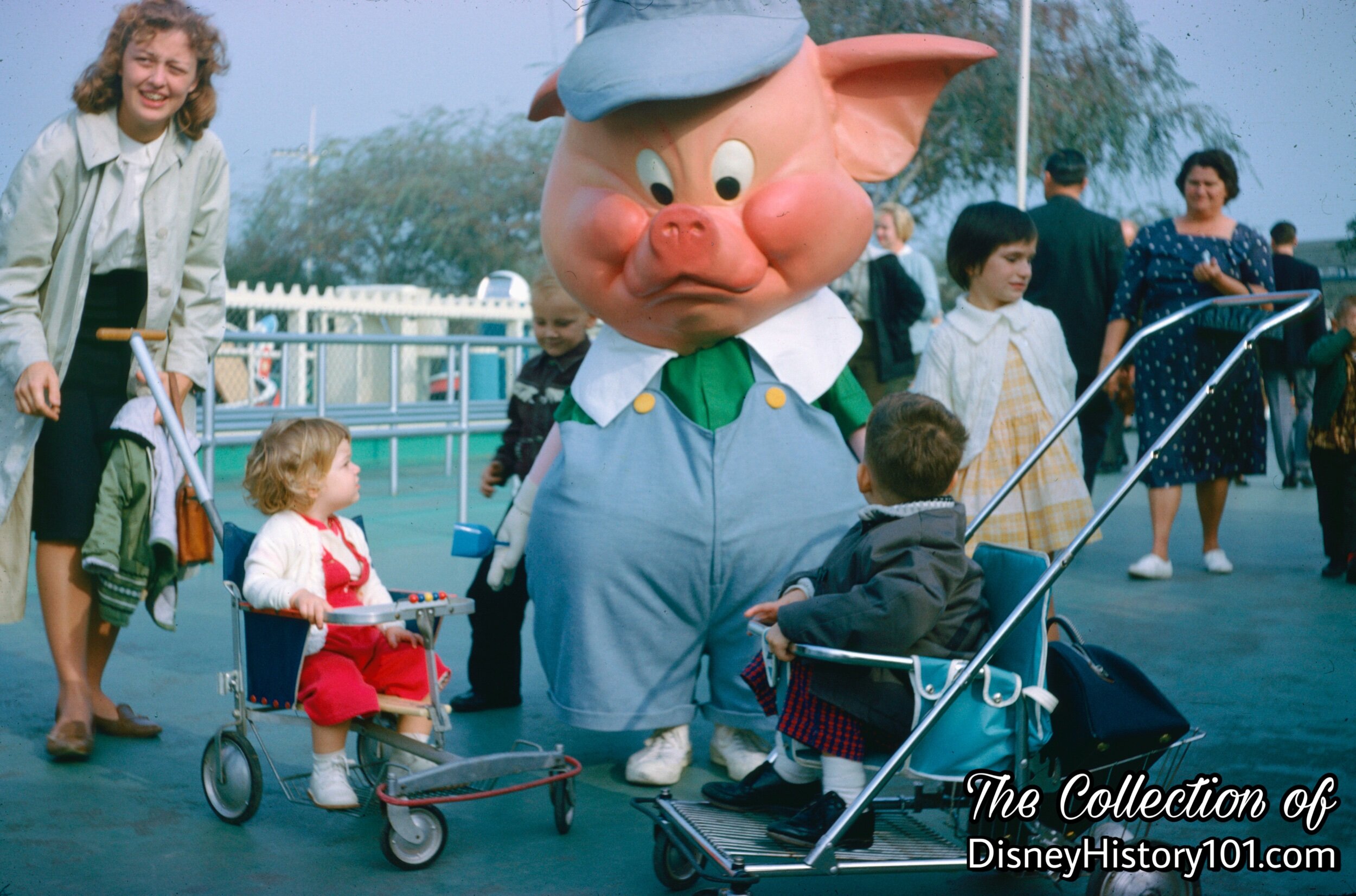
PRACTICAL PIG
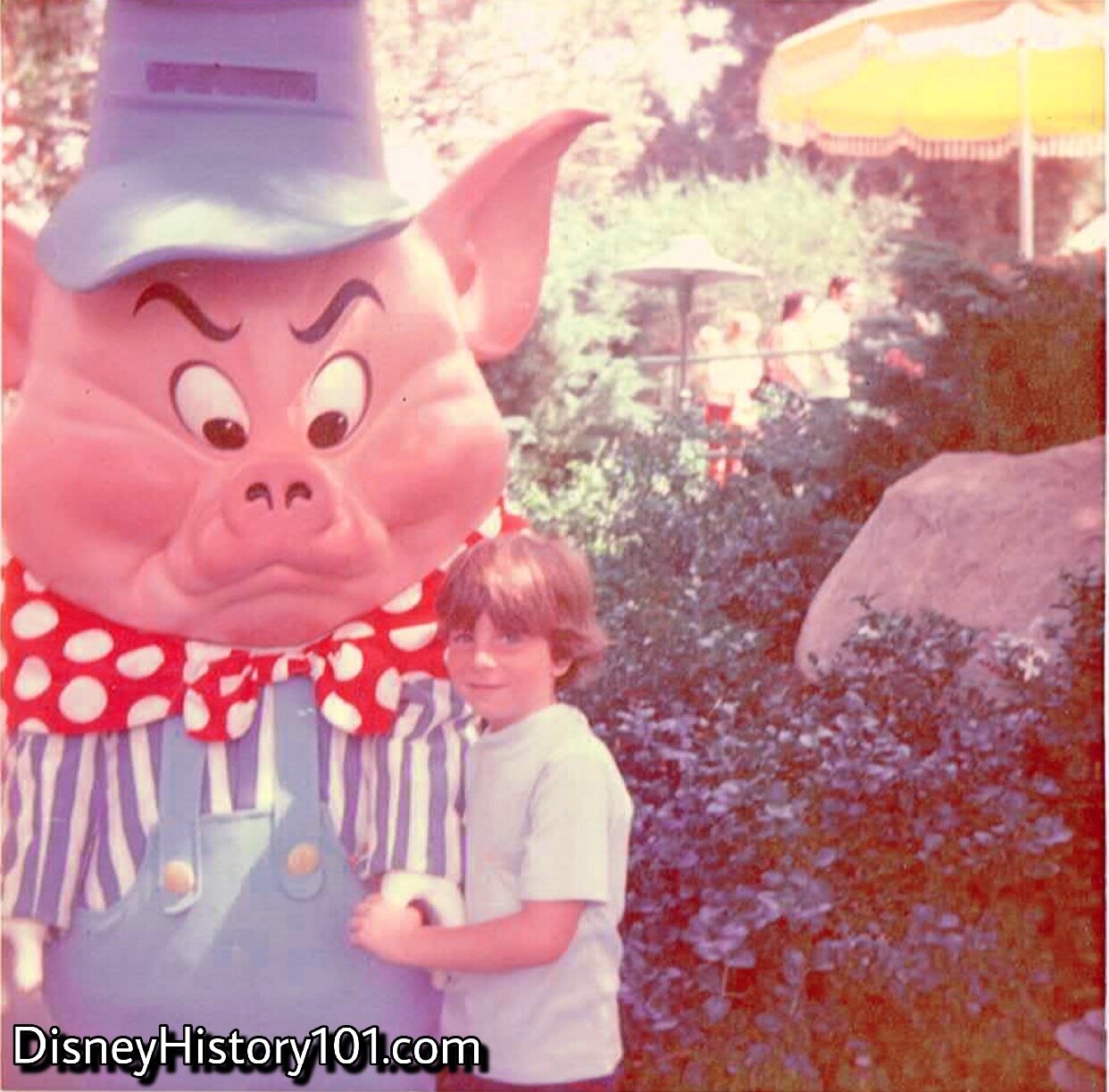
PRACTICAL PIG
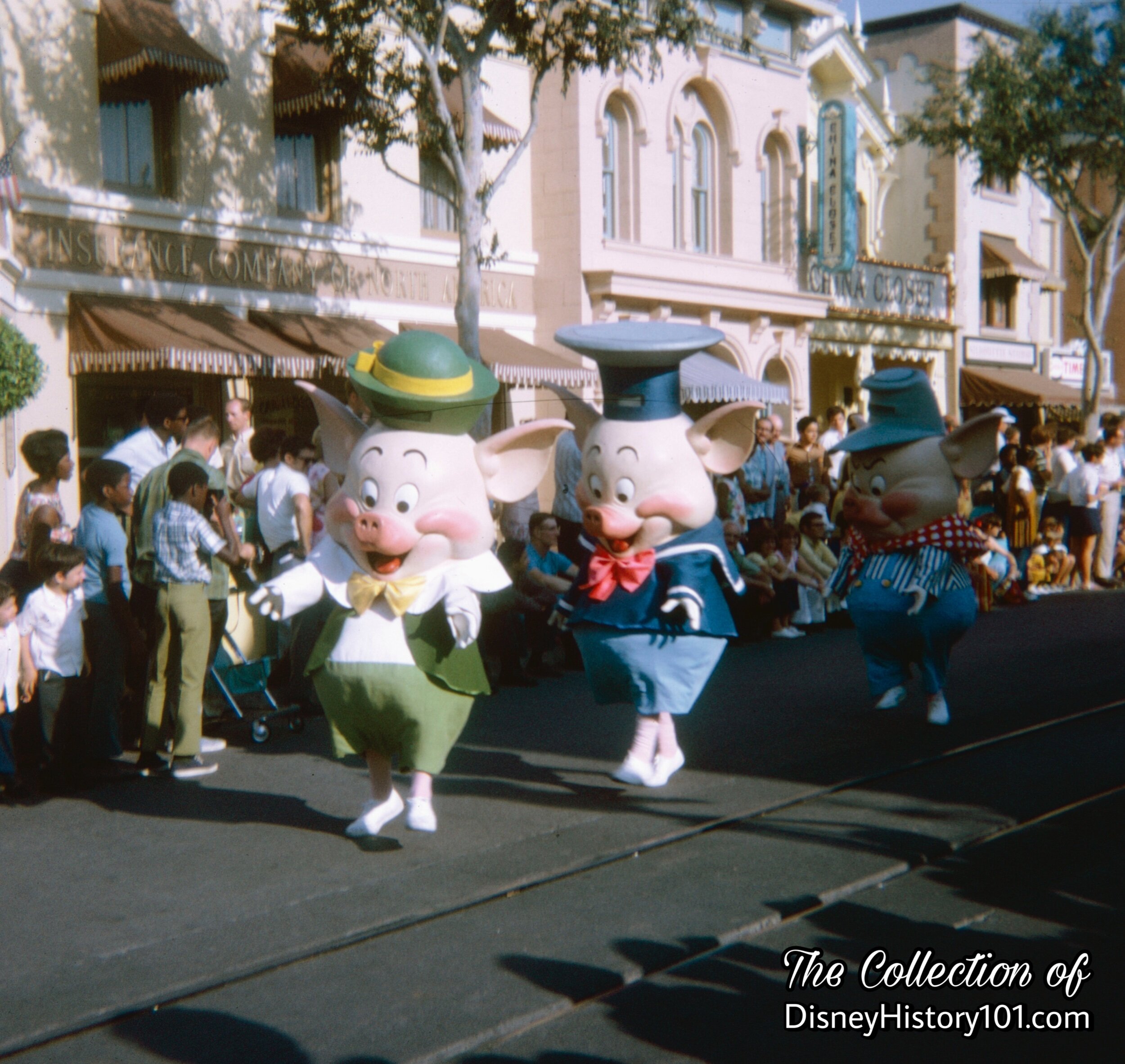
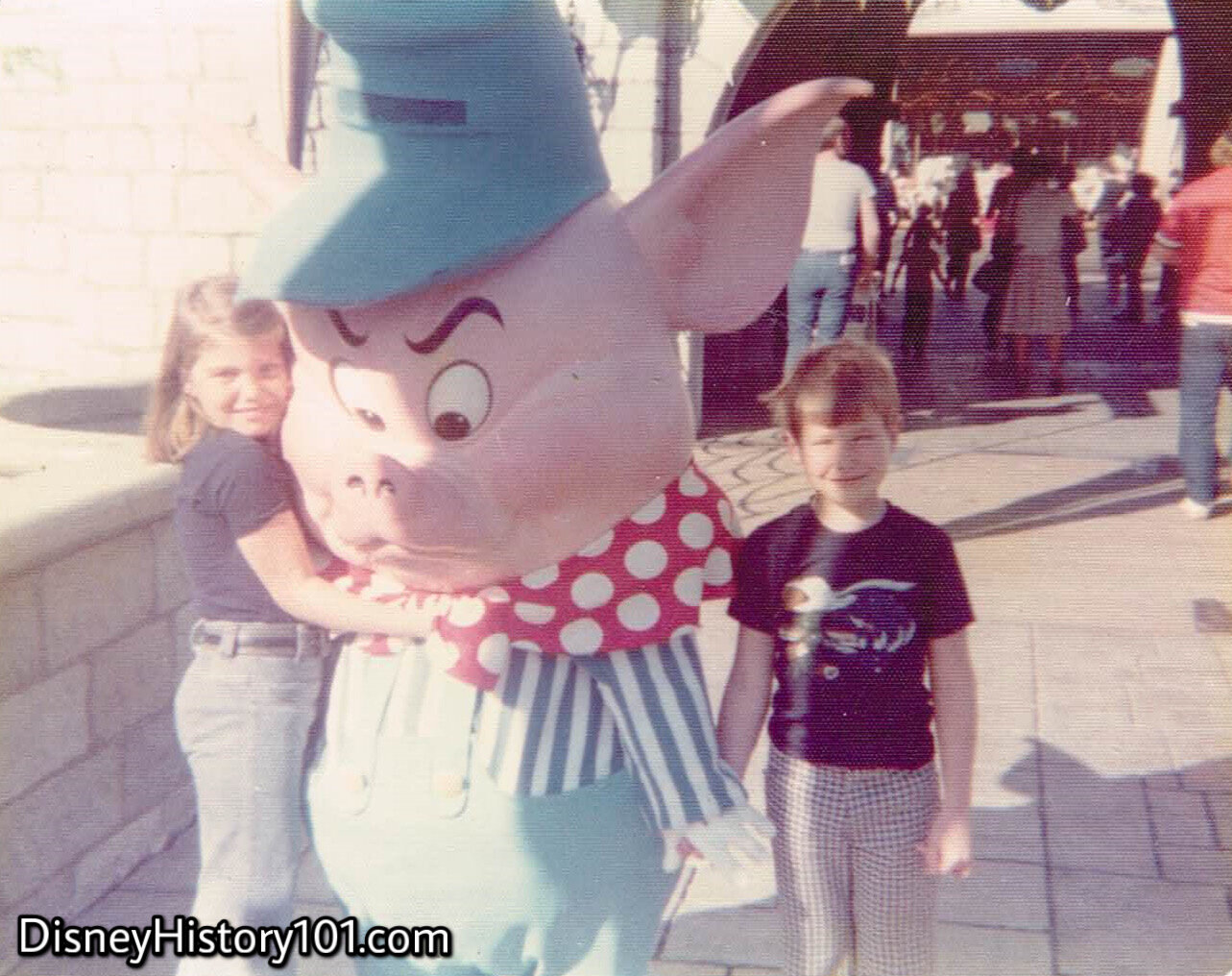
THE THREE LITTLE PIGS
The fourth incarnation of Practical Pig (in fact, all Three Pigs), debuted c. 1989-1990, and finally had the ability to sign autographs!
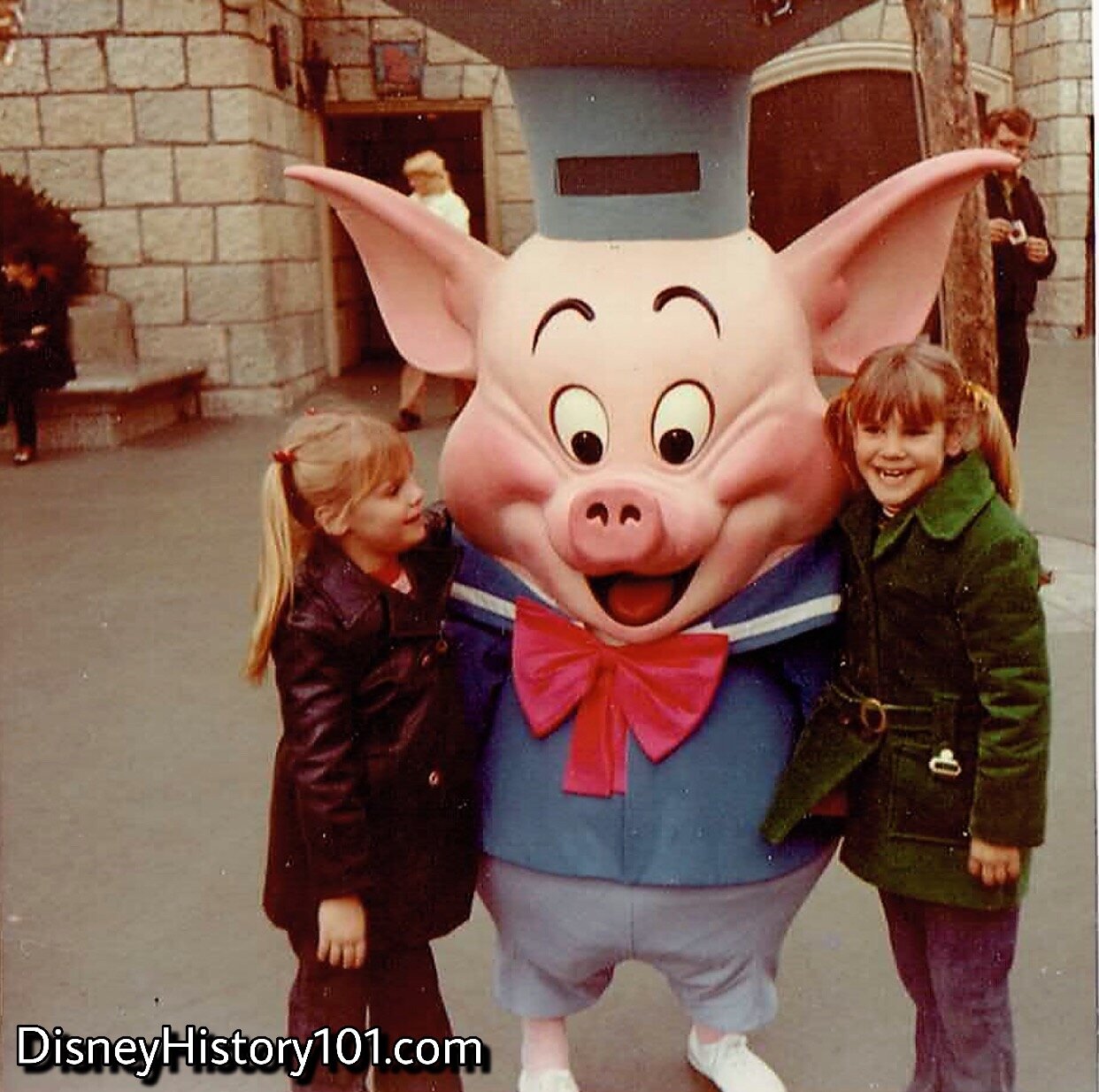
THE THREE LITTLE PIGS, (1972)
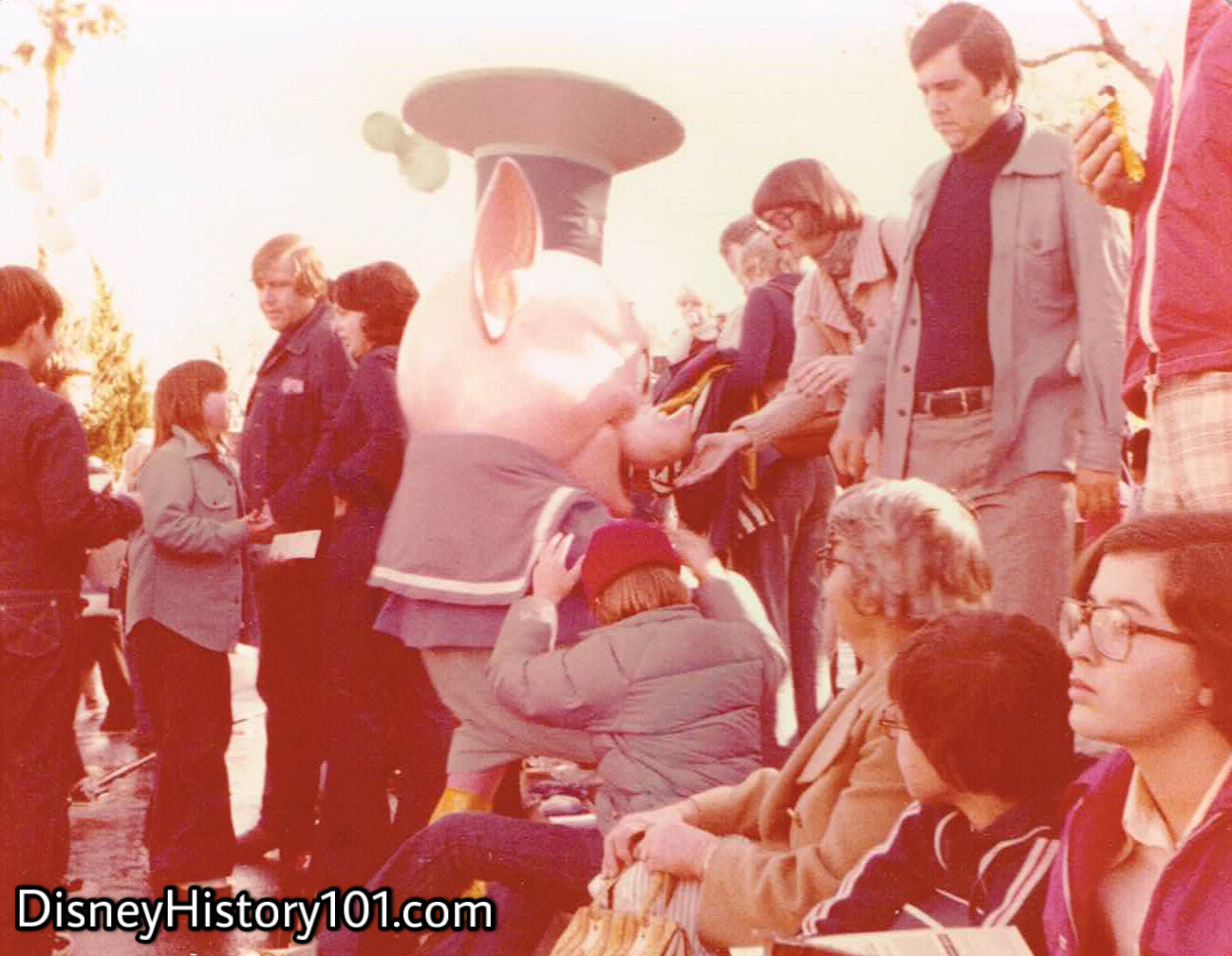
THE THREE LITTLE PIGS
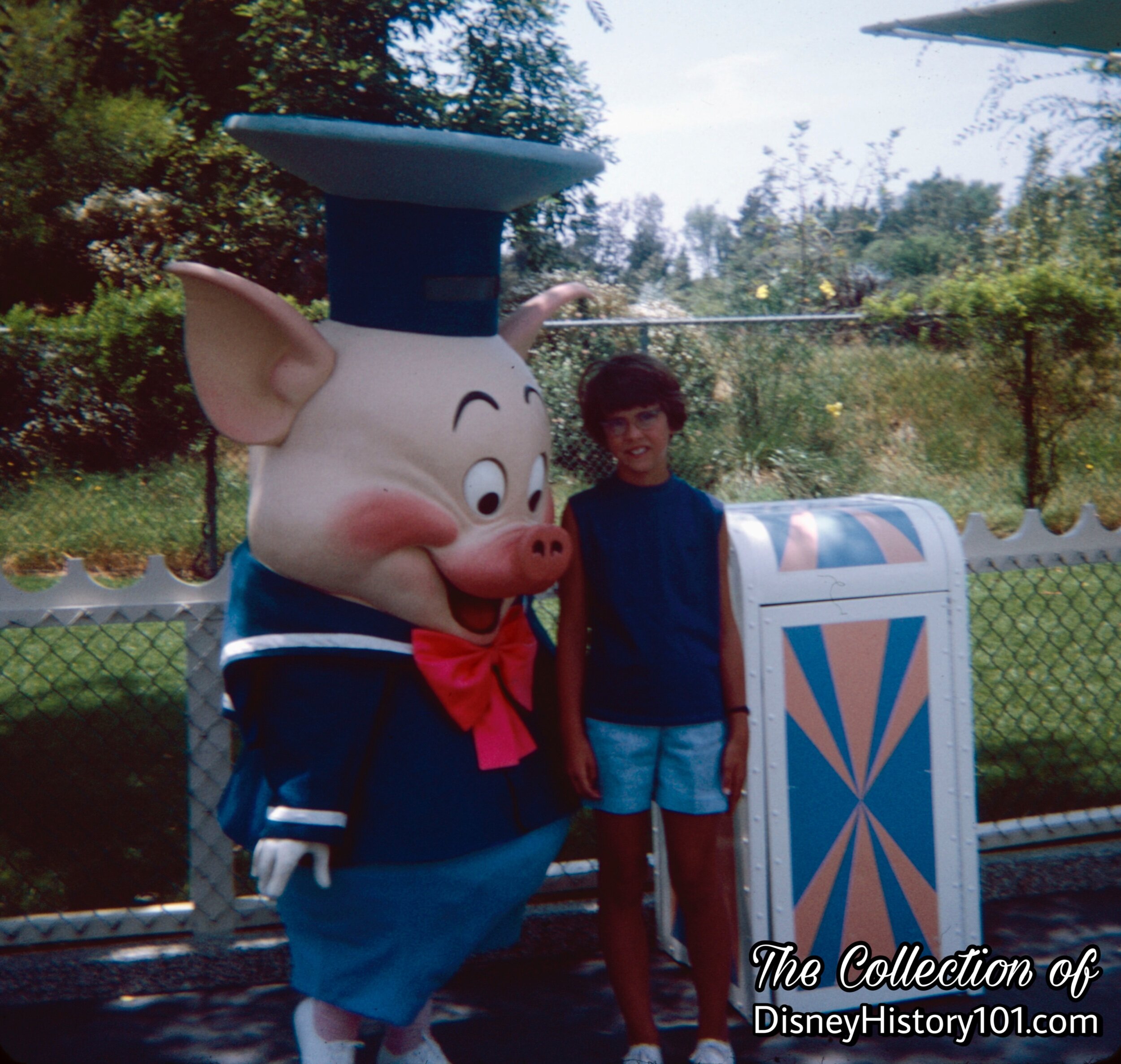
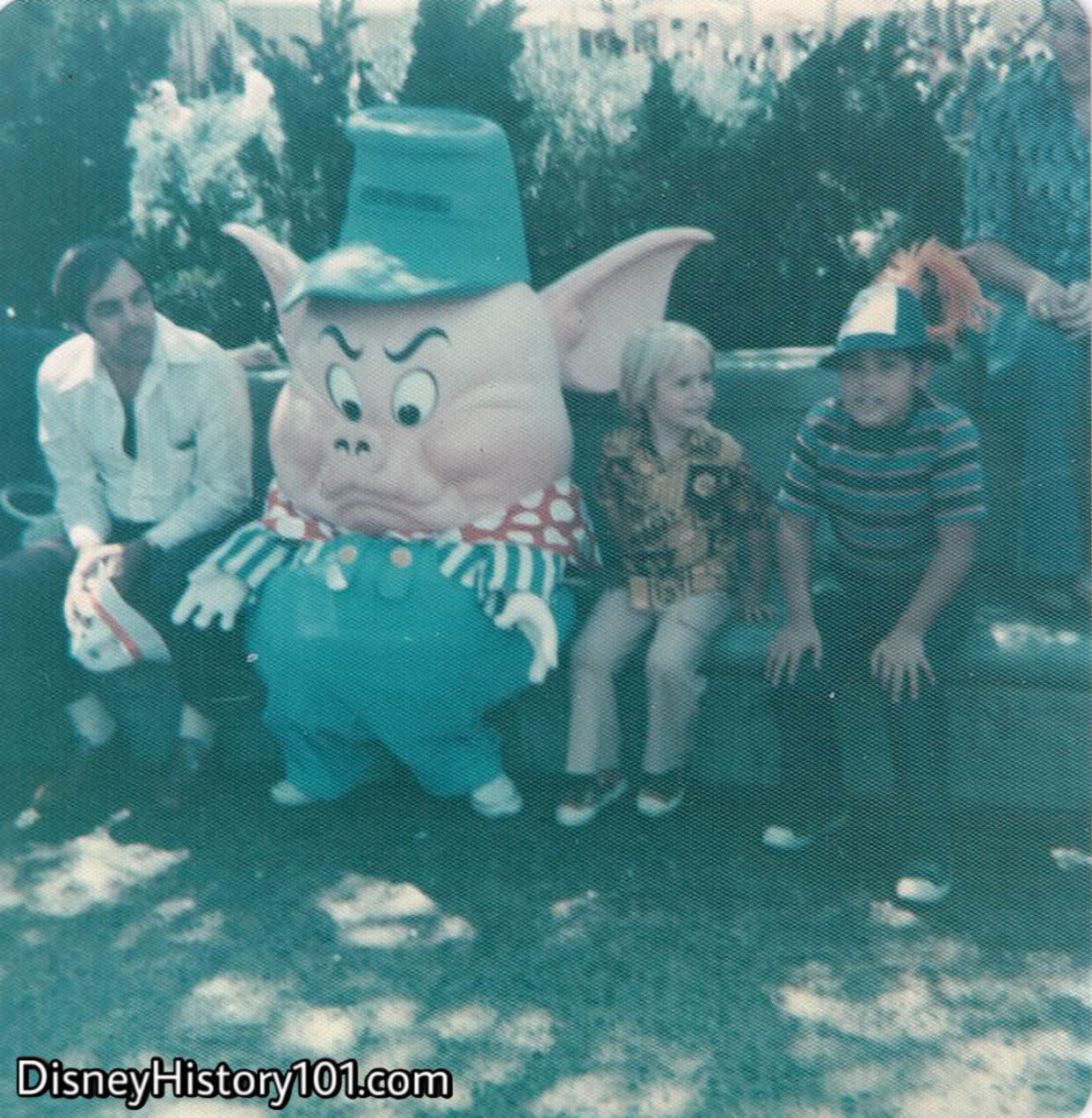
THE THREE LITTLE PIGS, (1975-1976)
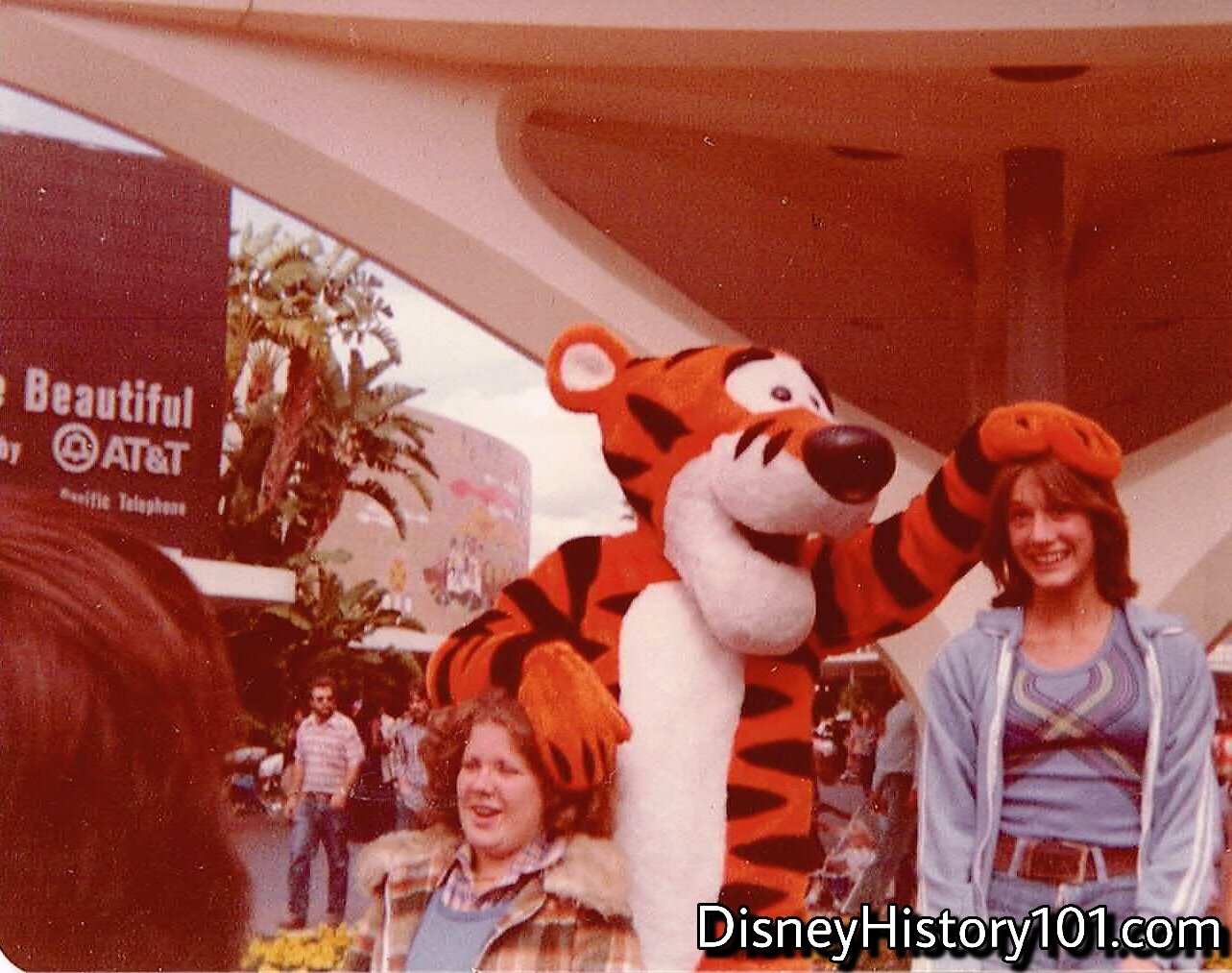
TIGGER
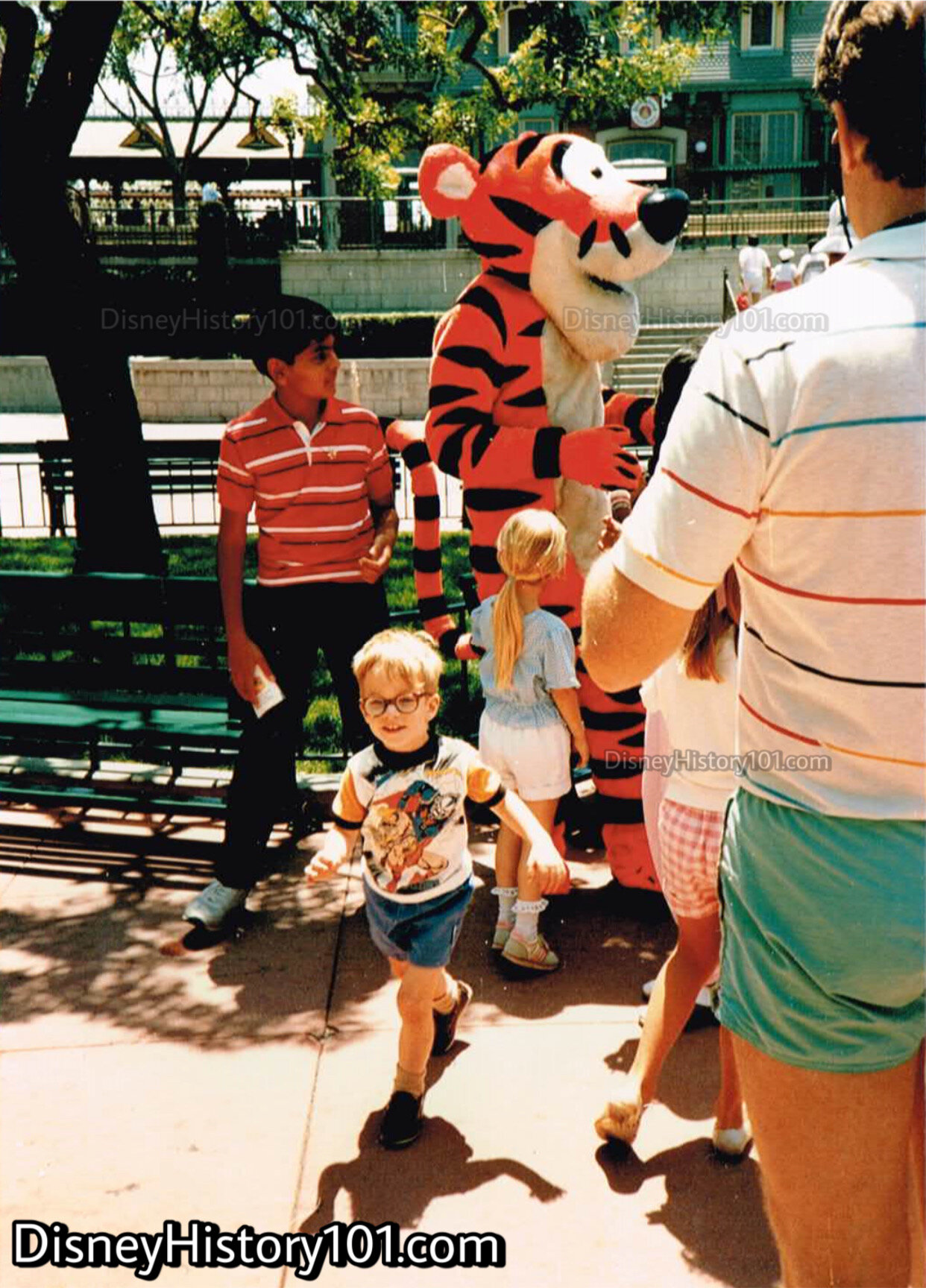
TIGGER
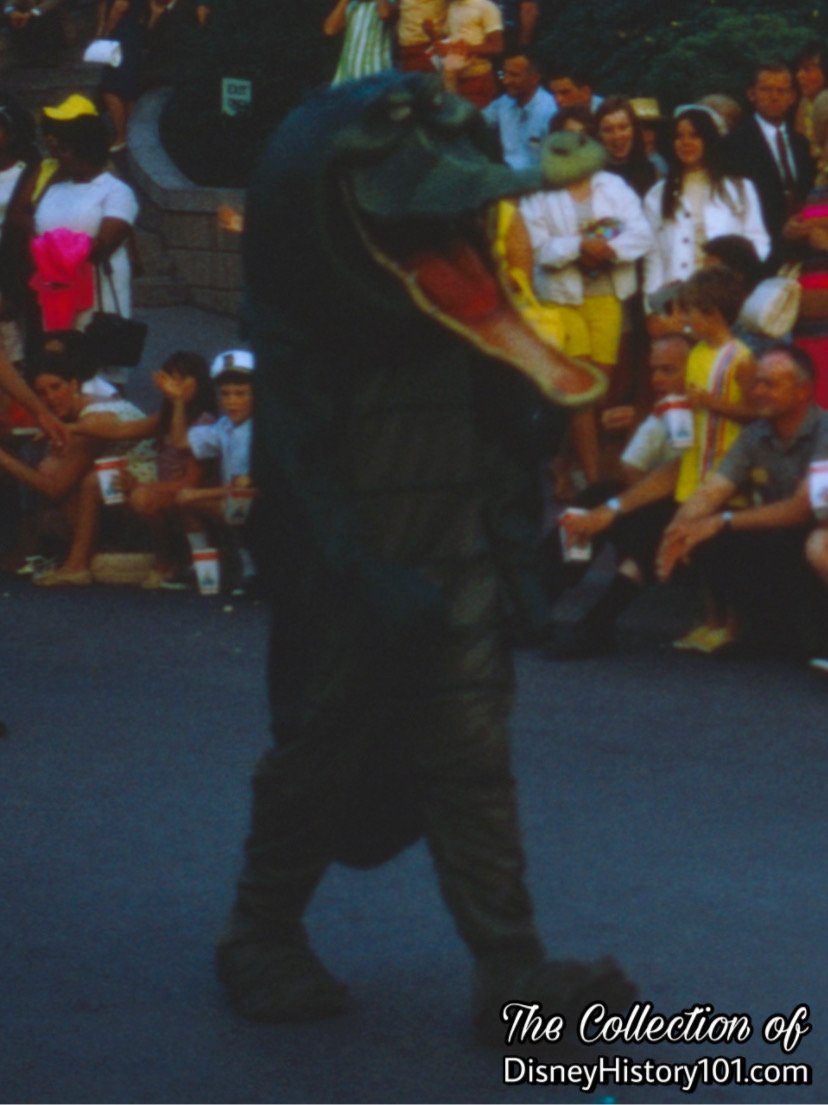
Tick-Tock Crock

“When Disneyland's present ‘realm of the future’ was designed in the early 1950's, Early Bird, Gemini and Apollo were space-age terms of the distant future. Even the household word ‘astronaut’ was still to be coined.”
THE TOMORROWLAND SPACEMAN (or, Spaceman K-7) first appeared in the Tomorrowland unit of Disneyland’s opening-day parade on July 17, 1955. For this event, he was portrayed by Don MacDonald. It was sure hot that day (records show temperatures were around 100 degrees Fahrenheit), and you may recall seeing photos of Eddie Fisher serving an ice-cold bottle of Coca-Cola to the Spaceman K-7 on this occasion, while a smiling Debbie Reynolds looks on. Spaceman K-7 (portrayed by Don MacDonald) would soon make appearances as Tomorrowland's official greeter, from 10am to 4pm.
Later, the Tomorrowland Space Man K7 was portrayed by John Louis Catone around 1956 (he was first assigned to the Autopia on Opening Day). John Louis Catone would become one of the first regular full-time Tomorrowland Space Man who would “shake hands with earthlings” around Tomorrowland. “55er” John Catone recalled his second day with Disneyland: “I was in a space suit, doing promotions with the guests... one day 13,000 pictures were taken! As space man, I was also used as a crowd mover. I would go right past a long waiting line, the people following me like they followed the Pied Piper. At a small line I would stop to start some business there. There was pure oxygen in the space suit at first. Sometimes a kid would turn the tap in the boots and drain the oxygen to the head. I would feel like I was on ‘Cloud Nine!’” During September 24th and 25th, 1955, Spaceman K-7 even participated in special events (like Van Nuys Days at Disneyland) - riding horseback and in a helicopter!
John Louis Catone (who applied March of 1955) wore the suit again during 1956. However, many other individuals would go on to “don” the Tomorrowland Spacesuit. For example, Charles Bright (who later went on to serve as Disney Parks Senior Special Projects Director), became a Tomorrowland Spaceman in 1959. Charles was followed by the 19-year-old 6’9” John Glenn (a Mount San Antonio College student, and not the true-life astronaut), who wore the spacesuit during 1962 and 1963, and John Mathews (another Disneyland character performer). Bob Newman and future Walt Disney Imagineer Randy Bright did also.
THE TOMORROWLAND SPACEGIRL was also portrayed by a number of performers thru the years. Many women portrayed the Tomorrowland icon including Debbie Rooney (1958), Donna Fox (c. 1960, 1961), Shannon Borsz (c. 1962), Shannon Johnson (1966) who also performed with the Hootenanny group that year, and Sue Eisenberger (c. 1967).
“THE “CELESTIAL FASHIONS” OF THE TOMORROWLAND SPACE COUPLE” were usually on display six days a week, during the 1950s and 1960s! There were at least four incarnations of the Tomorrowland Spaceman suit over the years - (1) a yellow-toned suit, (2) a reflective suit with a circular logo on the chest, and the space station “K-7” designation on the front of the helmet (you see a version of this suit on one of the Kaiser Aluminum Disneyland postcards), (3) a version with no complicated belt apparatus, and no rings on the sleeves, or pants legs, (4) a version with “Disneyland” emblazoned across the chest.
The costumes were modified, enhancing the show quality of the Characters. There were at least two variations of the Spaceman’s helmet through the years - (1) one version featuring a support frame and antenna on top. This one was modified with a strip to provide protection from the sun. This version was also briefly modified to read “K-7”, and again modified to allow for lighter weight and increased vision. According to an article by Art Linkletter published in The Ford Times Guide To Travel In The USA (published 1962), “In Tomorrowland, there’s the “Man From Mars”. The Park employee inhabiting the Martian costume was a baseball fan. He had installed his tiny transistor radio in his helmet. The noises emanating from the communications headpiece as he listened to the game sounded a little as if Venus were calling Earth. But one kid recognized the sounds and said excitedly to his father : ‘Gee, Dad, the Martians like the Dodgers, too!’”
There have been a few versions of the Spacegirl’s suit over the years - at least two mini-skirt versions, and at least one later version with pants. High heel boots were added during the 1960s. Sometimes the Spacegirl would wear a lengthy or short cape with Disneyland on the chest, and there were times she would not wear a cape. There were also occasional times that the Spacegirl can be seen wearing her helmet.
During the winter of 1962, Tomorrowland's official greeters, the Space Man and Space Girl welcomed Guests (with December 17, 18 & 25, 1962 off work). By the winter season of 1967, the “Space Couple from another world” continued to “serve as host and hostess” in the new “Tomorrowland.” This occurred “throughout the Christmas Holidays,” at seven appearances daily (from 10:10am to 5:50pm), except Mondays and Fridays. The costumes typically took ten minutes to put on, occurring during this period from “10:00-10:10” and “5:50pm-6:00pm.” [“Disneyland Holiday Talent Master Schedule,” prepared for the period of December 16, 1967 through January 1, 1968]
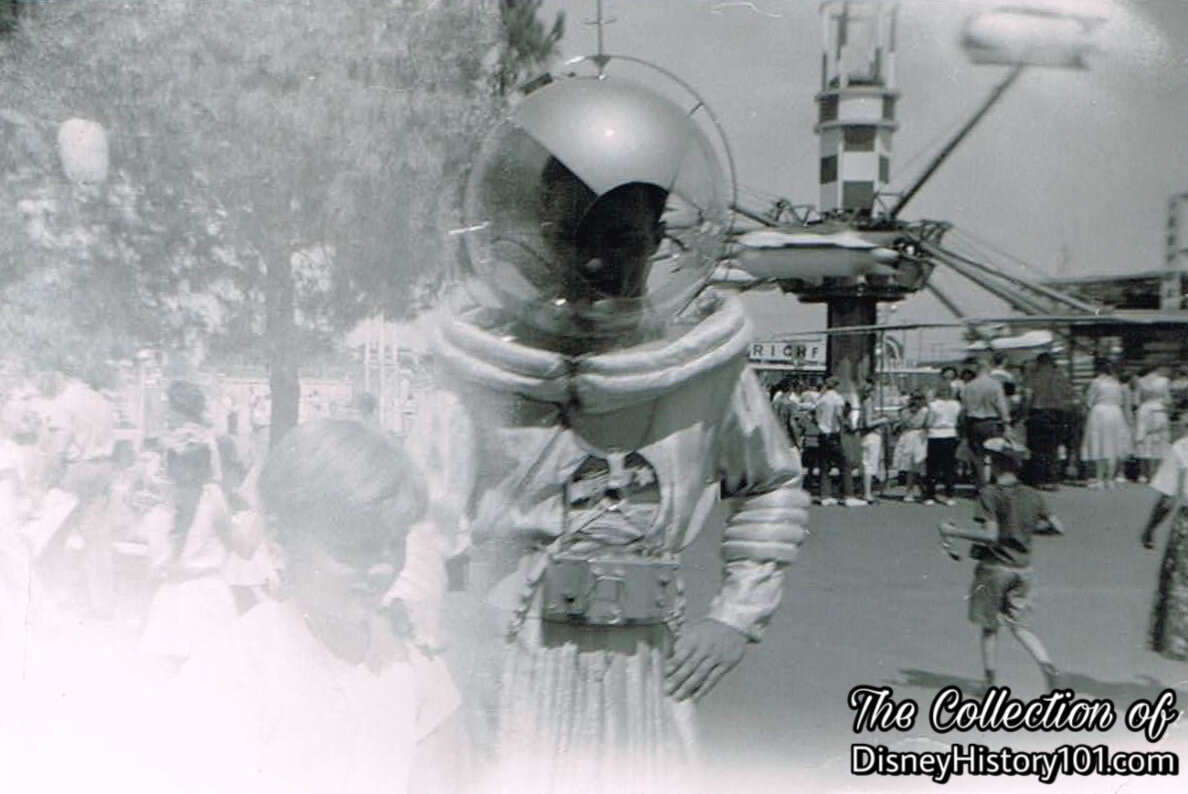
TOMORROWLAND SPACEMAN
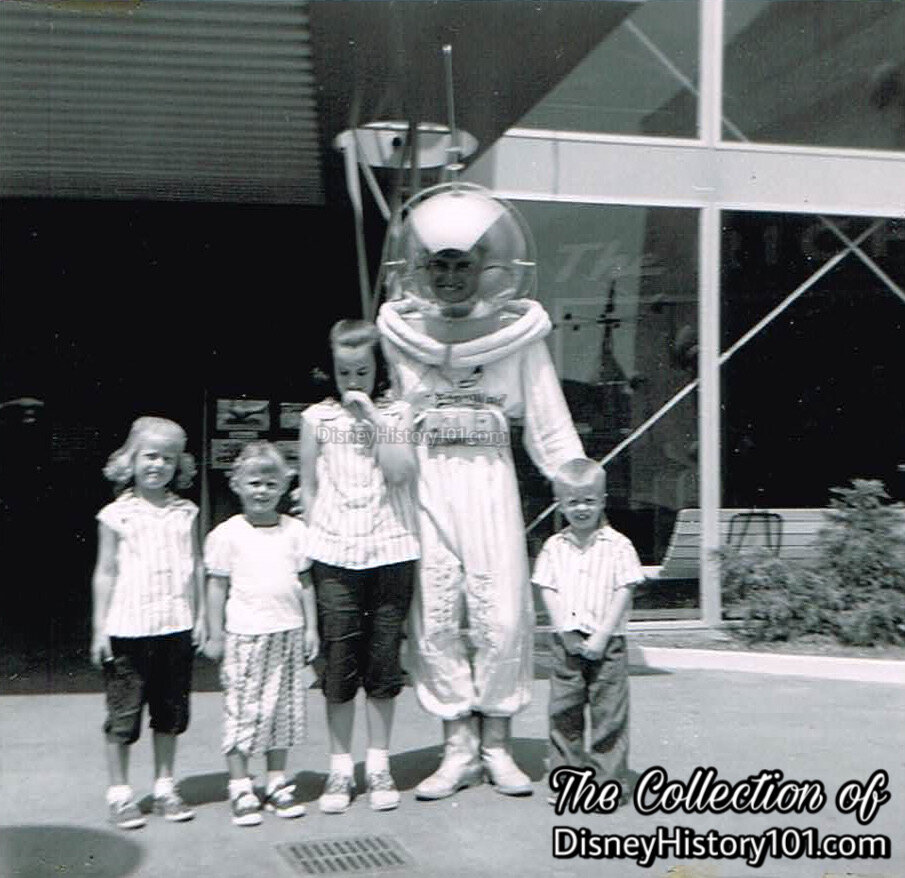
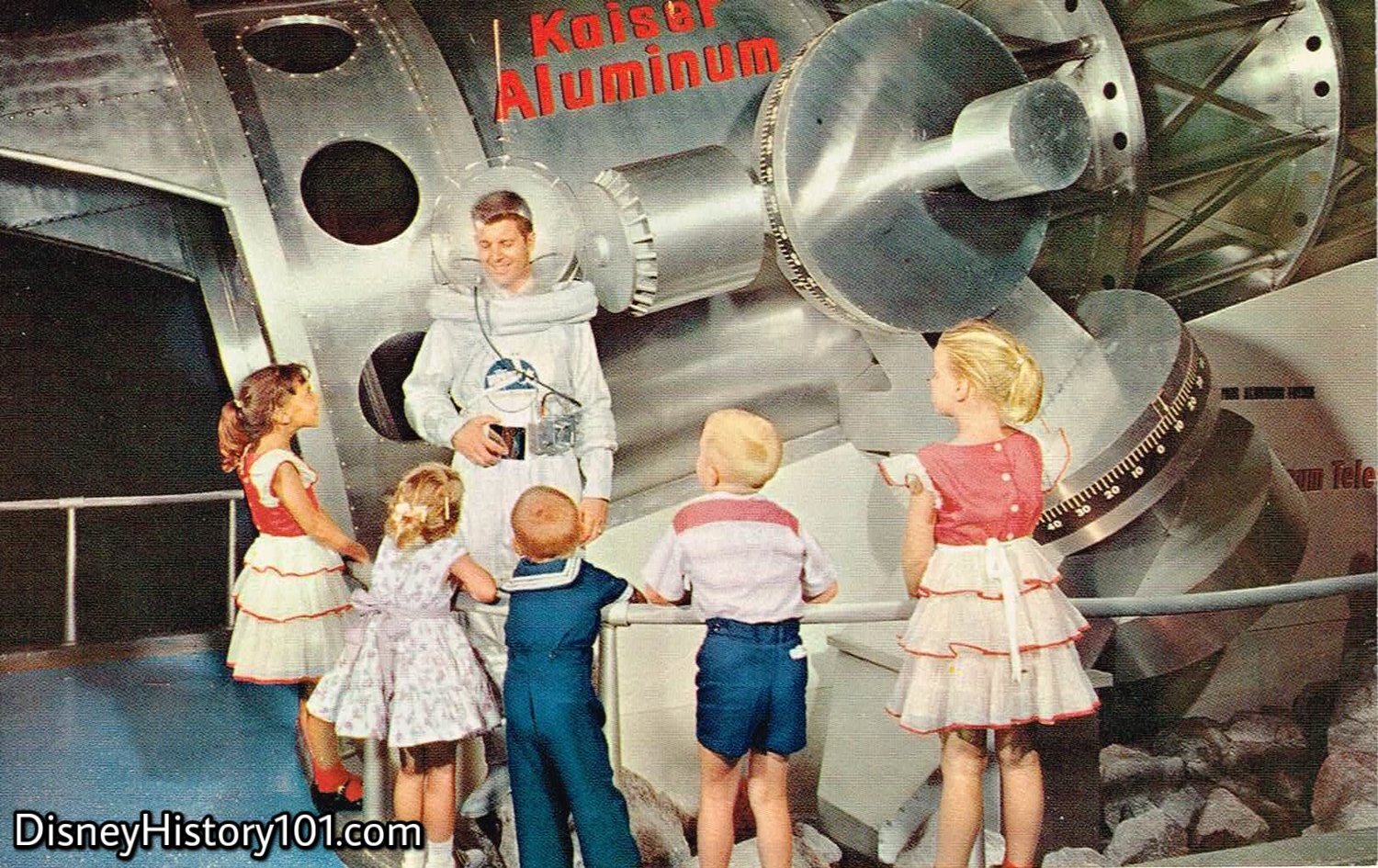
TOMORROWLAND SPACEMAN on Kaiser Aluminum Postcard
“That Kaiser Aluminum Space Suit sure looks familiar?“
That’s not a “talking knight”! The spectacular Spaceman was known to delight children and give them a glimpse of their “Kaiser Aluminum future” near the Kaiser Aluminum Telescope in Kaiser Aluminum’s World of Metals exhibit!
Working With Disney : Interviews With Animators Producers and Artists preserved the sentiments of John Catone (former Tomorrowland Spaceman) :
“I’d stay in there about twenty-five or thirty minutes, depending on the heat…That thing weighed sixty-six pounds. It was made by Kaiser Aluminum. It was a Kaiser suit. I used to average about thirteen thousand pictures a day with children and adults.”
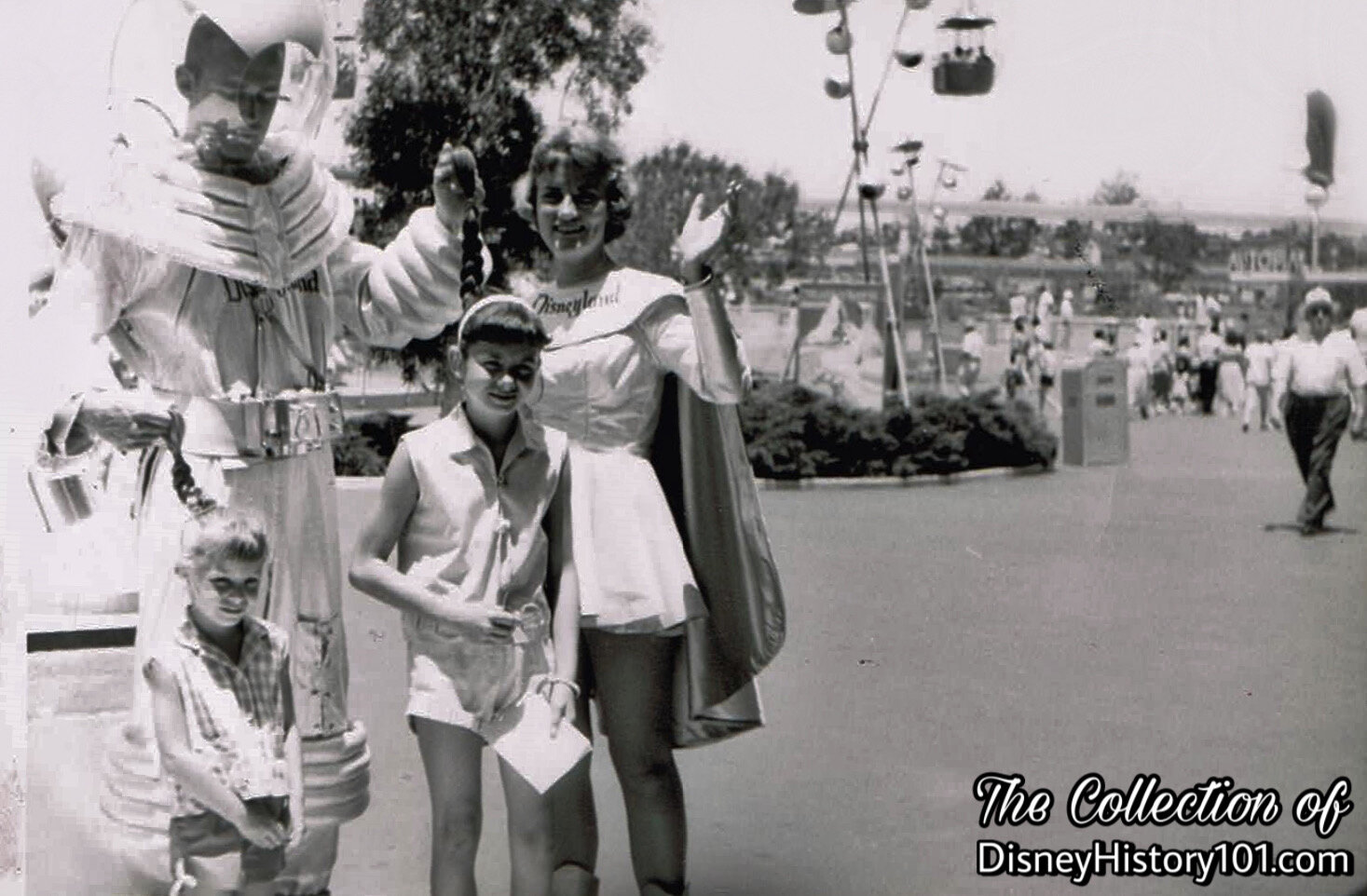
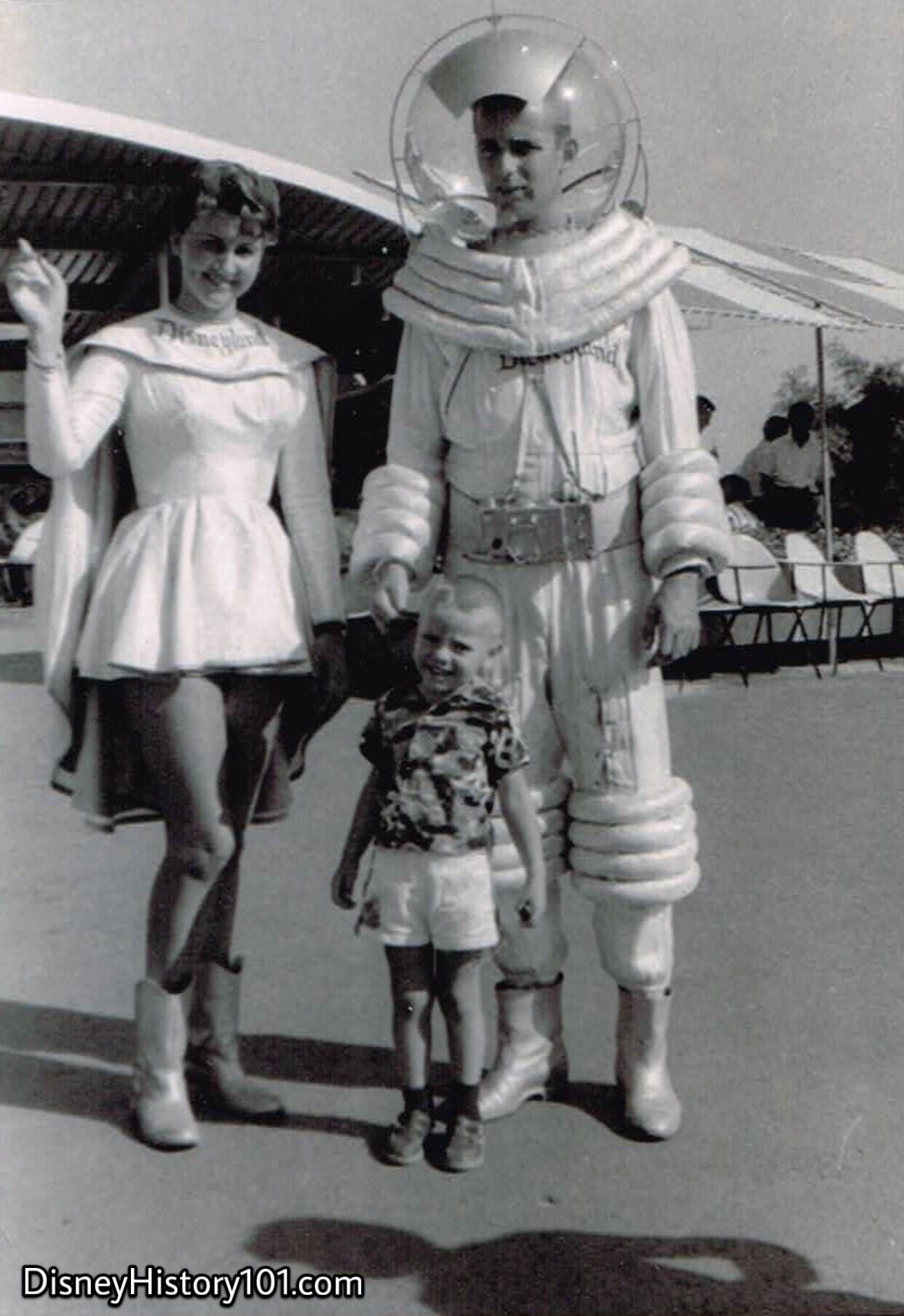
TOMORROWLAND SPACE COUPLE extends courtesy toward a VIP, November, 1959.
The Space Couple were also known as Space Man and Space Woman. They appeared six days a week, during the 1950s to present “celestial fashions of the future”. This version of the Space Woman (or, Spacegirl) suit (with pink-lined cape) was seen c. 1957-1959. Spaceman Bill Waltz (pictured), would shake hands with Richard Nixon upon his visit to Disneyland in 1959.
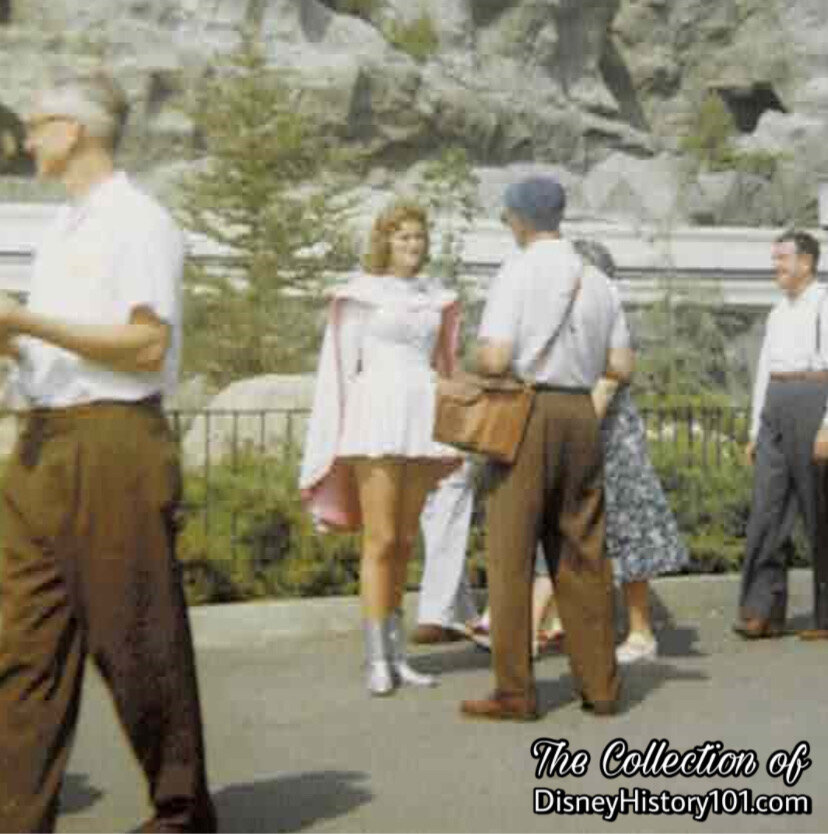

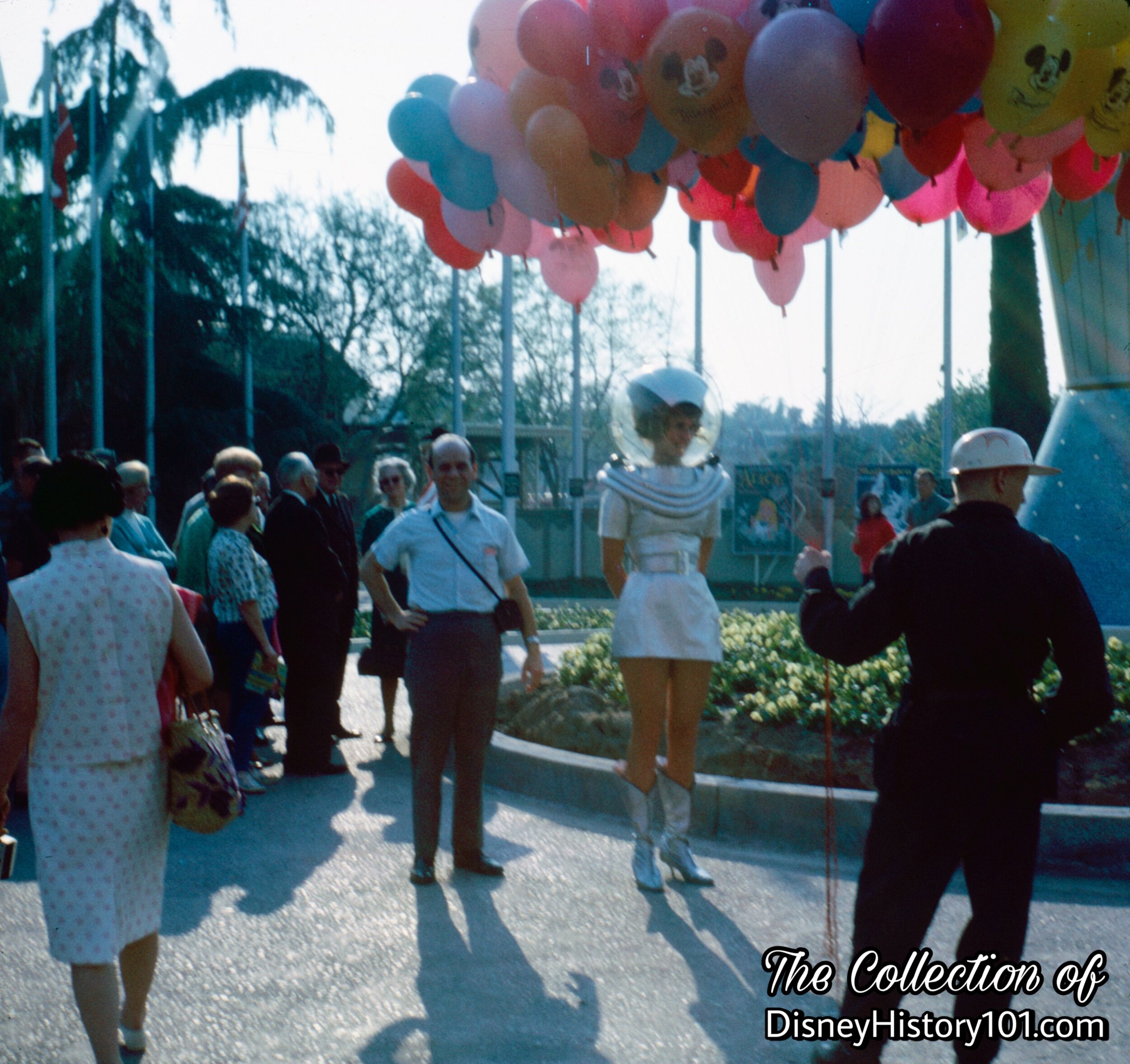
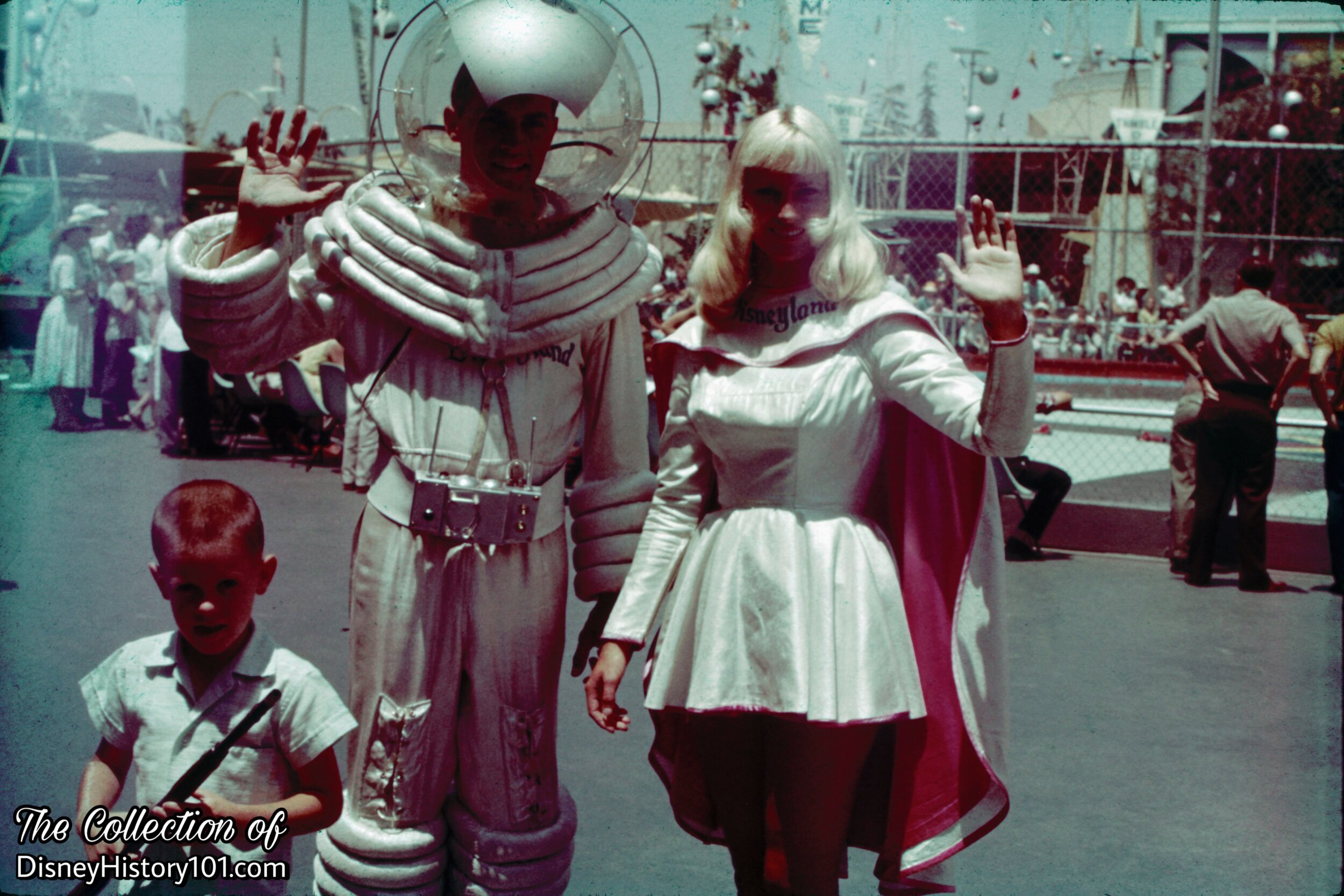
TOMORROWLAND COUPLE, (Summer, 1960)
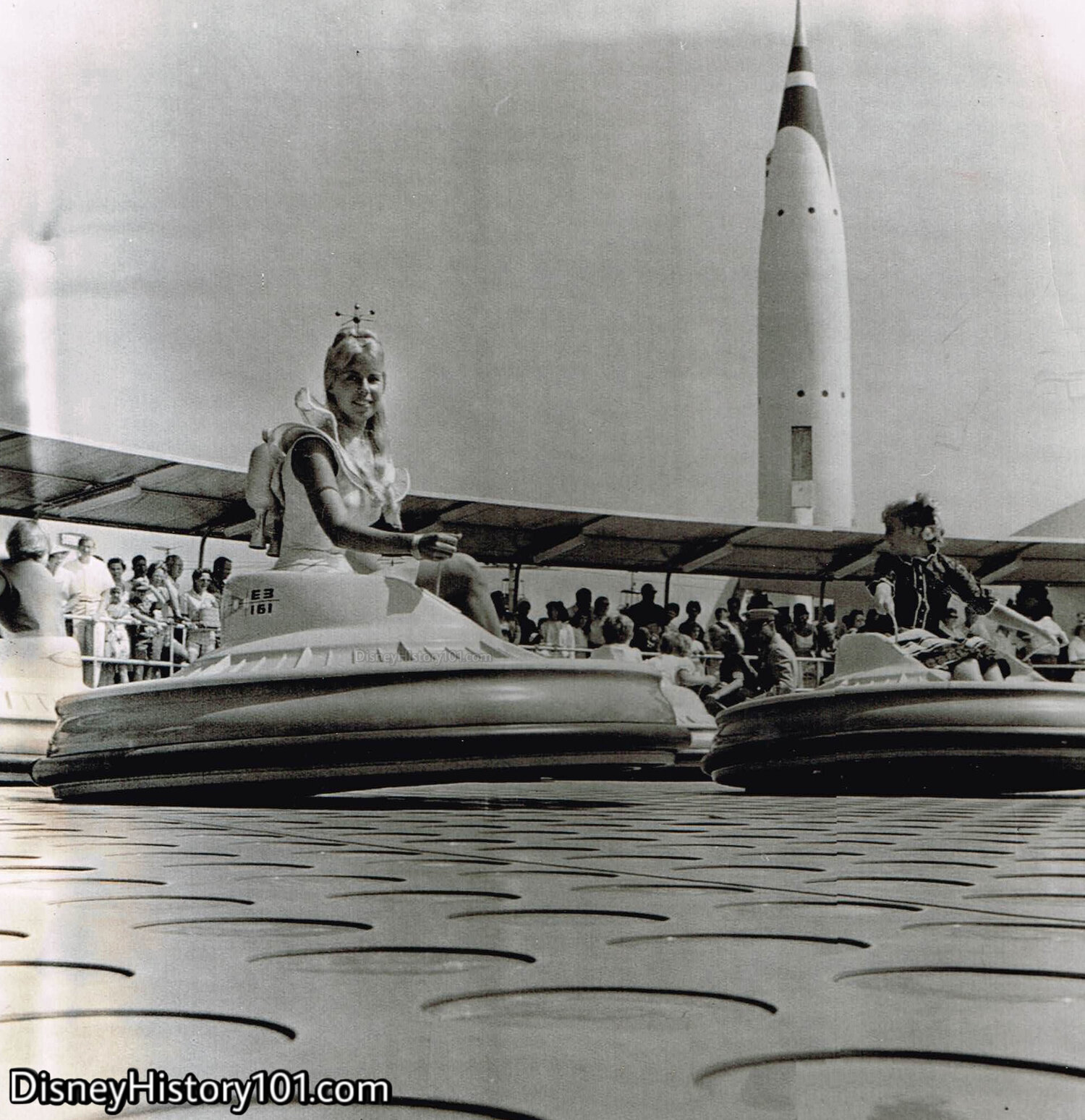
TOMORROWLAND SPACE WOMAN (August 14, 1961), Photo Credit : UPI Telephoto, Collection of Disney History 101
“‘Space Girl’ Donna Fox (left foreground) takes to the air in Disneyland’s newest - Flying Saucers. The single passenger ride is motivated by air blasts coming from the many circles on the floor. Passengers weight directs craft in the direction of lean combined with control handles which cause spin. The Disneyland Space Station had its opening 8/14.”
Donna Fox was also known to portray Disneyland’s Alice (of Walt Disney’s Alice in Wonderland).


TOMORROWLAND SPACE COUPLE, (c. June, 1961)
This new Spacegirl suit first appeared on the scene during 1960, featuring a flared collar and a small “D” on the front of the suit!
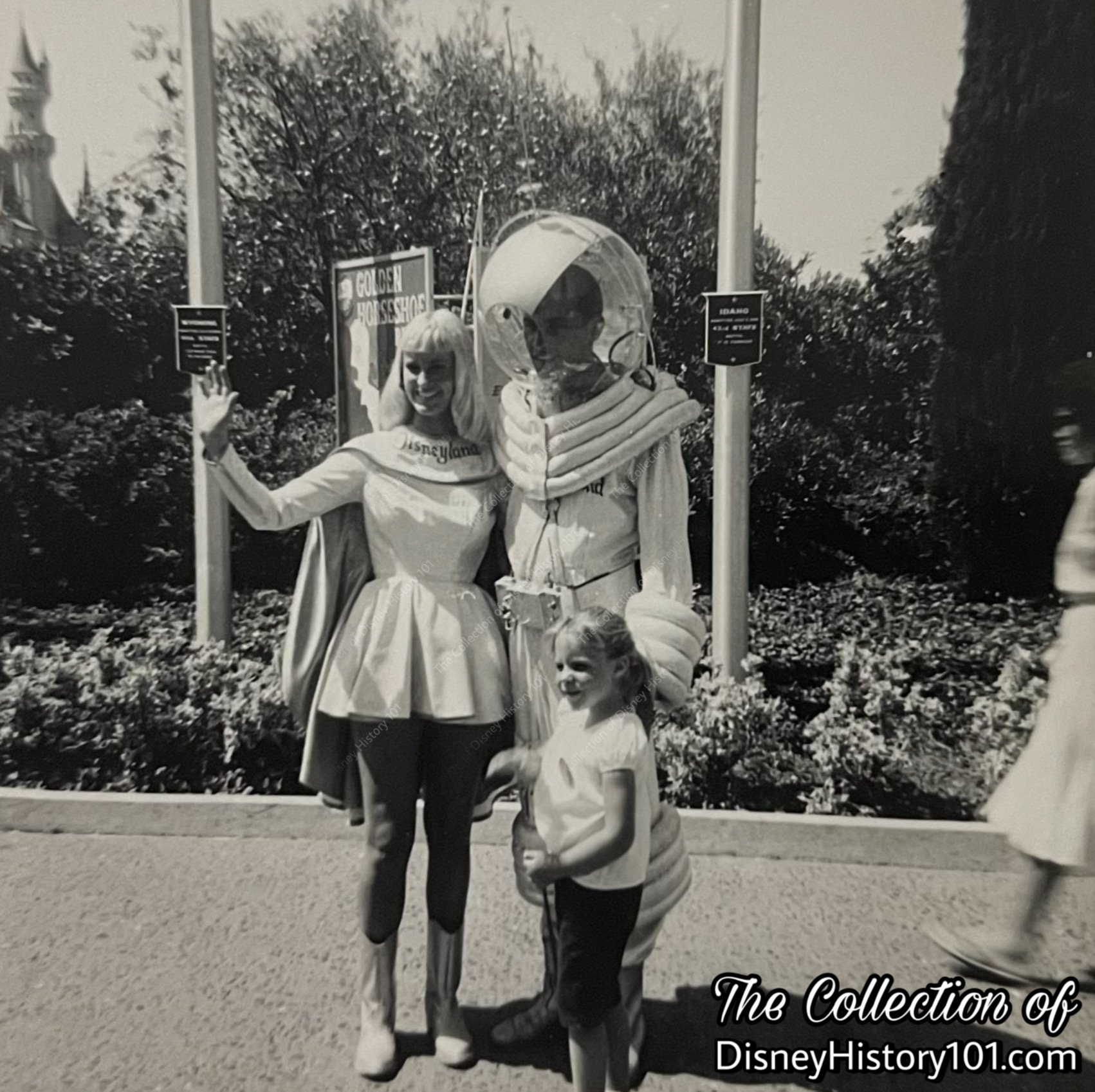
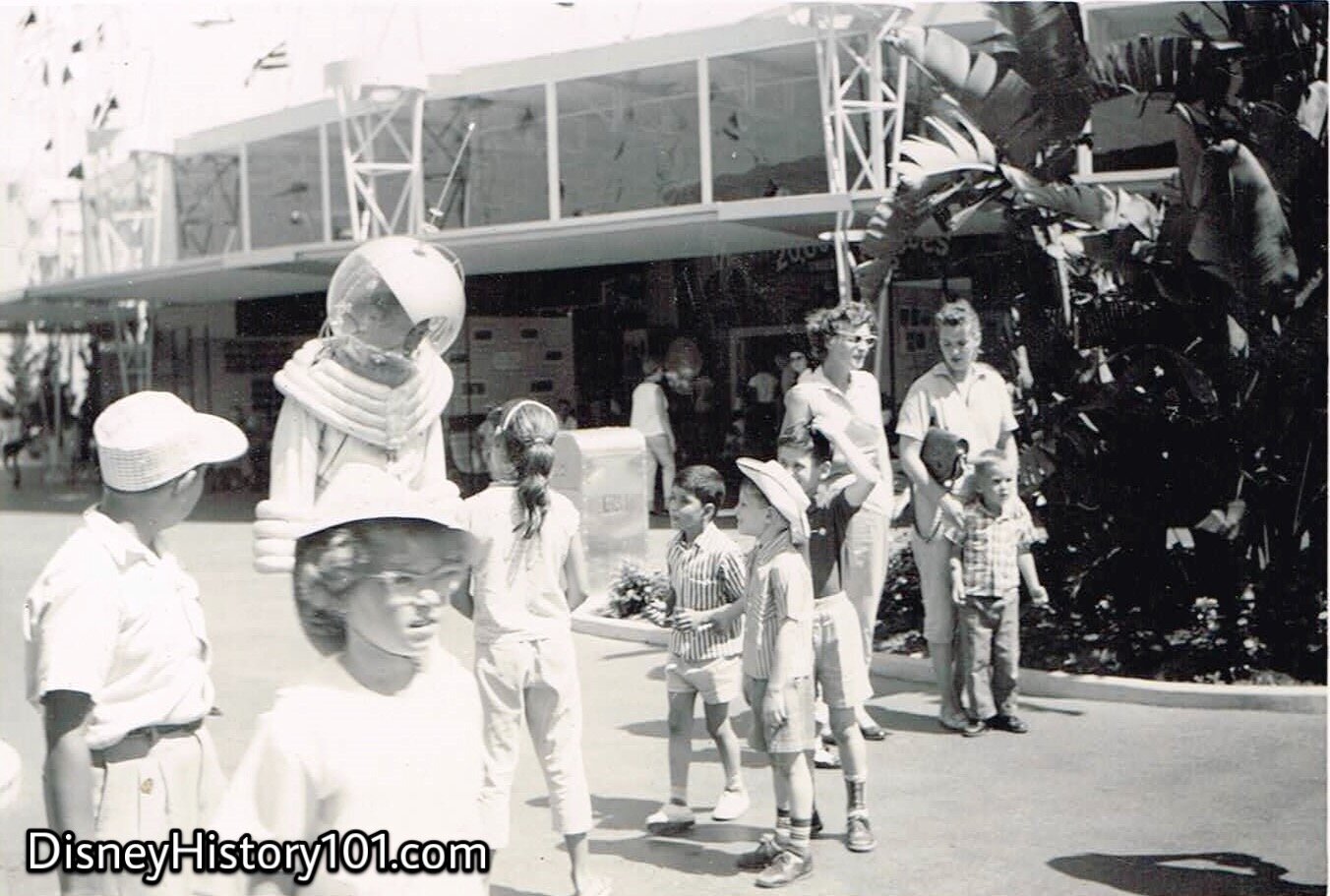
TOMORROWLAND SPACEMAN, (June, 1960)
The Spaceman could also be found near the 20,000 Leagues Under the Sea exhibit hall.

TOMORROWLAND SPACEMAN, (August, 1965)
Tomorrowland Spaceman John Glenn in the spacesuit!
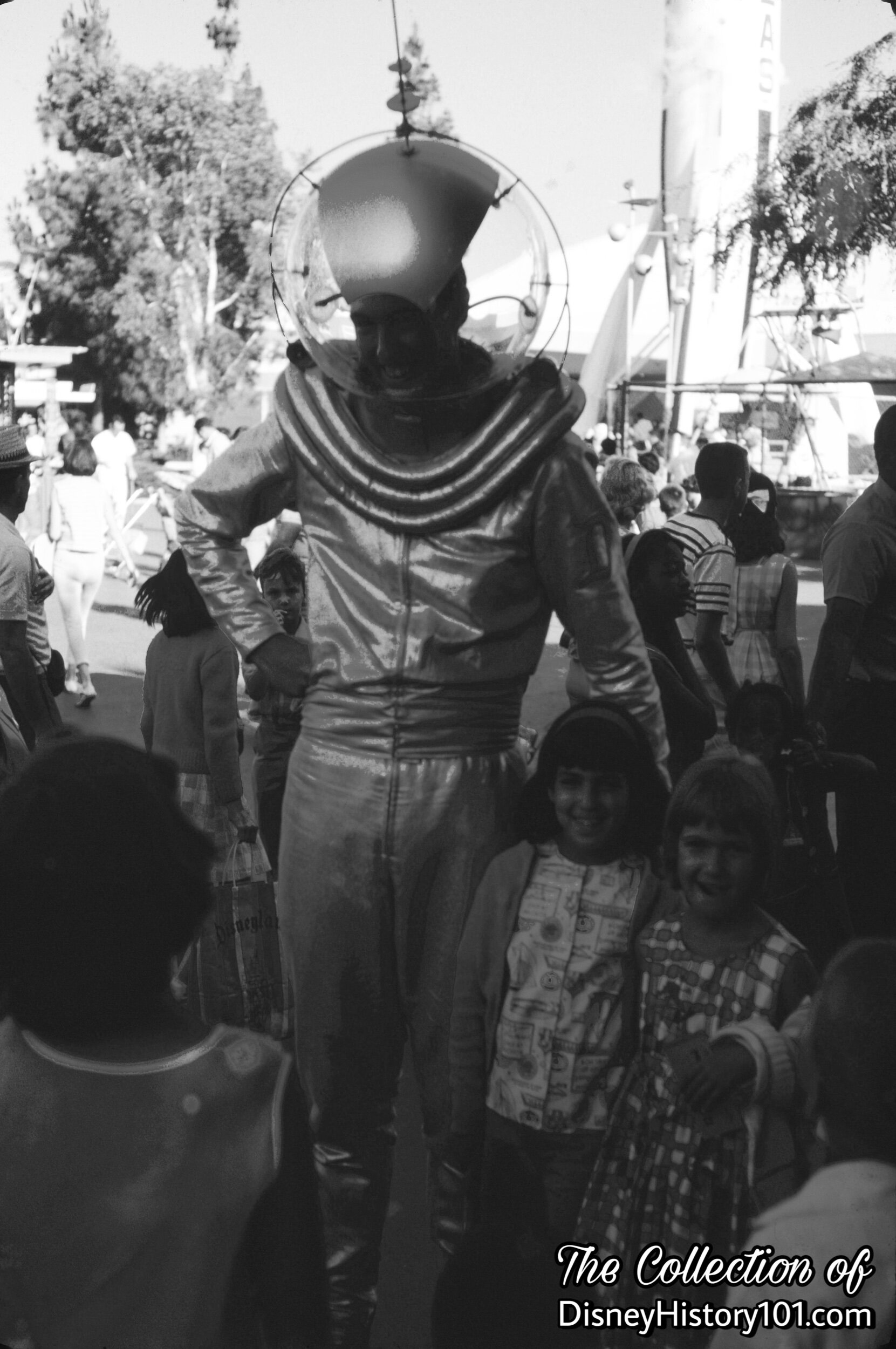
TOMORROWLAND SPACEMAN, (August, 1965)
The towering 6’ 9” Tomorrowland Spaceman John Glenn takes time with younger terrestrials! Where costumed characters were usually paid $1.85 - 2.00 an hour, John Glenn was paid $2.25 per hour, due to his height!
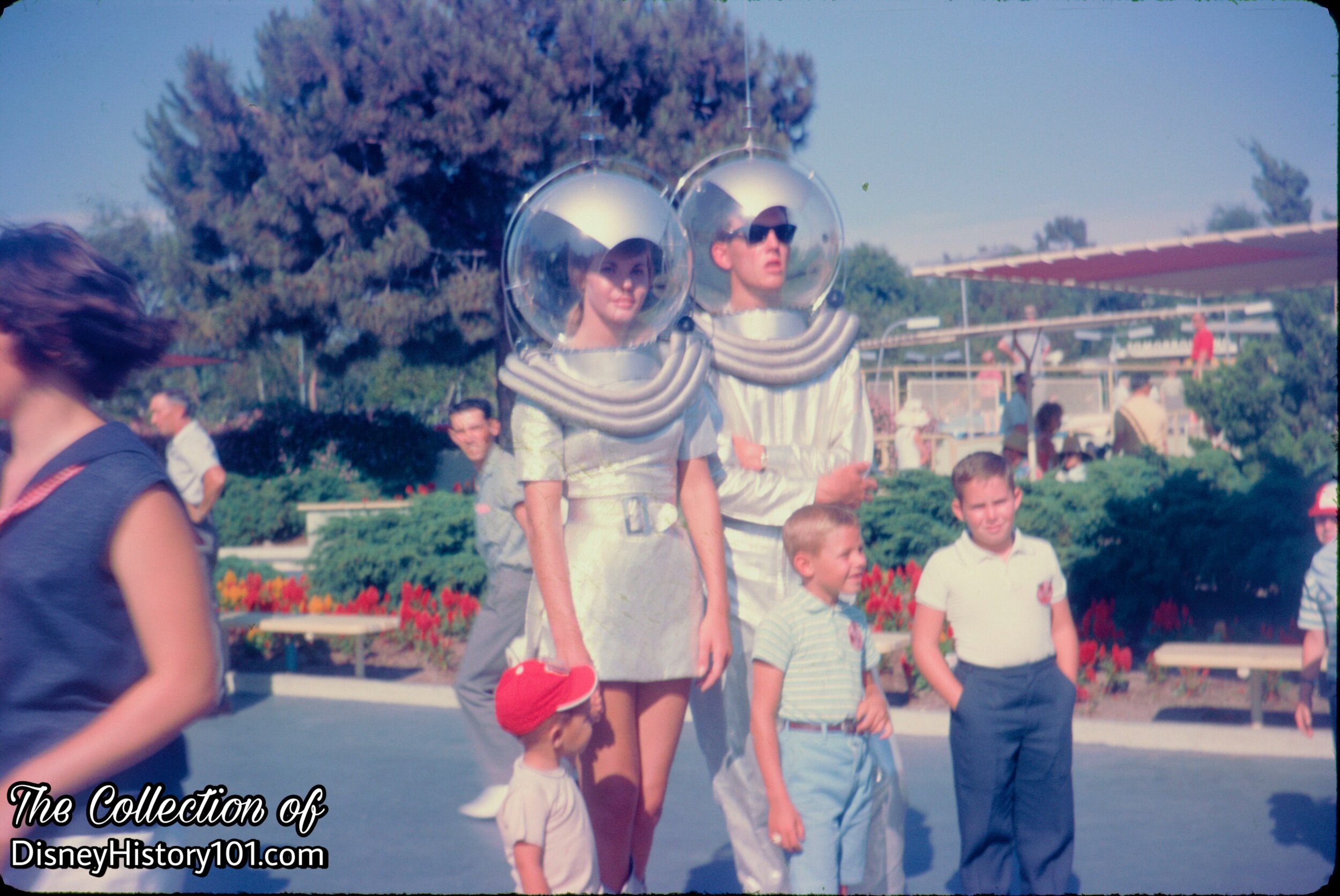
TOMORROWLAND SPACE COUPLE (1961)
We’ve seen this Spaceman in other c. 1961 photographs.
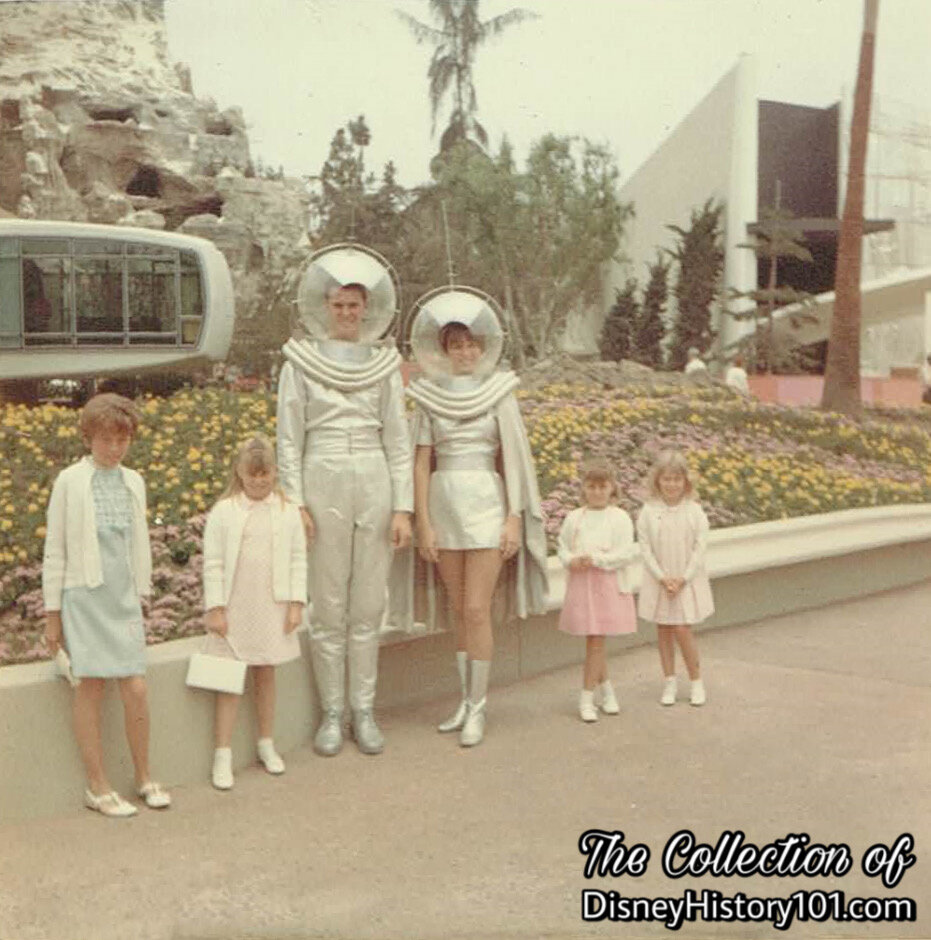
(1967)
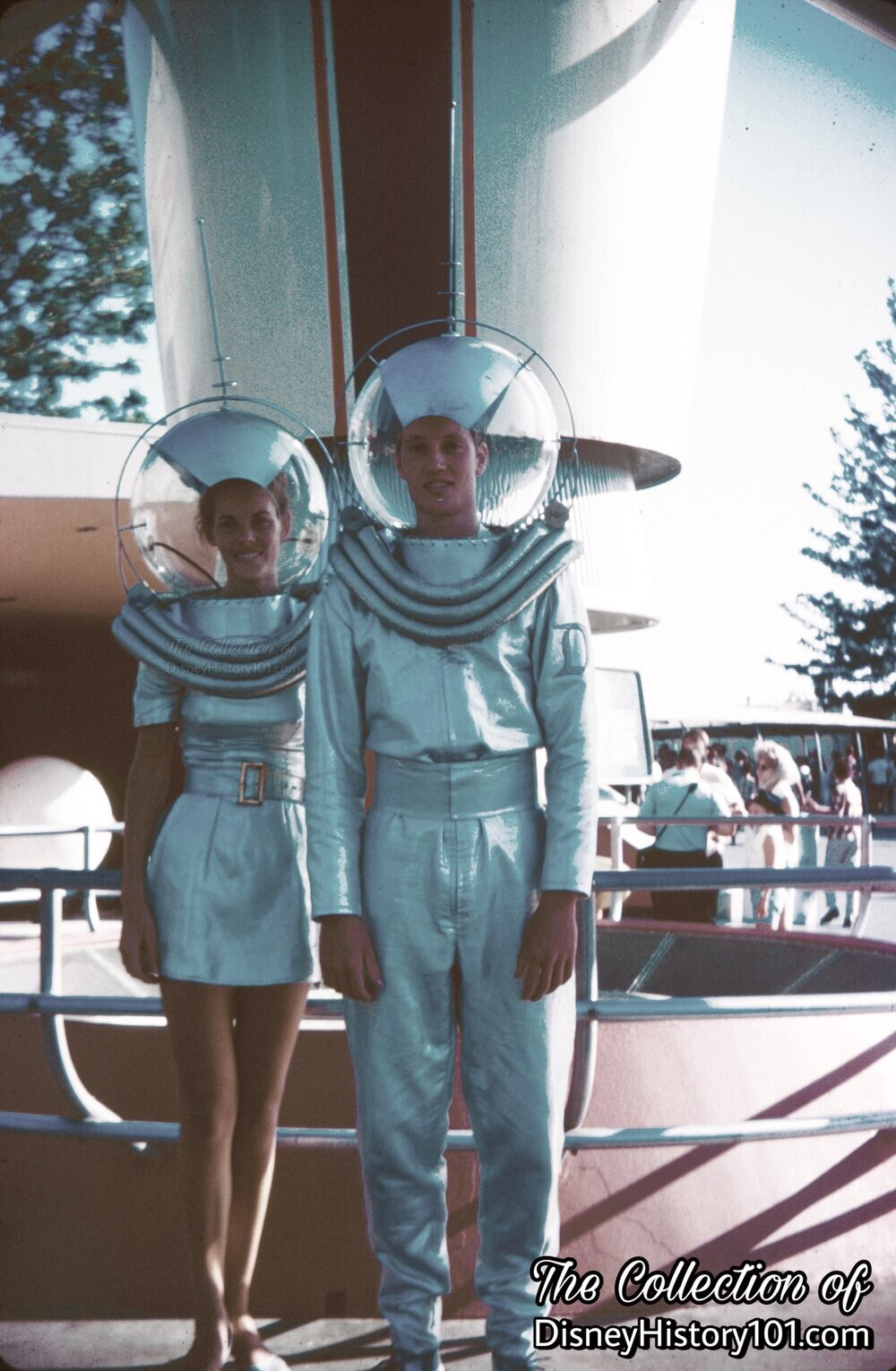
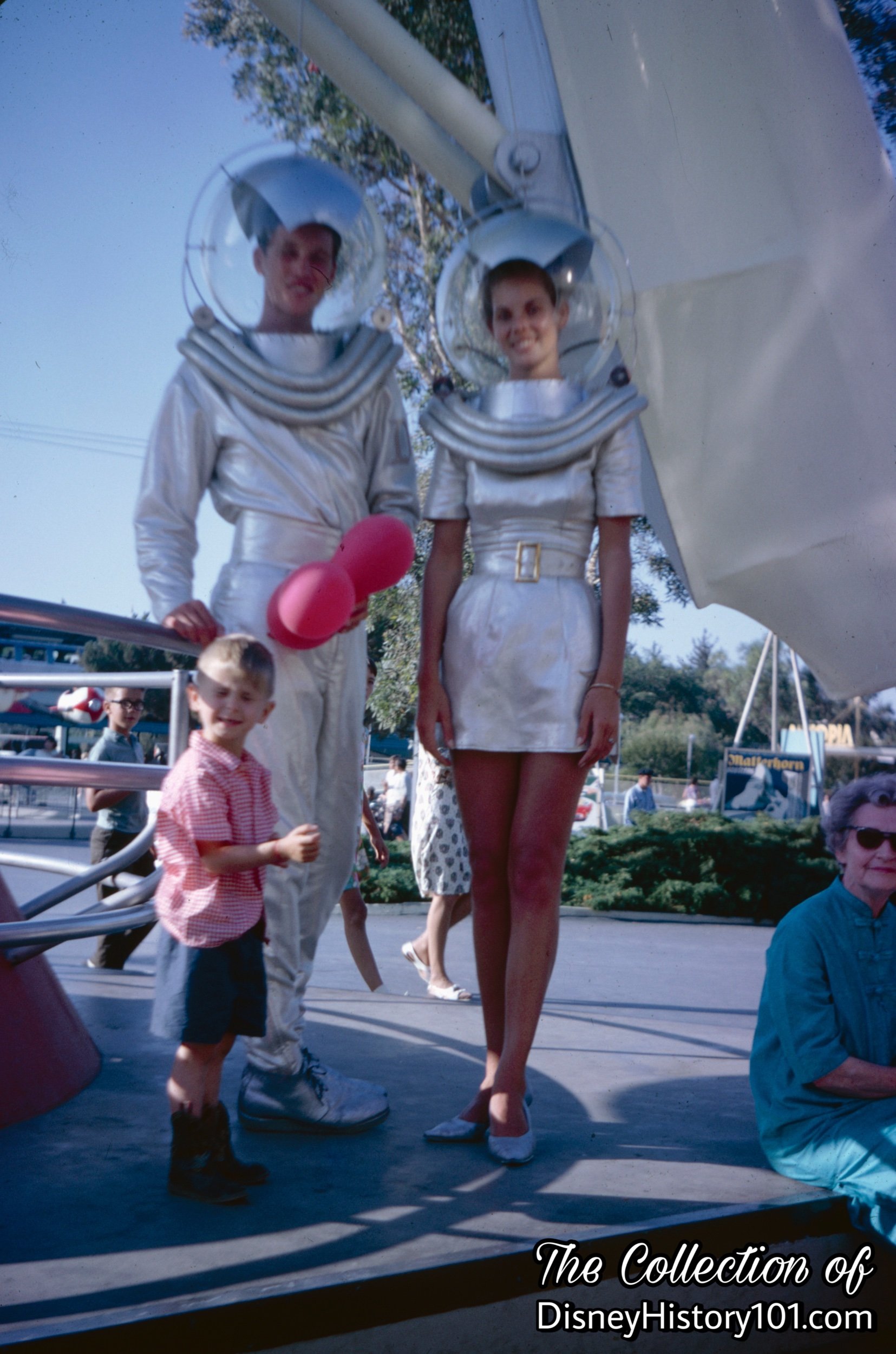

Tomorrowland Spaceman, (December, 1961)
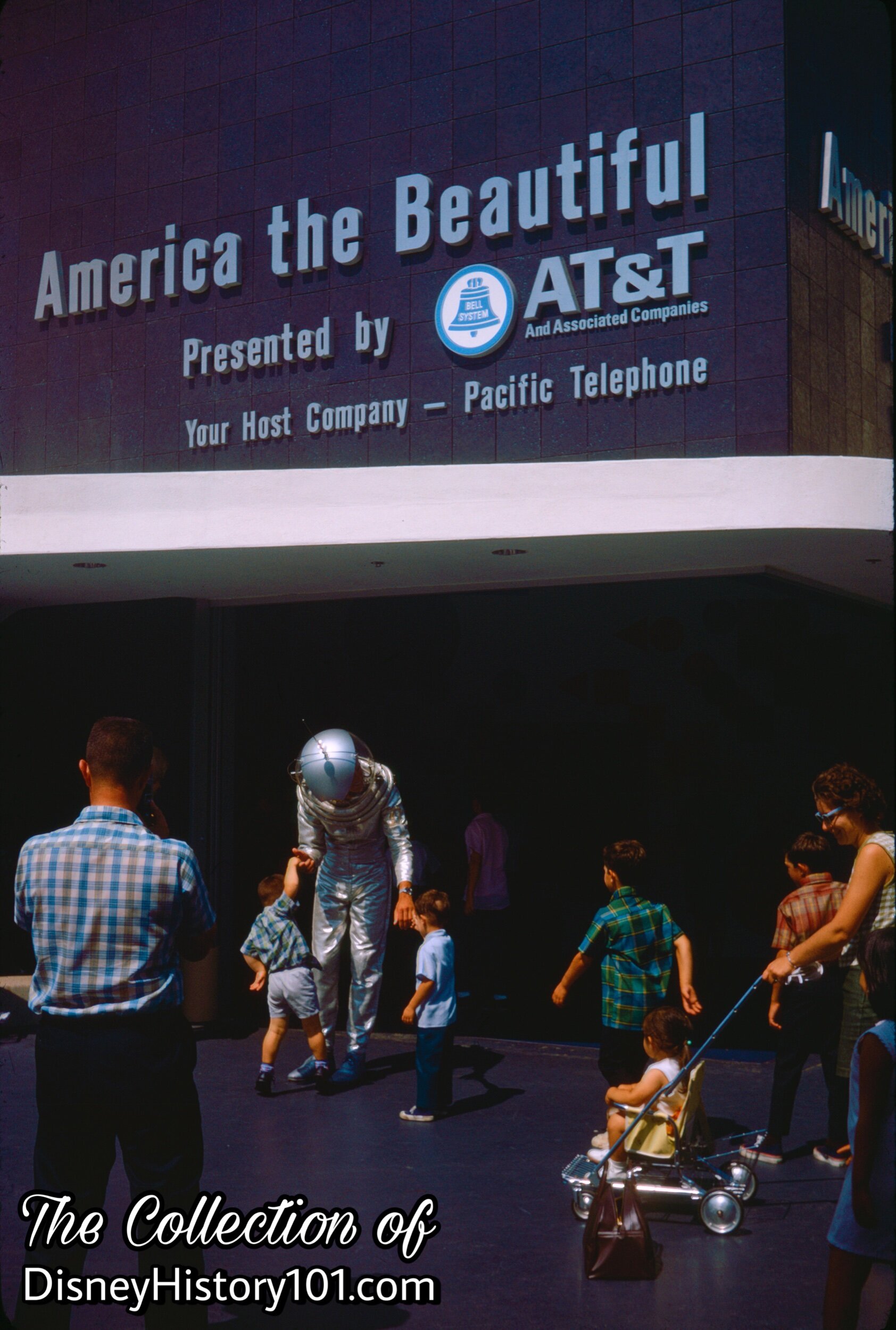
TOMORROWLAND SPACEMAN, (c. September, 1967)
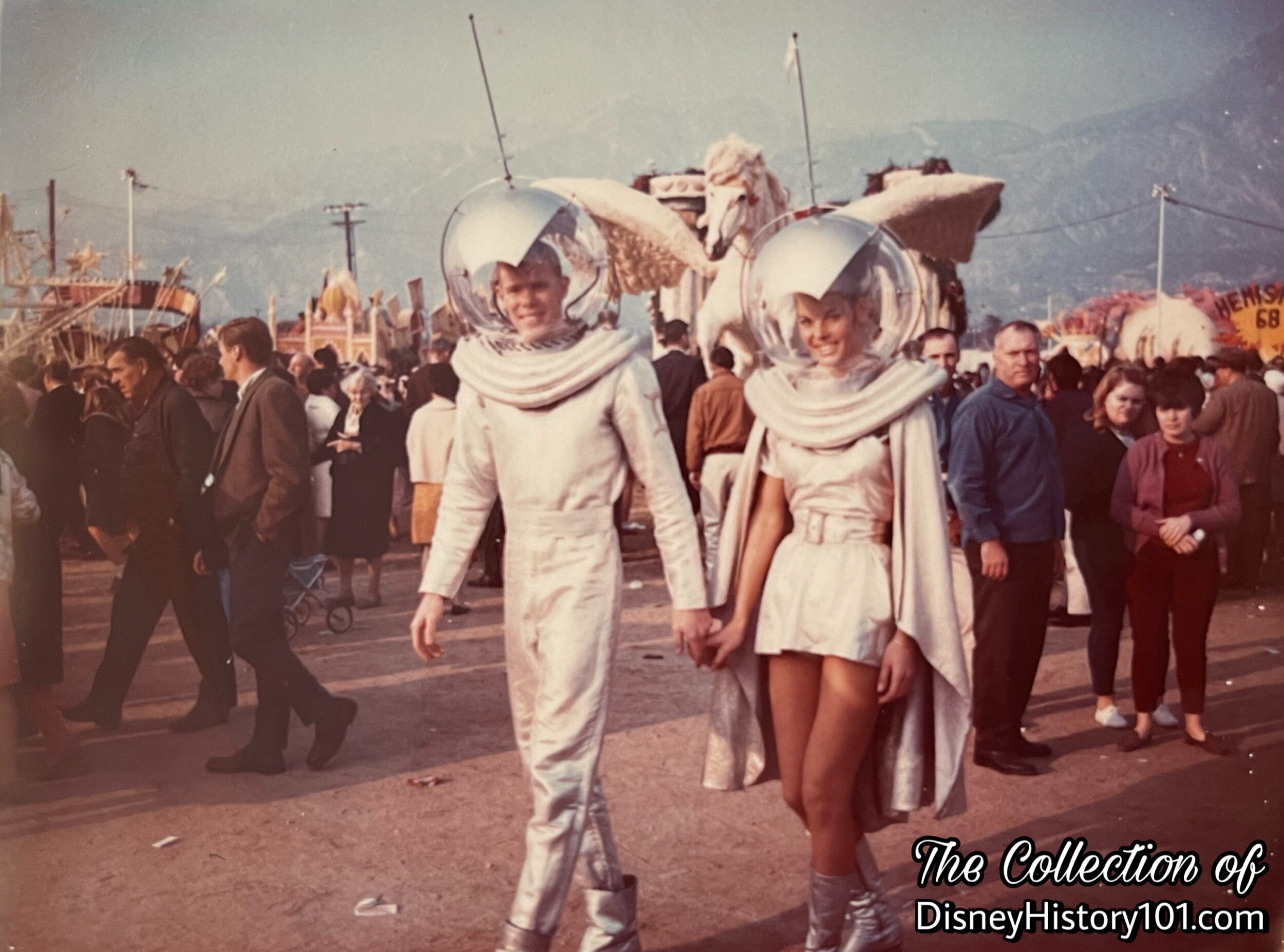
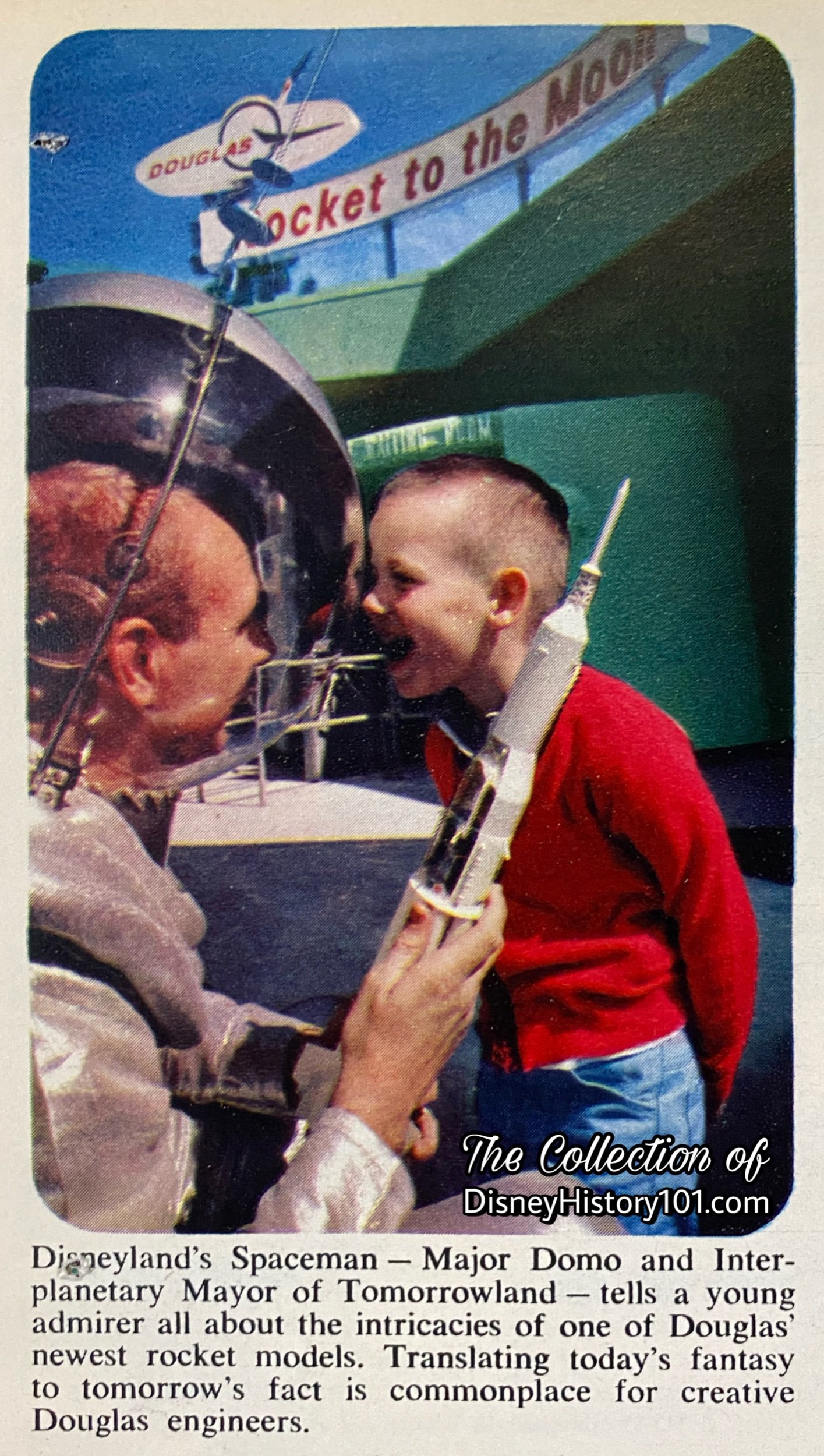
Disneyland Spaceman as seen in “Disneyland ‘65 Tencennial Celebration” Supplement Excerpt.

•Ursula - When she isn’t disguising herself as Vanessa.


• Walrus - During the winter season of December 19, 1970 through January 3, 1971, he appeared at locations near Small World.
• Wendy - Wendy Moira Angela Darling
•(Mr.) White Rabbit Esquire (Alice in Wonderland) - The White Rabbit (voiced by Bill Thompson) first led Alice down the Rabbit Hole, in the 1951 Walt Disney’s animated feature-length film, released July 28, 1951.
Since then, the White Rabbit (the Queen of Heart’s Squire) was typically seen around Fantasyland, and during the Spring season was often found alongside Mrs. Rabbit. During the mid-1960s, John Matthews was “close to” White Rabbit.
The White Rabbit was part of the Pre-game “Walt Disney and Disneyland Salute to the California Angels” at the new Angels Stadium on Saturday, April 23rd, 1966!
The White Rabbit and Mad Hatter made regular appearances at the Forecourt Fantasyland Theater, greeting guests as part of the Character Program, “throughout the Christmas Holidays” (daily between parades, from 9:00am to 11:45am). [“Disneyland Holiday Talent Master Schedule,” prepared for the period of December 16, 1967 through January 1, 1968]. It wasn't until the late 1970’s (or early 1980’s) that the White Rabbit acquired a clock around his neck, which never reveals the correct time of day.
When he isn’t late for an important date with the Queen of Hearts, the White Rabbit is meeting and greeting Guests.
•Widow Tweed (The Fox and the Hound)
•Winnie the Pooh - “Winnie the Pooh and the Honey Tree” was an animated featurette - the last short film that Walt saw to completion before his passing. It was released to American audiences along with The Ugly Dachshund (February 4, 1966), winning an Academy Award for Best Animated Shirt film. The Winnie the Pooh characters are based on the "Winnie the Pooh" works by A.A. Milne and E.H. Shepard.
In an advance promotional “cross pollination” between Walt Disney Studios and Disneyland, the stuffed Winnie the Pooh, the residents of The Hundred Acre Wood (Eeyore, Kanga and little Roo, Rabbit, Owl), and even an anthropomorphic form of Winnie the Pooh’s Favorite Honey Tree character (with bees) soon made their Disneyland debut. Discussions were held, and a “Winnie the Pooh Presentation” was held for the Disneyland Production Staff on September 1st, 1965. Then, the Characters were created (the Winnie the Pooh and Honey Tree Characters appearing in the “Walt Disney Productions” Shareholders Report of 1965, page 10.
Soon, the Characters appeared in the very first Fantasy on Parade (held at Disneyland, during December of 1965). As a “sidelight”, I would like to mention that Rabbit carried Piglet (wearing a blue sweater) down the Fantasy on Parade route, though the character of Piglet would not appear in the featurette film. This parade (and their appearance) is briefly preserved in the Walt Disney’s Wonderful World of Color episode “Disneyland Around Seasons” (which first aired a year later, December 18th, 1966).
Next the Cast of Characters appeared with Grand Marshall Walt Disney in the Tournament of Roses Parade, after which Winnie the Pooh and his Hundred Acre friends went on a 21 city tour of the United States beginning in January of 1966. Departing in the Company turbo-jet, Eyesore, Rabbit (carrying Piglet), Owl, Kanga & little Roo, and Winnie the Pooh would appear on live television programs, fashion shows, at department stores like Sears and Roebuck and other promotional events.
During the summer of 1967, it was decided to approve and begin work on a sequel to the animated featurette “Winnie the Pooh and the Honey Tree.” As a “sidelight” I must mention that Walt previously (during 1966) had a hand in a few meetings regarding “Winnie the Pooh and the Blustery Day.” During at least one of these sessions, Walt had suggested Wally Boag (of Slue Foot Sue’s Golden Horseshoe fame) for the role of Tigger. However, after Walt’s death, Wally’s voice was found to be “to zany for a children’s film” and he was replaced with ventriloquist Paul Winchell. Walt would not live to see the film’s release in the United States, as a supplementary featurette alongside “The Horse In The Gray Flannel Suit” two years later, on December 20, 1968. Walt did not live to see Winnie the Pooh and the Blustery Day win an Academy Award for Best Cartoon Short Subject in 1969.
Still, in preparation for the film’s release, Los Angeles Mayor Sam Yorty declared October 25, 1968 to be “Winnie the Pooh Day”! In addition, another “cross pollination” of promotion between Walt Disney Studios and Disneyland was scheduled. Winnie the Pooh and several of his Hundred Acre neighbors made appearances at Disneyland and 25 Sears department store locations across the United States (e.g. Sears Plaza Store, Kansas City, Missouri)! While there, Winnie the Pooh also made an appearance on ABC television (on September 5th, 1967) and NBC television (on September 6th, 1967). Winnie the Pooh was also featured in the Veiled Prophet Parade of St. Louis, Missouri, on September 13th or 14th, 1967.
Winnie the Pooh made regular appearances at the “Small World” Area, greeting guests as part of the Character Program, “throughout the Christmas Holidays” (daily between parades, from 9:00am to 11:45am). [“Disneyland Holiday Talent Master Schedule,” prepared for the period of December 16, 1967 through January 1, 1968]
Fantasy on Parade (debuting during December of 1968) introduced a “Woozil Band” alongside the cast of the Hundred Acre Wood from “Winnie the Pooh and the Blustery Day” to Disneyland guests! A small Piglet (who was added to the featurette film, late in pre-production), now sat in a wagon (as opposed to being carried by Rabbit), and he was pulled along the Fantasy on Parade route by Eeyore.
A number of individuals were “close” to Winnie the Pooh thru the years, including Paul Dawson (c.1965) and Robert Hill (c.1981).
He also made appearances around 1972, at “mix in” and “Regular Private Parties” (first five hours of party beginning 15 mins. prior to the gate opening of each party). Winnie the Pooh Days was held on April 15 and 16, 1972.
Winnie the Pooh ran for president in 1972 and again in '76, with a parade at Disneyland to promote his election. Winnie the Pooh joined the race, promising “honey in every pot,” at daily rallies held in Town Square, during Pooh for President Days.
If that wasn’t enough, Winnie the Pooh actually took the stand to defend Disneyland during a lawsuit filed in 1981.
When he doesn’t have a rummbly in his tummbly, Winnie the Pooh can be found at Disneyland.
•Witch (Snow White and the Seven Dwarfs)
•Wreck-It-Ralph - The Arcade World of Wreck-It-Ralph came to life in the Tomorrowland Starcade in 2012.
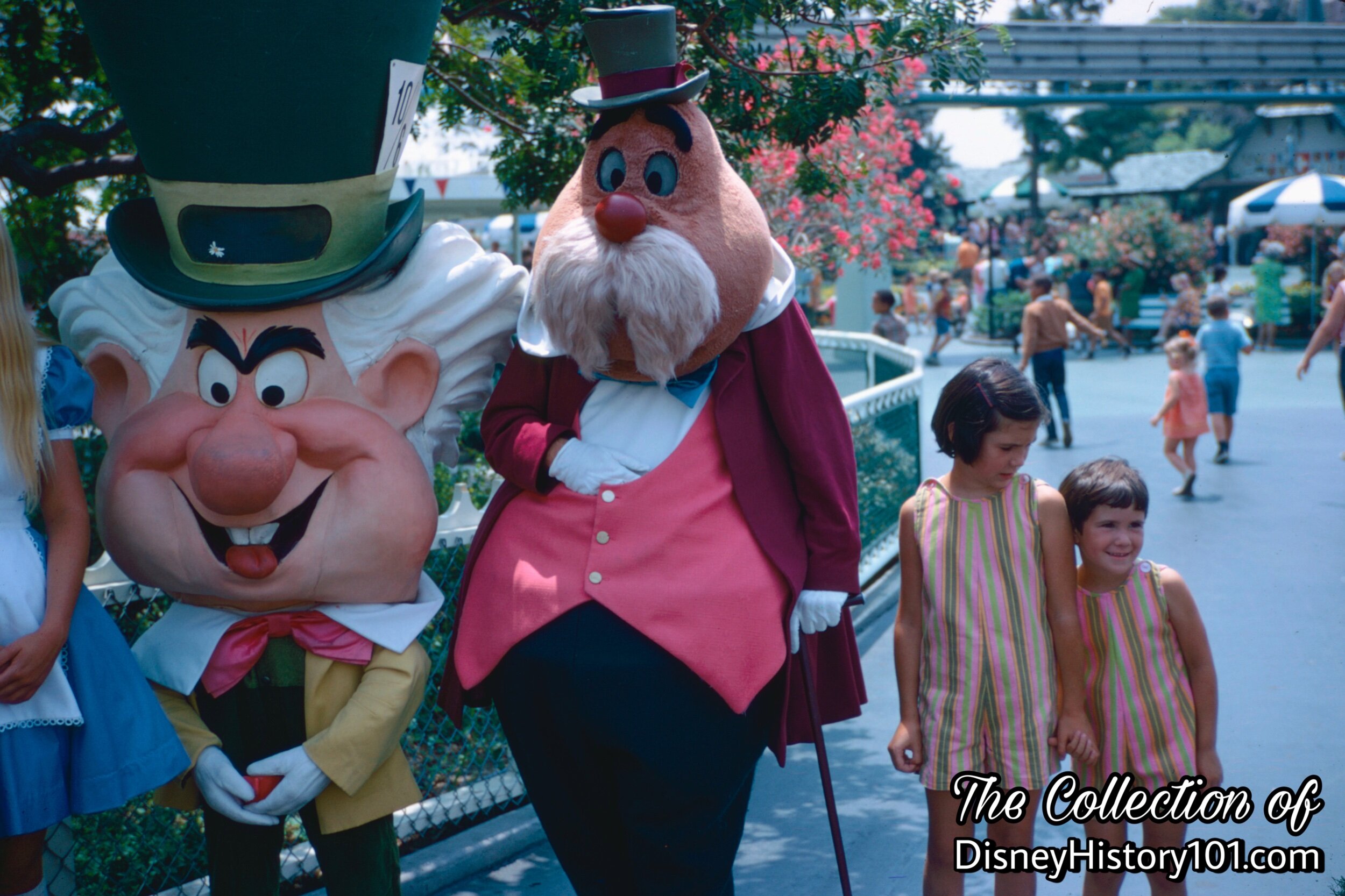
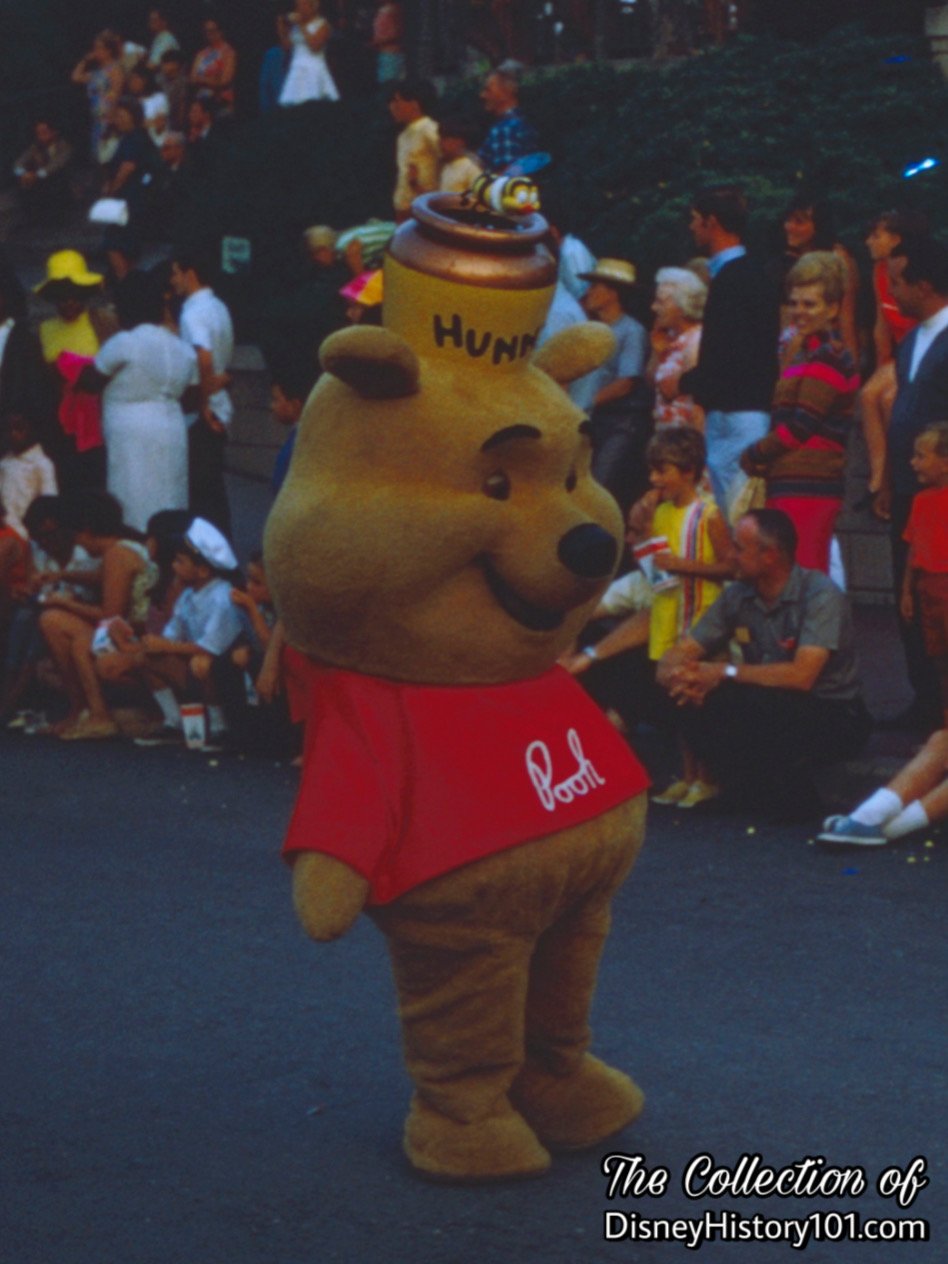
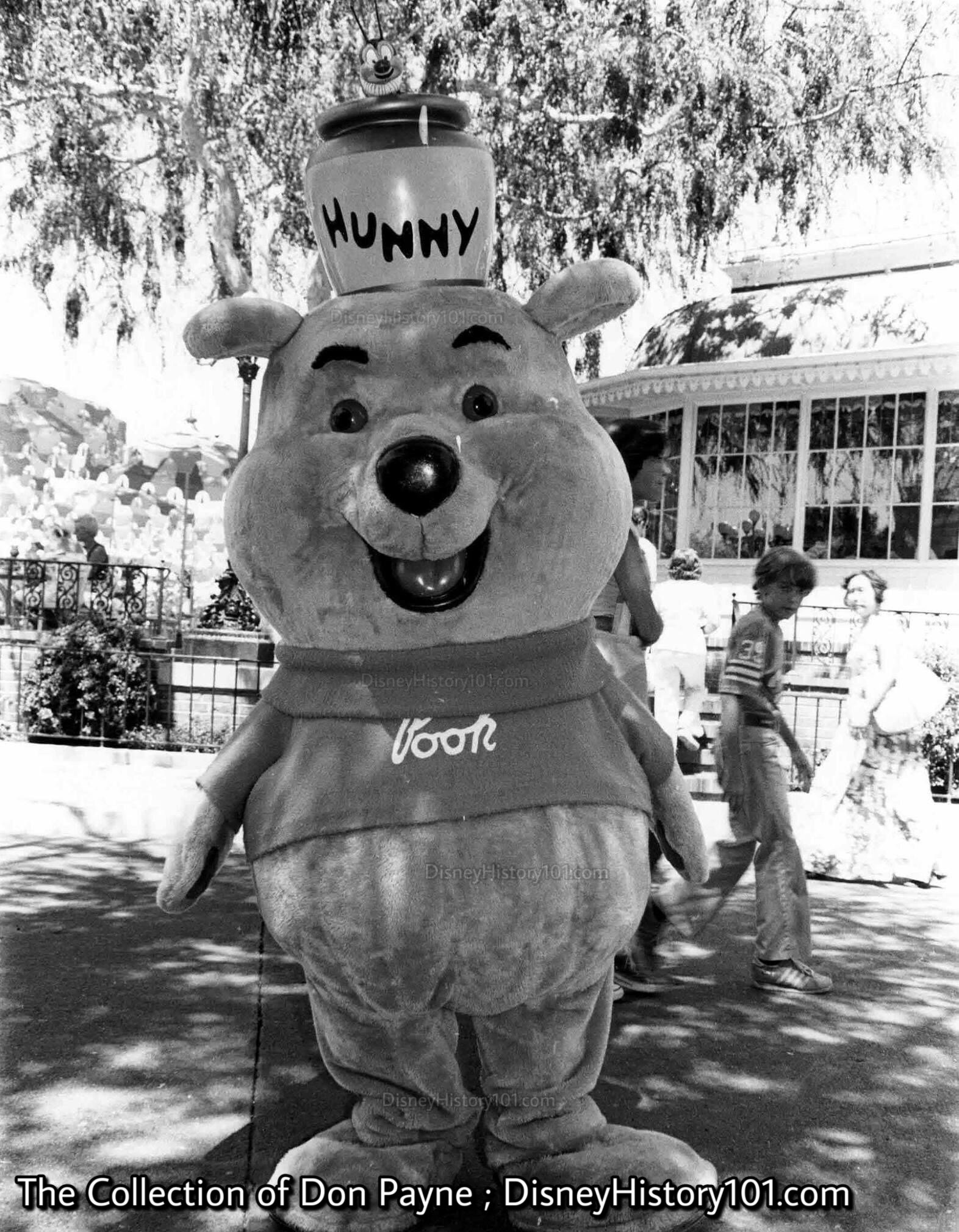
WINNIE THE POOH, (c. 1972)
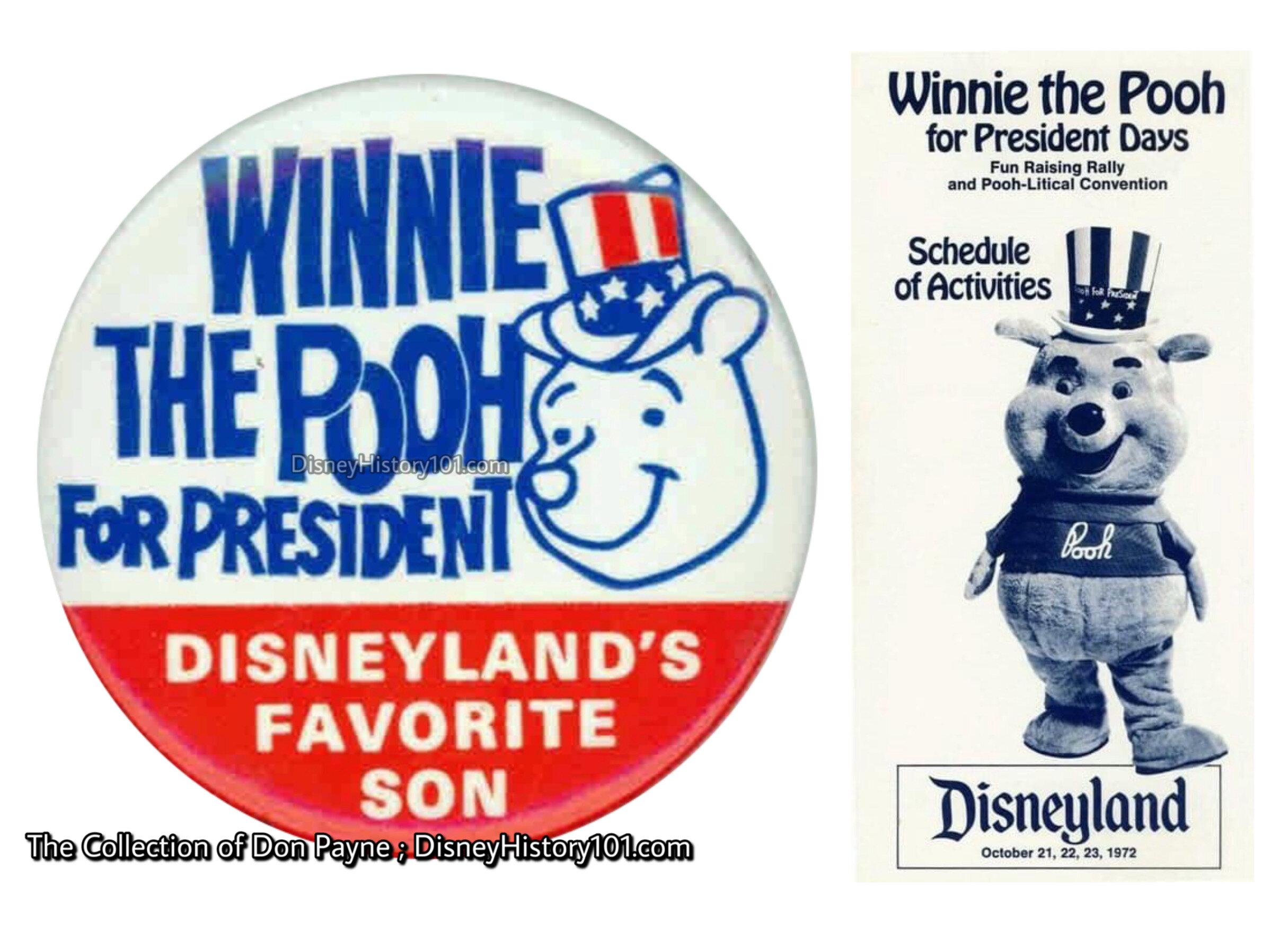
Winnie th Pooh - “Pooh for President” Campaign” (October 21-23, 1972)
OCTOBER 1, 1972, Winnie the Pooh is nominated the Children's Party candidate! With campaign advisors Tigger and Eeyore, Pooh soon hits the campaign trail via Amtrak with stops in many major cities across the United States! Sears promotional bumper stickers commemorate the campaign slogan, "Winnie-the-Pooh : the Children's Choice for PRESIDENT"!

Winnie the Pooh - “Pooh for President” (October 21-23, 1972)
Lloyd Mitchell and Don Payne (a regular “Pageant Helper”) hang out near the “Pooh for President” Drum Unit floats. Reid Shibata (Leadman) can be seen in the background of the right photo, facing the camera.
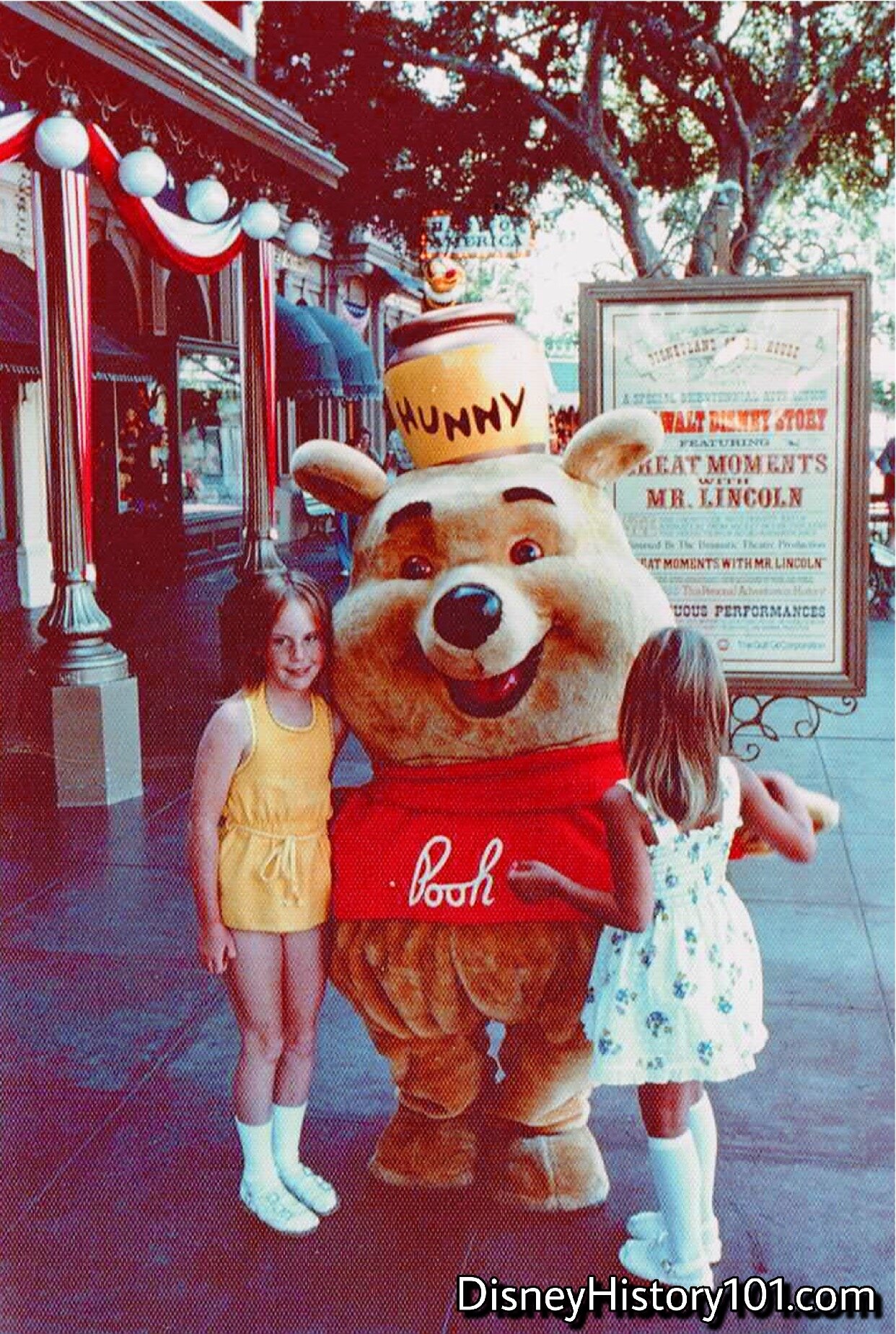
WINNIE THE POOH
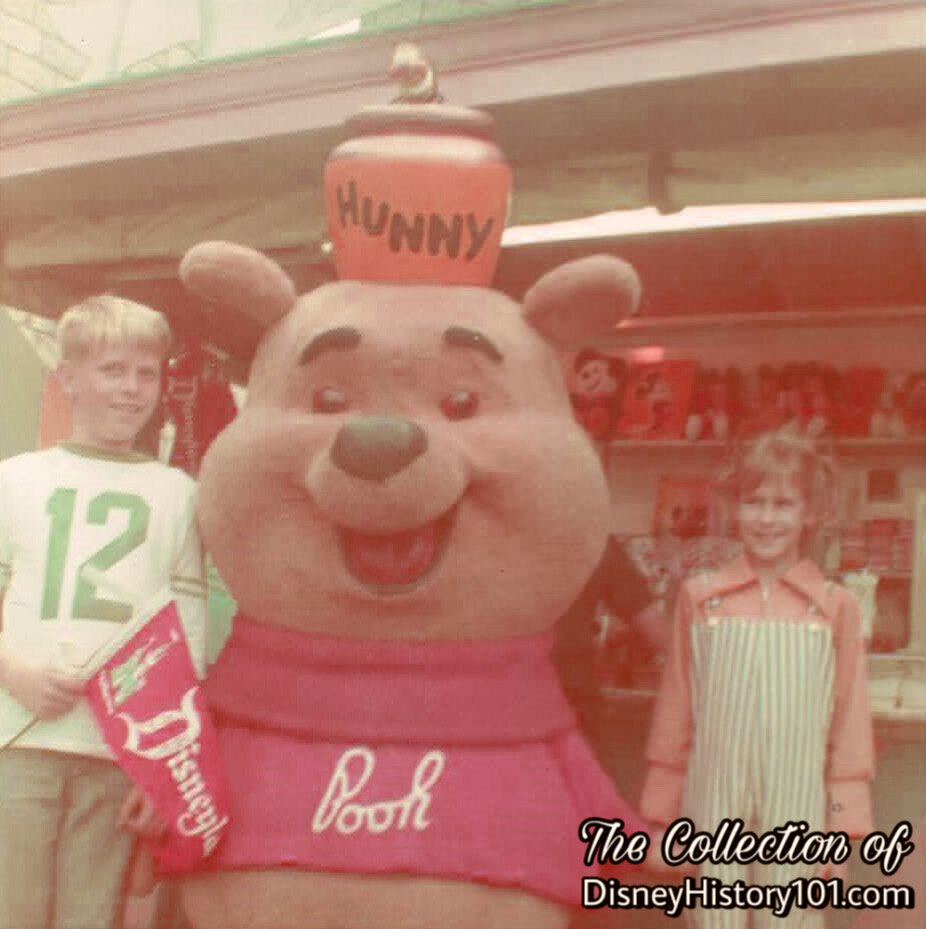
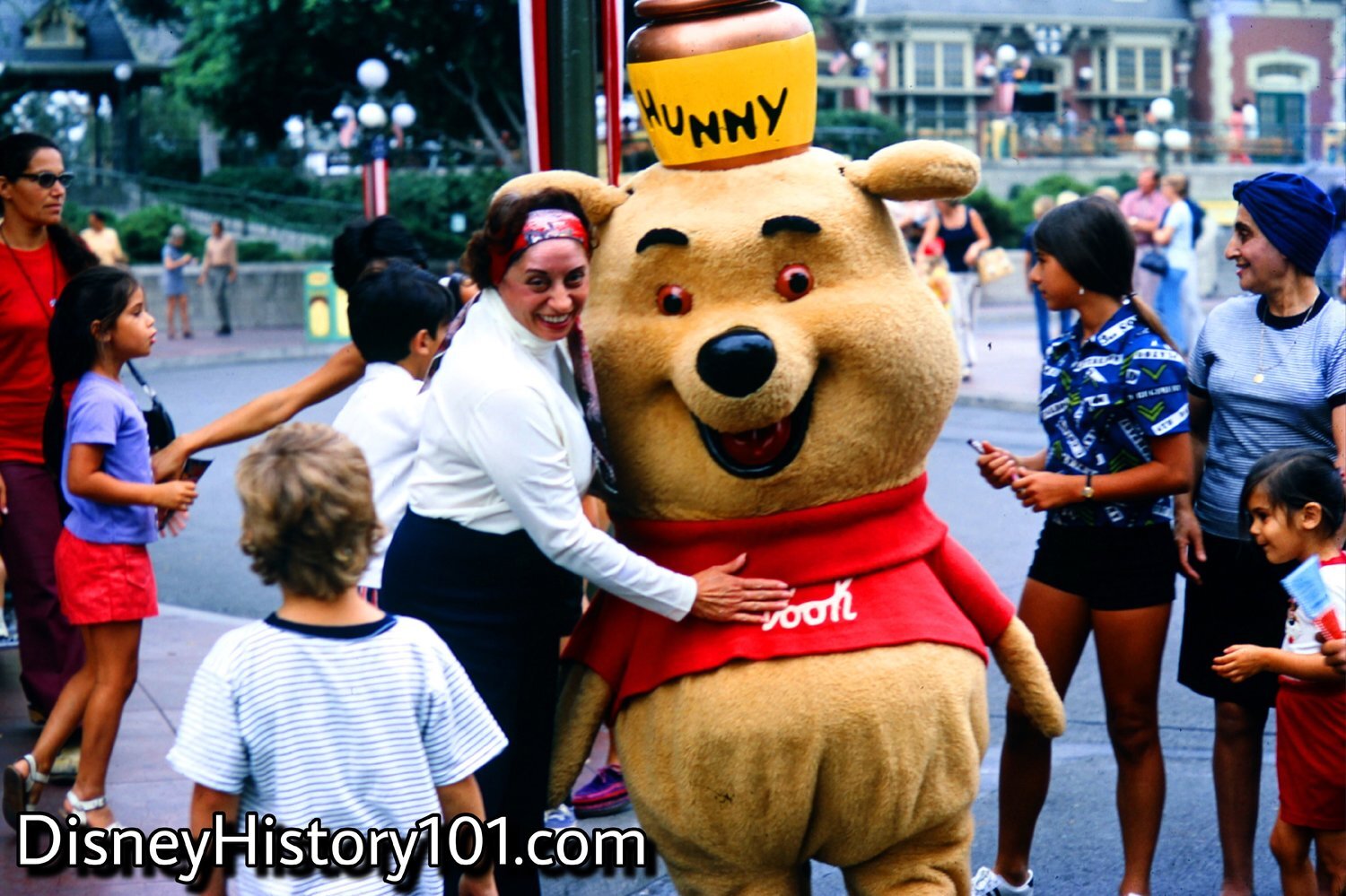
WINNIE THE POOH, (September, 1972)
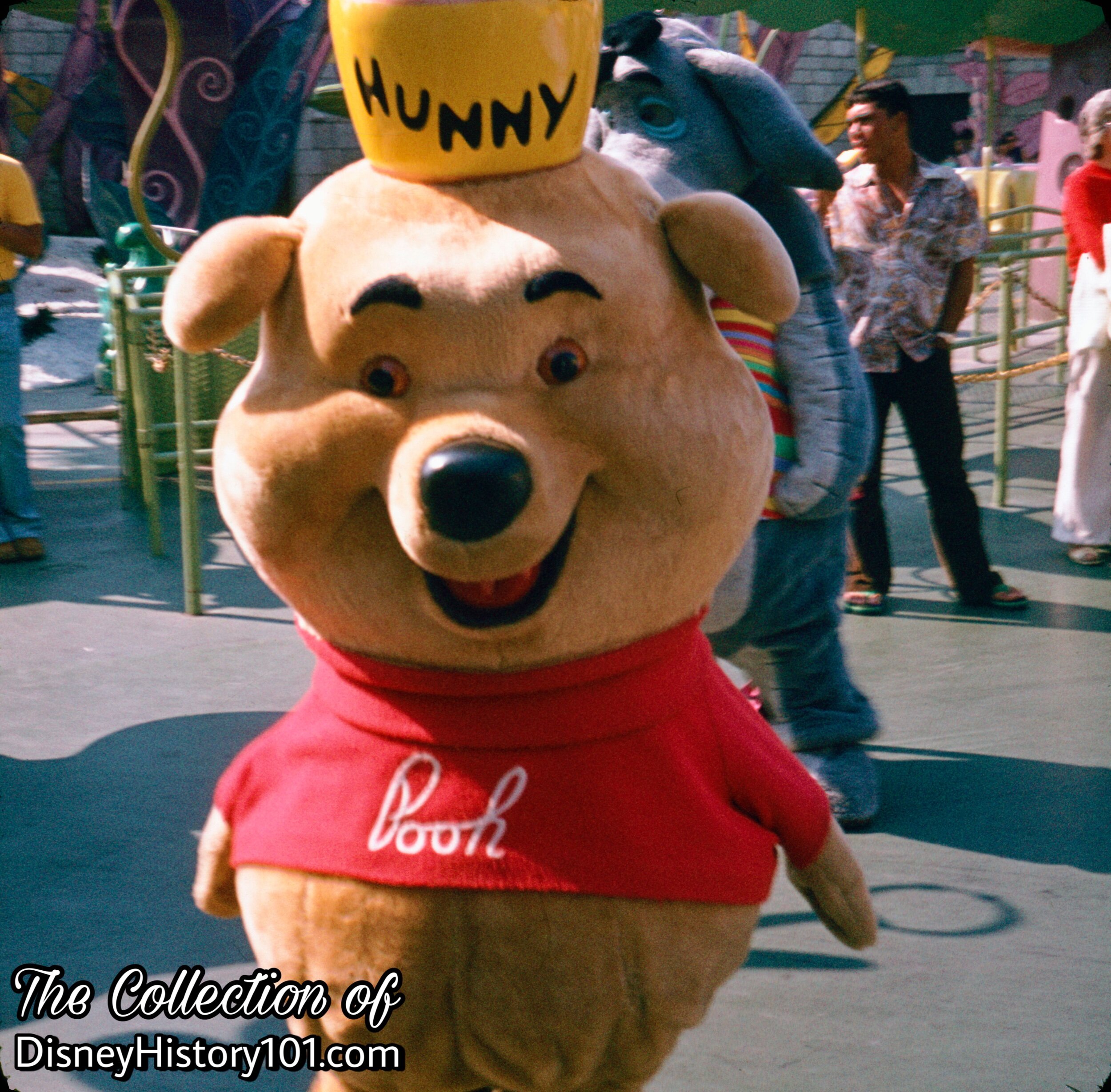
WINNIE THE POOH
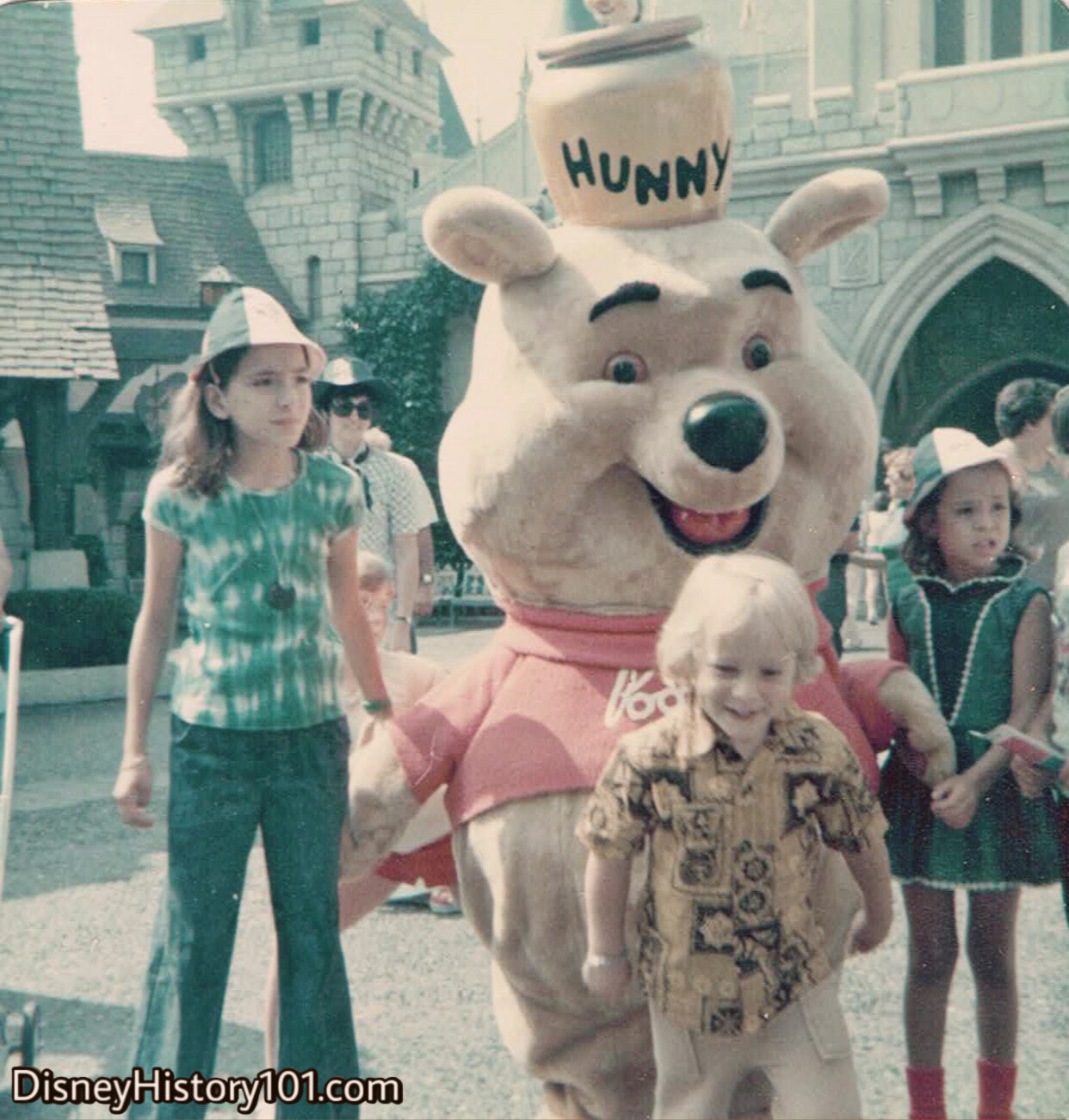
WINNIE THE POOH, (1975 - 1976)

WINNIE THE POOH, (March 1978)
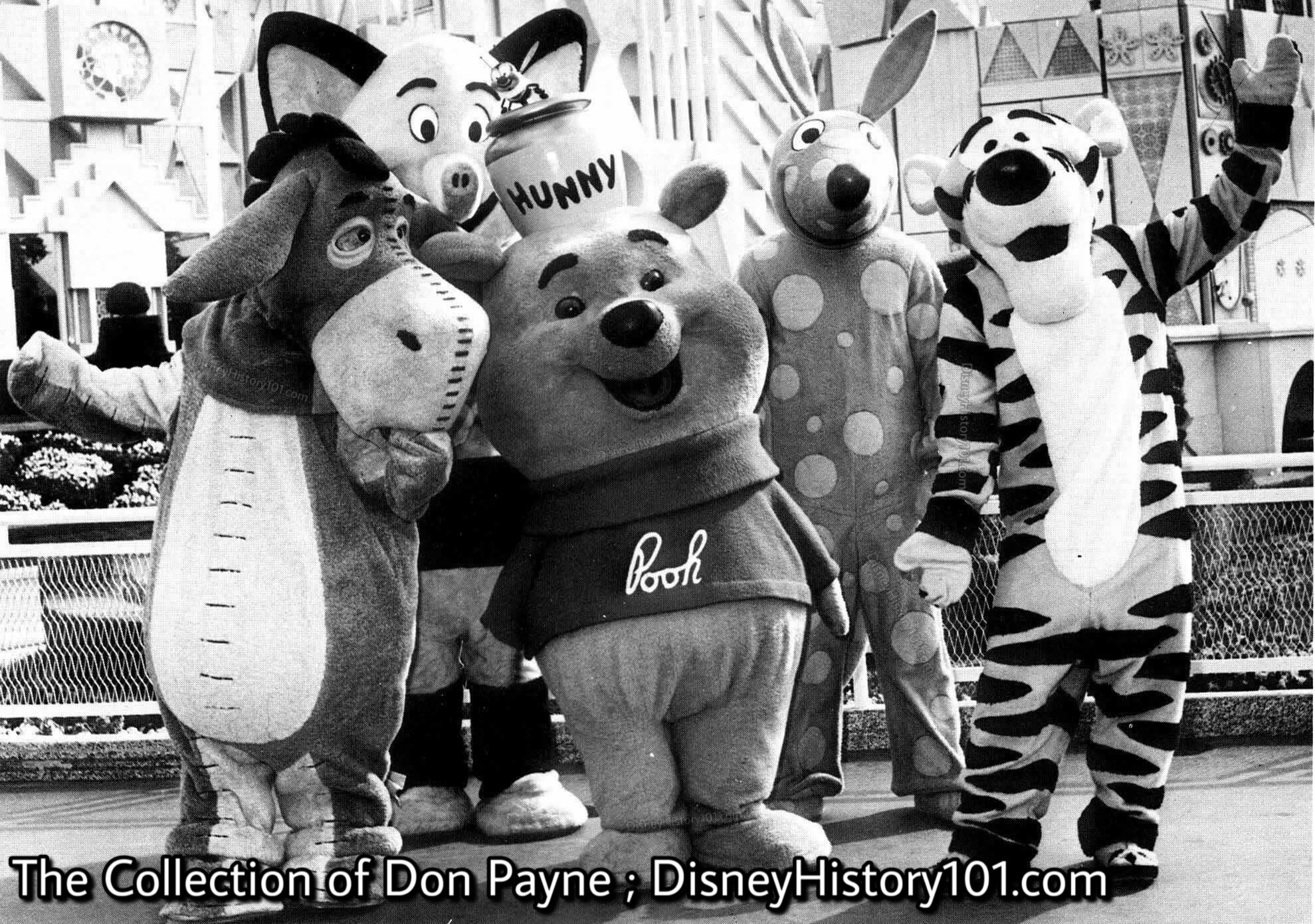
The WINNIE THE POOH Unit, “Winnie the Pooh Fan Days” (April, 1971)
Winnie the Pooh and his Hundred Acre neighbors (including Heffalumps and Woolzles) welcomed guests at Disneyland during “Winnie the Pooh Fan Days”, 1971.
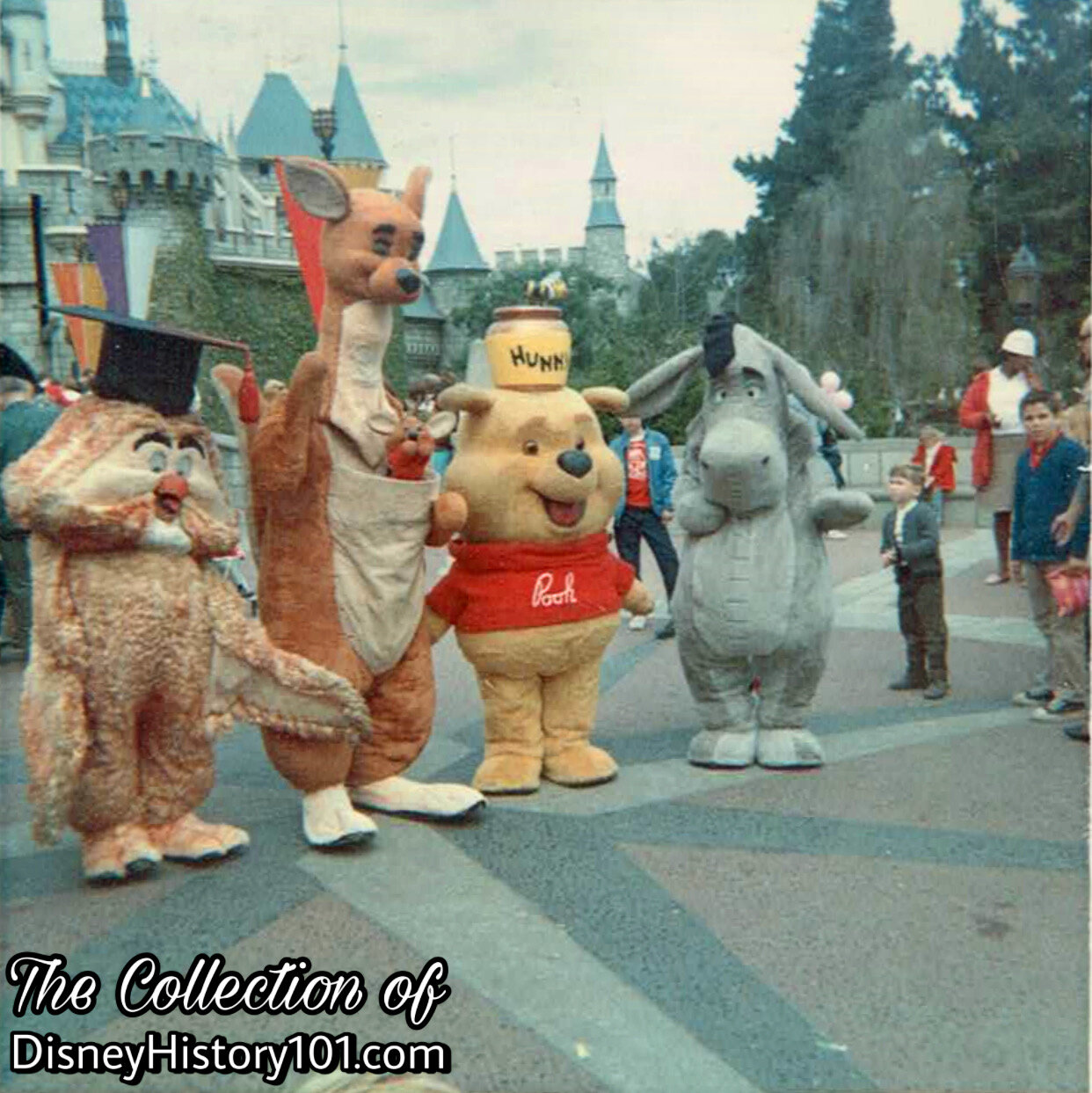
WINNIE THE POOH and PALS
The residents of the Hundred Acre Wood have come to greet Disneyland guests - Owl, Kanga (and little son Roo, peeking out of her pouch), Pooh bear, and Eeyore too! Not pictured are Rabbit, carrying Piglet in his arms.
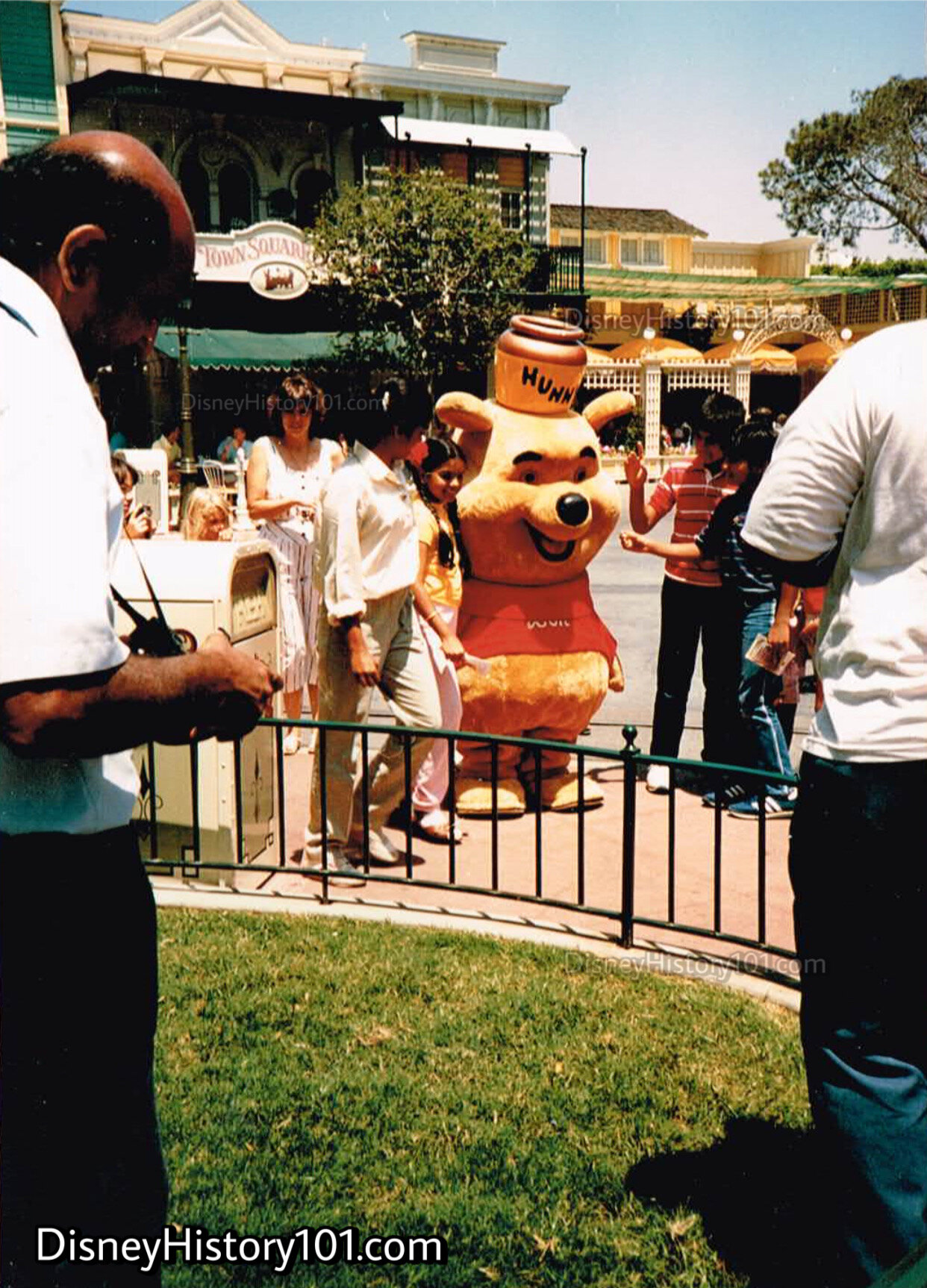
WINNIE THE POOH
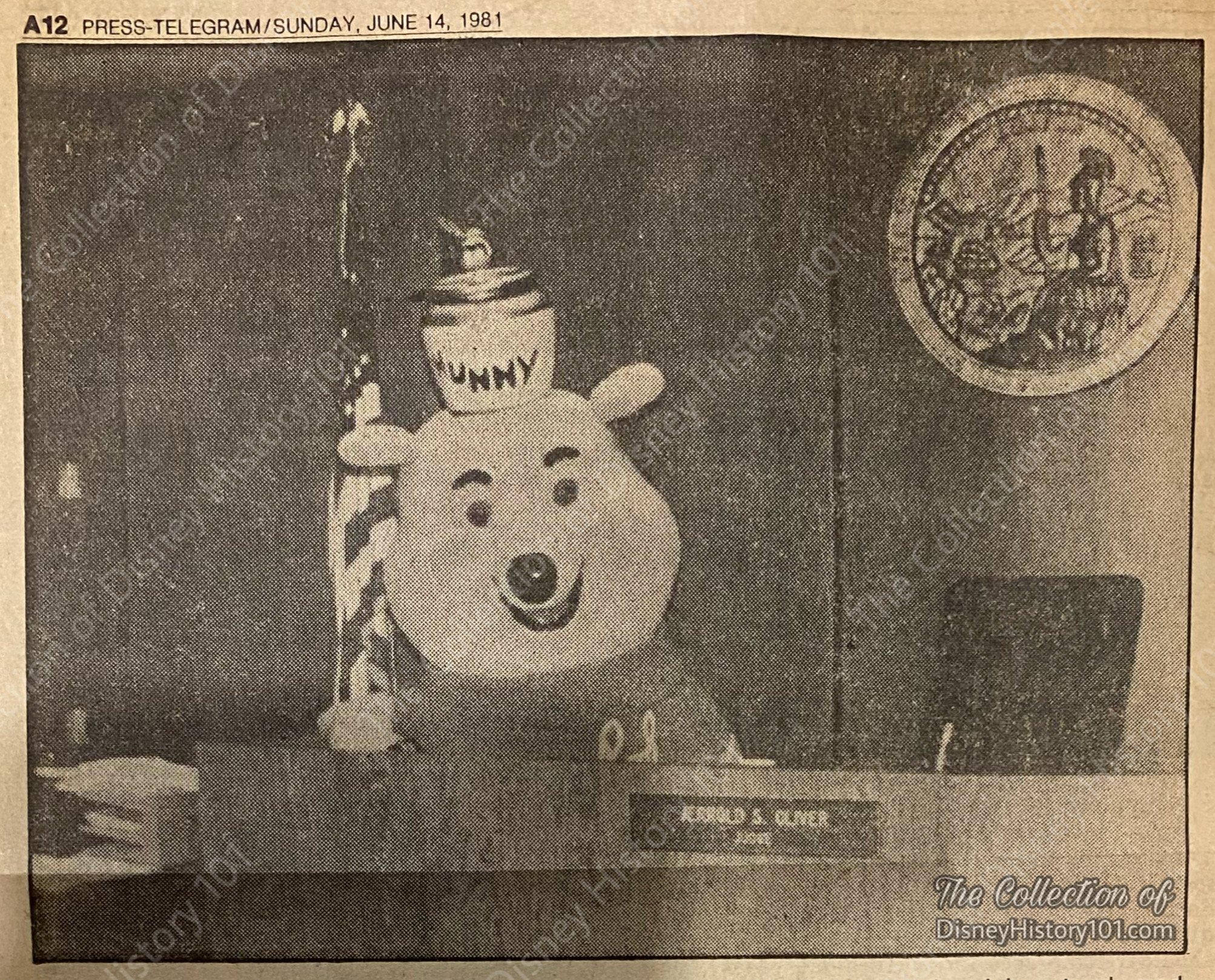

The Wicked Witch uses the Magic Mirror of her smile.
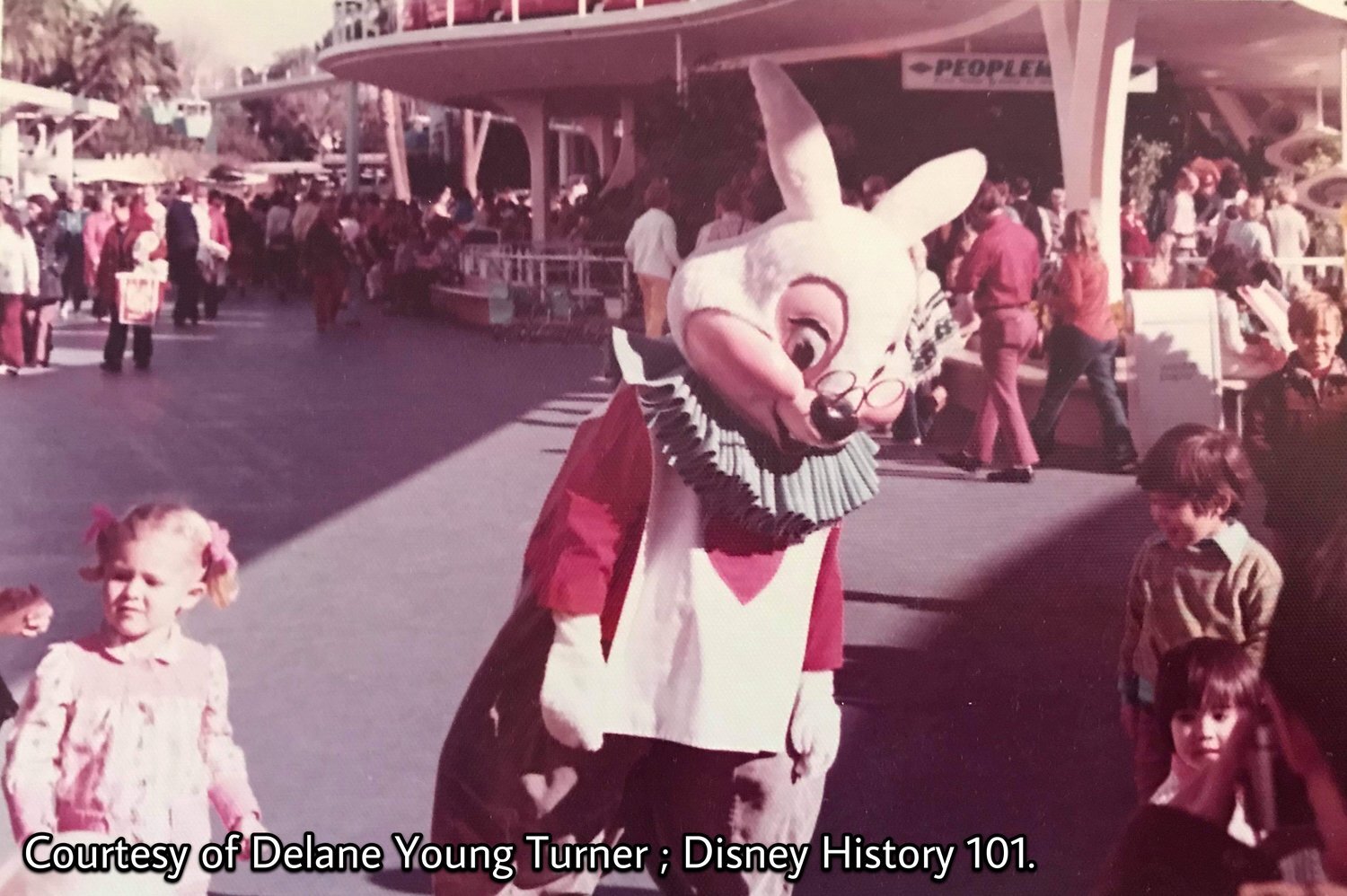
WHITE RABBIT, (1972)
The (Walt Disney Studio) White Rabbit was popular, appearing at both seasons of the 1964/1965 New York World’s Fair. During the mid-1960s, the White Rabbit made numerous appearances in Disneyland Easter Parades (alongside his wife, Mrs. Rabbit).
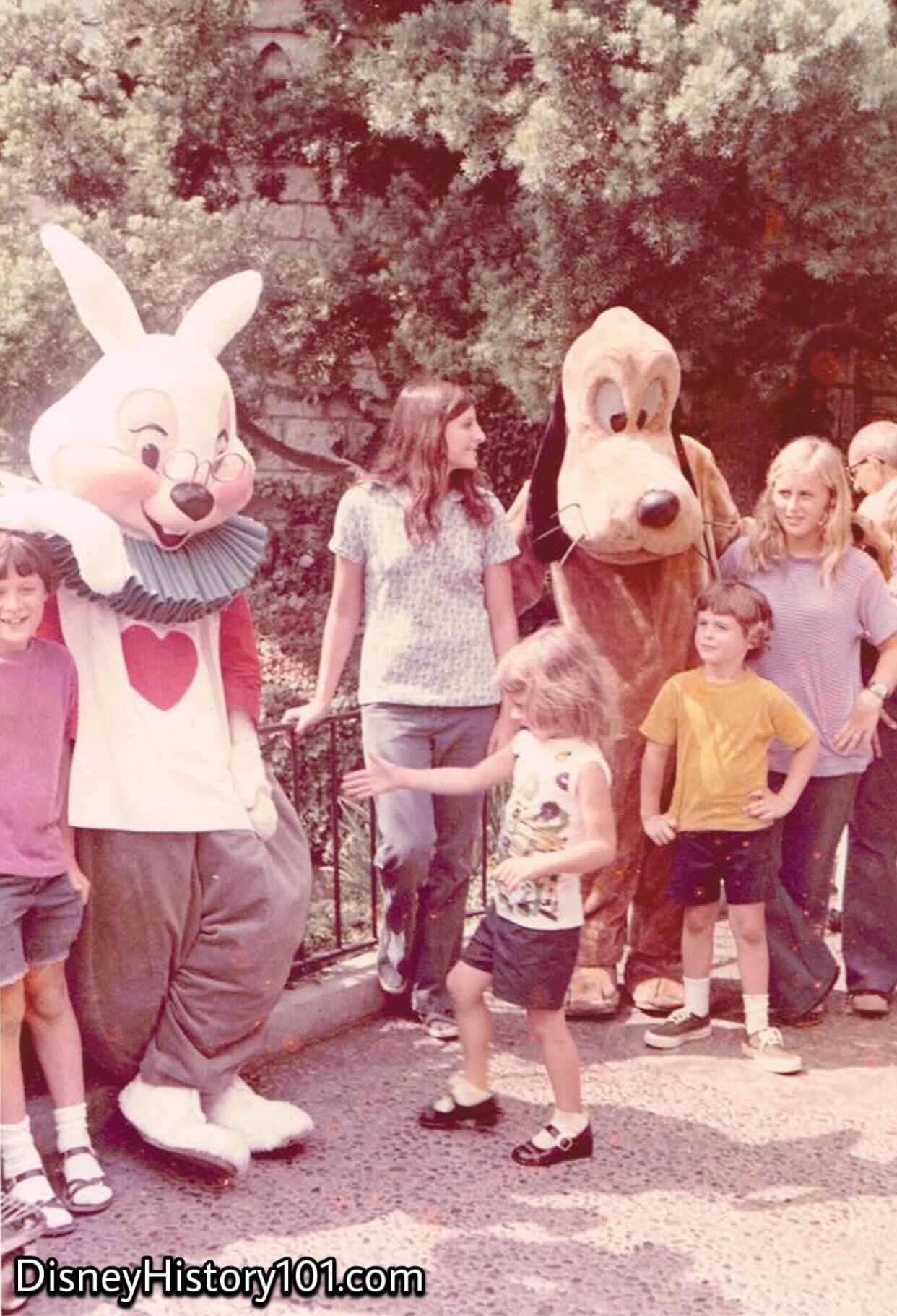
WHITE RABBIT, (September, 1972)
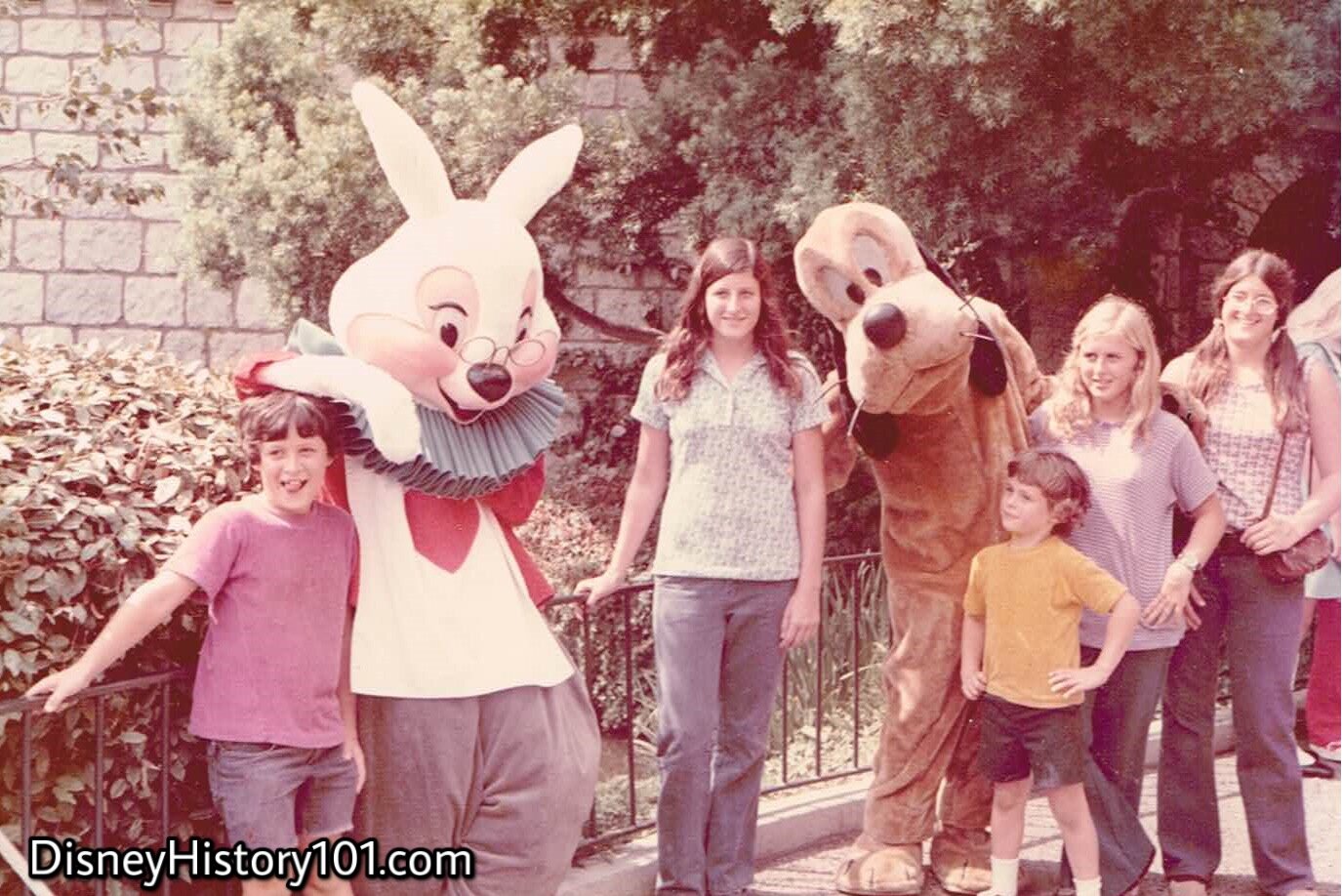
An animated WHITE RABBIT and PLUTO, (September, 1972)
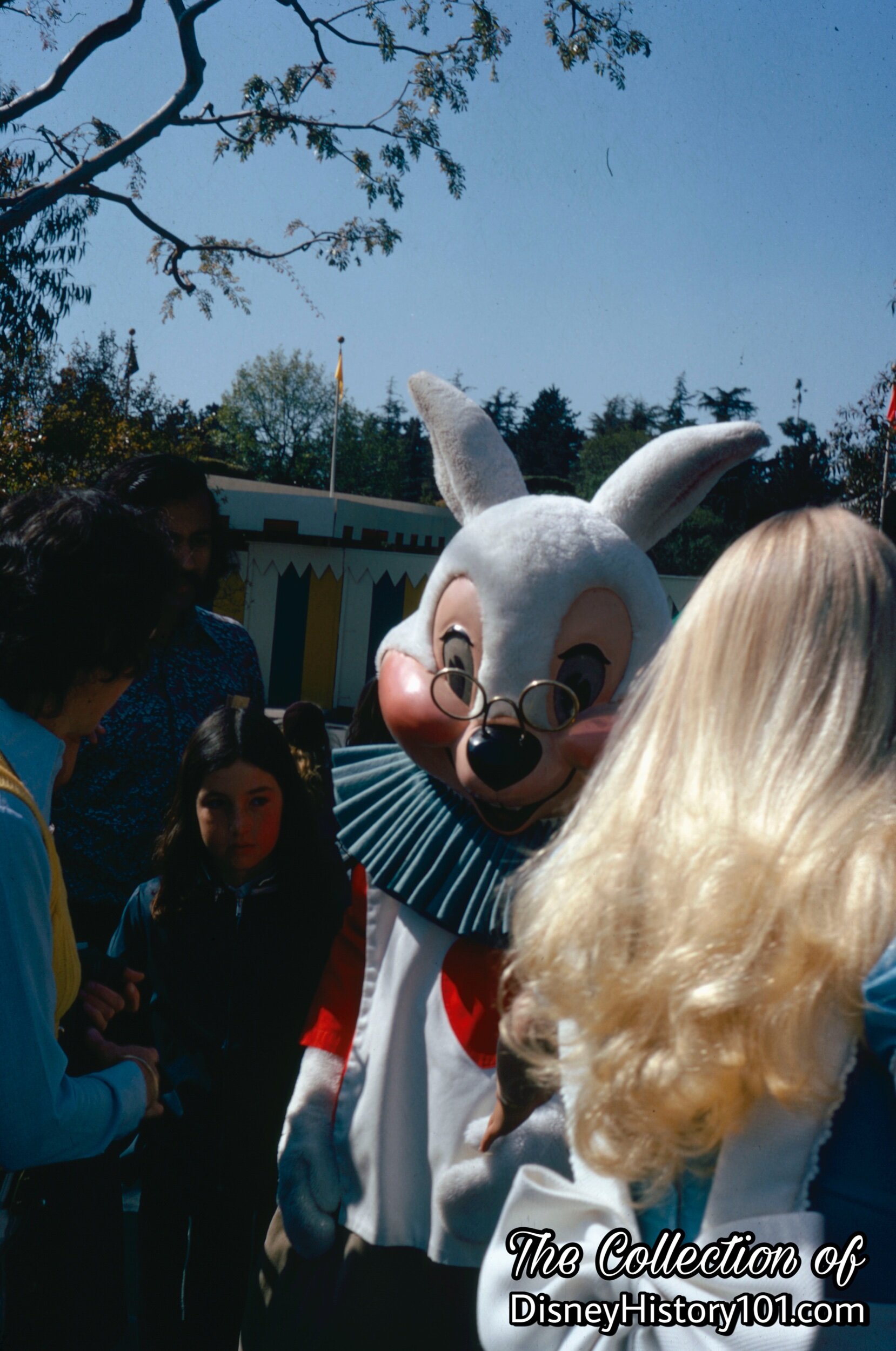
WHITE RABBIT
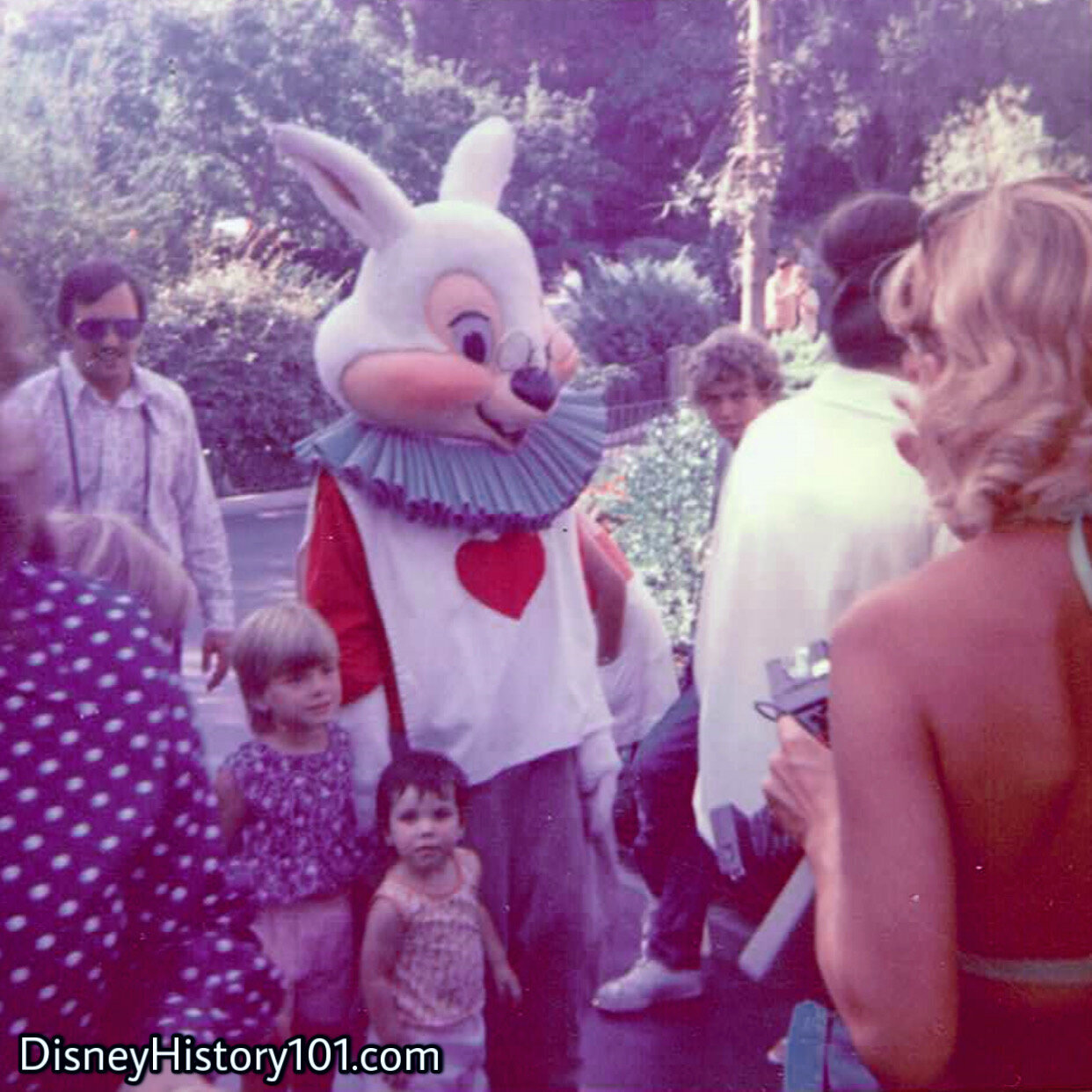
WHITE RABBIT
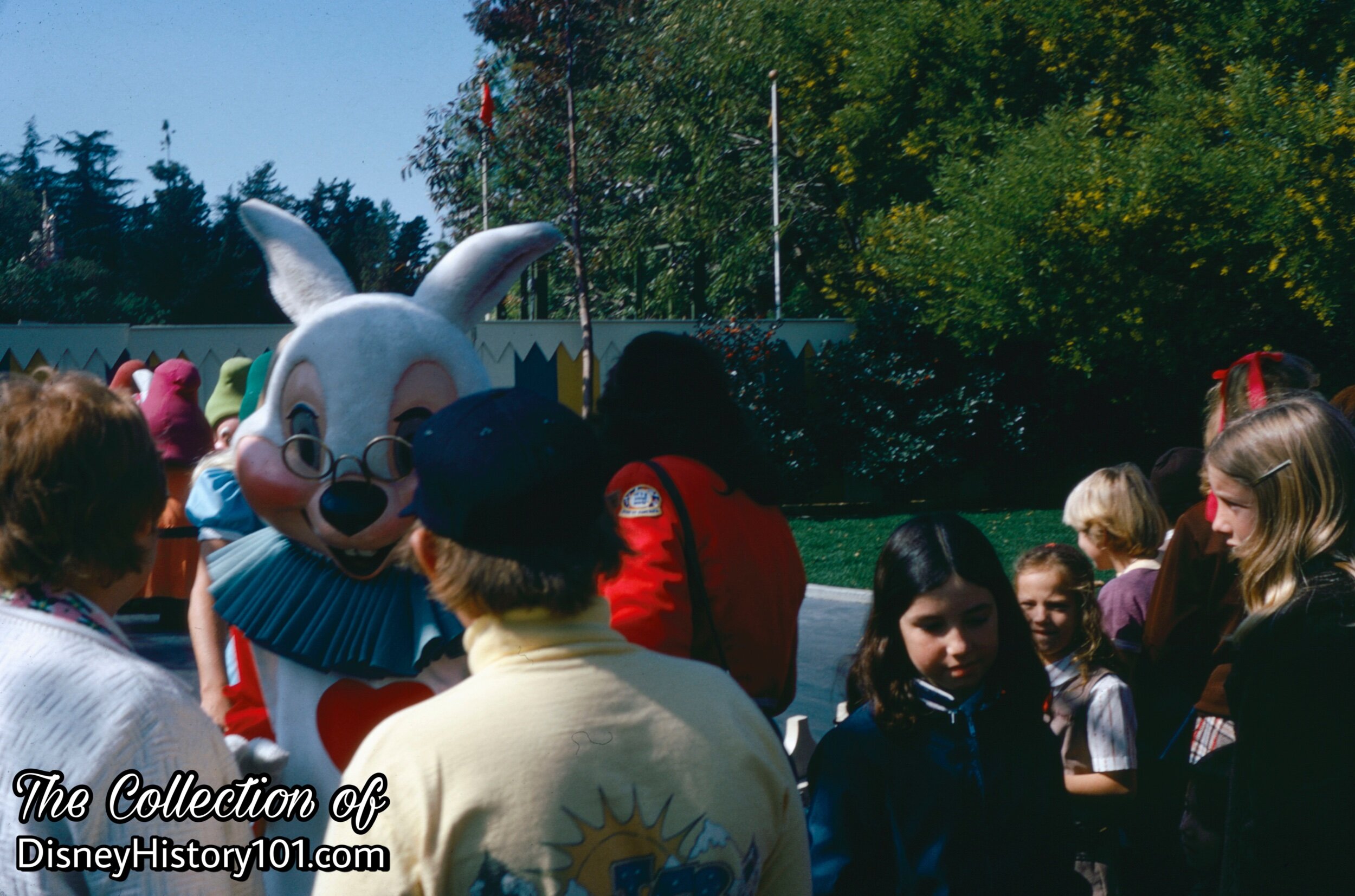
WHITE RABBIT
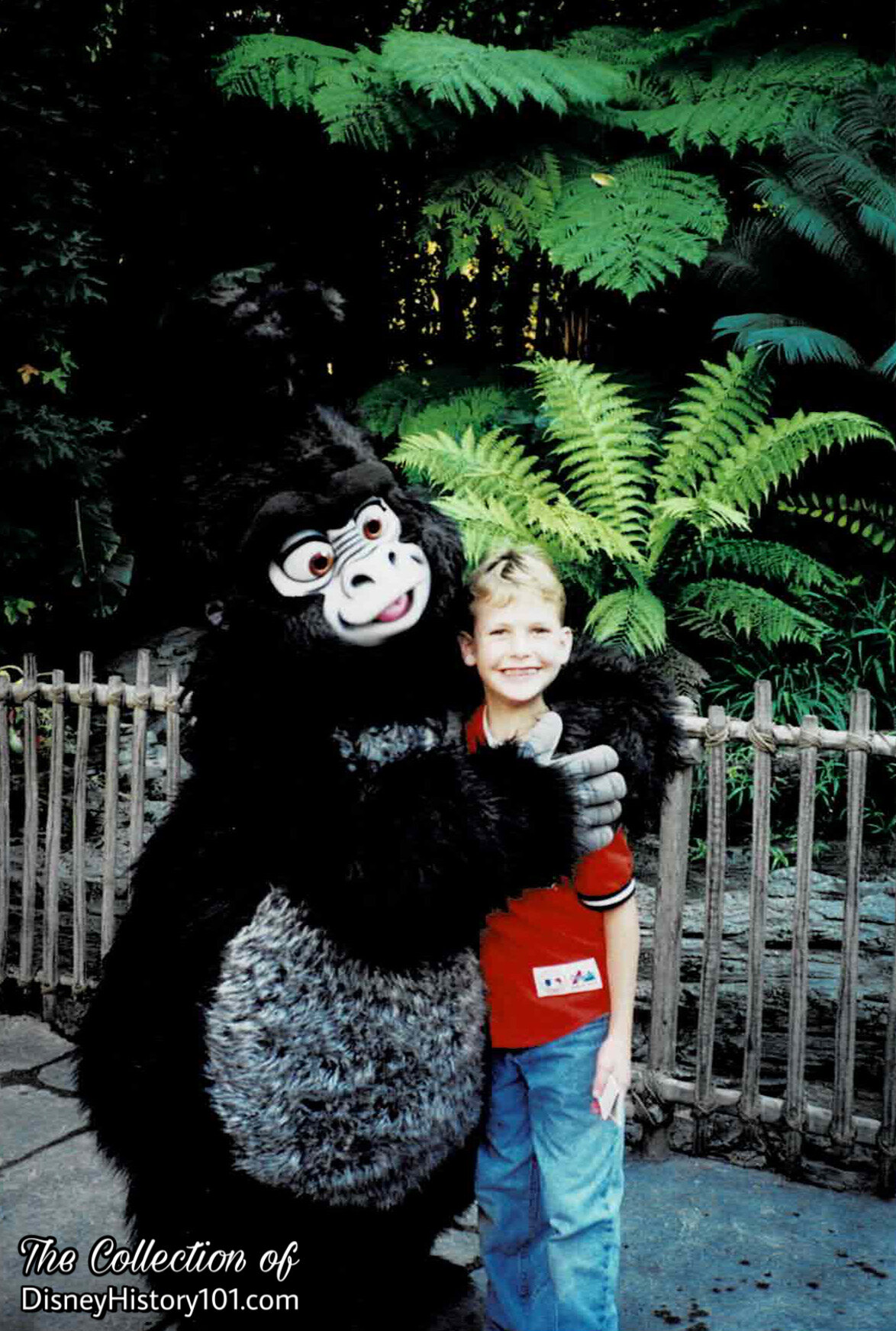
TERK

WHITE RABBIT
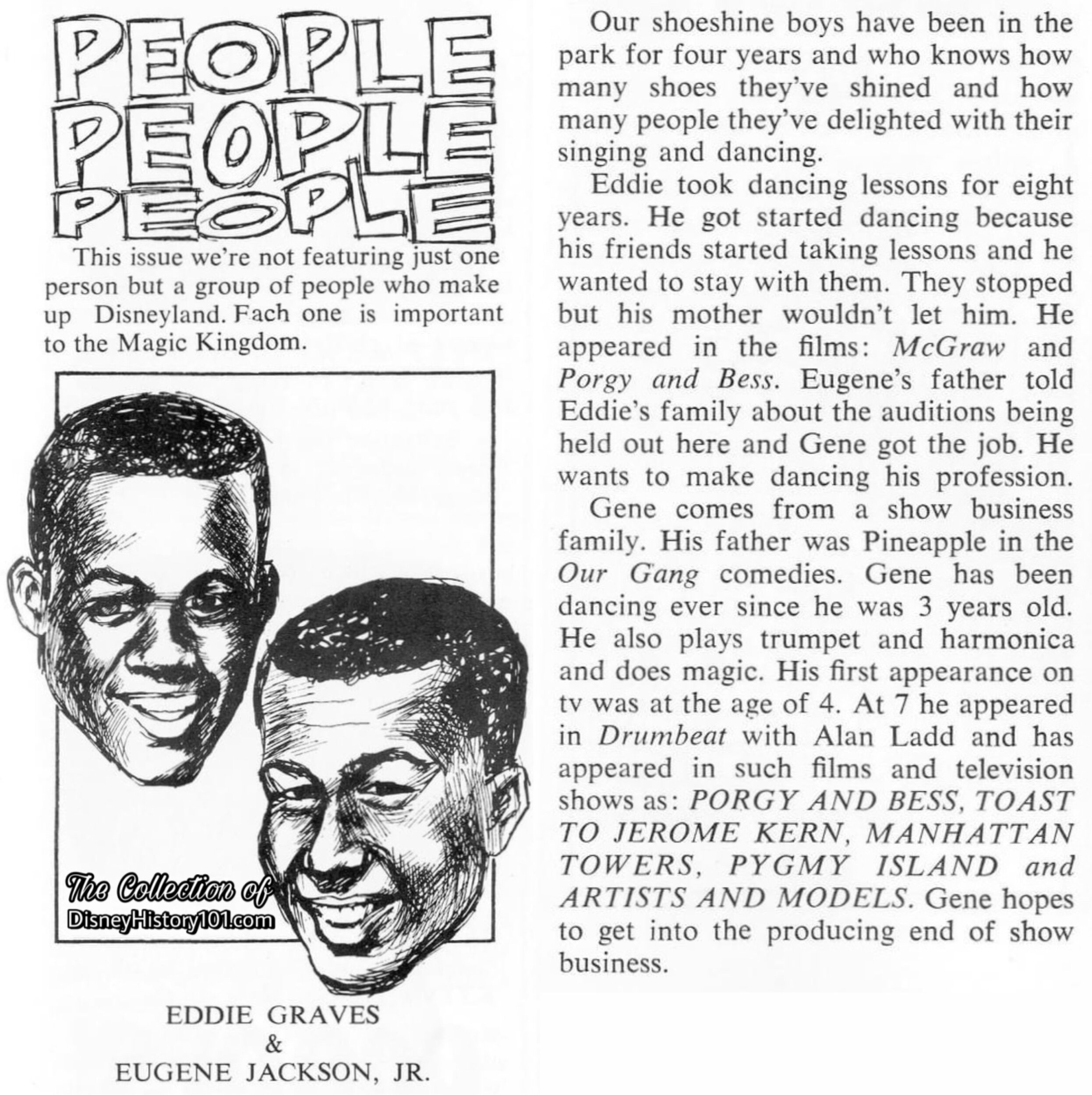
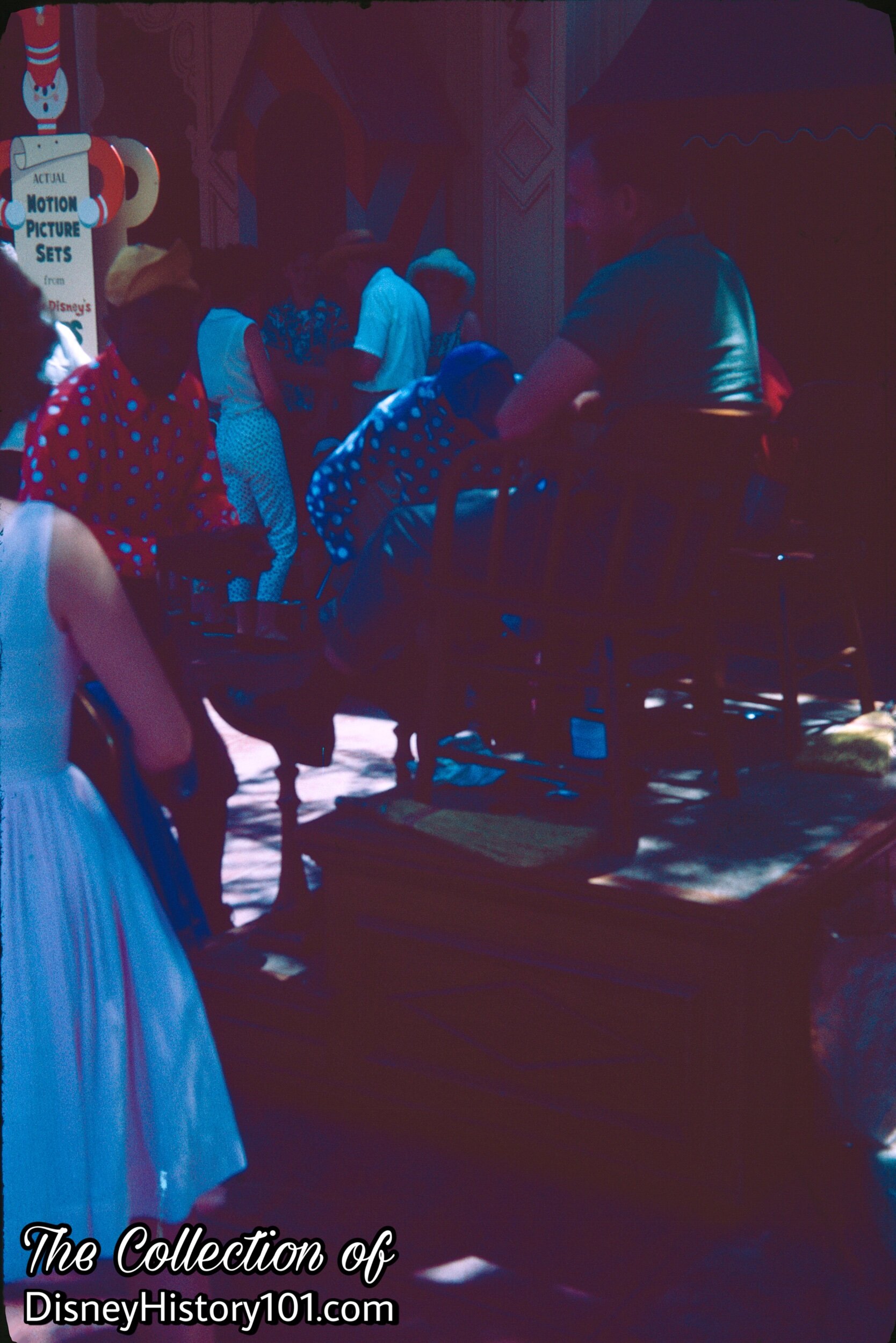
Shoe Shine Boys near Main Street Opera House
The Shoe Shine Boys were described as “two of the smallest big-timers around [who] will add a little glow to your boots between sprightly soft-shoe routines”, Vacationland, (Spring, 1961).
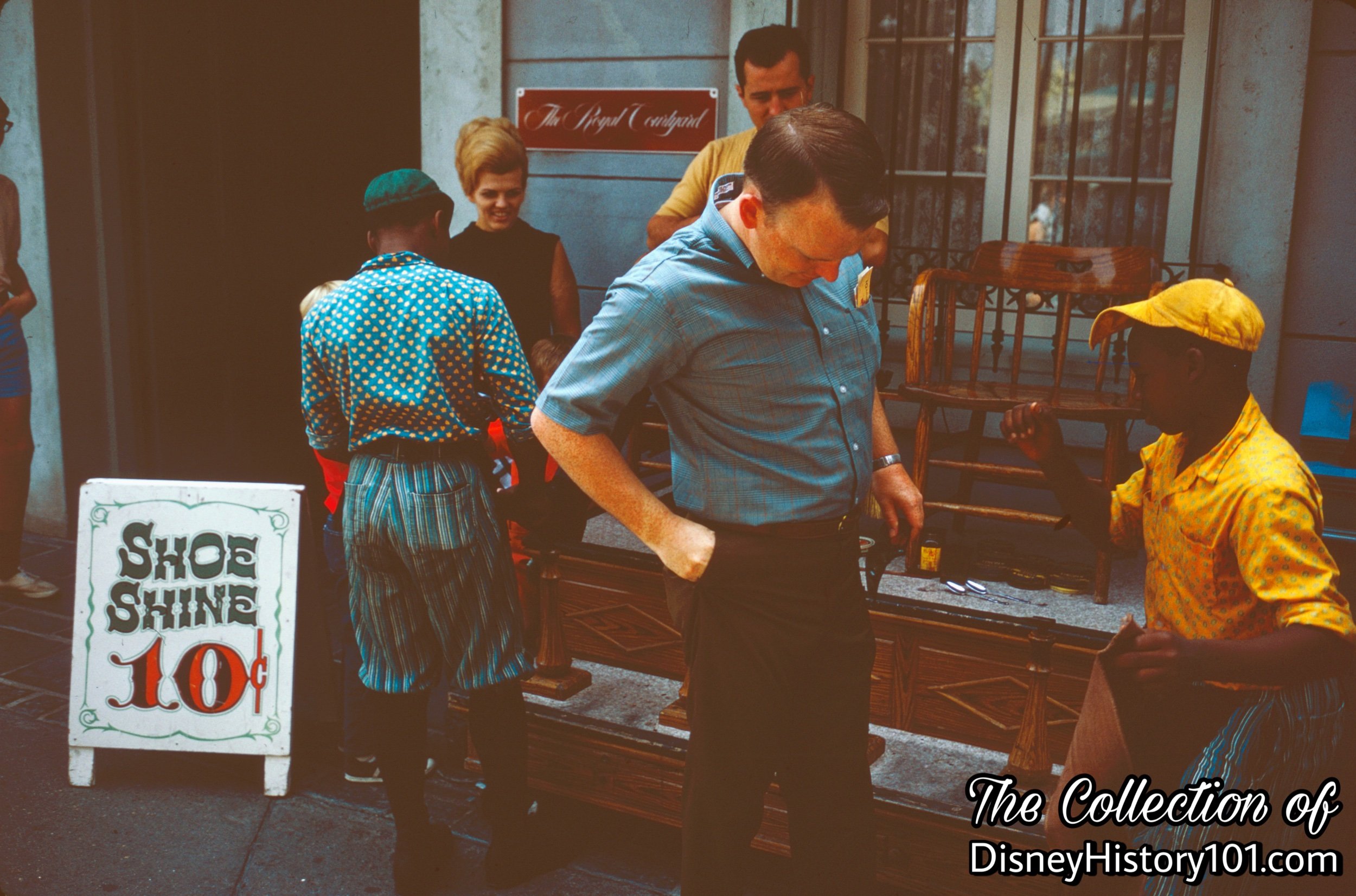
Shoeshine Boys in New Orleans Square, (1968)
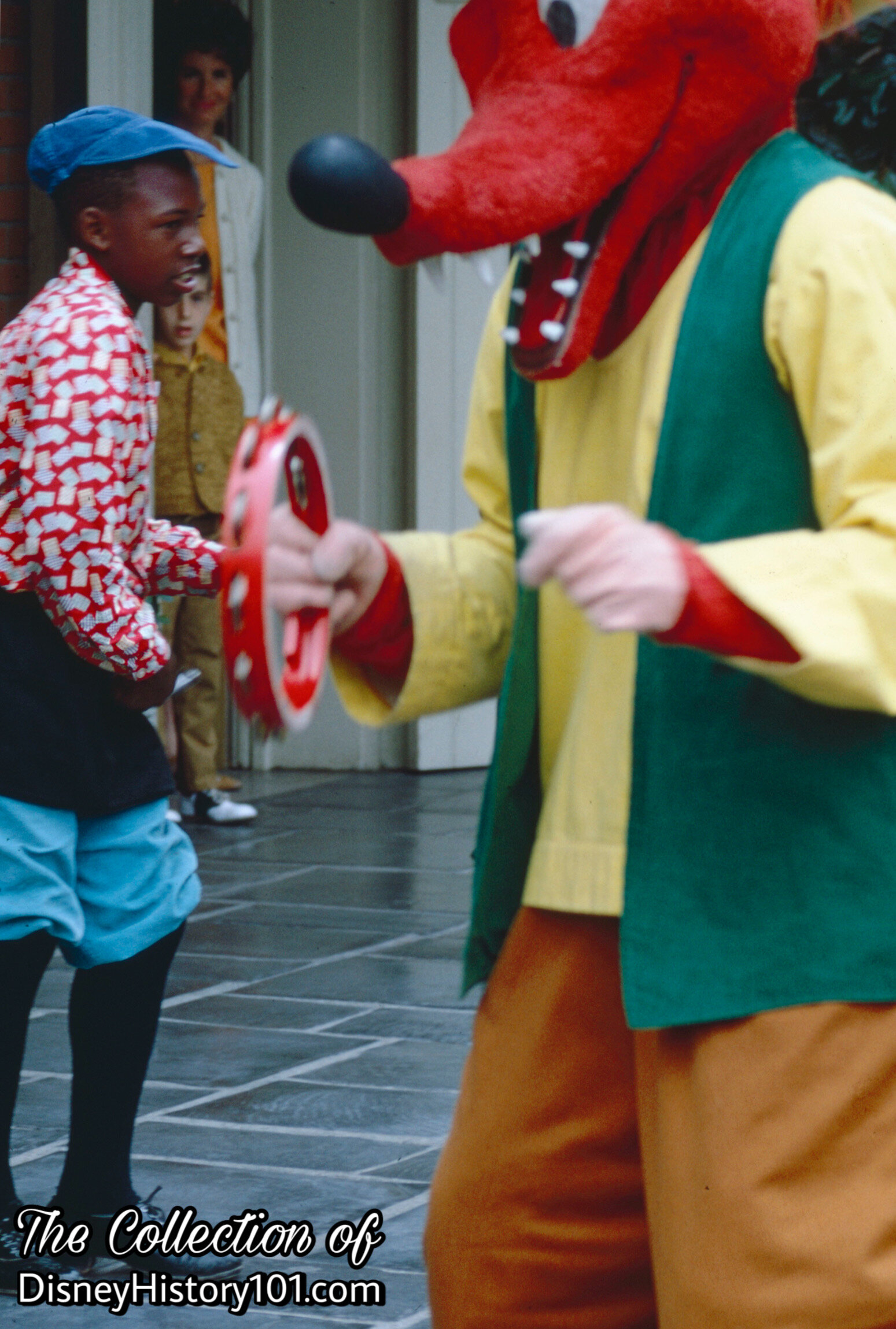
Shoe Shine Boy and Br'er Fox
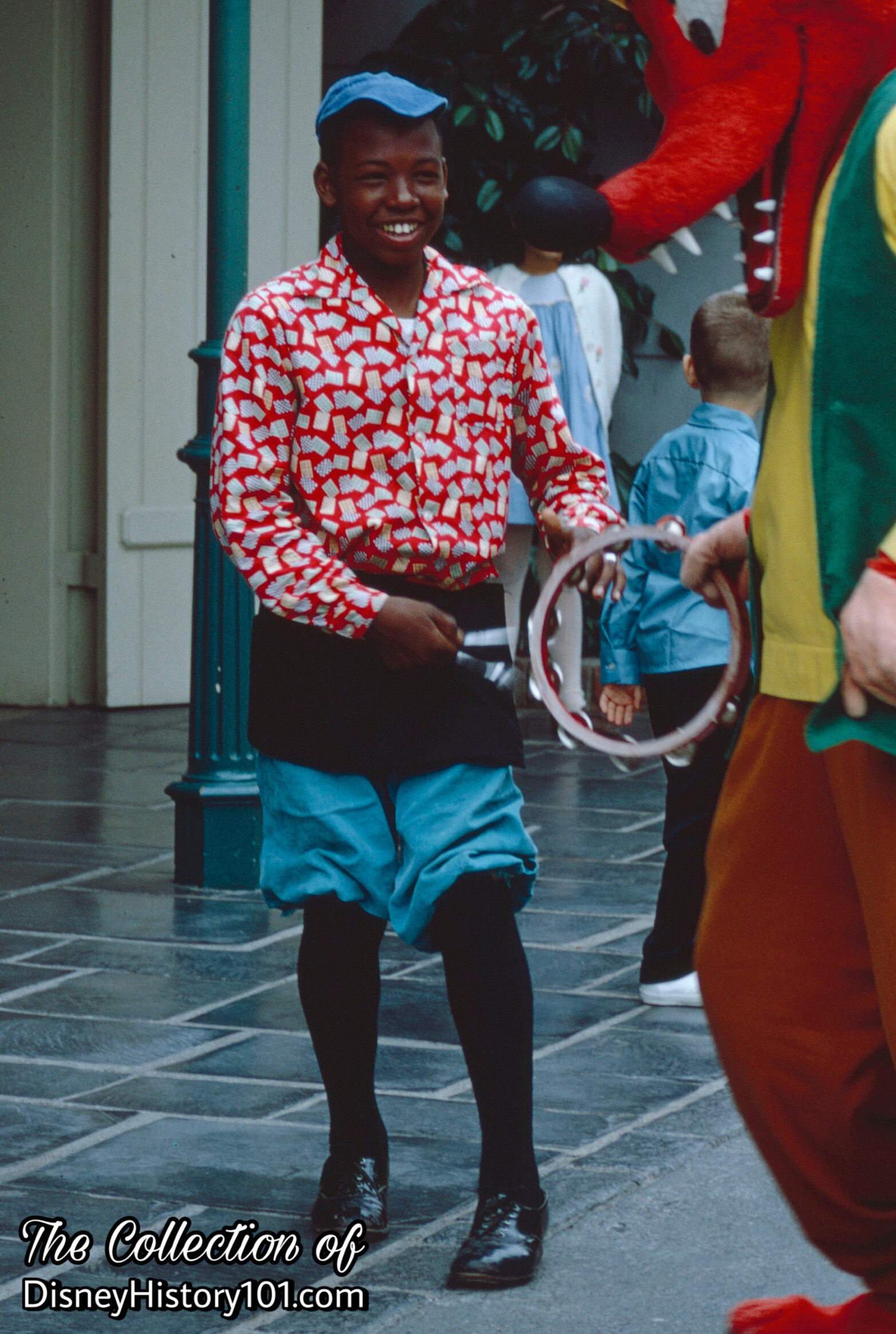
Shoe Shine Boy and Br'er Fox
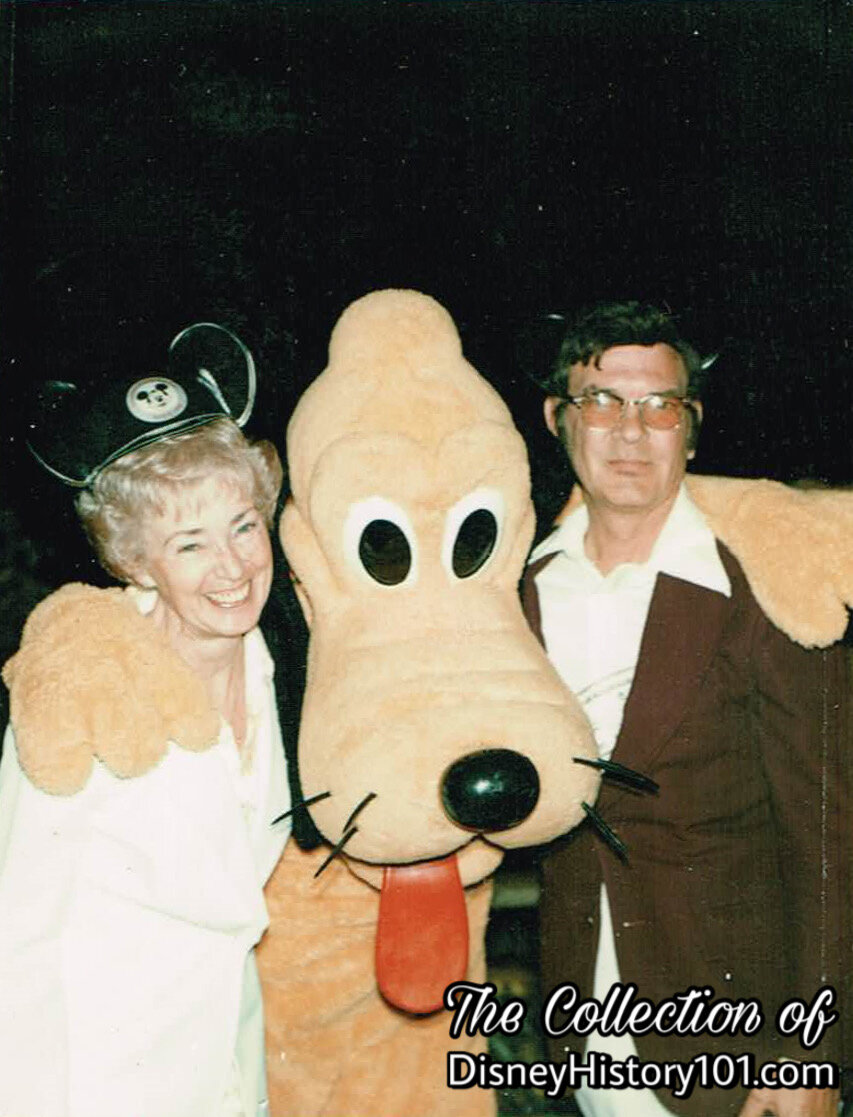
Pluto, (April 11, 1980)
Tim Brandt (Disneyland Security) and Priscilla (Disneyland First Aid) meet Pluto during Disneyland’s 25th Family Reunion event!

Prince John, (April 11, 1980)
Tim Brandt (Disneyland Security) and Priscilla (Disneyland First Aid) meet Prince John during Disneyland’s 25th Family Reunion event!


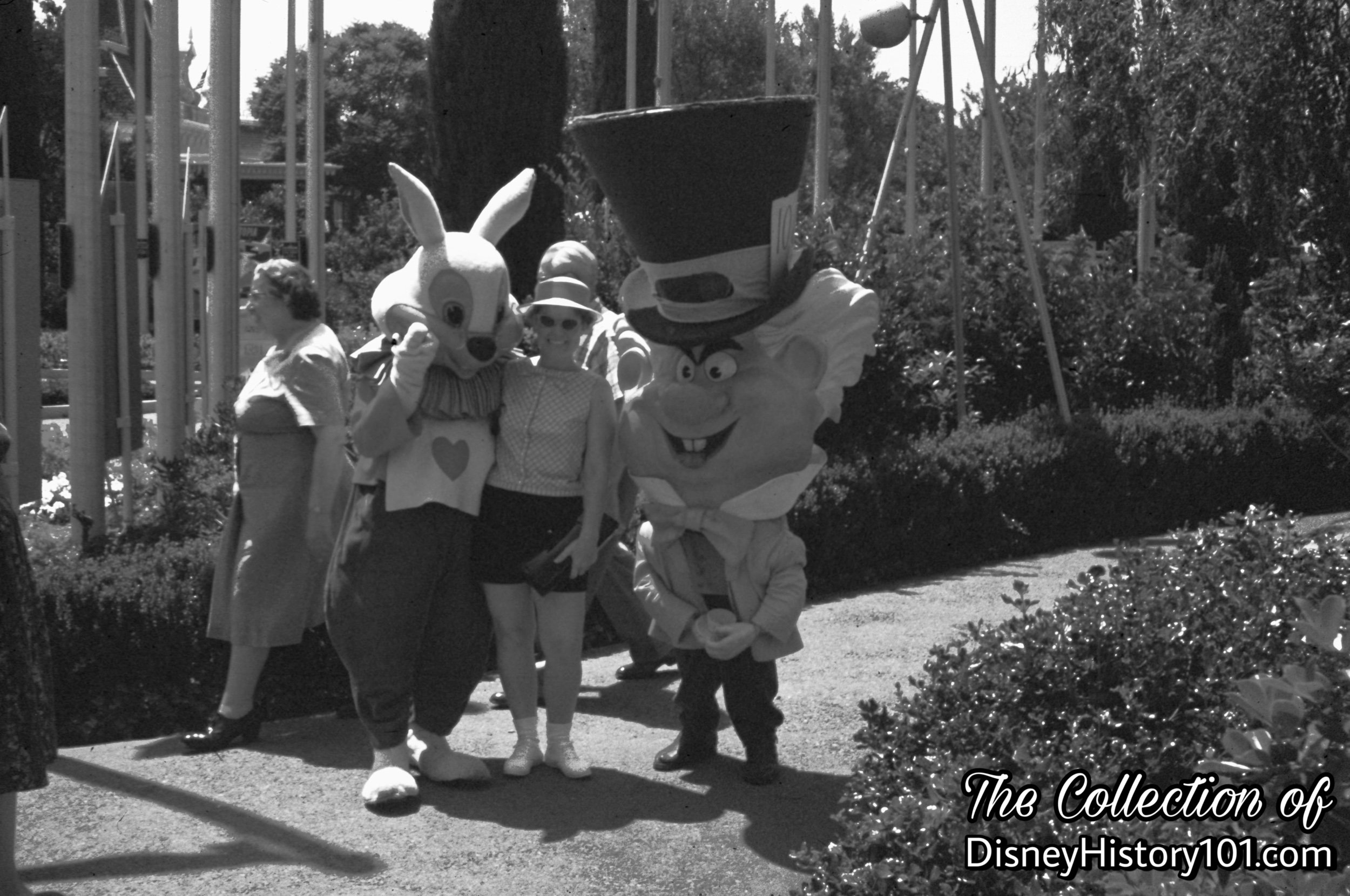
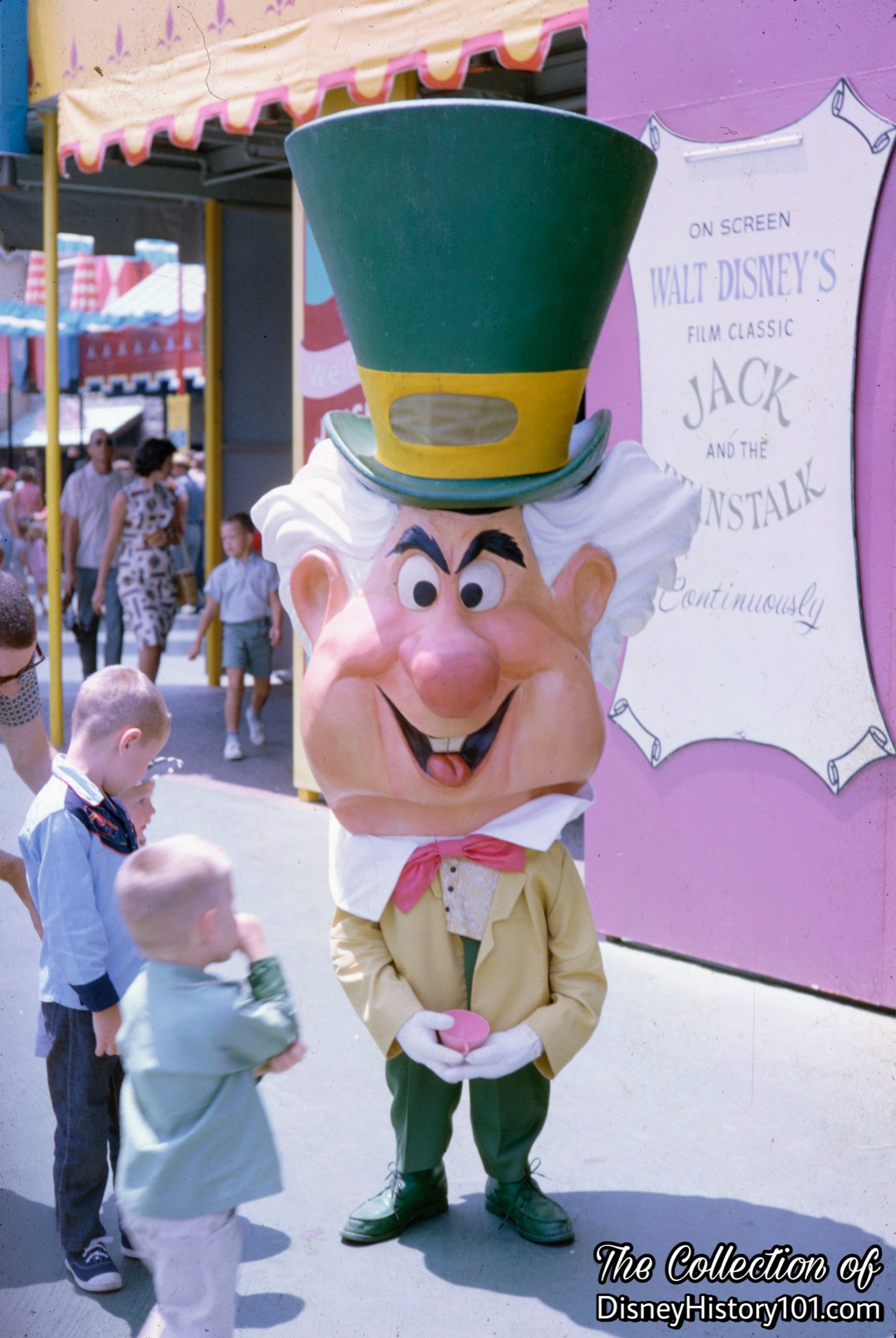

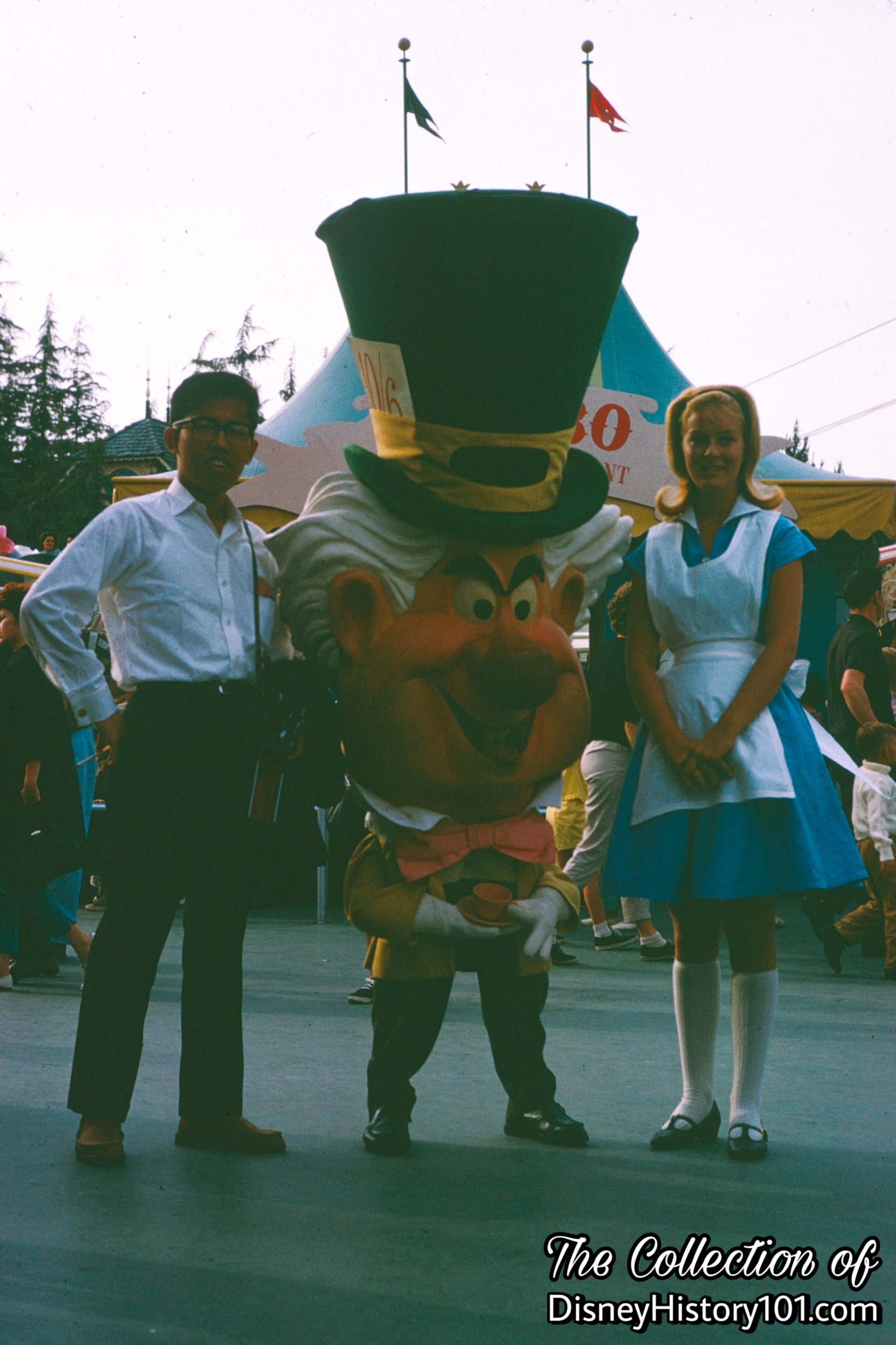


Yodeller - Fred Burri yodeled while playing the accordion for audiences awaiting their turn to board a Matterhorn Bobsled. Fred entertained, and provided Swiss overtones for the traditional dancing performed for the opening of the Skyway.

